HTC HERO200 PDA Phone User Manual HERO200 User Guide
HTC Corporation PDA Phone HERO200 User Guide
HTC >
User manual
User Guide
HERO200
www.htc.com
7/16/09

Consejo

Table of Contents
Introduction . . . . . . . . . . . . . . . . . . . . . . . . . . . . . . . . . . . . . . . . . . . . . . . . . . . . . . . . . . i
Your Phone’s Menu . . . . . . . . . . . . . . . . . . . . . . . . . . . . . . . . . . . . . . . . . . . . . . . . . . . i
Section 1: Getting Started . . . . . . . . . . . . . . . . . . . . . . . . . . . . . . . . . . . . . . . . . . . . 1
1A. Setting Up Service . . . . . . . . . . . . . . . . . . . . . . . . . . . . . . . . . . . . . . . . . . . . . . . . . . . . . . . . . . 2
Setting Up Your Phone . . . . . . . . . . . . . . . . . . . . . . . . . . . . . . . . . . . . . . . . . . . . . . . . . . . . . . . . . . . . . . 2
Activating Your Phone . . . . . . . . . . . . . . . . . . . . . . . . . . . . . . . . . . . . . . . . . . . . . . . . . . . . . . . . . . . . . . . 2
Setting Up Your Voicemail . . . . . . . . . . . . . . . . . . . . . . . . . . . . . . . . . . . . . . . . . . . . . . . . . . . . . . . . . . . 3
HTC Account Passwords . . . . . . . . . . . . . . . . . . . . . . . . . . . . . . . . . . . . . . . . . . . . . . . . . . . . . . . . . . . . 3
Getting Help . . . . . . . . . . . . . . . . . . . . . . . . . . . . . . . . . . . . . . . . . . . . . . . . . . . . . . . . . . . . . . . . . . . . . . . 4
Section 2: Your Phone. . . . . . . . . . . . . . . . . . . . . . . . . . . . . . . . . . . . . . . . . . . . . . . . 5
2A. Phone Basics . . . . . . . . . . . . . . . . . . . . . . . . . . . . . . . . . . . . . . . . . . . . . . . . . . . . . . . . . . . . . . 6
Your Phone . . . . . . . . . . . . . . . . . . . . . . . . . . . . . . . . . . . . . . . . . . . . . . . . . . . . . . . . . . . . . . . . . . . . . . . . 6
Viewing the Display Screen . . . . . . . . . . . . . . . . . . . . . . . . . . . . . . . . . . . . . . . . . . . . . . . . . . . . . . . . . . 7
Turning Your Phone On and Off . . . . . . . . . . . . . . . . . . . . . . . . . . . . . . . . . . . . . . . . . . . . . . . . . . . . . 10
Battery and Charger . . . . . . . . . . . . . . . . . . . . . . . . . . . . . . . . . . . . . . . . . . . . . . . . . . . . . . . . . . . . . . . 11
Getting Around Your Phone . . . . . . . . . . . . . . . . . . . . . . . . . . . . . . . . . . . . . . . . . . . . . . . . . . . . . . . . . 12
Displaying Your Phone Number . . . . . . . . . . . . . . . . . . . . . . . . . . . . . . . . . . . . . . . . . . . . . . . . . . . . . 13
Making and Answering Calls . . . . . . . . . . . . . . . . . . . . . . . . . . . . . . . . . . . . . . . . . . . . . . . . . . . . . . . 13
Entering Text . . . . . . . . . . . . . . . . . . . . . . . . . . . . . . . . . . . . . . . . . . . . . . . . . . . . . . . . . . . . . . . . . . . . . . 17
Home Screen . . . . . . . . . . . . . . . . . . . . . . . . . . . . . . . . . . . . . . . . . . . . . . . . . . . . . . . . . . . . . . . . . . . . . 21
2B. Settings . . . . . . . . . . . . . . . . . . . . . . . . . . . . . . . . . . . . . . . . . . . . . . . . . . . . . . . . . . . . . . . . . . . 25
Personalization Settings . . . . . . . . . . . . . . . . . . . . . . . . . . . . . . . . . . . . . . . . . . . . . . . . . . . . . . . . . . . . 25
Sound Settings . . . . . . . . . . . . . . . . . . . . . . . . . . . . . . . . . . . . . . . . . . . . . . . . . . . . . . . . . . . . . . . . . . . . 26
Display Settings . . . . . . . . . . . . . . . . . . . . . . . . . . . . . . . . . . . . . . . . . . . . . . . . . . . . . . . . . . . . . . . . . . . 27
Location Settings . . . . . . . . . . . . . . . . . . . . . . . . . . . . . . . . . . . . . . . . . . . . . . . . . . . . . . . . . . . . . . . . . . 29
Messaging Settings . . . . . . . . . . . . . . . . . . . . . . . . . . . . . . . . . . . . . . . . . . . . . . . . . . . . . . . . . . . . . . . . 29
Airplane Mode . . . . . . . . . . . . . . . . . . . . . . . . . . . . . . . . . . . . . . . . . . . . . . . . . . . . . . . . . . . . . . . . . . . . 30
TTY Use With HTC Service . . . . . . . . . . . . . . . . . . . . . . . . . . . . . . . . . . . . . . . . . . . . . . . . . . . . . . . . . 31
Security Settings . . . . . . . . . . . . . . . . . . . . . . . . . . . . . . . . . . . . . . . . . . . . . . . . . . . . . . . . . . . . . . . . . . 31
Social Network Settings . . . . . . . . . . . . . . . . . . . . . . . . . . . . . . . . . . . . . . . . . . . . . . . . . . . . . . . . . . . . 33
Data Synchronization Settings . . . . . . . . . . . . . . . . . . . . . . . . . . . . . . . . . . . . . . . . . . . . . . . . . . . . . . . 33
Application Settings . . . . . . . . . . . . . . . . . . . . . . . . . . . . . . . . . . . . . . . . . . . . . . . . . . . . . . . . . . . . . . . . 34
Date & Time Settings . . . . . . . . . . . . . . . . . . . . . . . . . . . . . . . . . . . . . . . . . . . . . . . . . . . . . . . . . . . . . . 35
Locale & Text Settings . . . . . . . . . . . . . . . . . . . . . . . . . . . . . . . . . . . . . . . . . . . . . . . . . . . . . . . . . . . . . . 35
Tip Looking for something? If you don’t see it in the headings listed here, try the Index on page 142.
2C. History . . . . . . . . . . . . . . . . . . . . . . . . . . . . . . . . . . . . . . . . . . . . . . . . . . . . . . . . . . . . . . . . . . . . 36
Viewing History . . . . . . . . . . . . . . . . . . . . . . . . . . . . . . . . . . . . . . . . . . . . . . . . . . . . . . . . . . . . . . . . . . . . 36
Making a Call From History . . . . . . . . . . . . . . . . . . . . . . . . . . . . . . . . . . . . . . . . . . . . . . . . . . . . . . . . . 36
Saving a Number From History . . . . . . . . . . . . . . . . . . . . . . . . . . . . . . . . . . . . . . . . . . . . . . . . . . . . . . 36
Prepending a Number From History . . . . . . . . . . . . . . . . . . . . . . . . . . . . . . . . . . . . . . . . . . . . . . . . . 37
Erasing History . . . . . . . . . . . . . . . . . . . . . . . . . . . . . . . . . . . . . . . . . . . . . . . . . . . . . . . . . . . . . . . . . . . . 37
2D. People . . . . . . . . . . . . . . . . . . . . . . . . . . . . . . . . . . . . . . . . . . . . . . . . . . . . . . . . . . . . . . . . . . . . 38
About People . . . . . . . . . . . . . . . . . . . . . . . . . . . . . . . . . . . . . . . . . . . . . . . . . . . . . . . . . . . . . . . . . . . . . 38
Using the People Screen . . . . . . . . . . . . . . . . . . . . . . . . . . . . . . . . . . . . . . . . . . . . . . . . . . . . . . . . . . . 38
Adding a New People Entry . . . . . . . . . . . . . . . . . . . . . . . . . . . . . . . . . . . . . . . . . . . . . . . . . . . . . . . . 40
Saving a Phone Number . . . . . . . . . . . . . . . . . . . . . . . . . . . . . . . . . . . . . . . . . . . . . . . . . . . . . . . . . . . 40
Editing an Entry in People . . . . . . . . . . . . . . . . . . . . . . . . . . . . . . . . . . . . . . . . . . . . . . . . . . . . . . . . . . 40
Assigning Speed Dial Numbers . . . . . . . . . . . . . . . . . . . . . . . . . . . . . . . . . . . . . . . . . . . . . . . . . . . . . 42
Finding Contacts Entries . . . . . . . . . . . . . . . . . . . . . . . . . . . . . . . . . . . . . . . . . . . . . . . . . . . . . . . . . . . 42
Using Favorites . . . . . . . . . . . . . . . . . . . . . . . . . . . . . . . . . . . . . . . . . . . . . . . . . . . . . . . . . . . . . . . . . . . . 43
Working with Groups . . . . . . . . . . . . . . . . . . . . . . . . . . . . . . . . . . . . . . . . . . . . . . . . . . . . . . . . . . . . . . 43
Using the Contact Details Screen . . . . . . . . . . . . . . . . . . . . . . . . . . . . . . . . . . . . . . . . . . . . . . . . . . . . 44
Using Facebook and Flickr in People . . . . . . . . . . . . . . . . . . . . . . . . . . . . . . . . . . . . . . . . . . . . . . . . 45
2E. Calendar and Tools . . . . . . . . . . . . . . . . . . . . . . . . . . . . . . . . . . . . . . . . . . . . . . . . . . . . . . . . 47
Calendar . . . . . . . . . . . . . . . . . . . . . . . . . . . . . . . . . . . . . . . . . . . . . . . . . . . . . . . . . . . . . . . . . . . . . . . . . 47
Calculator . . . . . . . . . . . . . . . . . . . . . . . . . . . . . . . . . . . . . . . . . . . . . . . . . . . . . . . . . . . . . . . . . . . . . . . . 50
World Clock . . . . . . . . . . . . . . . . . . . . . . . . . . . . . . . . . . . . . . . . . . . . . . . . . . . . . . . . . . . . . . . . . . . . . . 50
Quickoffice . . . . . . . . . . . . . . . . . . . . . . . . . . . . . . . . . . . . . . . . . . . . . . . . . . . . . . . . . . . . . . . . . . . . . . . 51
PDF Viewer . . . . . . . . . . . . . . . . . . . . . . . . . . . . . . . . . . . . . . . . . . . . . . . . . . . . . . . . . . . . . . . . . . . . . . . 52
HTC Sync . . . . . . . . . . . . . . . . . . . . . . . . . . . . . . . . . . . . . . . . . . . . . . . . . . . . . . . . . . . . . . . . . . . . . . . . 52
Updating Your Phone . . . . . . . . . . . . . . . . . . . . . . . . . . . . . . . . . . . . . . . . . . . . . . . . . . . . . . . . . . . . . . 54
2F. Voice Services . . . . . . . . . . . . . . . . . . . . . . . . . . . . . . . . . . . . . . . . . . . . . . . . . . . . . . . . . . . . 55
Automatic Speech Recognition (ASR) . . . . . . . . . . . . . . . . . . . . . . . . . . . . . . . . . . . . . . . . . . . . . . . . 55
Managing Voice Memos . . . . . . . . . . . . . . . . . . . . . . . . . . . . . . . . . . . . . . . . . . . . . . . . . . . . . . . . . . . 56
2G. microSD Card . . . . . . . . . . . . . . . . . . . . . . . . . . . . . . . . . . . . . . . . . . . . . . . . . . . . . . . . . . . . . 58
Your Phone’s microSD Card . . . . . . . . . . . . . . . . . . . . . . . . . . . . . . . . . . . . . . . . . . . . . . . . . . . . . . . . 58
Using the Phone’s microSD Card as a USB Drive . . . . . . . . . . . . . . . . . . . . . . . . . . . . . . . . . . . . . 59
2H. Camera and Multimedia . . . . . . . . . . . . . . . . . . . . . . . . . . . . . . . . . . . . . . . . . . . . . . . . . . . . 60
Taking Pictures and Shooting Videos . . . . . . . . . . . . . . . . . . . . . . . . . . . . . . . . . . . . . . . . . . . . . . . . 60
Viewing Pictures and Videos Using Albums . . . . . . . . . . . . . . . . . . . . . . . . . . . . . . . . . . . . . . . . . . . 62
Listening to Music . . . . . . . . . . . . . . . . . . . . . . . . . . . . . . . . . . . . . . . . . . . . . . . . . . . . . . . . . . . . . . . . . 67
2I. Bluetooth . . . . . . . . . . . . . . . . . . . . . . . . . . . . . . . . . . . . . . . . . . . . . . . . . . . . . . . . . . . . . . . . . 71
Bluetooth Modes . . . . . . . . . . . . . . . . . . . . . . . . . . . . . . . . . . . . . . . . . . . . . . . . . . . . . . . . . . . . . . . . . . 71
Using the Bluetooth Settings Menu . . . . . . . . . . . . . . . . . . . . . . . . . . . . . . . . . . . . . . . . . . . . . . . . . . 71
Pairing Bluetooth Devices . . . . . . . . . . . . . . . . . . . . . . . . . . . . . . . . . . . . . . . . . . . . . . . . . . . . . . . . . . 72
Disconnecting a Bluetooth Device . . . . . . . . . . . . . . . . . . . . . . . . . . . . . . . . . . . . . . . . . . . . . . . . . . . 72
Section 3: HTC Service . . . . . . . . . . . . . . . . . . . . . . . . . . . . . . . . . . . . . . . . . . . . . . 75
3A. HTC Service: The Basics . . . . . . . . . . . . . . . . . . . . . . . . . . . . . . . . . . . . . . . . . . . . . . . . . . . 76
Voicemail . . . . . . . . . . . . . . . . . . . . . . . . . . . . . . . . . . . . . . . . . . . . . . . . . . . . . . . . . . . . . . . . . . . . . . . . . 76
Text Messaging (SMS) . . . . . . . . . . . . . . . . . . . . . . . . . . . . . . . . . . . . . . . . . . . . . . . . . . . . . . . . . . . . . 78
Picture Messaging (MMS) . . . . . . . . . . . . . . . . . . . . . . . . . . . . . . . . . . . . . . . . . . . . . . . . . . . . . . . . . . 80
Caller ID . . . . . . . . . . . . . . . . . . . . . . . . . . . . . . . . . . . . . . . . . . . . . . . . . . . . . . . . . . . . . . . . . . . . . . . . . . 82
Call Waiting . . . . . . . . . . . . . . . . . . . . . . . . . . . . . . . . . . . . . . . . . . . . . . . . . . . . . . . . . . . . . . . . . . . . . . . 82
Making a Three-Way Call . . . . . . . . . . . . . . . . . . . . . . . . . . . . . . . . . . . . . . . . . . . . . . . . . . . . . . . . . . . 83
Call Forwarding . . . . . . . . . . . . . . . . . . . . . . . . . . . . . . . . . . . . . . . . . . . . . . . . . . . . . . . . . . . . . . . . . . . 83
Roaming . . . . . . . . . . . . . . . . . . . . . . . . . . . . . . . . . . . . . . . . . . . . . . . . . . . . . . . . . . . . . . . . . . . . . . . . . 83
3B. Web and Data Services . . . . . . . . . . . . . . . . . . . . . . . . . . . . . . . . . . . . . . . . . . . . . . . . . . . . 86
Ways of Connecting to the Internet . . . . . . . . . . . . . . . . . . . . . . . . . . . . . . . . . . . . . . . . . . . . . . . . . . 86
Connecting Using Wi-Fi . . . . . . . . . . . . . . . . . . . . . . . . . . . . . . . . . . . . . . . . . . . . . . . . . . . . . . . . . . . . 86
Getting Started With Data Services . . . . . . . . . . . . . . . . . . . . . . . . . . . . . . . . . . . . . . . . . . . . . . . . . . 87
Setting Up Email and Social Networking Accounts . . . . . . . . . . . . . . . . . . . . . . . . . . . . . . . . . . . . 88
Using the Browser . . . . . . . . . . . . . . . . . . . . . . . . . . . . . . . . . . . . . . . . . . . . . . . . . . . . . . . . . . . . . . . . . 89
Accessing Messages . . . . . . . . . . . . . . . . . . . . . . . . . . . . . . . . . . . . . . . . . . . . . . . . . . . . . . . . . . . . . . 93
Google Talk . . . . . . . . . . . . . . . . . . . . . . . . . . . . . . . . . . . . . . . . . . . . . . . . . . . . . . . . . . . . . . . . . . . . . . 101
Accessing HTC Instant Messaging . . . . . . . . . . . . . . . . . . . . . . . . . . . . . . . . . . . . . . . . . . . . . . . . . . 104
Downloading Applications and Games From Android Market . . . . . . . . . . . . . . . . . . . . . . . . . . 104
Peep . . . . . . . . . . . . . . . . . . . . . . . . . . . . . . . . . . . . . . . . . . . . . . . . . . . . . . . . . . . . . . . . . . . . . . . . . . . . 107
Stocks . . . . . . . . . . . . . . . . . . . . . . . . . . . . . . . . . . . . . . . . . . . . . . . . . . . . . . . . . . . . . . . . . . . . . . . . . . 109
Weather . . . . . . . . . . . . . . . . . . . . . . . . . . . . . . . . . . . . . . . . . . . . . . . . . . . . . . . . . . . . . . . . . . . . . . . . . 110
Mobile Network Sharing . . . . . . . . . . . . . . . . . . . . . . . . . . . . . . . . . . . . . . . . . . . . . . . . . . . . . . . . . . . 111
Data Services FAQs . . . . . . . . . . . . . . . . . . . . . . . . . . . . . . . . . . . . . . . . . . . . . . . . . . . . . . . . . . . . . . . 111
3C. Entertainment: TV and Music . . . . . . . . . . . . . . . . . . . . . . . . . . . . . . . . . . . . . . . . . . . . . . 112
Music - Amazon MP3 . . . . . . . . . . . . . . . . . . . . . . . . . . . . . . . . . . . . . . . . . . . . . . . . . . . . . . . . . . . . . 112
YouTube . . . . . . . . . . . . . . . . . . . . . . . . . . . . . . . . . . . . . . . . . . . . . . . . . . . . . . . . . . . . . . . . . . . . . . . . . 112
3D. GPS Navigation . . . . . . . . . . . . . . . . . . . . . . . . . . . . . . . . . . . . . . . . . . . . . . . . . . . . . . . . . . 115
GPS Services . . . . . . . . . . . . . . . . . . . . . . . . . . . . . . . . . . . . . . . . . . . . . . . . . . . . . . . . . . . . . . . . . . . . 115
Google Maps . . . . . . . . . . . . . . . . . . . . . . . . . . . . . . . . . . . . . . . . . . . . . . . . . . . . . . . . . . . . . . . . . . . . 115
Google Latitude . . . . . . . . . . . . . . . . . . . . . . . . . . . . . . . . . . . . . . . . . . . . . . . . . . . . . . . . . . . . . . . . . . 118
Footprints . . . . . . . . . . . . . . . . . . . . . . . . . . . . . . . . . . . . . . . . . . . . . . . . . . . . . . . . . . . . . . . . . . . . . . . . 120
Section 4: Safety and Warranty Information . . . . . . . . . . . . . . . . . . . . . . . . . . 123
4A. Important Safety Information . . . . . . . . . . . . . . . . . . . . . . . . . . . . . . . . . . . . . . . . . . . . . . . 124
Important Health Information and Safety Precautions . . . . . . . . . . . . . . . . . . . . . . . . . . . . . . . . . . 124
General Precautions . . . . . . . . . . . . . . . . . . . . . . . . . . . . . . . . . . . . . . . . . . . . . . . . . . . . . . . . . . . . . . 127
Additional Safety Information . . . . . . . . . . . . . . . . . . . . . . . . . . . . . . . . . . . . . . . . . . . . . . . . . . . . . . . 128
4B. Regulatory Notices . . . . . . . . . . . . . . . . . . . . . . . . . . . . . . . . . . . . . . . . . . . . . . . . . . . . . . . 133
Regulatory Agency Identifications . . . . . . . . . . . . . . . . . . . . . . . . . . . . . . . . . . . . . . . . . . . . . . . . . . 133
Federal Communication Commission Interference Statement . . . . . . . . . . . . . . . . . . . . . . . . . . 133
FCC Hearing-Aid Compatibility (HAC) Regulations for Wireless Devices . . . . . . . . . . . . . . . . . 134
SAR Information . . . . . . . . . . . . . . . . . . . . . . . . . . . . . . . . . . . . . . . . . . . . . . . . . . . . . . . . . . . . . . . . . . 135
Telecommunications & Internet Association (TIA) Safety Information . . . . . . . . . . . . . . . . . . . . 136
WEEE Notice . . . . . . . . . . . . . . . . . . . . . . . . . . . . . . . . . . . . . . . . . . . . . . . . . . . . . . . . . . . . . . . . . . . . . 136
RoHS Compliance . . . . . . . . . . . . . . . . . . . . . . . . . . . . . . . . . . . . . . . . . . . . . . . . . . . . . . . . . . . . . . . . 137
4C. Manufacturer’s Warranty . . . . . . . . . . . . . . . . . . . . . . . . . . . . . . . . . . . . . . . . . . . . . . . . . . 138
Manufacturer’s Warranty . . . . . . . . . . . . . . . . . . . . . . . . . . . . . . . . . . . . . . . . . . . . . . . . . . . . . . . . . . . 138
Privacy Restrictions . . . . . . . . . . . . . . . . . . . . . . . . . . . . . . . . . . . . . . . . . . . . . . . . . . . . . . . . . . . . . . . 139
Weather Disclaimer . . . . . . . . . . . . . . . . . . . . . . . . . . . . . . . . . . . . . . . . . . . . . . . . . . . . . . . . . . . . . . . 140
Warranty Disclaimer . . . . . . . . . . . . . . . . . . . . . . . . . . . . . . . . . . . . . . . . . . . . . . . . . . . . . . . . . . . . . . 140
Limitation of Damages . . . . . . . . . . . . . . . . . . . . . . . . . . . . . . . . . . . . . . . . . . . . . . . . . . . . . . . . . . . . 140
4D. Copyright, Trademark, and Proprietary Notices . . . . . . . . . . . . . . . . . . . . . . . . . . . . . . 141
Index . . . . . . . . . . . . . . . . . . . . . . . . . . . . . . . . . . . . . . . . . . . . . . . . . . . . . . . . . . . . . 142
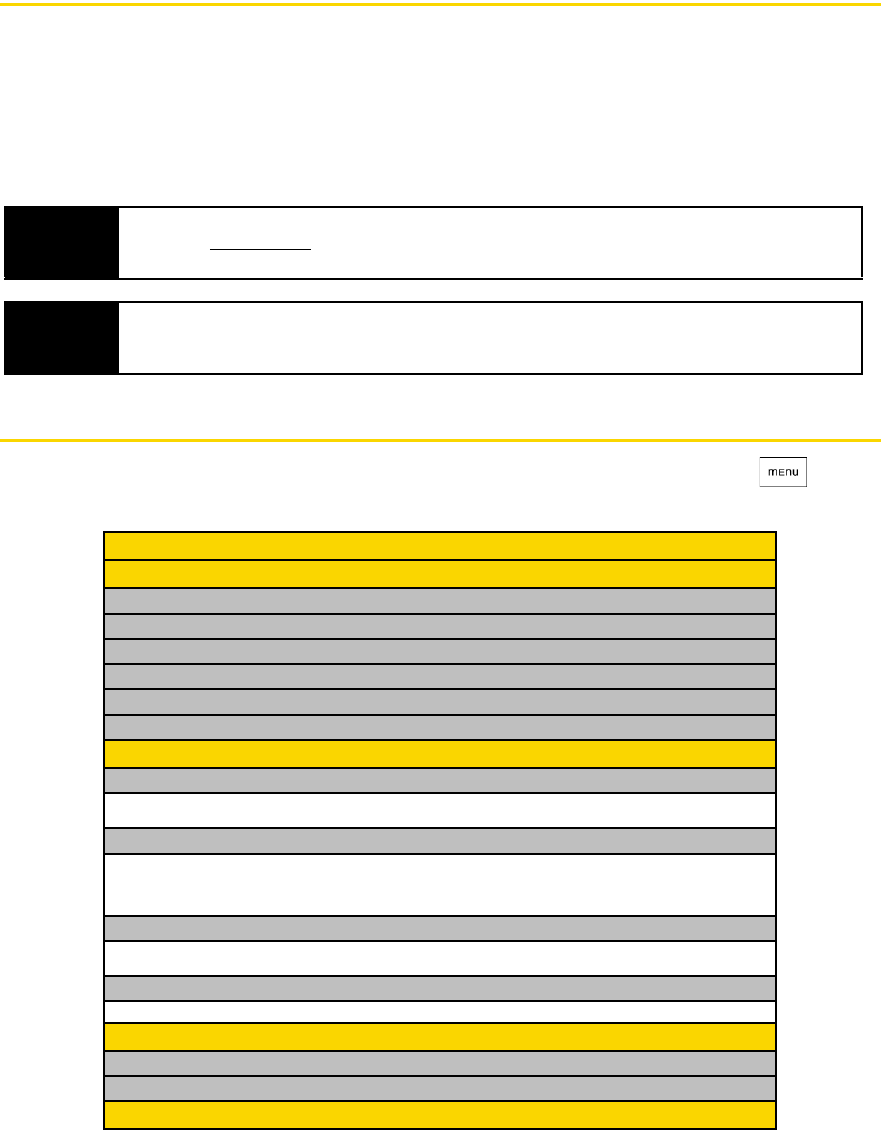
i
Introduction
This User Guide introduces you to HTC® service and all the features of your new device. It’s divided into four
sections:
ࡗSection 1: Getting Started
ࡗSection 2: Using Your Phone
ࡗSection 3: HTC Service Features
ࡗSection 4: Safety and Warranty Information
Your Phone’s Menu
The following table outlines your device’s main menu structure. From the Home screen, press to open
the menu.
User Guide
Note
Because of updates in device software, this printed guide may not be the most current version for your
device. Visit www.HTC.com and log on to My HTC Wireless to access the most recent version of the user
guide.
WARNING Please refer to the Important Safety Information section on page 124 to learn about information that will
help you safely use your device. Failure to read and follow the Important Safety Information in this device
guide may result in serious bodily injury, death, or property damage.
All programs
Scenes
1: HTC
2: Social
3: Work
4: Play
5: Travel
6: Clean Slate
Add to Home
1: Shortcut
1: Bookmark 2: Gmail label 3: Mail Inbox 4: Music playlist
5: Person 6: Program 7: Web Widget
2: HTC widget
1: Bookmarks 2: Calendar 3: Clock 4: Footprints
5: Mail 6: Messages 7: Music 8: People
9: Photo album 10: Photo frame 11: Search 12: Settings
13: Stocks 14: Travel clock 15: Twitter 16: Weather
3: Android widget
1: Analog clock 2: Calendar 3: Music 4: NFL Mobile Live
5: Picture frame 6: Search 7: HTCTV
4: Folder
1: New folder 2: Live folder
Wallpaper
1: Home
2: Lock screen
Notifications

ii
Settings
1: Personalize
1: Scenes
2: Home wallpaper
3: Lockscreen wallpaper
4: Default ringtone
2: Wireless controls
1: Airplane mode
2: Wi-Fi
3: Wi-Fi settings
1: Wi-Fi 2: Network notification
4: Bluetooth
5: Bluetooth settings
1: Bluetooth 2: Device name 3: Discoverable 4: Scan for devices
6: Mobile network
7: Mobile network settings
1: Roaming 2: Data roaming 3: Data roaming guard 4: Data roaming sound
5: Call guard 6: Network power saving 7: Switch NAM 8: Mode of operation
8: Mobile network sharing
3: Call settings
1: Voicemail
2: Clear voicemail notification
3: Plus code dialing
1: North american dialing 2: International dialing
4: Automatic prepend
5: Enable TTY support
1: Full mode 2: VCO mode 3: HCO mode 4: Off
6: DDTM mode
7: Voice privacy
8: Voice privacy notification
4: Sound & display
1: Silent mode 2: Ringer volume 3: Media volume 4: Phone ringtone
5: Phone vibrate 6: Notification sound 7: Roaming alert 8: Roaming ringtone
9: Emergency alert 10: Dialer keypad tone 11: Audible selection 12: SD card notifications
13: Orientation 14: Animation 15: Disable auto backlight 16: Brightness
17: Screen timeout 18: Notification flash 19: Lockscreen wallpaper 20: G-Sensor calibration
5: Data synchronization
1: Google
1: Background data 2: Auto-sync 3: Gmail 4: Calendar
5: Contacts
2: Exchange ActiveSync
1: Schedule 2: Mail 3: Contacts 4: Calendar
3: PC
6: Social network
1: Facebook 2: Flickr 3: Twitter
7: Lo cati on
1: Use wireless networks 2: Enable GPS satellites 3: Location Setting
8: Security
1: Require pattern
2: Use visible pattern
3: Use tactile feedback
4: Set unlock pattern
5: Visible passwords
6: Firmware download
1: Auto download 2: Prompt before download 3: Never
7: Factory data reset

iii
9: Applications
1: Unknown sources 2: Manage applications 3: Development
10: SD card & phone storage
1: Total space 2: Available space 3: Unmount SD card 4: Format SD card
5: Available space
11: Date & time
1: Automatic 2: Set date 3: Select time zone 4: Set time
5: Use 24-hour format 6: Select date format
12: Locale & text
1: Select locale
2: Touch Input
1: Keyboard types 2: Keyboard language 3: Text input 4: Tutorial
3: Tutorial
13: About phone
1: System updates
1: Firmware update 2: Update profile 3: Update PRL
2: Status
3: Legal information
1: HTC legal 2: Open source licenses 3: Google legal
4: System Tutorial
5: Model number
6: Firmware version
7: Baseband version
8: Kernel version
9: Build number
10: Software version
Tip For most programs or games on the phone, pressing brings up options available for the program or game.

Section 1
Getting Started
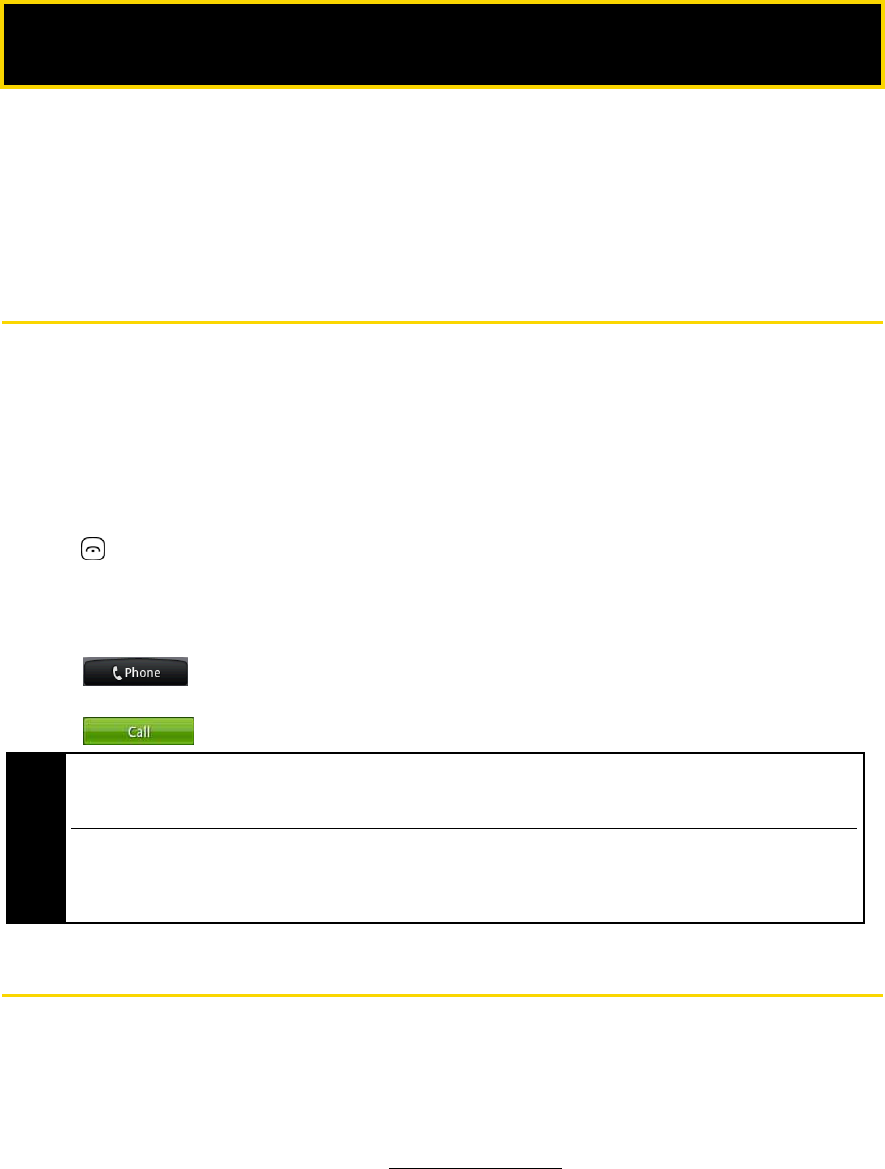
2 1A. Setting Up Service
ࡗSetting Up Your Phone (page 2)
ࡗActivating Your Phone (page 2)
ࡗSetting Up Your Voicemail (page 3)
ࡗHTC Account Passwords (page 3)
ࡗGetting Help (page 4)
Setting Up Your Phone
1. Install the battery:
ⅢPush the back cover up with your thumb until it disengages from the device and then slide it up to
remove.
ⅢAlign the battery’s exposed copper contacts with the battery connectors inside the battery
compartment.
ⅢInsert the contact side of the battery first then gently push the battery into place.
ⅢReplace the back cover.
2. Press to turn the phone on.
ⅢIf your phone is activated, it will turn on, search for HTC service, and enter standby mode.
ⅢIf your phone is not yet activated, see “Activating Your Phone” on page 2 for more information.
3. Make your first call.
ⅢTap .
ⅢUse the onscreen keypad to enter a phone number.
ⅢTap .
Activating Your Phone
ⅷIf you purchased your phone at a HTC Store, it is probably activated and ready to use.
ⅷIf you received your phone in the mail and it is for a new HTC account or a new line of service, it is designed to activate
automatically. To confirm your activation, make a phone call.
ⅷIf you received your phone in the mail and you are activating a new phone for an existing number on your account, you
will need to go online to activate your new phone.
ⅢFrom your computer’s Web browser, go to www.HTC.com/activate and complete the onscreen
instructions to activate your phone.
1A. Setting Up Service
Note Your phone’s battery should have enough charge for your phone to turn on and find a signal, set up your
voicemail, and make a call. You should fully charge your battery as soon as possible. See “Charging the Battery”
on page 12 for details.
When you turn on your phone for the first time, you will be given options to let you quickly set up various
accounts, such as Google™ account, Facebook™, Flickr®, Twitter™, Microsoft® Exchange ActiveSync, and other
email accounts. We recommend that you skip these. For more information, see “Setting Up Email and Social
Networking Accounts” on page 88 for details.
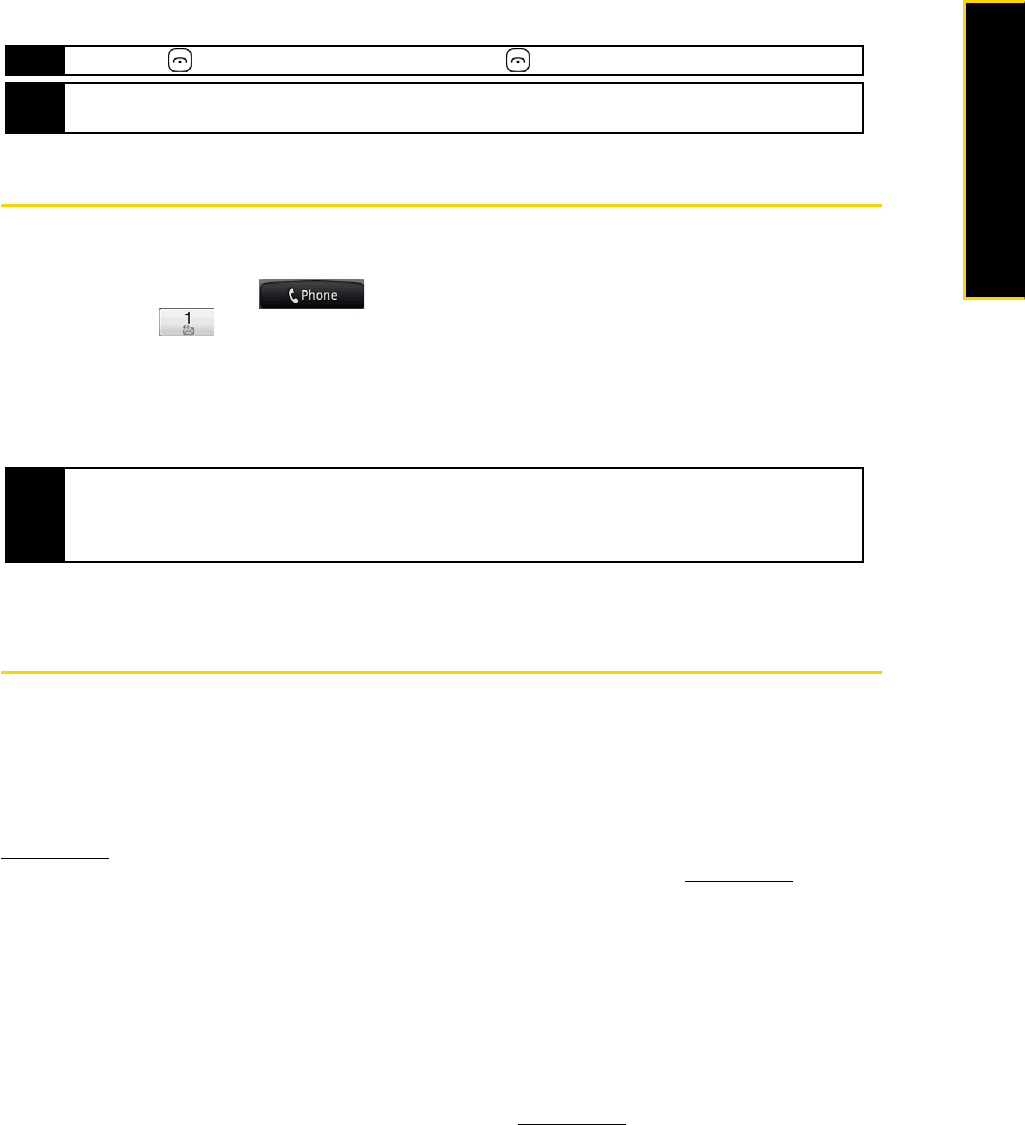
1A. Setting Up Service 3
Setting Up Service
When you have finished, make a phone call to confirm your activation. If your phone is still not activated or
you do not have access to the Internet, contact HTC Customer Service at 1-888-211-4727 for assistance.
Setting Up Your Voicemail
Your phone automatically transfers all unanswered calls to your voicemail, even if your phone is in use or
turned off. You should set up your HTC Voicemail and personal greeting as soon as your phone is activated.
1. From the Home screen, tap .
2. Press and hold .
3. Follow the system prompts to:
ⅢCreate your passcode.
ⅢRecord your name announcement.
ⅢRecord your greeting.
For more information about using your voicemail, see “Voicemail” on page 76.
HTC Account Passwords
As a HTC customer, you enjoy unlimited access to your personal account information, your voicemail
account, and your data services account. To ensure that no one else has access to your information, you will
need to create passwords to protect your privacy.
Account Username and Password
If you are the account owner, you will create an account username and password when you sign on to
www.HTC.com. (Click Need to register for access? to get started.) If you are not the account owner (if someone
else receives the bill for your HTC service), you can get a sub-account password at www.HTC.com.
Voicemail Password
You’ll create your voicemail password (or passcode) when you set up your voicemail. See “Setting Up Your
Voicemail“ for more information on your voicemail password.
Data Services Password
With your HTC phone, you may elect to set up an optional data services password to control access and
authorize Premium Service purchases.
For more information, or to change your passwords, sign on to www.HTC.com or call HTC Customer Service
at 1-888-211-4727.
Tip Do not press while the phone is being activated. Pressing cancels the activation process.
Note If you are having difficulty with activation, contact HTC Customer Service by dialing 1-888-211-4727 from any
other phone.
Note Voicemail Passcode
HTC strongly recommends that you create a passcode when setting up your voicemail to protect against
unauthorized access. Without a passcode, anyone who has access to your handset is able to access your
voicemail messages.
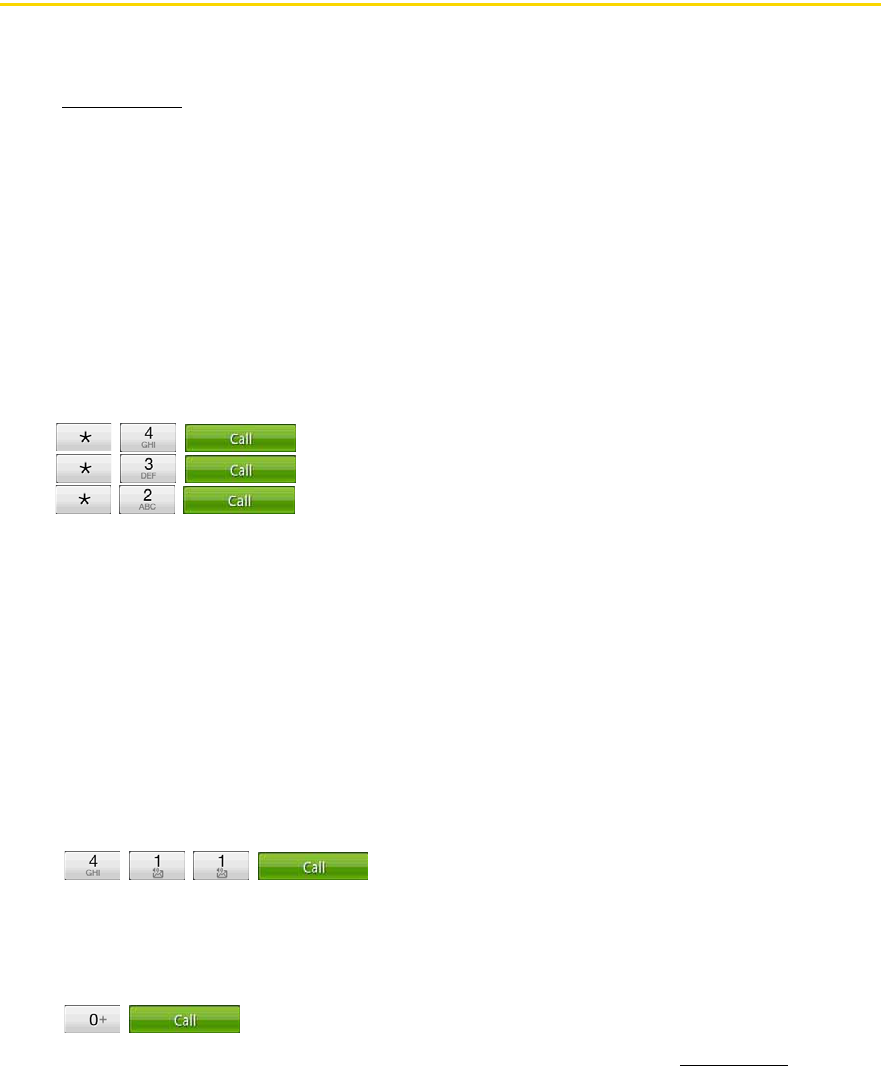
4 1A. Setting Up Service
Getting Help
Managing Your Account
Online: www.HTC.com
ⅷAccess your account information.
ⅷCheck your minutes used (depending on your HTC service plan).
ⅷView and pay your bill.
ⅷEnroll in HTC online billing and automatic payment.
ⅷPurchase accessories.
ⅷShop for the latest HTC phones.
ⅷView available HTC service plans and options.
ⅷLearn more about data services and other products like HTC Picture Mail, games, ringers, screen savers,
and more.
From Your HTC Phone
ⅷTap to check minute usage and account balance.
ⅷTap to make a payment.
ⅷTap to access a summary of your HTC service plan or get answers to other
questions.
From Any Other Phone
ⅷHTC Customer Service: 1-888-211-4727.
ⅷBusiness Customer Service: 1-800-927-2199.
HTC 411
HTC 411 gives you access to a variety of services and information, including residential, business, and
government listings; movie listings or showtimes; driving directions, restaurant reservations, and major local
event information. You can get up to three pieces of information per call, and the operator can automatically
connect your call at no additional charge.
There is a per-call charge to use HTC 411, and you will be billed for airtime.
ᮣTap .
HTC Operator Services
HTC Operator Services provides assistance when you place collect calls or when you place calls billed to a
local telephone calling card or third party.
ᮣTap .
For more information or to see the latest in products and services, visit us online at www.HTC.com.

Section 2
Your Phone
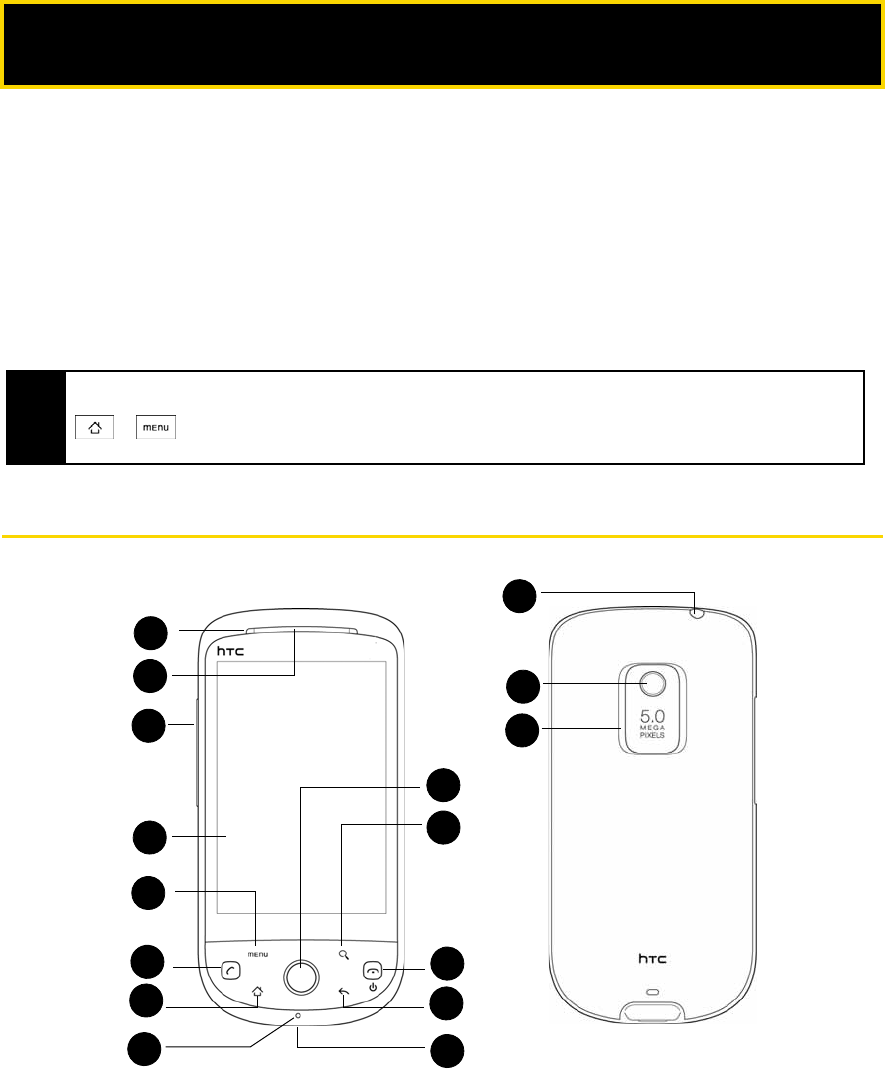
6 2A. Phone Basics
ࡗYour Phone (page 6)
ࡗViewing the Display Screen (page 7)
ࡗTurning Your Phone On and Off (page 10)
ࡗBattery and Charger (page 11)
ࡗGetting Around Your Phone (page 12)
ࡗDisplaying Your Phone Number (page 13)
ࡗMaking and Answering Calls (page 13)
ࡗEntering Text (page 17)
ࡗHome Screen (page 21)
Your Phone
Key Functions
1. Front Indicator Light (LED) shows your phone’s connection status at a glance.
2. Earpiece lets you hear the caller and automated prompts.
3. Volume Button allows you to adjust the ringer or media volume or adjust the voice volume during a call.
2A. Phone Basics
Tip Phone Software Upgrades – Updates to your phone’s software may become available from time to time. HTC will
automatically upload critical updates to your phone. You can also check for and download updates by pressing
> , and then tapping Settings > About phone > System updates > Firmware update to search for
and download available updates.
1
6
4
2
7
11
3
5
10
12
14
13
89
16
15
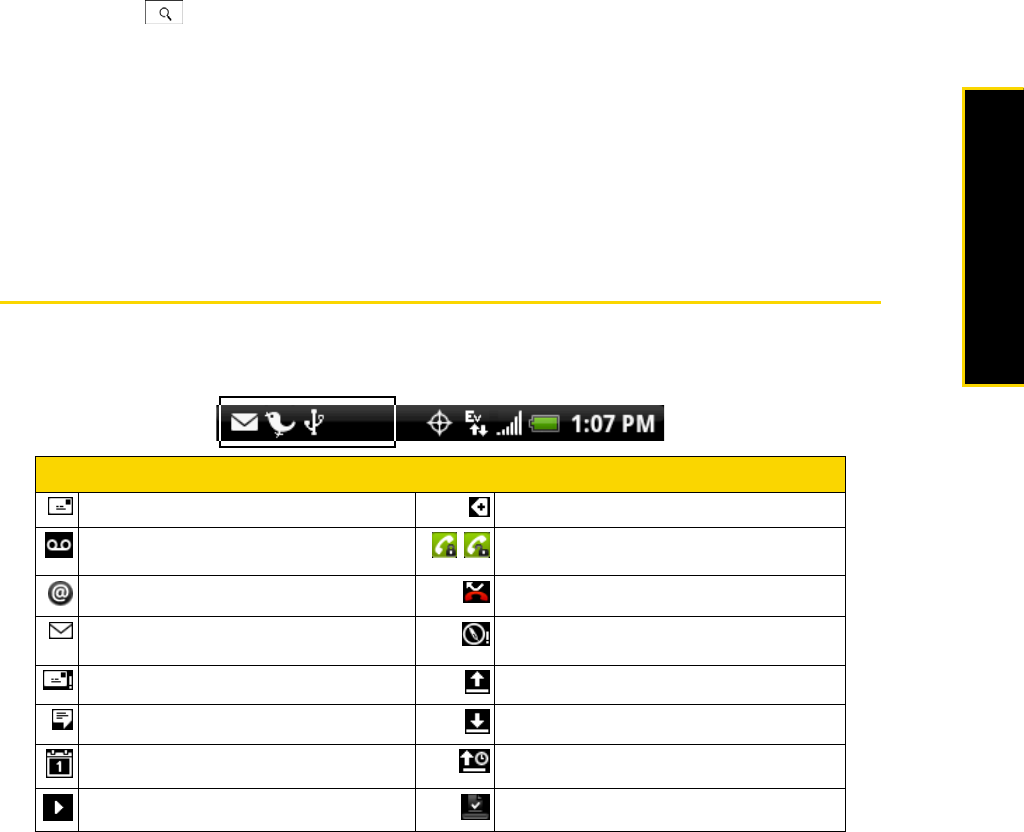
2A. Phone Basics 7
Phone Basics
4. Display Screen displays all the information needed to operate your phone, such as the call status, the
People list, the date and time, and the signal and battery strength.
5. MENU Key allows you to open a list of actions that you can do on the current screen.
6. CALL Key allows you to place or receive calls, answer Call Waiting, use 3-Way Calling, or activate
Automatic Speech Recognition (ASR).
7. HOME Key takes you back to the Home screen. When in standby mode, press and hold to open the
recently-used applications window.
8. Microphone allows other callers to hear you clearly when you are speaking to them.
9. Charger/Accessory Jack allows you to connect the phone charger or an optional USB cable (included).
CAUTION! Inserting an accessory into the incorrect jack may damage the phone.
10. BACK Key allows you to go back to the previous screen, or close a dialog box, options menu, the
Notifications panel, or onscreen keyboard.
11. END/POWER Key lets you turn the phone on or off, end a call, or turn on/off the screen. While in standby
mode, press and hold to open a menu to let you turn on/off the phone, turn on/off your mobile network
connection, or switch your phone to silent mode, vibration mode, or airplane mode.
12. SEARCH Key allows you to search information on the current screen or application. For example, while in
People, press to search for a contact in the phone.
13. Trackball allows you to select or highlight items on the screen. The trackball also flashes when you receive
an incoming call or a notification.
14. 3.5 mm Headset Jack allows you to plug in either a stereo headset or an optional headset for convenient,
hands-free conversations. CAUTION! Inserting an accessory into the incorrect jack may damage the
phone.
15. Camera Lens as part of the built-in camera, lets you take pictures and videos.
16. Speaker lets you hear the different ringers and sounds. The speaker also lets you hear the caller’s voice in
speakerphone mode.
Viewing the Display Screen
Your phone’s display screen provides information about notifications and your phone’s status. This list
identifies the symbols you’ll see on your phone’s display screen:
Status Bar – Notification Icons
New Text or Picture Message More undisplayed notifications.
New Voicemail
Call in progress (Voice Privacy locked/
unlocked)
New Gmail message Missed call
New Microsoft Exchange ActiveSync
email or POP3/IMAP message
Compass needs orientation
Problem with SMS/MMS delivery Uploading data (animated)
New instant message from Google Talk Downloading data (animated)
Upcoming event Waiting to upload
Music is playing Content downloaded
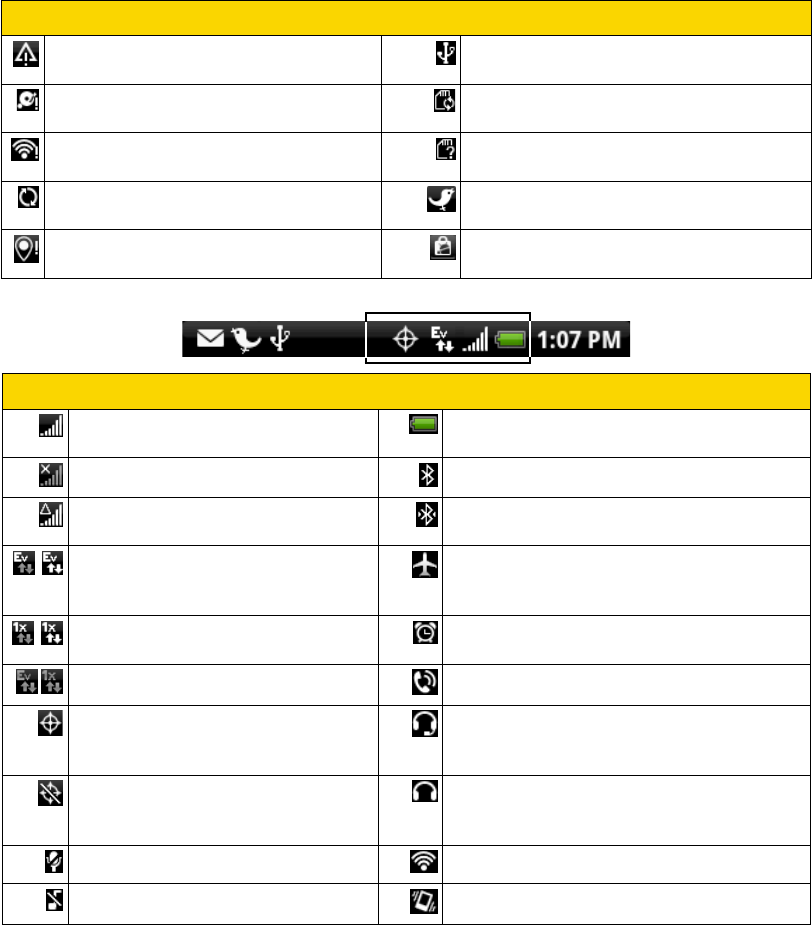
8 2A. Phone Basics
Notifications Panel
Notification icons report the arrival of new messages, calendar events, alarms being set and ongoing
settings such as call forwarding being on or the current call status. You can open the Notifications panel to
access message, reminder, or event notification tabs.
General notification (for example, sync
error)
Phone connected to computer via USB
cable
Storage card is low on free space Storage card is safe to remove or storage
card is being prepared
Wi-Fi is on and wireless networks are
available
No storage card installed on the phone.
Data synchronizing, connected to HTC
Sync, or connected to Mobile Sync
New tweet
New location detected Updates available for an application
downloaded from Android Market
Status Bar – Phone Status Icons
Signal Strength
(More bars = stronger signal)
Shows current battery charge level
(Icon shown is fully charged)
No Service Bluetooth on
Phone is “roaming” off the
Nationwide HTC Network
Connected to Bluetooth device
HTC mobile broadband data service
(EVDO) available
(when active, icon animated)
Airplane mode
HTC 1xRTT data service available
(when active, icon animated)
Alarm set
Data service is currently unavailable Speakerphone on
Phone’s location feature is on and
available for location-based services
such as GPS Navigation
Wired microphone headset connected
Phone’s location feature off and your
location available only for 911
(page 15)
Wired headset connected
Phone microphone muted Connected to Wi-Fi network
Phone speaker muted Vibrate mode
Status Bar – Notification Icons

2A. Phone Basics 9
Phone Basics
To open the Notifications panel:
When a new notification icon displays in the status bar, press and hold the status bar, and then slide your
finger downward to open the Notifications panel.
If you have several notifications, you can scroll down the screen to view more notifications.
To close the Notifications panel:
ᮣPress and hold the bottom bar of the Notifications panel, and then slide your finger up the screen.
– or –
Press .
Notification LED
The Notification LED located at the right corner of the earpiece provides information on the phone status or
pending notifications.
Tip You can also open the Notifications panel from the Home screen by pressing and then tapping
Notifications.
LED Status Indication
Solid green Battery is fully charged.
(When the phone is connected to the AC adapter/computer.)
Solid amber Battery is charging.
Flashing amber Battery is low. (Battery power is below 14%.)
Flashing green You have a pending notification. (For example, new message or
missed call.)
Note The indicators are listed in order of priority. For example, if your phone is connected to a power adapter and is
charging the battery, the LED will be solid amber and will not switch to a flashing green light even if there is a
pending notification.
Tap a notification to
open the related
application.
Tap to clear all
notifications.
Press and hold,
and then slide up
to close the
Notifications
panel.
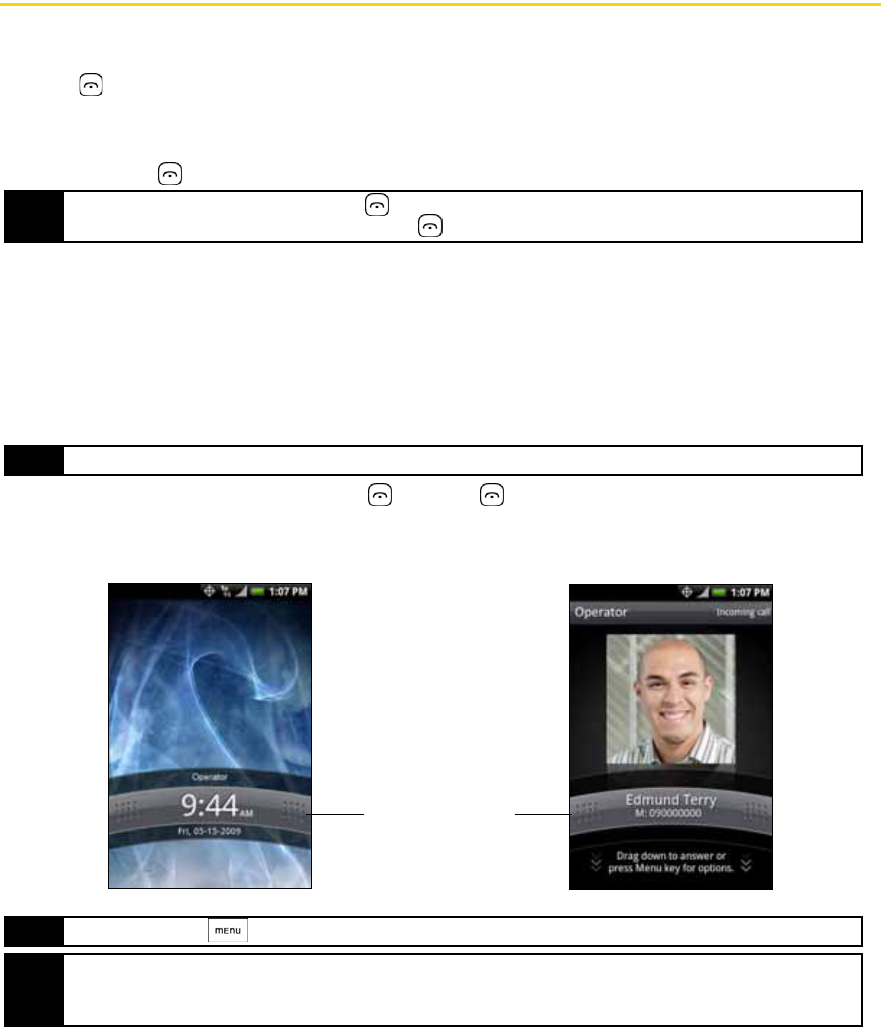
10 2A. Phone Basics
Turning Your Phone On and Off
Turning Your Phone On
ᮣPress .
Turning Your Phone Off
1. Press and hold for about two seconds.
2. On the Phone options menu, tap Power off.
3. On the Power off confirmation box, tap OK.
Turning Off the Screen When Not in Use
To save battery power, the phone automatically turns off the screen when you leave it idle after a certain
period of time. You will still be able to receive messages and calls while the phone’s screen is off.
You can also turn off the screen by pressing . Pressing again or incoming calls will turn on your
phone screen and show the lock screen.
To unlock the screen:
Note When the screen is locked and you press , it will only turn off the screen and not the phone. You will need to
unlock the screen first before you press and hold . See “To unlock the screen:” for details.
Tip For information on how to adjust the time before the screen turns off, see “Display Settings” on page 27.
Tip You can also press while on the lock screen to unlock the screen.
Note If you have set up a screen unlock pattern, you will be prompted to draw the pattern on the screen before it
unlocks. For more information on how to create and enable the screen unlock pattern, see “Protecting Your
Phone with a Screen Lock” on page 31.
Press and hold the lock
screen bar and then slide
your finger down to
unlock the screen or
answer an incoming call.
Lock screen bar
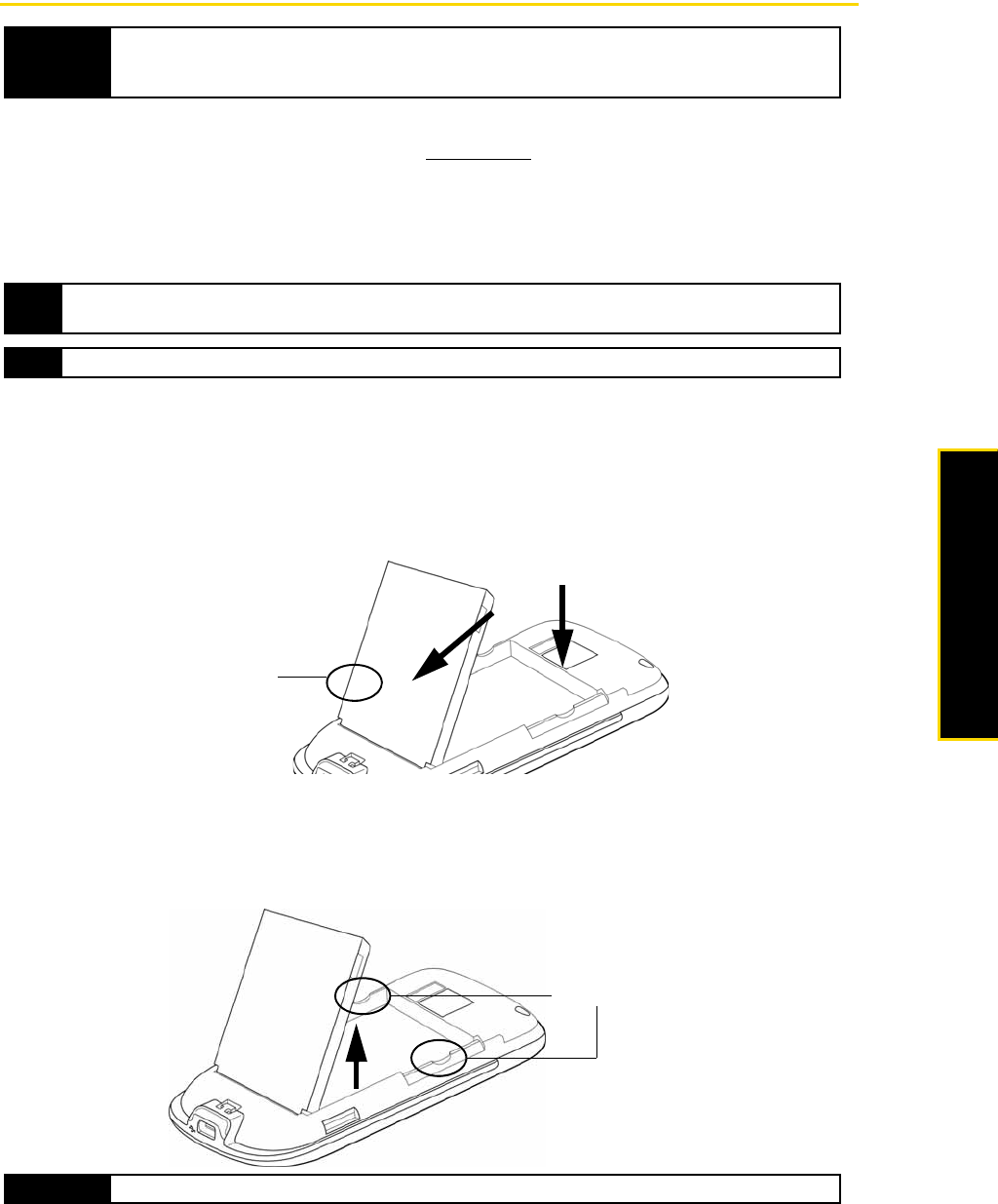
2A. Phone Basics 11
Phone Basics
Battery and Charger
HTC-approved or HTC-approved batteries and accessories can be found at HTC Stores or through HTC; or
call 1-866-343-1114 to order. They’re also available at www.HTC.com.
Battery Capacity
Your phone is equipped with a Lithium Ion (Li-Ion) battery. It allows you to recharge your battery before it is
fully drained. The battery provides up to 4 hours of continuous talk time.
Installing the Battery
1. With the phone turned off, push the back cover up with your thumb until it disengages from the device
and then slide it up to remove.
2. Align the battery’s exposed copper contacts with the battery connectors inside the battery compartment.
3. Insert the contact side of the battery first then gently push the battery into place.
4. Replace the back cover.
Removing the Battery
1. Make sure the power is off so that you don’t lose any stored numbers or messages.
2. Remove the back cover. (See step 1 of “Installing the Battery.”)
3. Lift out the battery from the notches at the upper left and right sides of the battery compartment.
WARNING Use only HTC-approved or HTC-approved batteries and chargers with your phone. The failure to use a
HTC-approved or HTC-approved battery and charger may increase the risk that your phone will overheat,
catch fire, or explode, resulting in serious bodily injury, death, or property damage.
Note Long backlight settings, searching for service, vibrate mode, browser use, and other variables may reduce the
battery’s talk and standby times.
Tip Watch your phone’s battery level indicator and charge the battery before it runs out of power.
WARNING Do not handle a damaged or leaking Li-Ion battery as you can be burned.
Copper
contacts
Notches

12 2A. Phone Basics
Charging the Battery
Keeping track of your battery’s charge is important. If your battery level becomes too low, your phone
automatically turns off, and you will lose any information you were just working on.
Always use a HTC-approved or HTC-approved desktop charger, travel charger, or vehicle power adapter to
charge your battery.
1. Plug the USB connector of the AC adapter into the charger/accessory jack at the bottom of your phone.
2. Plug in the AC adapter to an electrical outlet to start charging the battery.
Charging is indicated by a solid amber light in the Notification LED. As the battery is being charged while the
phone is on, the charging battery icon ( ) is displayed in the status bar of the Home screen. After the
battery has been fully charged, the Notification LED shows a solid green light and a full battery icon ( )
displays in the status bar of the Home screen.
For more information about Notifications, see “Notification LED” for more details.
With the HTC-approved Li-Ion battery, you can recharge the battery before it becomes completely run down.
Getting Around Your Phone
There are different ways to navigate around the your phone’s Home screen, menus, and application screens.
Tap
When you want to type using the onscreen keyboard, select items onscreen such as application and settings
icons, or press onscreen buttons, simply tap them with your finger.
Press and hold
To open the available options for an item (for example, contact or link in a Web page), simply press and hold
the item.
Swipe or slide
To swipe or slide means to quickly drag your finger vertically or horizontally across the screen.
Drag
To drag, press and hold your finger with some pressure before you start to move your finger. While dragging,
do not release your finger until you have reached the target position.
Flick
Flicking the screen is similar to swiping, except that you need to swipe your finger in light, quick strokes. This
finger gesture is always in a vertical direction, such as when flicking the contacts or message list.
Rotate
For most screens, you can automatically change the screen orientation from portrait to landscape by turning
the phone sideways. When entering text, you can turn the phone sideways to bring up a bigger keyboard.
See “Using the Onscreen Keyboard” for more details.
Note The Orientation check box in > > Settings > Sound & display needs to be selected for the screen
orientation to automatically change.
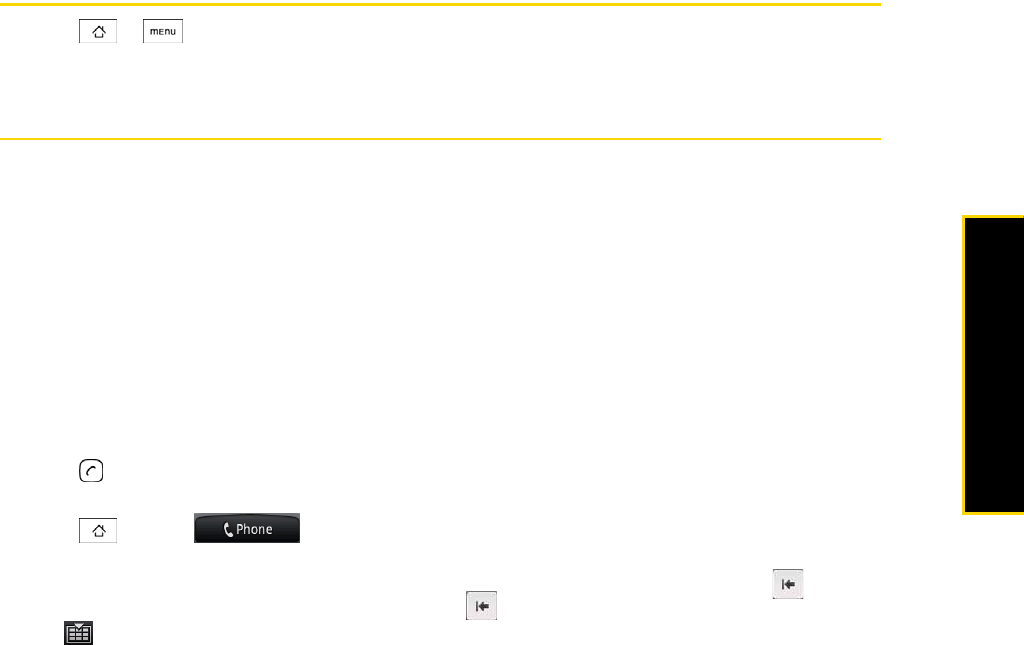
2A. Phone Basics 13
Phone Basics
Pinch
The phone screen supports multi-touch. For some applications, like Albums or the browser, you can “pinch”
the screen using two fingers (for example, thumb and index fingers) to zoom in or zoom out when viewing a
picture or a Web page.
Using the Trackball
Roll or press the trackball to select or highlight items on the screen. The trackball also flashes when you
receive an incoming call or a notification.
Displaying Your Phone Number
ᮣPress > and tap Settings > About phone > Status. (Your phone number and other information
about your phone and account will be displayed.)
Making and Answering Calls
Making Calls
There are several convenient methods to make a call from your phone.
Calling using the Dialer
In Dialer, you can either dial a number directly, or you can use the Smart Dial feature to search and call a
contact in People or a number from Call History.
When you enter the first letter of the name or number of a contact, Smart Dial searches for contact phone
numbers and the first character of a contact name as well as from the character that appears after a space,
dash, or underscore in a contact name. As you enter more letters or numbers, the list shows only the
corresponding matches.
1. Press .
– or –
Press and tap .
2. Begin entering the first few digits or characters by tapping the keys on the Phone keypad. As you enter
digits or letters, the Smart Dial panel displays matches found. If you enter a wrong digit, tap to erase
that digit. To erase the entire number, press and hold .
3. Tap to close the phone keypad and to see if there are more matching numbers or contacts. To
browse through the filtered list, flick through the list or slide your finger up or down the list slowly.
4. Tap the phone number or contact from the list.
– or –
To call a different phone number associated with the contact, tap the contact card icon at the right side of
the contact name. On the contact details screen, tap the number you want to call.
Calling a phone number in a text message
While viewing a text message, you can place a call to a number that is in the body of the message.
1. Tap the message with the phone number.
2. On the Select link screen, tap the number you want to call.
3. The Phone screen then opens, with the phone number automatically filled in and ready to be dialed.
To place the call, tap Call.
For more information about text messages, see “Text Messaging (SMS)” on page 78.
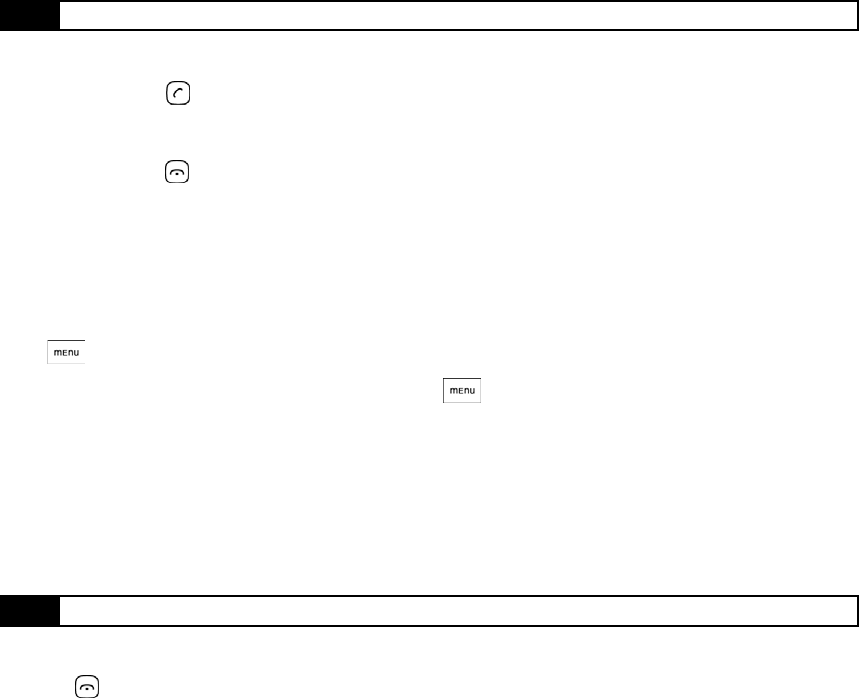
14 2A. Pho ne B asi cs
Calling a speed dial number
To call a stored speed dial number, press and hold a number button. For information on setting up speed
dial numbers, see “Assigning Speed Dial Numbers” on page 42.
Calling a phone number in an email
While viewing a received email message, tap a phone number that is displayed in the body of the email
message to open the Phone screen so you can call that number.
You can also place calls from your phone by speed dialing numbers from People (page 38), using your
History listings (page 36), and Automatic Speech Recognition (page 55).
Answering Calls
When you receive a phone call from a contact, the Incoming call screen appears and displays the caller ID
icon, name, and phone number of the calling party. When you receive a phone call from someone who is
not stored in People, only the default caller ID icon and phone number appear on the Incoming call screen.
Answering an incoming call
Tap Answer or press .
Rejecting an incoming call
Tap Decline or press to reject and send the call to your voice mail.
Muting the ringing sound
To mute the ring without rejecting the call, press the volume button down.
Rejecting a call and sending a text message
You can automatically send a default text message to the caller and reject the incoming voice call.
Press and tap Send message when you have an incoming call to send the text message.
You can change the default text message by pressing and tapping Phone settings > Call reject message
while on the Phone screen.
Answering a Roam Call With Call Guard Enabled
Call Guard is an option that helps you manage your roaming charges when making or receiving calls while
outside the Nationwide HTC Network. Please see “Roaming” on page 83 for more information about
roaming.
ᮣTap Answer to answer the call. (See “Call Guard” on page 84 for additional information.)
Ending a Call
ᮣPress .
– or –
Tap End call.
Note Make sure your phone is on. (If your phone is off, incoming calls go to voicemail.)
Note When your phone is off, calls go directly to voicemail.
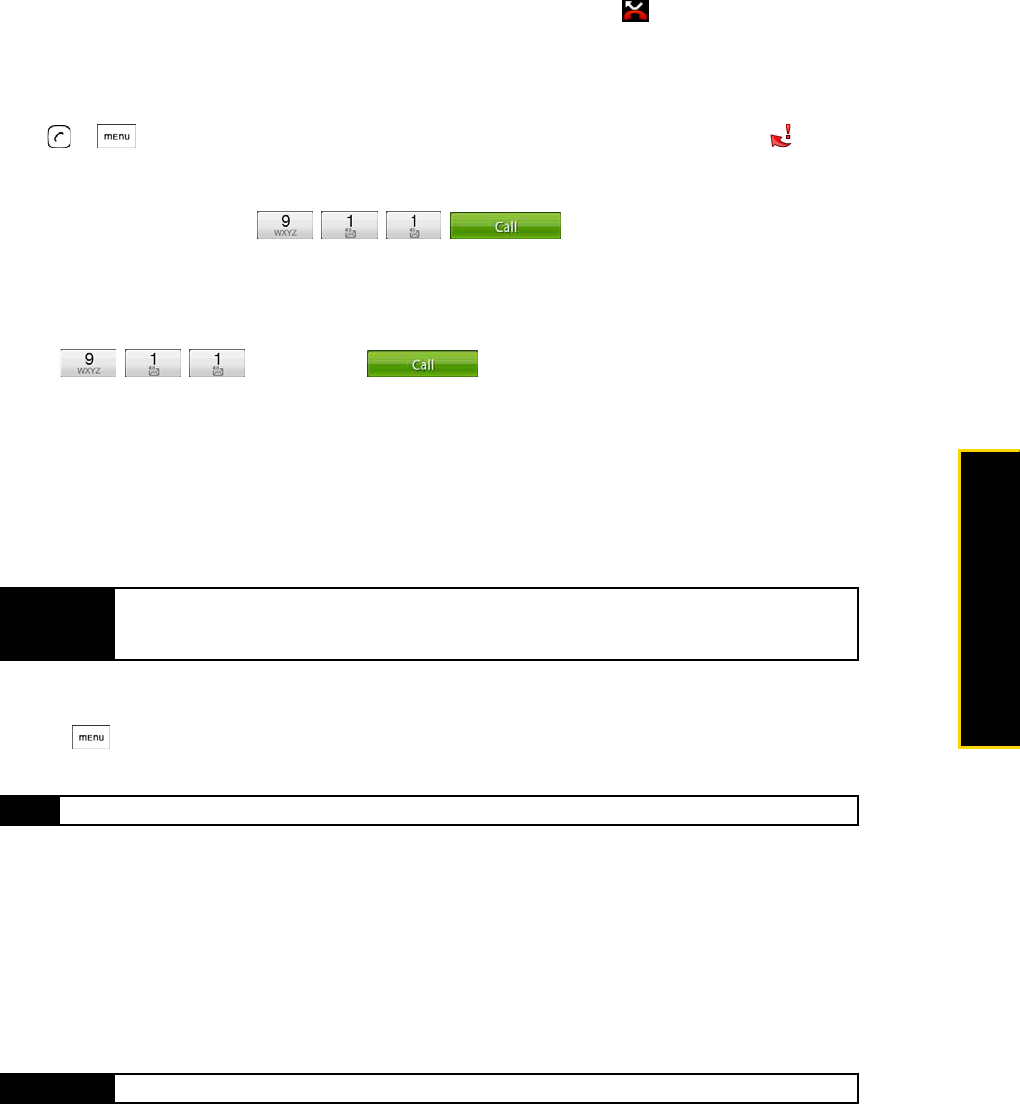
2A. Phone Basics 15
Phone Basics
Missed Call Notification
When you do not answer an incoming call, you will see the missed call icon in the status bar when you
miss a call.
To check who the caller was, press and hold the status bar, and then slide your finger downward on the
screen to open the Notifications panel. The missed call number or contact name is displayed.
Press
> , and then tap Call history. Missed calls are indicated by the missed call icon ( ).
Calling Emergency Numbers
You can place calls to 911 (dial ), even if your phone is locked or your
account is restricted.
To call the 911 emergency number:
1. Tap Emergency call on the screen.
2. Tap , and then tap .
Enhanced 911 (E911) Information
This phone features an embedded Global Positioning System (GPS) chip necessary for utilizing E911
emergency location services where available.
When you place an emergency 911 call, the GPS feature of your phone seeks information to calculate your
approximate location. Depending on several variables, including availability and access to satellite signals, it
may take up to 30 seconds or more to determine and report your approximate location.
In-Call Options
Pressing during a call displays a list of available in-call features. To select an option, tap the option. The
following options may be available through the Options menu:
ⅷAdd call to initiate a three-way call.
ⅷHold to place the call on hold. Tap Unhold to continue the conversation.
ⅷPeople to display your contacts list.
ⅷMute to mute the microphone. Tap Unmute to unmute the microphone.
ⅷSpeaker on or Speaker off to route the phone’s audio through the speaker or through the earpiece.
ᮣTap Speaker On to route the phone’s audio through the speaker. (You can adjust the speaker volume
using the volume button on the side of the phone.)
ᮣTap Speaker Off to use the phone’s earpiece.
Important Always report your location to the 911 operator when placing an emergency call. Some designated
emergency call takers, known as Public Safety Answering Points (PSAPs) may not be equipped to receive
GPS location information from your phone.
Note When the phone is completing a call, only the People and Speaker on options are available.
WARNING Because of higher volume levels, do not place the phone near your ear during speakerphone use.

16 2A. Phone Basics
End-of-Call Options
After you receive a call from or make a call to a phone number that is not in your People list, you can choose
to save the number to People. On the Phone screen, tap at the right side of the number to add the new
number to People. (See “Saving a Phone Number” on page 16.)
Saving a Phone Number
Store contacts entries in your phone. Your phone automatically sorts People entries alphabetically. (For more
information, see “People” on page 38.)
To save a number from standby mode:
1. Press .
2. Enter the phone number by tapping the keys on the keypad.
3. Tap Save to People. (This button appears after tapping six digits.)
4. Tap Create new contact or Save to existing contact.
5. Use the keyboard to enter the new contact name and tap Save to save the new entry.
– or –
Tap an existing contact name and tap Save to save the new number.
Finding a Phone Number
You can search People for entries by name.
1. Press , tap
People, and then press .
2. Enter the first letter or letters of an entry. (The more letters you enter, the more specific the search.)
3. Tap the contact to display his/her contact information.
Dialing From the People List
1. Press and tap People.
2. Tap the entry you want to call.
3. Tap Call [Type of Number] (For example, Call Mobile.)
Speed Dialing
You can store up to nine numbers in your phone’s speed dial memory.
ᮣPress and hold the appropriate key for approximately two seconds. The display confirms that you have
dialed the number when it shows “Dialing” at the upper-right side of the screen.
Tip After receiving a call from a phone number that is not in your People list, an options menu is briefly displayed to
allow you to save the number to People. On the options menu, tap Yes, create new contact.
Note Speed dialing is not available when you are roaming; when you are roaming off the Nationwide HTC Network, you
must always dial using eleven digits (1 + area code + number).
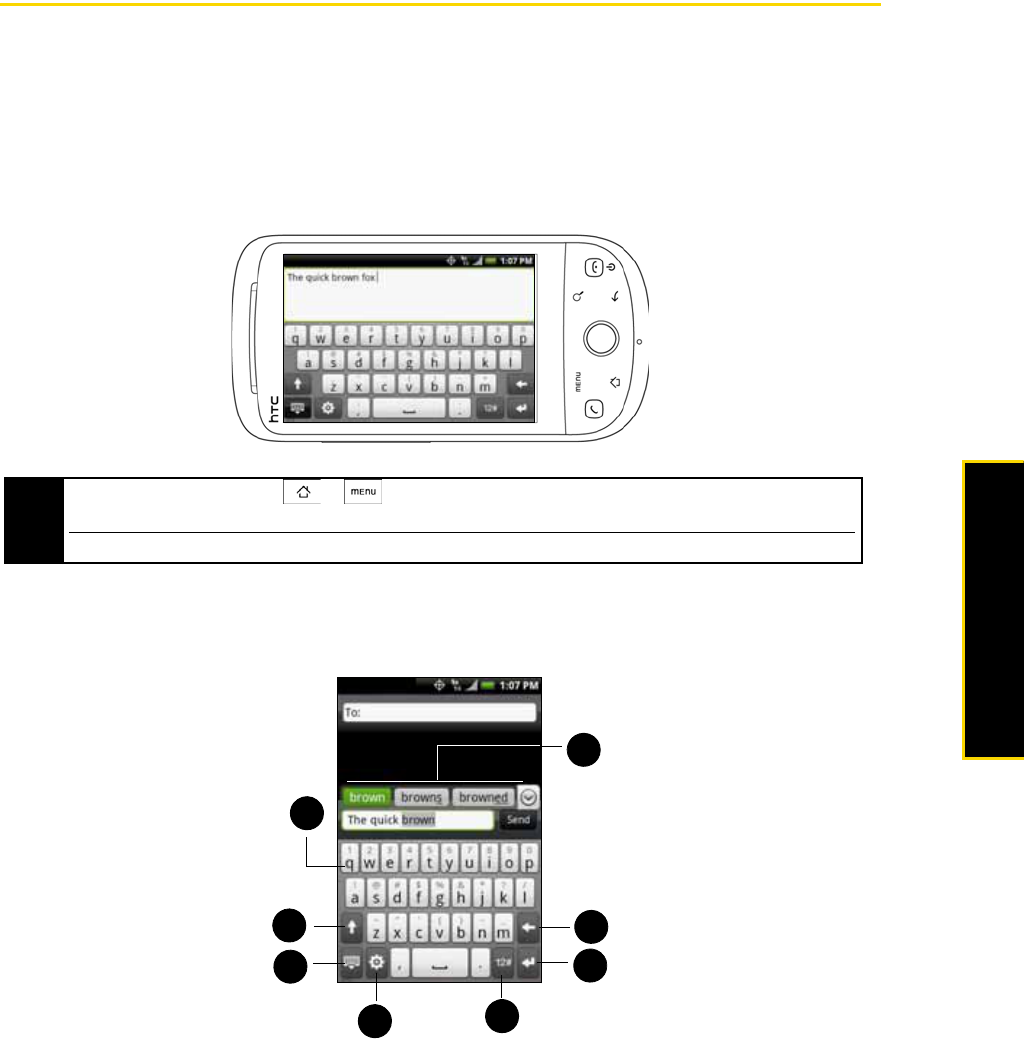
2A. Phone Basics 17
Phone Basics
Entering Text
Using the Onscreen Keyboard
When you start a program or select a box that requires text or numbers, the onscreen keyboard becomes
available. You can choose from three keyboard layouts: QWERTY, Compact QWERTY, and Phone keypad.
Using the landscape onscreen keyboard
When entering text, you can choose to use the landscape orientation of the onscreen keyboard, by turning
the phone sideways, to use a larger keyboard that lets you type easily using two thumbs.
QWERTY
QWERTY is a keyboard layout similar to a desktop computer keyboard.
1. Tap the keys to enter letters or symbols. Press and hold a key to enter accented letters, numbers, or
symbols.
2. Tap to enter an uppercase letter. Tap twice to turn on Caps Lock.
3. Tap to toggle between showing and hiding the keyboard.
Notes The Orientation check box in > > Settings > Sound & display needs to be selected for the screen
orientation to automatically change.
The landscape orientation keyboard is not supported in all applications.
3
2
4
6
1
5
8
7
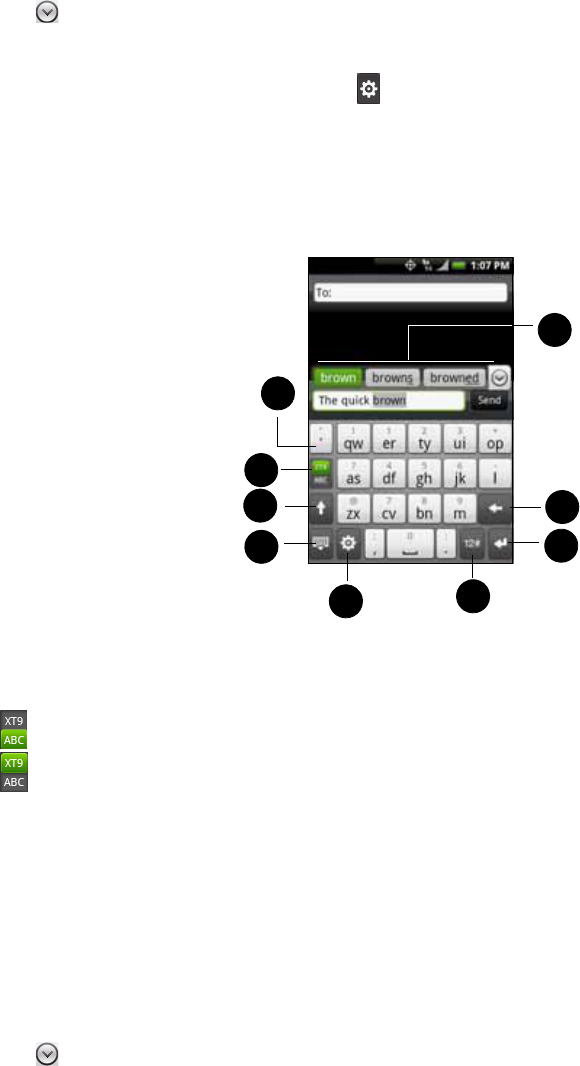
18 2A. Phone Basics
4. Tap to open a menu where you can change the keyboard layout and open the Touch Input Settings.
(See “Adjusting Touch Input Settings” for details.)
5. Tap to switch to the numeric and symbol keyboard. (See “Entering Numbers and Symbols” for details.)
6. Tap to create a new line.
7. Tap to delete the previous character.
8. Displays the word candidate list when word prediction is turned on. Tap a word to insert it into your text.
Tap to see more candidate words.
To enter text using QWERTY:
1. From a program that accepts text input, tap > Keyboard types > QWERTY.
2. Start tapping keys on the onscreen keyboard as you would on a computer keyboard to enter your text.
Compact QWERTY
Compact QWERTY is a type of keyboard which features 20 keys. With its large, touch-friendly keys and
enhanced features such as T9 predictive input, you can enter text faster and more accurately.
1. Tap the keys to enter letters or symbols. Press and hold a key to enter accented letters, numbers, or
symbols.
2. indicates you are in Multitap mode. Tap to change to Predictive mode.
indicates you are in Predictive mode. Tap to change to Multitap mode.
3. Tap to enter an uppercase letter. Tap twice to turn on Caps Lock.
4. Tap to toggle between showing and hiding the keyboard.
5. Tap to open a menu where you can change the keyboard layout and open the Touch Input Settings. (See
“Adjusting Touch Input Settings” for details.)
6. Tap to switch to the numeric and symbol keyboard. (See “Entering Numbers and Symbols” for details.)
7. Tap to create a new line.
8. Tap to delete the previous character.
9. Displays the word candidate list when word prediction is turned on. Tap a word to insert it into your text.
Tap to see more candidate words.
4
3
5
7
1
6
9
8
2
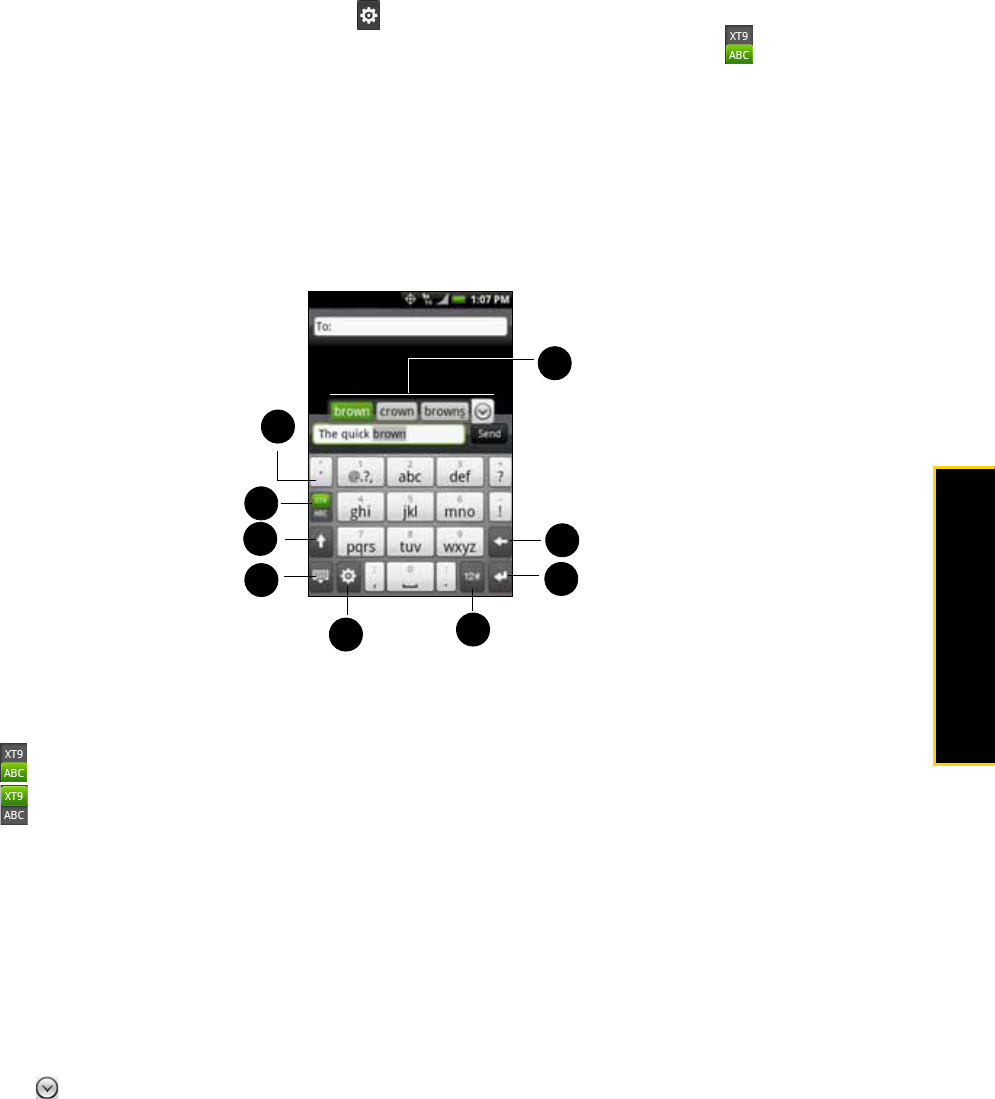
2A. Phone Basics 19
Phone Basics
To enter text using Compact QWERTY:
1. From a program that accepts text input, tap > Keyboard types > Compact QWERTY.
2. Start tapping keys on the onscreen keyboard to enter your text. When in Multitap mode ( ), enter a
character by tapping a key until the character you want is displayed on the screen.
ⅢTo enter the first letter that shows on a key, tap the key once. To enter the second letter, tap twice.
ⅢTo enter a punctuation mark, symbol, or number that appears at the top of a key, tap and hold the key.
Phone Keypad
Phone Keypad is a 12-key onscreen keypad that has a layout similar to wireless phone keypads, plus some
additional keys. The Phone Keypad has large keys and enhanced input features such as T9 predictive input,
which makes it faster for you to enter text in your messages and documents.
1. Tap the keys to enter letters or symbols. Press and hold a key to enter accented letters, numbers, or
symbols.
2. indicates you are in Multitap mode. Tap to change to Predictive mode.
indicates you are in Predictive mode. Tap to change to Multitap mode.
3. Tap to enter an uppercase letter. Tap twice to turn on Caps Lock.
4. Tap to toggle between showing and hiding the keyboard.
5. Tap to open a menu where you can change the keyboard layout and open the Touch Input Settings.
(See “Adjusting Touch Input Settings” for details.)
6. Tap to switch to the numeric and symbol keyboard. (See “Entering Numbers and Symbols” for details.)
7. Tap to create a new line.
8. Tap to delete the previous character.
9. Displays the word candidate list when word prediction is turned on. Tap a word to insert it into your text.
Tap to see more candidate words.
4
3
5
7
1
6
9
8
2
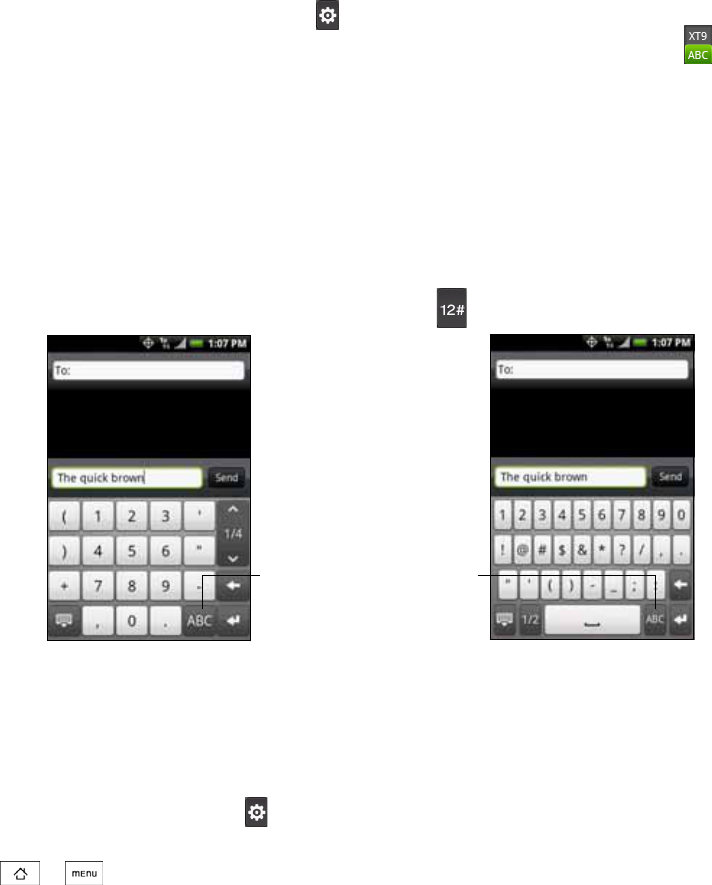
20 2A. Phone Basics
To enter text using Phone Keypad:
1. From a program that accepts text input, tap > Keyboard types > Phone Keypad.
2. Start tapping keys on the onscreen keyboard to enter your text. When in Multitap mode ( ), enter a
character by tapping a key until the character you want is displayed on the screen.
ⅢTo enter the first letter that shows on a key, tap the key once. To enter the second letter, tap twice, and
so on.
ⅢTo enter a punctuation mark, symbol, or number that appears at the top of a key, tap and hold the key.
Entering Numbers and Symbols
Switch to the numeric and symbol onscreen keyboard to let you easily enter numbers and common
symbols such as parentheses, braces, currency signs, punctuation marks, special characters, and more.
To switch to the numeric and symbol onscreen keyboard, tap on the alphanumeric keyboard.
Adjusting Touch Input Settings
Open the Touch Input settings by doing one of the following:
ⅷOn any of the keyboard layouts, tap to open the Touch Input settings.
– or –
ⅷPress > and tap Settings > Locale & text > Touch Input.
Touch Input Settings
ⅷKeyboard types lets you select the keyboard layout to use. You can choose from QWERTY, Phone Keypad, or
Compact Keyboard.
ⅷKeyboard language lets you select the language layout of the keyboard.
ⅷText input lets you set text input options when entering text, calibrate the keyboard, and set a sound or
vibration feedback whenever you tap a key. (See “Text Input” for details.)
ⅷTutorial lets you go through tutorials to learn how to use the onscreen keyboard features.
Compact QWERTY and
Phone Keypad
QWERTY
Tap to switch back to the
alphanumeric keyboard.
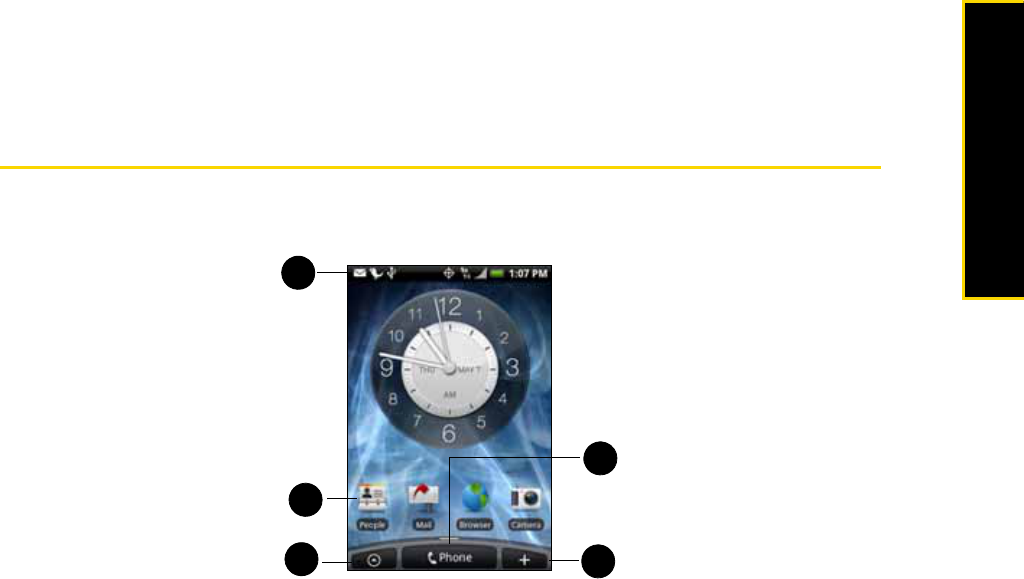
2A. Phone Basics 21
Phone Basics
Text Input
QWERTY
ⅢPrediction: Enable the word prediction feature.
ⅢSpell correction: Correct typographical errors by selecting from a list of possible words that reflect the
characters of the keys you have tapped as well as characters of nearby keys.
Phone keypad & Compact QWERTY
ⅢSpell correction: Correct typographical errors by selecting from a list of possible words that reflect the
characters of the keys you have tapped as well as characters of nearby keys.
ⅢWord completion: Select from a list of possible combinations based on the characters that appear on the
keys that you tapped.
Other settings
ⅢSound feedback: Make a clicking sound whenever you tap a key on the keyboard or an item on the
menu.
ⅢVibrate when typing: Enable vibration feedback whenever you tap a key on the keyboard or an item on
the menu.
Finger touch precision
ⅢCalibration tool: Re-calibrate the keyboard touch accuracy. Re-calibrate the keyboard if you feel that the
keyboard keys are not responding accurately to your taps.
ⅢReset calibration: Reset the calibration back to factory default.
Home Screen
The Home screen is the starting point for many applications and functions, and it allows you to add items
like application icons, shortcuts, folders, and HTC or Google widgets to give you instant access to
information and applications.
1. Status Bar: Displays phone status and notification icons. See “Viewing the Display Screen” for a list of
icons you will see on the status bar.
2. Application icon: Tap to open the related application.
3. All programs: Tap to open the All programs screen. The All programs screen holds all applications on your
phone.
4. Add to Home: Tap to add shortcuts, widgets, and folders on the Home screen.
5. Phone: Tap to open the Phone screen to make calls.
5
4
3
2
1
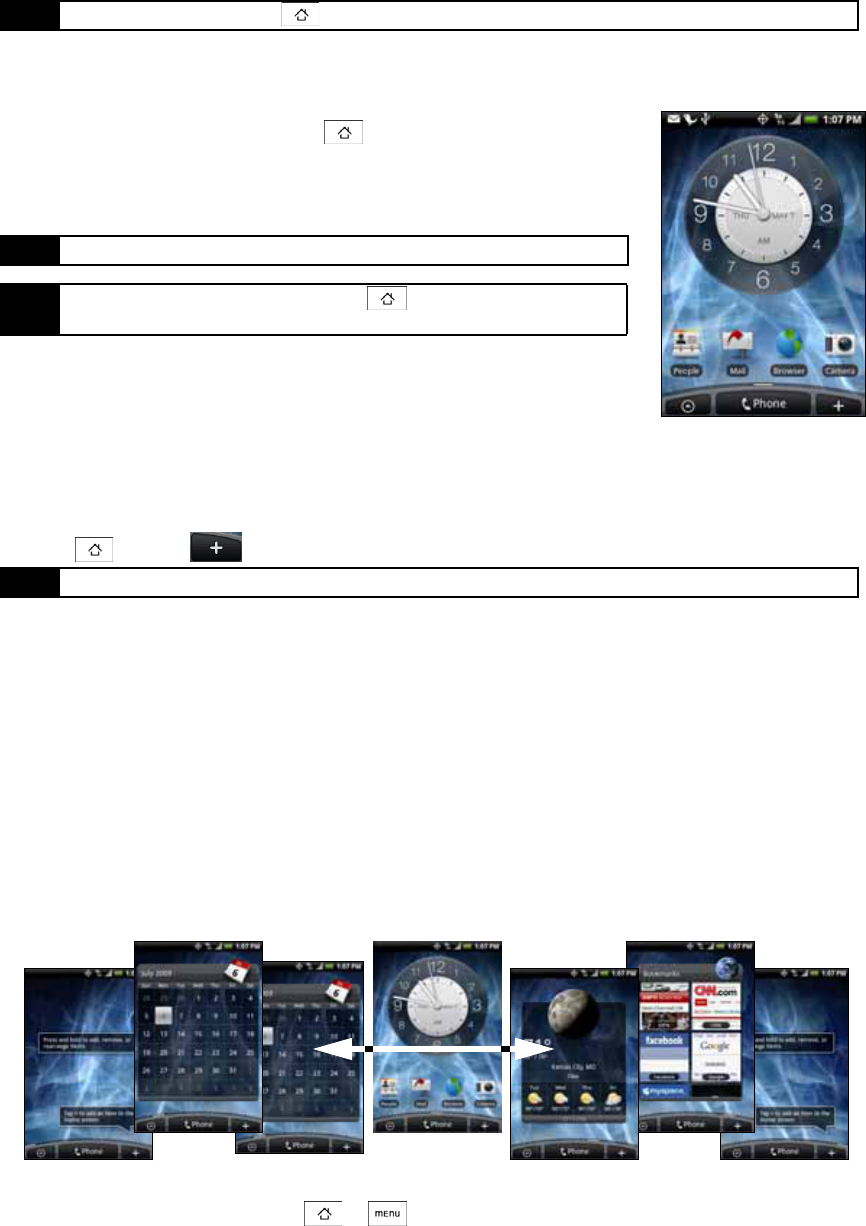
22 2A. Phone Basics
Extended Home Screen
The Home screen extends beyond the screen width to provide more space for
adding icons, widgets, and more. Press , and then slide your finger
horizontally across the screen to go to the left or right side of the extended
Home screen. There are six “additional” screens apart from the main Home
screen.
Customizing the Home Screen
To add a Home screen item:
1. Press and tap .
2. In the Add to Home options menu, tap the item you want to add to the Home screen:
ⅢShortcut: Add shortcuts such as applications, a bookmarked Web page, a favorite contact, a Gmail™
label, a music playlist, and more. To quickly add an application shortcut that is on the All programs
screen to the Home screen, press and hold an application icon. When the phone vibrates, drag the
icon on an empty area on the Home screen, and then release it.
ⅢHTC widget: Add HTC widgets to the Home screen such as a clock, calendar, mail, people, Footprints,
and more.
ⅢAndroid™ widget: Add Android widgets to the Home screen such as a clock, music player, a picture
frame, the Google™ search bar, or a calendar that shows upcoming appointments.
ⅢFolder: Add a folder where you can organize Home screen items. Add a shortcut to all your contacts,
contacts with phone numbers, or starred contacts. Contact details are automatically updated when
there are changes in the source.
Your default Home screen looks like this:
Customize your Home screen by adding application shortcuts and widgets. You can also use preset widgets
from a Scene. To use a Scene, press > and tap Scenes.
Tip While in any application, press to go back to the Home screen.
Note You cannot add more screens.
Tip While on an extended Home screen, press to return to the main
Home screen.
Note You can also press and hold an empty area on the Home screen.
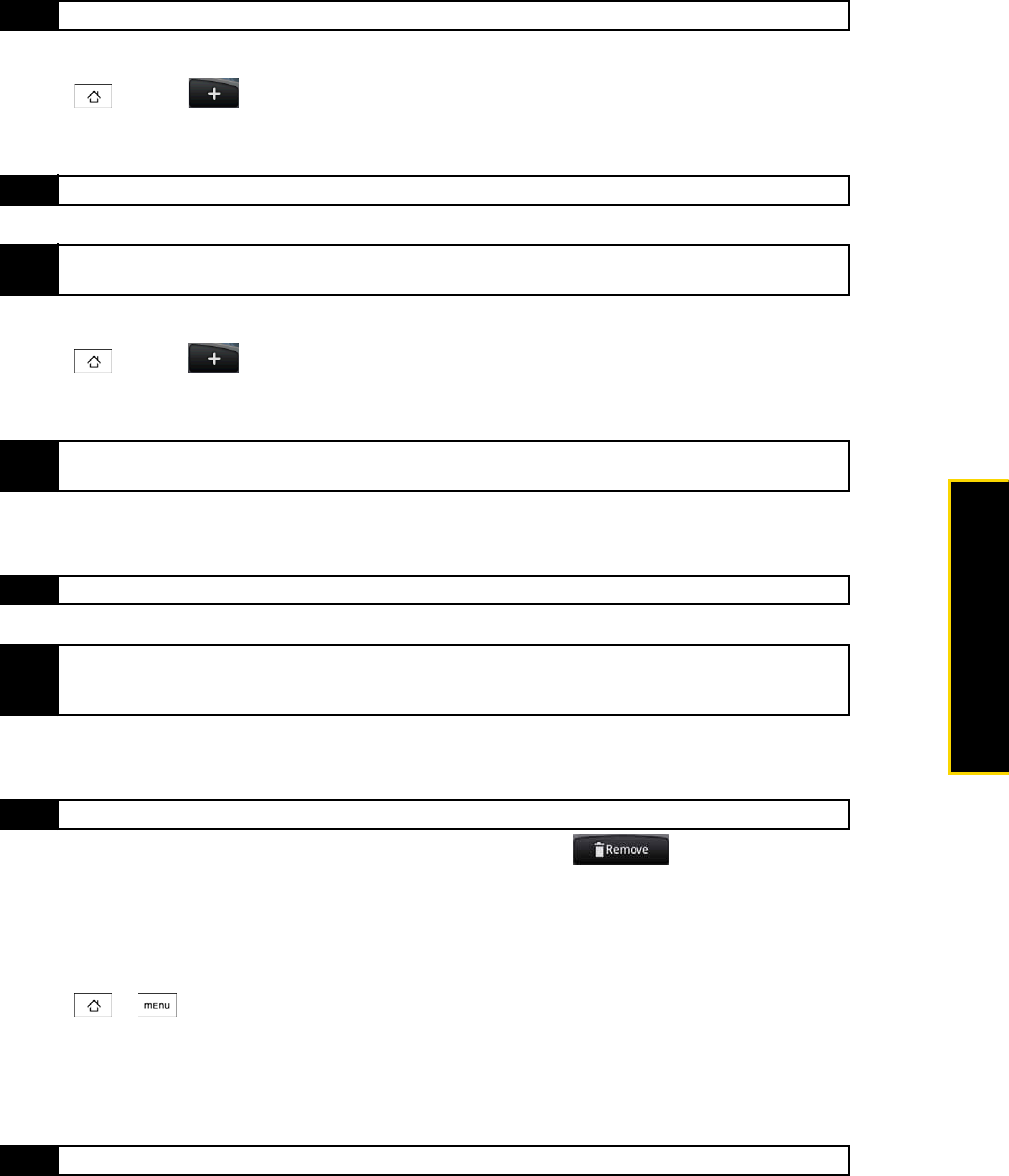
2A. Phone Basics 23
Phone Basics
To add an HTC widget:
1. Press and tap .
2. In the Add to Home options menu, tap HTC widget.
3. Select a widget to add to the Home screen and then select a layout to use.
4. Tap Select.
To add an Android widget:
1. Press and tap .
2. In the Add to Home options menu, tap Android widget.
3. Tap a widget to add to the Home screen.
To reposition a Home screen item:
1. Press and hold the item on the Home screen you want to reposition to activate Edit mode.
2. Without lifting your finger, drag the icon to the position you want on the screen, and then release it.
To remove a Home screen item:
1. Press and hold the item on the screen you want to remove to activate Edit mode.
2. Drag the icon to the Phone button (The Phone button changes into .)
3. When the icon and the Remove button turn red, release pressure.
To create a folder and add items to it:
You can create folders on the Home screen to hold application icons or shortcuts.
1. Press
> and tap Add to Home > Folder > New folder. A new folder appears on the screen.
2. Press and hold an application icon or a shortcut on the Home screen to activate Edit mode, and then
drag it on top of the folder.
To access the items inside a folder, tap the folder to open it and then tap the icon of the application or
shortcut you want to open.
Tip You can also create and save your custom scene. (See “Creating and Saving a Custom Scene” for details.)
Note Most HTC widgets offer various layouts and sizes to fit your needs.
Note You may need to slide to another screen or remove a widget on the Home screen first if there is no space to place
the new widget.
Note You may need to slide to another screen or remove a widget on the Home screen first if there is no space to place
the new widget.
Note When Edit mode is activated, the item expands and the phone vibrates.
Note To move an item from the Home screen to an extended Home screen, press and hold the item and then drag it to
the left or right edge of the screen until the display shifts to the extended Home screen. Position the item on the
screen, and then release it.
Note When Edit mode is activated, the item expands and the phone vibrates.
Note To delete a folder, follow the same procedure when you want to remove a Home screen item.

24 2A. Phone Basics
To rename a folder:
1. Tap the folder to open it.
2. Press and hold the folder’s title bar to open the Rename folder dialog box.
3. Enter the Folder name and then tap OK.
Creating and Saving a Custom Scene
Create your own custom scene and save it on your phone.
1. Customize the Home screen by adding or removing widgets or application shortcuts, repositioning items,
or changing the wallpaper.
2. After customizing, press and tap Scenes.
3. On the Choose a scene options menu, select Current (unsaved) and tap Save.
4. Enter the Scene name and tap Done.

2B. Settings 25
Settings
ࡗPersonalization Settings (page 25)
ࡗSound Settings (page 26)
ࡗDisplay Settings (page 27)
ࡗLocation Settings (page 29)
ࡗMessaging Settings (page 29)
ࡗAirplane Mode (page 30)
ࡗTTY Use With HTC Service (page 31)
ࡗSecurity Settings (page 31)
ࡗSocial Network Settings (page 33)
ࡗData Synchronization Settings (page 33)
ࡗApplication Settings (page 34)
ࡗDate & Time Settings (page 35)
ࡗLocale & Text Settings (page 35)
Personalization Settings
Scenes
You can rename or delete a custom scene. To learn how to create a custom scene, see “Creating and
Saving a Custom Scene” on page 24.
1. Press
> and tap Settings > Personalize > Scenes.
2. Press and hold the custom scene (under My scenes) and tap Rename or Delete.
3. Tap Rename, enter the new Scene name, and then tap Done.
– or –
Tap Delete > OK.
Home Screen and Lock Screen Wallpaper
See “Changing the Display Screen” for details.
Default Ring Tone
See “Phone Ring Tone” for details.
2B. Settings
Note You cannot rename or delete a preset scene.
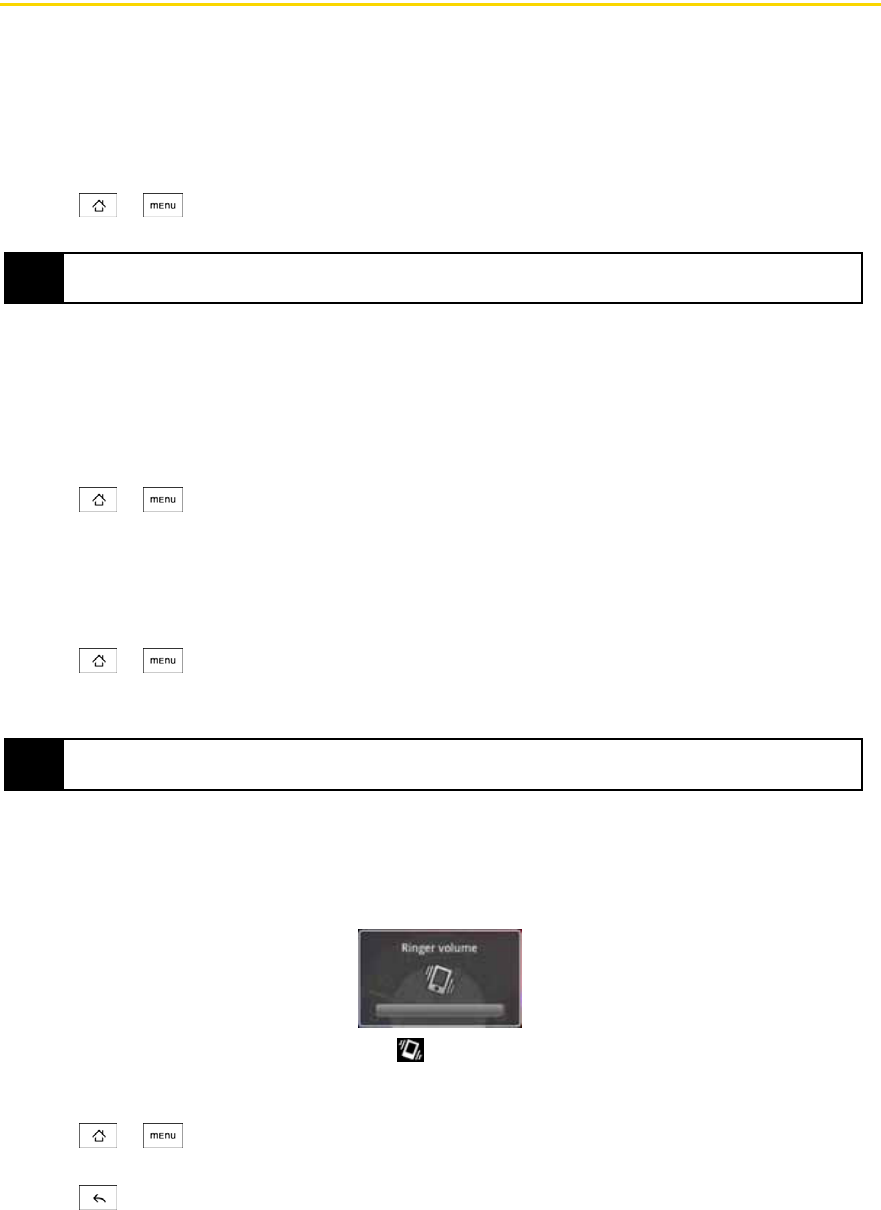
26 2B. Settings
Sound Settings
Phone Ring Tone
Select a default ring tone for incoming calls.
Selecting the default ring tone
Your phone provides a variety of ring tones that you can set as the default ring tone of your phone.
1. Press
> and tap Settings > Sound & display > Phone ringtone.
2. Tap the ring tone you want to use, and then tap OK. The ring tone briefly plays when selected.
Notification Sound
Select a default sound for notifications.
Selecting the default notification sound
Your phone provides a variety of sounds that you can set as the default sound for notifications.
1. Press
> and tap Settings > Sound & display > Notification sound.
2. Tap the sound you want to use, and then tap OK. The sound plays when selected.
Adjusting the Phone’s Volume Settings
Adjust your phone’s volume settings to suit your needs and your environment.
1. Press
> and tap Settings > Sound & display.
2. Tap Ringer volume or Media volume.
3. Drag the volume slider on the screen to adjust the volume and then tap OK.
Vibrate
To set your phone to vibrate instead of making any sounds:
ᮣPress the volume button down in standby mode until you see the image below on the screen.
The phone vibrates and the vibrate mode icon ( ) appears on the status bar.
To set your phone to always vibrate in addition to any ringer settings:
1. Press
> and tap Settings > Sound & display.
2. Select the Phone vibrate check box.
3. Press .
Tip You can use *.wav, *.mid, *.mp3, *.wma, or other types of sound files that you downloaded from the Internet or
copied from your computer as ring tones.
Tip You can adjust the ringer volume in standby mode (or the earpiece volume during a call) by using the volume
button on the left side of your phone.
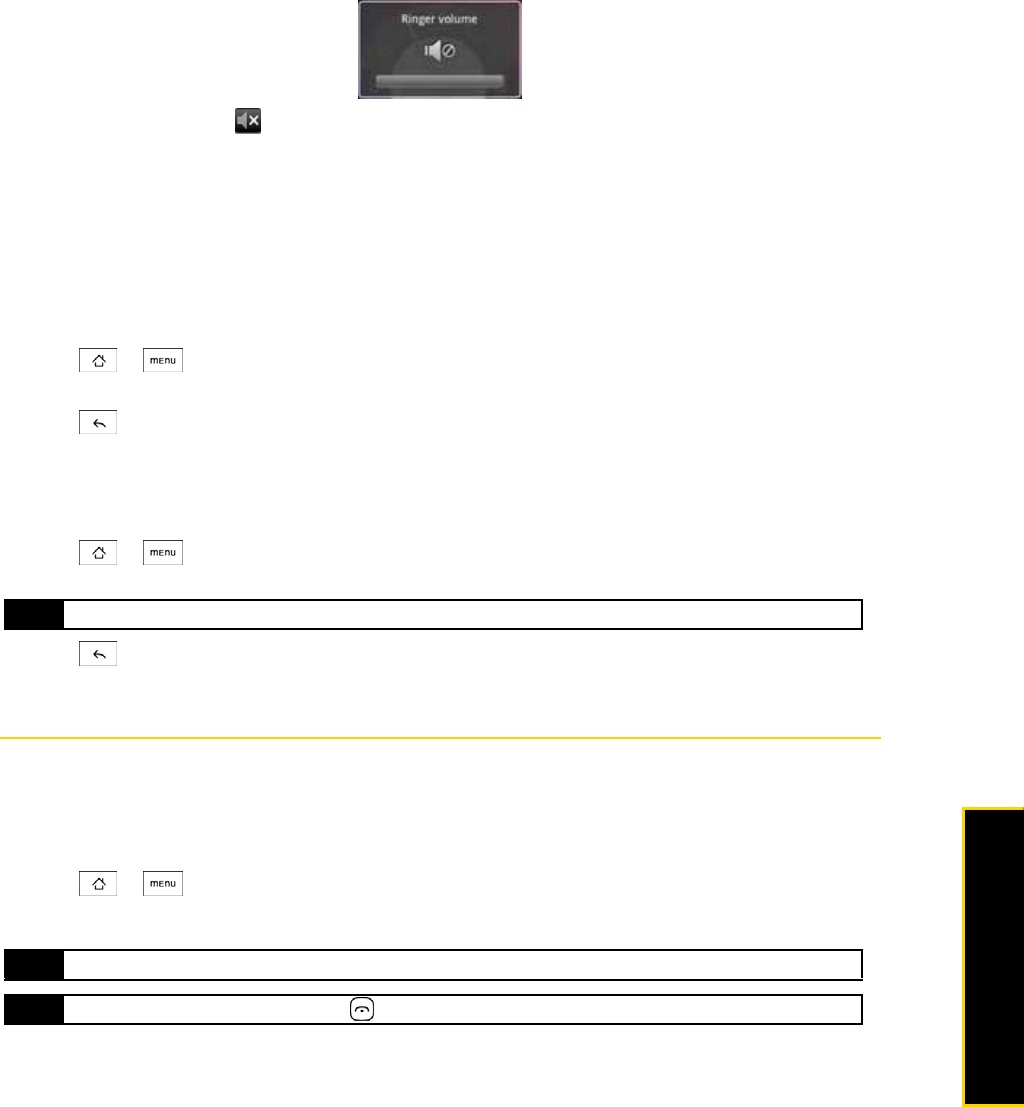
2B. Settings 27
Settings
Silence All
The Silence All option allows you to mute all sounds without turning your phone off.
To activate Silence All:
ᮣPress the volume button down in standby mode until you see the image below on the screen.
The Silence All mode icon ( ) appears on the status bar.
To deactivate Silence All:
ᮣPress the volume button up repeatedly to select a volume level.
Alert Notification
Set your phone to alert you with an audible tone when you are not within the HTC coverage area or when
you make an emergency call.
1. Press
> and tap Settings > Sound & display.
2. Select the Roaming alert check box, Emergency alert check box, or both.
3. Press .
Enabling Touch Tones
You can set the phone to play a sound when you are using the phone pad or tapping the screen.
1. Press
> and tap Settings > Sound & display.
2. Select the Audible touch tones or Audible selection check box(es).
3. Press .
Display Settings
Changing the Screen Timeout Period
After a period of inactivity, the phone screen turns off to conserve battery power. You can set the idle time
before the screen turns off.
1. Press
> and tap Settings > Sound & display > Screen timeout.
2. Tap the time before the screen turns off.
Tip Tap Dialer keypad tone to the tone length.
Note Long screen timeout times reduce the battery’s talk and standby times.
Tip To turn off the screen quickly, press the key.
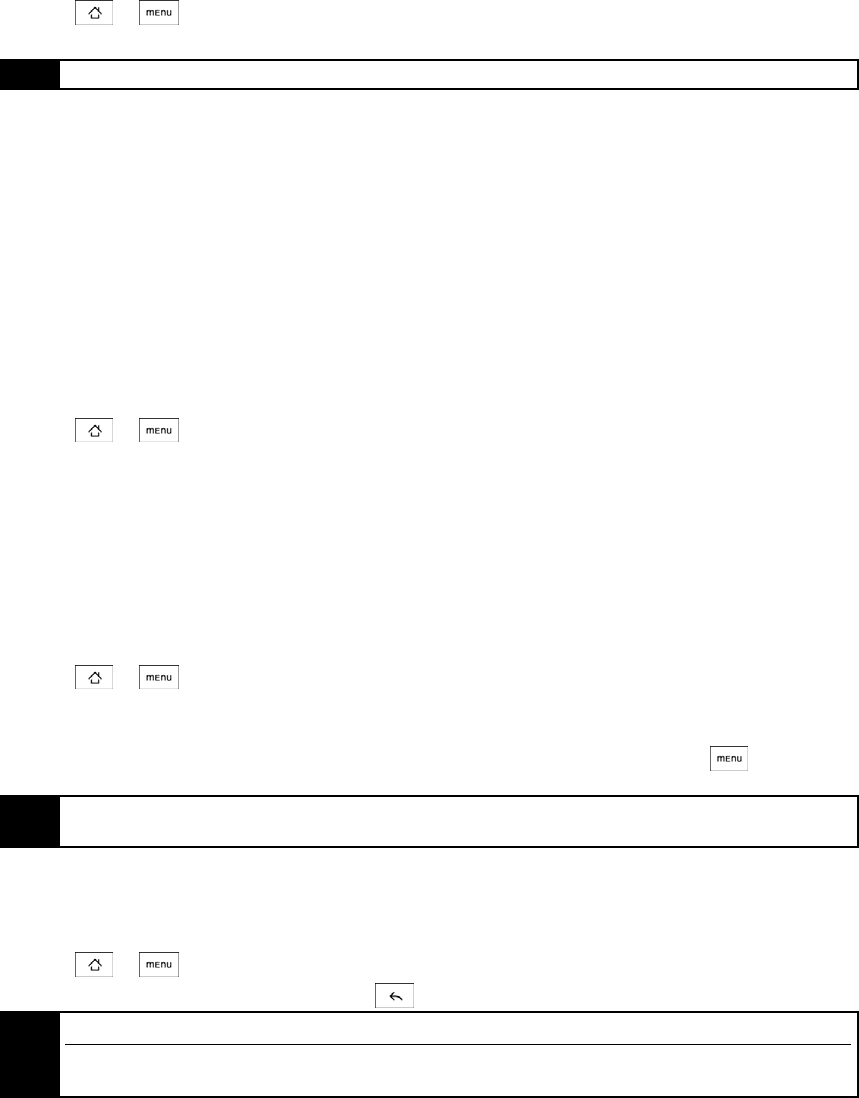
28 2B. Settings
Changing the Display Screen
Choose what you see on the display screen while powering on or off and when in standby mode.
1. Press
> and tap Wallpaper.
2. Tap Home.
3. Tap Albums or Wallpaper gallery.
ⅢTap Albums to use a picture that you have captured using the camera or copied to your phone as a
wallpaper. You can crop the picture before setting it as a wallpaper.
– or –
ⅢTap Wallpaper gallery to use preset phone wallpapers.
4. Tap Save or Set wallpaper.
Adjusting Brightness
By default, the screen brightness automatically adjusts depending on the surrounding lighting conditions.
To manually adjust screen brightness
1. Press
> and tap Settings > Sound & display.
2. Clear the Disable auto backlight check box.
3. Tap Brightness and then drag the slider to adjust the brightness.
4. Tap OK.
Changing Scenes
Customize your phone’s Home screen appearance by selecting a scene to reflect your lifestyle. Scenes are
preset Home screen layouts that you can quickly apply.
ᮣPress > , tap Scenes, and then tap a scene to apply it to the Home screen.
To save a custom scene:
ᮣCustomize the Home screen by changing the wallpaper and adding widgets, press , and then tap
Scenes > Current (unsaved) > Save. Enter the Scene name and then tap Done.
Automatically Changing the Screen Orientation
You can automatically change the screen orientation when the phone is rotated.
1. Press
> and tap Settings > Sound & display.
2. Select the Orientation check box and press .
Note Tap Lock screen to change the Lock screen wallpaper.
Tip You can rename or delete a custom scene in the Settings screen. On the Settings screen, tap Personalize >
Scenes, and then press and hold a custom scene.
Notes Not all application screens support automatic rotation.
The screen orientation automatically changes to landscape mode when you turn the phone counterclockwise 90
degrees. If you turn the phone clockwise 90 degrees, the screen orientation will not change to landscape mode.
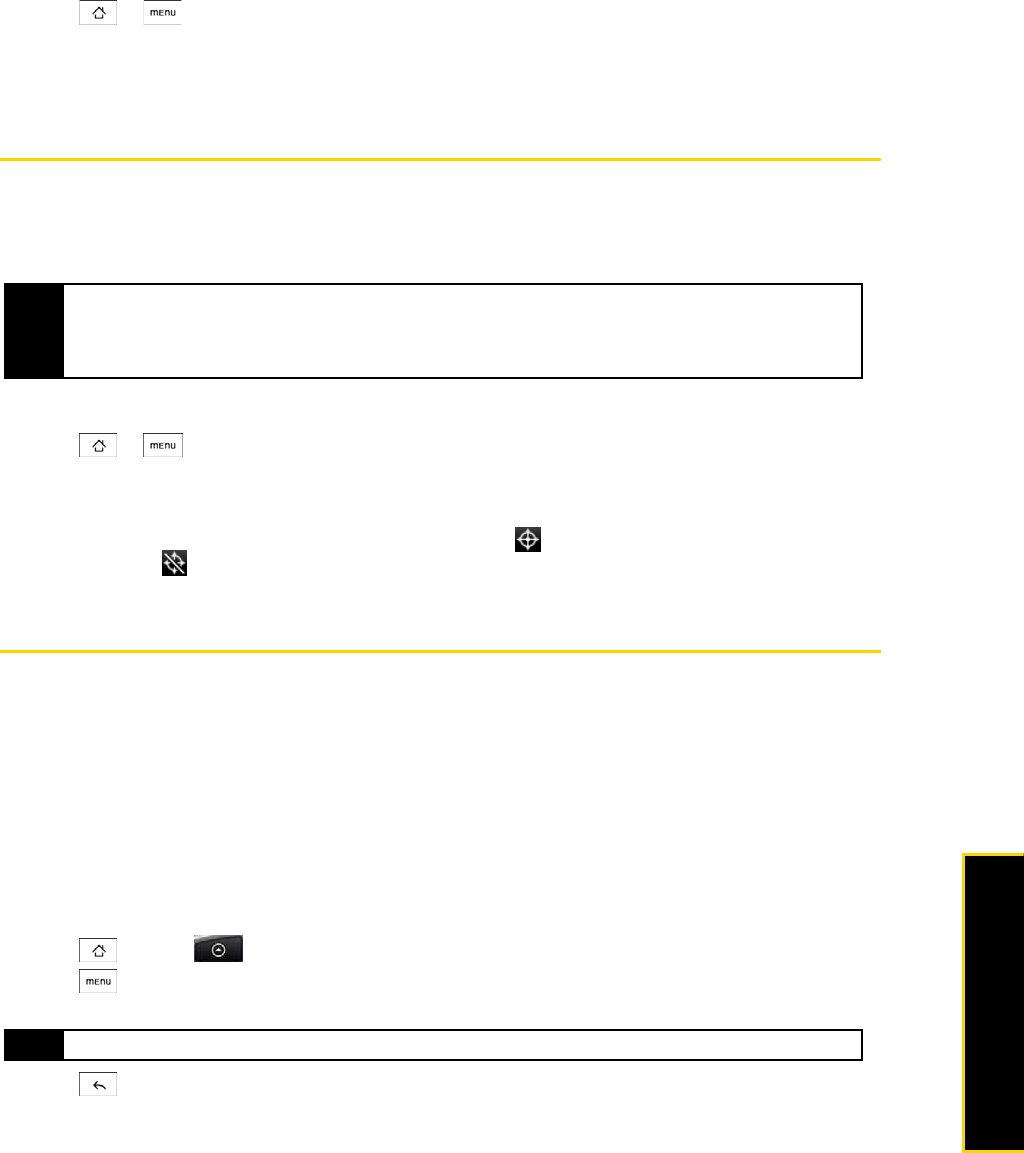
2B. Settings 29
Settings
Recalibrating the Screen
Recalibrate the screen if you feel that the screen orientation does not respond properly to the way you hold
the phone.
1. Press
> and tap Settings > Sound & display > G-Sensor calibration.
2. Place the phone on a flat surface and then tap Calibrate.
3. After the recalibration process, tap OK.
Location Settings
Your phone is equipped with a Location feature for use in connection with location-based services.
The Location feature allows the network to detect your position. Turning Location off will hide your location
from everyone except 911.
To enable your phone’s Location feature:
1. Press
> and tap Settings > Location.
2. Select the Location Setting check box. (The Location disclaimer will be displayed.)
3. Read the disclaimer and tap OK.
When you turn the Location feature on, the phone displays the icon. When you turn Location off, the
phone displays the icon.
Messaging Settings
Your phone’s advanced messaging capabilities let you send and receive many different kinds of text
messages without placing a voice call. (For more information, see “Accessing Messages” on page 93.)
Messaging settings allow you to decide how you would like to be notified of new messages, create a
signature with each sent message, and create your own preset messages.
Setting Message Notification
When you receive a message, your phone notifies you by displaying an icon on your display screen. You
can also choose to vibrate the phone and have the screen flash when you receive a message.
To display a notification and vibrate the phone when you receive a message:
1. Press and tap > Messages.
2. Press and then tap Settings.
3. Scroll down the screen and select the Notifications and Vibrate check boxes.
4. Press .
Note Turning Location on will allow the network to detect your position using GPS technology, making some HTC
applications and services easier to use. Turning Location off will disable the GPS location function for all purposes
except 911, but will not hide your general location based on the cell site serving your call. No application or service
may use your location without your request or permission. GPS-enhanced 911 is not available in all areas.
Tip Tap Select sound to choose a notification sound.
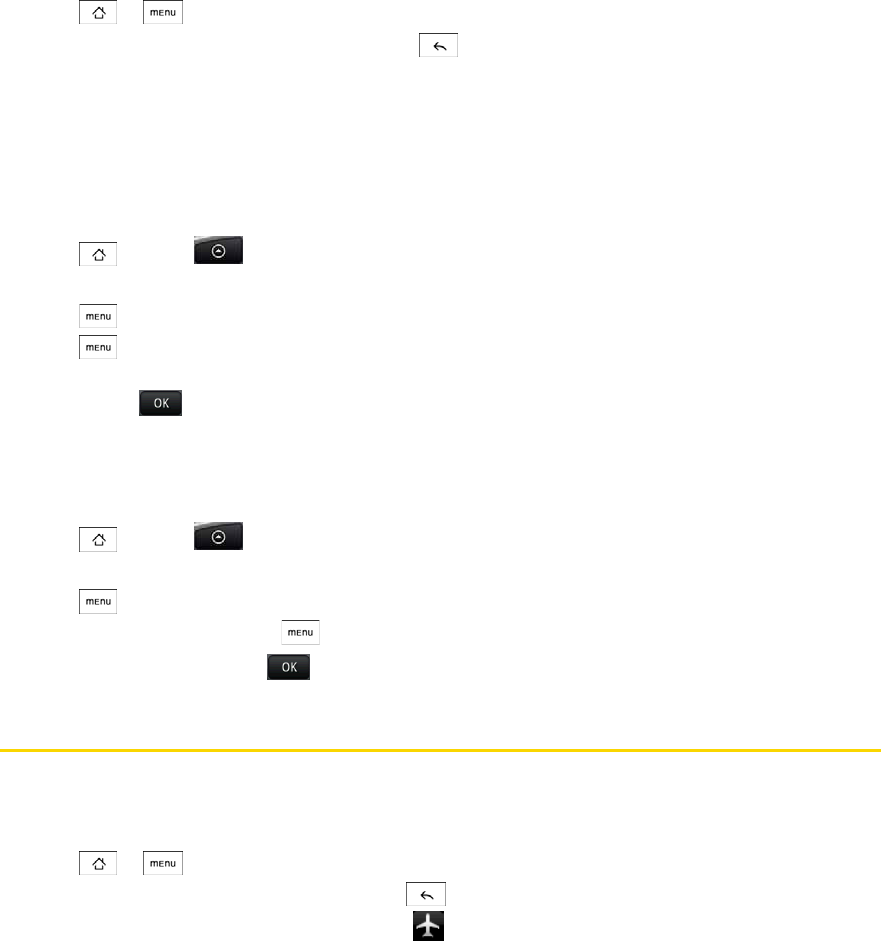
30 2B. Settings
To flash the screen when you receive a message:
1. Press
> and tap Settings > Sound & display > Notification flash.
2. Select the SMS/MMS check box and then press .
Managing Preset Messages
Your phone is loaded with nine preset messages to help make sending text messages easier. Customize or
delete these messages, such as “Where are you?,” “Let’s catch up soon,” and “Just checking in” to suit your
needs, or add your own messages to the list.
To edit or delete a preset message:
1. Press and tap > Messages > Compose message.
2. Tap the text box with the text “Tap to compose.”
3. Press and tap Quick text. (You will see the list of preset messages.)
4. Press and:
Tap Edit, tap the message you want to edit, edit the message (see “Entering Text” on page 17),
and then tap .
– or –
Tap Delete, select the message you want to delete, and tap OK. (Tap Cancel to cancel the deletion.)
To add a new preset message:
1. Press and tap > Messages > Compose message.
2. Tap the text box with the text “Tap to compose.”
3. Press and tap Quick text. (You will see the list of preset messages.)
4. To add a new message, press and tap Insert.
5. Enter your message and tap . (Your new message will be added to the beginning of the list.)
Airplane Mode
Airplane Mode allows you to use many of your phone’s features, such as Albums, camera, and Music, when
you are in an airplane or in any other area where making or receiving calls or data is prohibited. When you
set your phone to Airplane Mode, it cannot send or receive any calls or access online information.
1. Press
> and tap Settings > Wireless controls.
2. Select the Airplane mode check box and press .
While in Airplane Mode, the status bar will display .

2B. Settings 31
Settings
TTY Use With HTC Service
A TTY (teletypewriter, also known as a TDD or Text Telephone) is a telecommunications device that allows
people who are deaf, hard of hearing, or who have speech or language disabilities, to communicate by
telephone.
Your phone is compatible with select TTY devices. Please check with the manufacturer of your TTY device to
ensure that it supports digital wireless transmission. Your phone and TTY device will connect using a special
cable that plugs into your phone’s headset jack. If this cable was not provided with your TTY device, contact
your TTY device manufacturer to purchase the connector cable.
When establishing your HTC service, please call HTC Customer Service using the state Telecommunications
Relay Service (TRS) by first dialing . Then provide the state TRS with
this number: 866-727-4889.
To turn TTY Mode on or off:
1. Press
> and tap Settings > Call settings > Enable TTY support.
2. Tap Full mode, VCO mode, or HCO mode to turn TTY mode on.
– or –
Tap Off to turn TTY mode off.
Security Settings
Protecting Your Phone with a Screen Lock
You can increase the security of your phone by creating a screen unlock pattern. When enabled, you have to
draw the correct unlock pattern on the screen to unlock the phone’s control keys and buttons
and touch screen.
To create and enable the screen unlock pattern:
1. Press
> and tap Settings > Security > Set unlock pattern.
2. Read the information on the screen and tap Next.
3. Study the example pattern on the screen, and then tap Next.
4. Draw the screen unlock pattern by connecting at least four dots in a vertical, horizontal or diagonal
direction. Lift your finger from the screen when finished.
5. The phone records the pattern. Tap Continue.
6. When prompted, draw the screen unlock pattern again, and then tap Confirm.
Note When enabled, TTY mode may impair the audio quality of non-TTY devices connected to the headset jack.
WARNING 911 Emergency Calling
HTC recommends that TTY users make emergency calls by other means, including Telecommunications
Relay Services (TRS), analog cellular, and landline communications. Wireless TTY calls to 911 may be
corrupted when received by public safety answering points (PSAPs), rendering some communications
unintelligible. The problem encountered appears related to TTY equipment or software used by PSAPs.
This matter has been brought to the attention of the FCC, and the wireless industry and the PSAP
community are currently working to resolve this.
Note You must slide your finger on the screen to create the pattern and not tap individual dots.
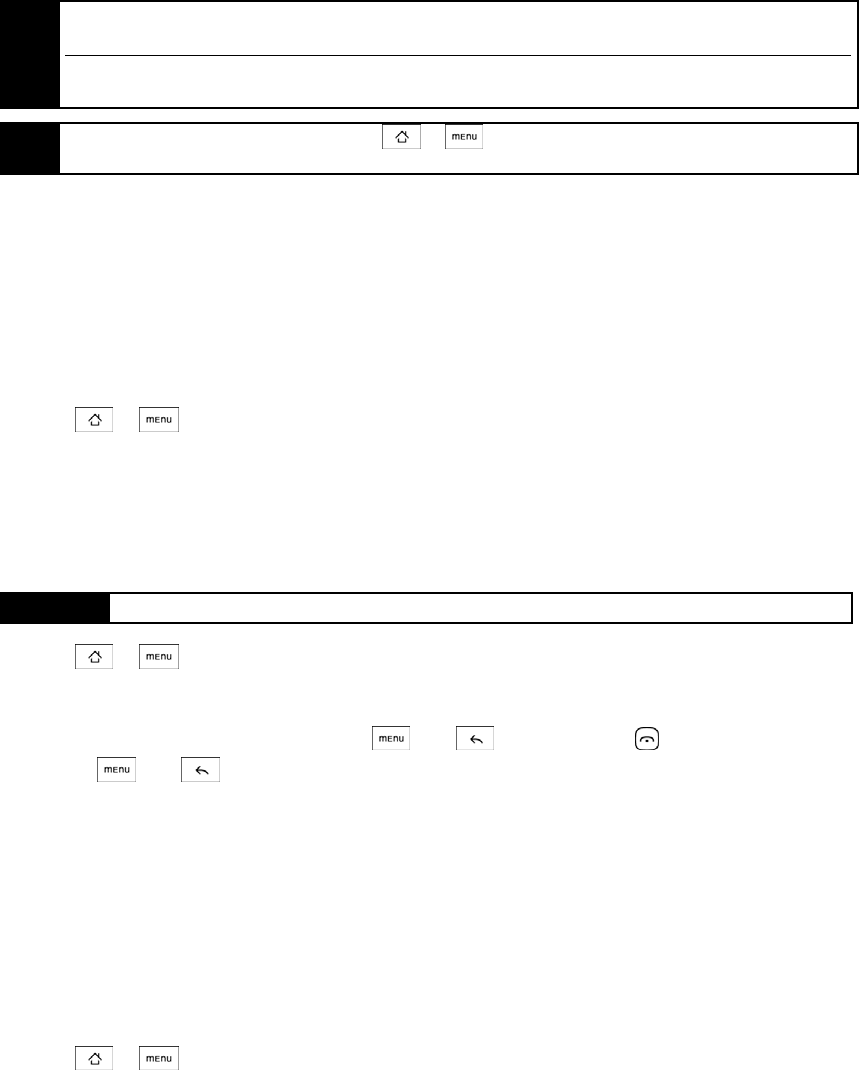
32 2B. Settings
When you fail to draw the correct unlock pattern on the screen after five attempts, you will be prompted to
wait for 30 seconds before you can try again.
Setting Firmware Download Preferences
Firmware updates may be available for your phone. You can set the phone to automatically download the
updates, prompt you before downloading, or never download updates.
To set download preferences:
1. Press
> and tap Settings > Security > Firmware download.
2. Tap Auto download, Prompt before download, or Never.
Resetting Your Phone
Resetting the phone deletes all data, including downloaded applications, and resets the phone back to its
initial state—the state before you turned on the phone for the first time.
ᮣPress > and tap Settings > Security > Factory data reset > Reset phone > Erase everything.
To reset the phone using the phone keys:
1. With the phone turned off, press and hold and , and then press .
2. Release and , and then press the trackball. (All data will be deleted from the phone.)
Security Features for Data Services
Enabling and Disabling Data Services
You can disable data services without turning off your phone; however, you will not have access to all data
services, including Web and messaging. Disabling data services will avoid any charges associated with
these services. While signed out, you can still place or receive phone calls, check voicemail, and use other
voice services. You may enable data services again at any time.
To enable or disable data services:
1. Press
> and tap Settings > Wireless controls.
2. Select the Mobile network check box to enable data services.
– or –
Clear the Mobile network check box to disable data services
Tip Clear the Use visible pattern check box if you do not want the unlock pattern to display on the screen when you
unlock it.
If you want to disable the unlock screen pattern, clear the Require pattern check box. You will be prompted to
draw the unlock screen pattern.
Note To change your unlock screen pattern, press > , and then tap Settings > Security > Change
unlock pattern.
Important Make sure to back up important data you have on the phone before you reset your phone.
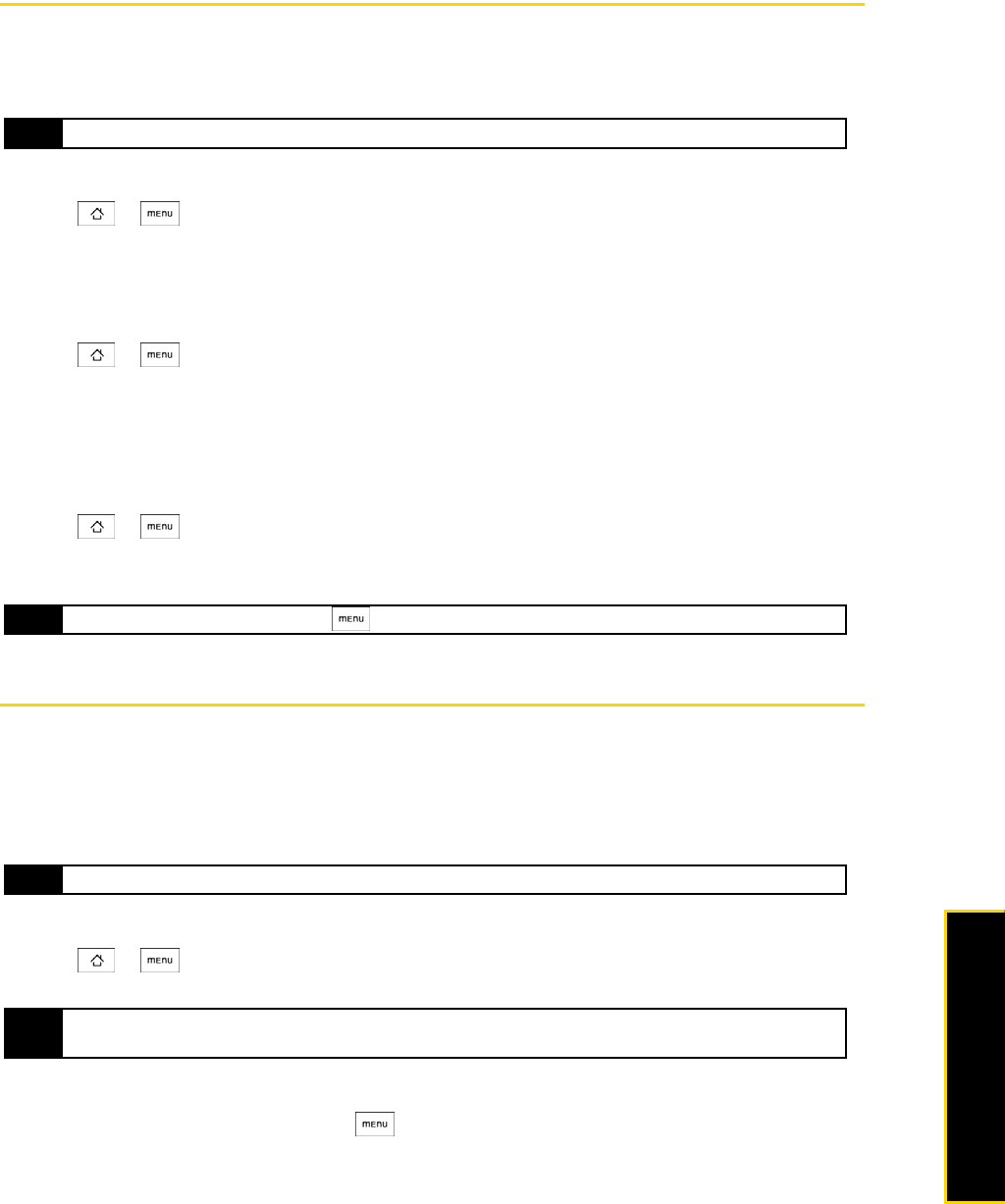
2B. Settings 33
Settings
Social Network Settings
Logging In or Out of Your Social Network Accounts
Quickly log in or out from your Facebook, Flickr, or Twitter account.
To log in to your Facebook or Twitter account:
1. Press
> and tap Settings > Social network.
2. Tap Facebook or Twitter.
3. Enter the email address and password and tap Log in.
To log in to your Flickr account:
1. Press
> and tap Settings > Social network.
2. Tap Flickr.
3. Enter your Yahoo! ID and password and tap Sign in.
4. Read the authorization message from Yahoo! and tap OK, I’LL AUTHORIZE IT.
To log out from a social network account:
1. Press
> and tap Settings > Social network.
2. Tap the account you want to log out from.
3. In the Warning message, tap Yes.
Data Synchronization Settings
Synchronizing Google Apps
Your phone’s Google Apps™, such as Gmail, Calendar, and Contacts, give you access to the same personal
information (emails, events, and contacts) that you add, view, and edit on your computer using Gmail or
Calendar. Synchronize the Google Apps you want to keep information up-to-date.
To select which Google Apps to synchronize:
1. Press
> and tap Settings > Data synchronization > Google.
2. Select the Google Apps you want to synchronize.
To stop synchronization:
ᮣWhen the phone is synchronizing, press and tap Cancel sync to stop synchronization.
Note You need to have an existing Facebook, Flickr, or Twitter account.
Tip On the Social Networks screen, press and tap Log out all to log out from all the social network accounts.
Note You need to be signed in to your Google account to synchronize Google Apps.
Tip Select the Auto-sync check box to automatically synchronize all applications. When the Auto-sync check box is
cleared, you can synchronize individual applications manually by selecting their respective check boxes.
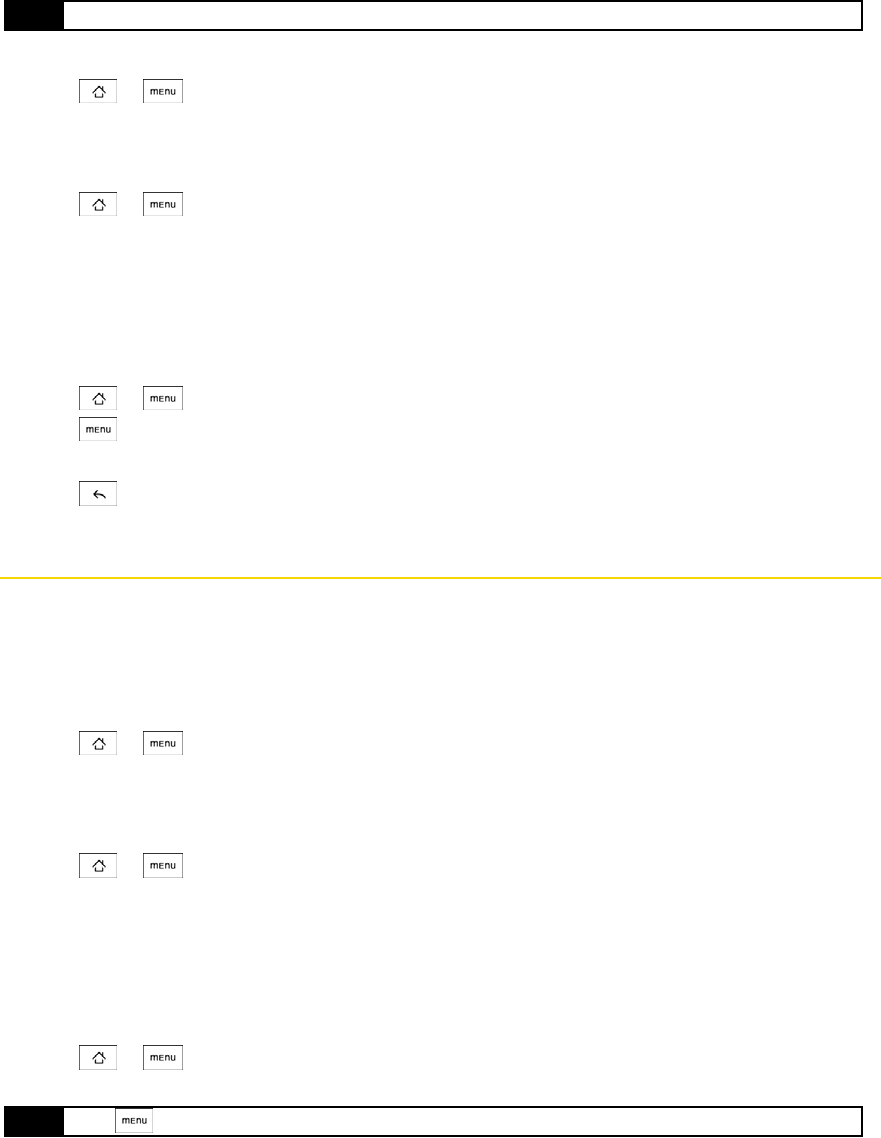
34 2B. Settings
Synchronizing Exchange ActiveSync
You can synchronize your phone with your company’s Microsoft Exchange Server to let you access your
your phone’s Exchange Server account’s email, contacts, and calendar events.
To select which Exchange ActiveSync items to synchronize:
1. Press
> and tap Settings > Data synchronization > Exchange ActiveSync.
2. Select the Exchange ActiveSync items you want to synchronize.
To change the synchronization schedule:
1. Press
> and tap Settings > Data synchronization > Exchange ActiveSync > Schedule.
2. Tap the time interval the phone will check for new data.
To manually start synchronization:
ᮣOn the Microsoft Exchange ActiveSync screen, tap Sync now.
To change account settings:
1. Press
> and tap Settings > Data synchronization > Exchange ActiveSync.
2. Press and tap Settings.
3. Change the general settings and mail and calendar settings according to your preference.
4. Press .
Application Settings
Allowing Third-Party Applications to be Installed
By default, you can only install applications and games downloaded from Android Market™.
To install third-party applications on the phone:
ᮣPress > , tap Settings > Applications, and then select the Unknown sources check box.
To uninstall third-party applications on the phone:
You cannot uninstall applications that are preinstalled on the phone.
1. Press
> and tap Settings > Applications > Manage applications.
2. On the Manage applications screen, tap the application you want to uninstall.
3. On the Application info screen, tap Uninstall.
Clearing Application Cache and Data
Free up storage space and phone memory by deleting application cache and data.
1. Press
> and tap Settings > Applications > Manage applications.
2. In the Manage applications list, tap the application whose cache or data you want to delete.
3. In the Application info screen, tap Clear data or Clear cache.
Note You need to have an Exchange ActiveSync account set up on your phone. See “Email” on page 93.
Tip Press to bring up sort and filter options.

2B. Settings 35
Settings
Date & Time Settings
Setting Local Date, Time Zone, and Time
By default, your phone automatically uses the network-provided date, time zone, and time. You can set the
date, time zone, and time manually.
1. Press
> and tap Settings > Date & time.
2. Clear the Automatic check box.
3. Tap Set date. On the Change date window, adjust the date by scrolling the date wheel. Tap Done when
finished.
4. Tap Select time zone, and then select the time zone in the list. Scroll down the list to view more time zones.
5. Tap Set time. On the time window, adjust the time by scrolling the time wheel. Tap Done when finished.
6. Select the Use 24-hour format check box to toggle between using a 12-hour or 24-hour format.
7. Tap Select date format, and then select how you want dates to display on your phone. The selected date
format also applies to the date displayed in the Alarm Clock.
Locale & Text Settings
Setting Onscreen Keyboard Settings
ᮣPress > and tap Settings > Locale & text > Touch Input. (See “Adjusting Touch Input Settings” on
page 20 for details.)
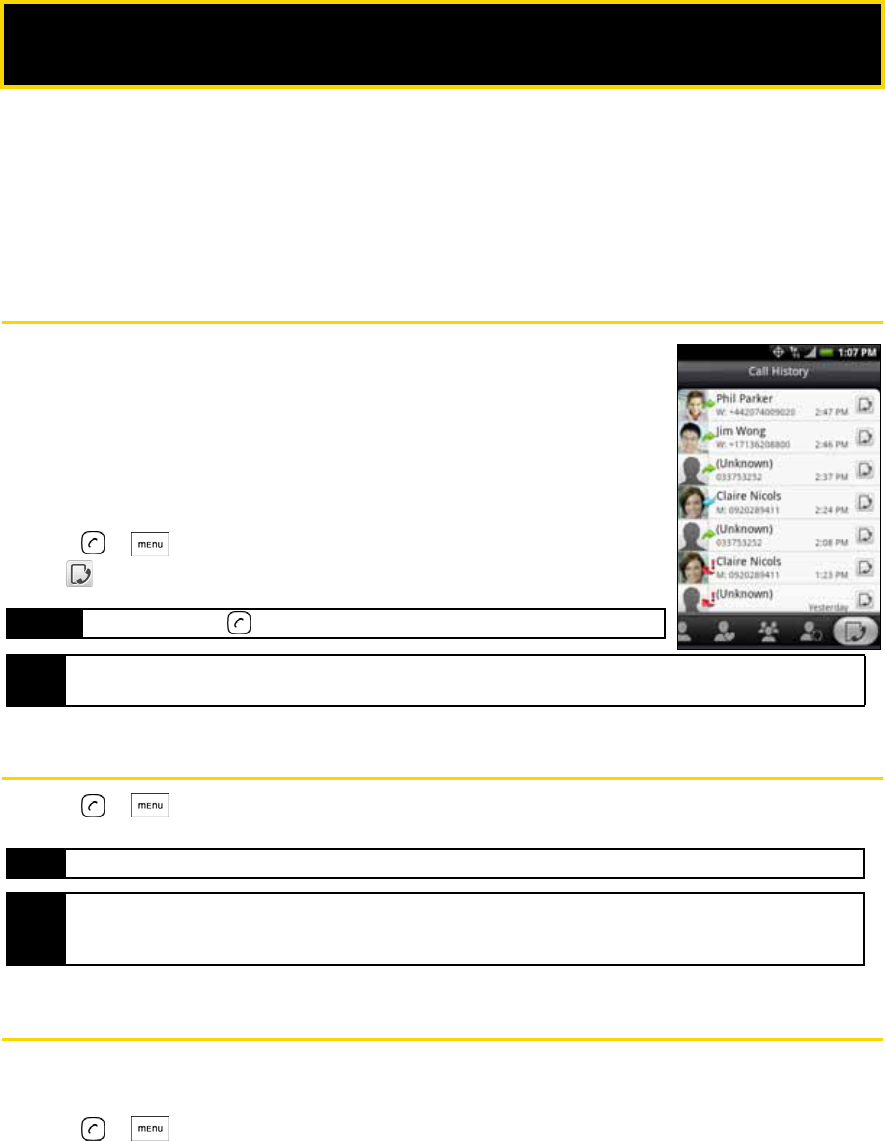
36 2C. History
ࡗViewing History (page 36)
ࡗMaking a Call From History (page 36)
ࡗSaving a Number From History (page 36)
ࡗPrepending a Number From History (page 37)
ࡗErasing History (page 37)
Viewing History
History is a list of phone numbers (or People entries) for calls you placed,
accepted, or missed. History makes redialing a number fast and easy. It is
continually updated as your phone automatically adds new numbers to the
beginning of the list.
Each entry contains the phone number (if it is available) and People entry name
(if the number is in People). Duplicate calls (same number and type of call) may
only appear once on the list.
1. Press
> and tap Call history.
2. Tap at the right side of a number of contact to view the call history for that
number or contact.
Making a Call From History
1. Press > and tap Call history.
2. Tap an entry on the Call history list to place a call to that entry.
Saving a Number From History
If the phone number of a person who called is not in People, you can choose to save the number after you
hang up.
1. Press
> and tap Call history.
2. Press and hold the received call and then tap Save to contacts on the options menu.
3. The phone number is automatically added to the Mobile box in the Number section. Enter the name and
other contact information.
2C. History
Shortcut You can also press from standby mode to display your recent calls.
Note History records only calls that occur while the phone is turned on. If a call is received while your phone is turned
off, it will not be included in history.
Note You cannot make calls from History to entries identified as No ID or Restricted.
Tip Press and hold an entry in the Call history list to open the options menu where you can select to view the contact
information (if number is stored in People), edit the number before you redial, send a text message, or delete the
entry from the Call history list.
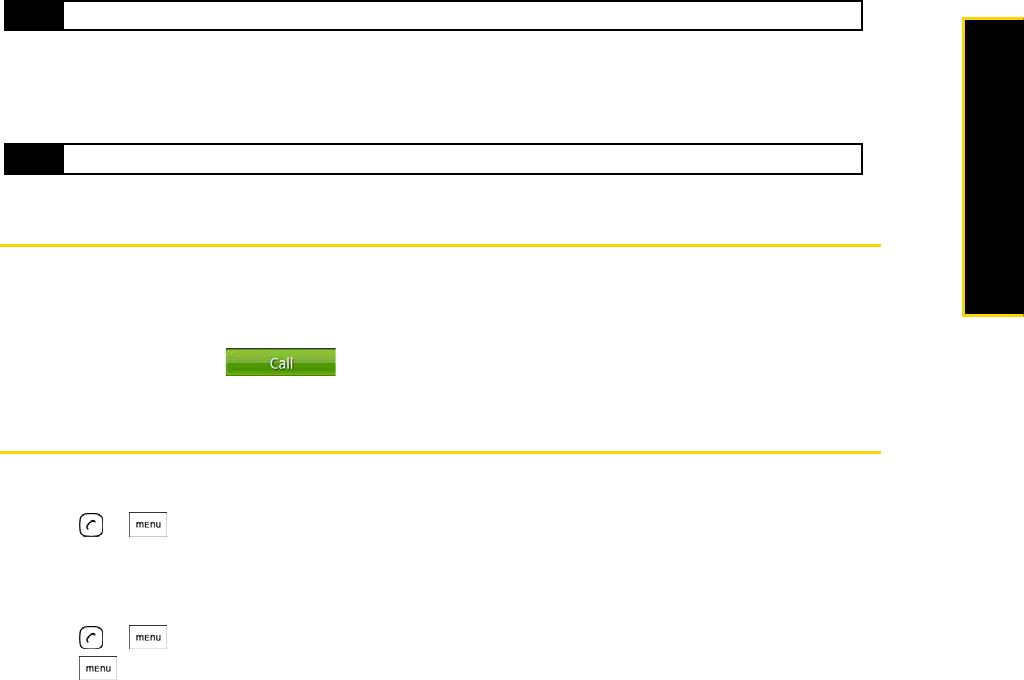
2C. History 37
History
4. Scroll down the screen and tap Save.
After you have saved the number, your phone displays the new People entry. (See “Displaying an Entry in
People” on page 40.)
Prepending a Number From History
If you need to make a call from History and you are outside your local area code, you can add the
appropriate prefix by prepending the number.
1. Press and hold the entry you want to call and tap Edit number before calling.
2. Enter the prefix and tap to call the number.
Erasing History
To erase a History entry:
1. Press
> and tap Call history.
2. Press and hold the entry you want to delete and tap Delete from call history.
To erase all History entries:
1. Press
> and tap Call history.
2. Press and tap Delete all.
Tip To store the number as another type (for example, home number), tap the Mobile button.
Note You cannot save phone numbers already in People or from calls identified as No ID or Restricted.
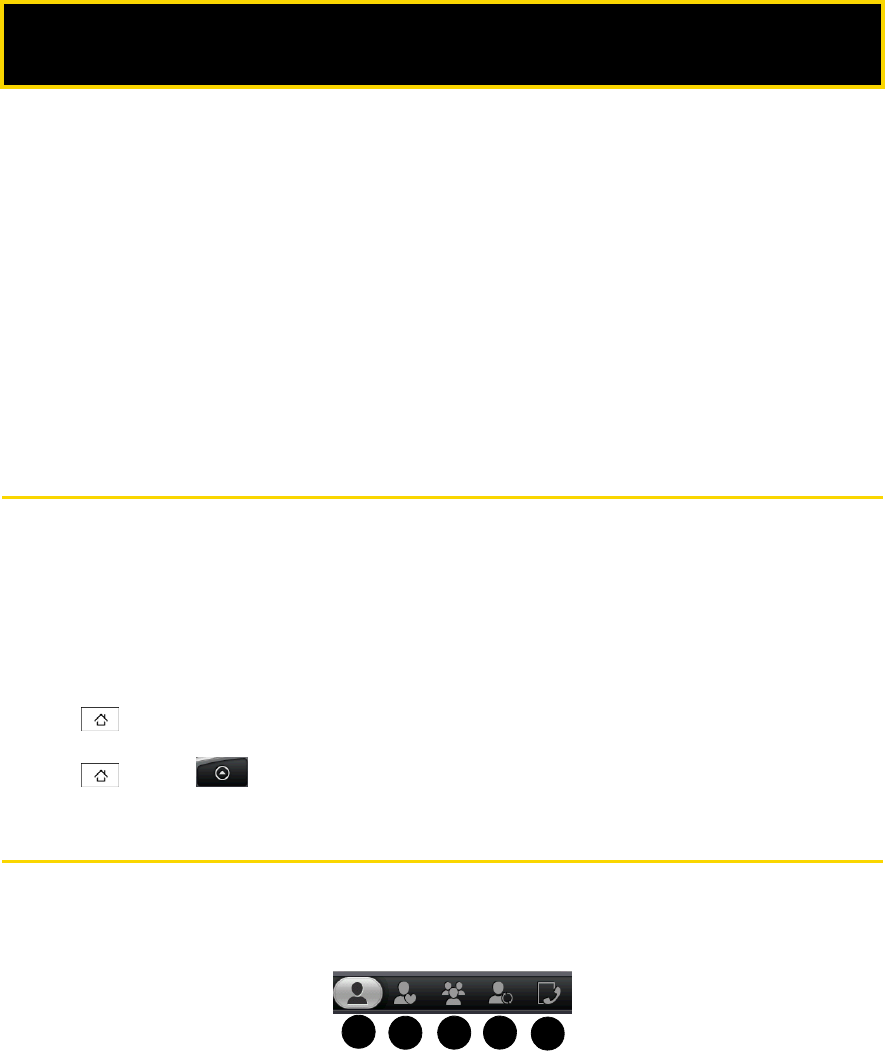
38 2D. People
ࡗAbout People (page 38)
ࡗUsing the People Screen (page 38)
ࡗAdding a New People Entry (page 40)
ࡗSaving a Phone Number (page 40)
ࡗEditing an Entry in People (page 40)
ࡗAssigning Speed Dial Numbers (page 42)
ࡗFinding Contacts Entries (page 42)
ࡗUsing Favorites (page 43)
ࡗWorking with Groups (page 43)
ࡗUsing Facebook and Flickr in People (page 45)
ࡗUsing the Contact Details Screen (page 44)
About People
In People, you can easily manage your communications with contacts using phone, messaging, and email.
You can also view updates on their Facebook and Flickr accounts, as well as updating your own Facebook
status.
If you are synchronizing contacts with your Google account, with your computer, or with an Exchange Server,
any contacts stored in those accounts are displayed in People.
To open People:
ᮣPress and tap People.
– or –
Press and tap > People. (You may need to scroll down the screen to see the icon.)
Using the People Screen
The People screen gives you easy access to all your contacts, as well as even faster access to the people
and groups of people you contact most often.
The People screen has the following tabs:
1. All gives you access to all your phone’s contacts, including Google contacts, Exchange ActiveSync
contacts, and Phone contacts. You can also use this tab to open or update My contact card. For more
information, see “Setting Up Your My Contact Card” in this chapter.
2. Favorites gives you a list of favorite contacts which you can access quickly. (For more information, see
“Using Favorites” for details.)
2D. People
12345
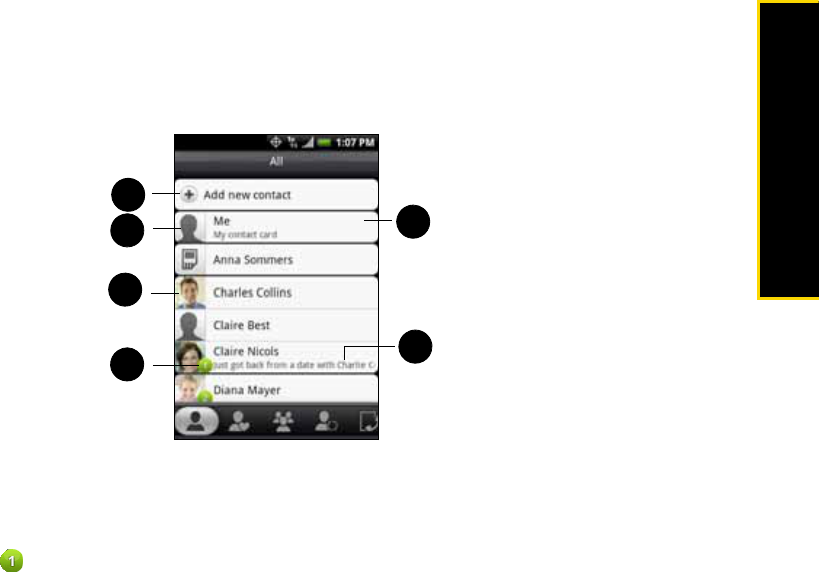
2D. People 39
People
3. Groups lets you assign contacts to groups so you can easily send an SMS, MMS, or email message to a
whole group. (For more information, see “Working with Groups” for details.)
4. Updates and events lets you assign contacts to groups so you can easily send an SMS, MMS, or email
message to a whole group. (For more information, see “Working with Groups” for details.)
5. Call history lists all your dialed numbers and received and missed calls. (See “History” on page 36 for
details.)
Setting Up Your My Contact Card
My contact card provides a convenient way to store your personal contact information so that you can easily
send it using MMS. In addition, you can log in to your Facebook and Flickr accounts to receive notifications
of your contacts’ updates and events. (For more information, see “Using Facebook and Flickr in People” for
details.)
To set up My contact card:
1. On the All tab of the People screen, tap Me, and then tap Tap here to edit contact.
2. Enter your name and contact details.
3. To log in to Facebook or Flickr so that you can receive friends’ notifications, tap Facebook or Flickr and
enter your login information.
4. Tap Save.
Viewing and Managing Contacts
The All tab of the People screen shows all your contacts, including Google contacts, Exchange ActiveSync
contacts, and Phone contacts.
1. Create a new contact.
2. Edit or update My Contact Card.
3. Tap a contact to open the contact details for that contact.
4. The green ball icon ( ) appears when the contact:
ⅢHas sent you a new text or email message, or tried to call you but you missed the call.
ⅢHas updated his or her Facebook profile or has added photos on Flickr or Facebook.
ⅢHas upcoming Facebook events.
5. The Facebook status appears when you link the contact to his or her Facebook account.
6. Displays the type of contact.
2
3
1
45
6
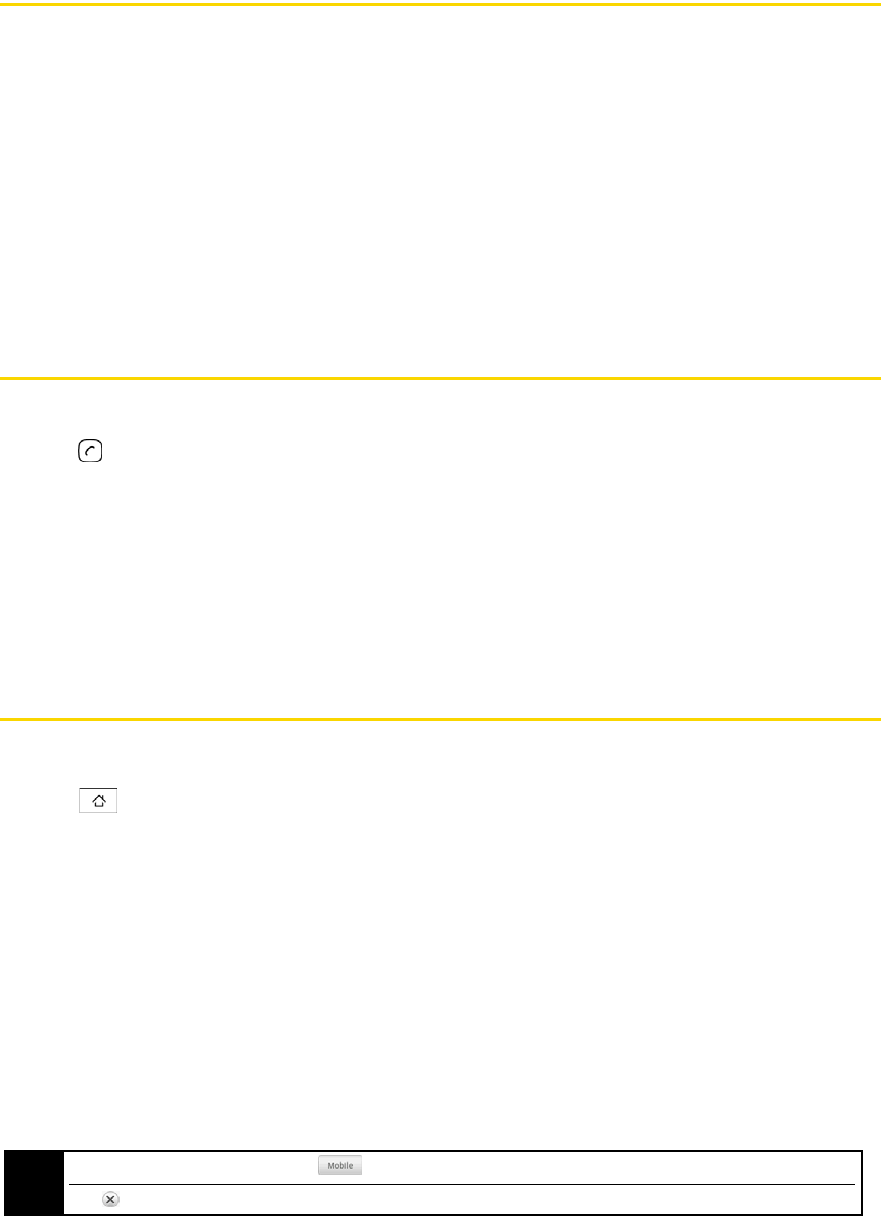
40 2D. People
Adding a New People Entry
1. On the All tab, tap Add new contact.
2. Select the Contact type, for example Phone or Google. This determines which account the contact will sync
with.
3. For Exchange or Phone contact type, tap the Name box, enter the first and last name of the contact, and
choose the order in which to display the names. Tap OK.
– or –
For Google contact type, tap the Name box and then enter the name.
4. Enter the contact information in the boxes provided.
5. Scroll to the bottom of the screen and tap Save.
After saving the number, your phone displays the new entry.
Saving a Phone Number
To save a number from standby mode:
1. Press .
2. Enter the phone number by tapping the keys on the keypad.
3. Tap Save to People. (This button appears after tapping six digits.)
4. Tap Create new contact or Save to existing contact.
5. Use the keyboard to enter the new contact name and tap Save to save the new entry.
– or –
Tap an existing contact name and tap Save to save the new number.
Editing an Entry in People
Displaying an Entry in People
ᮣPress , tap People, and then tap an entry.
Adding a Number to an Entry in People
1. Display an entry in People. (See “Displaying an Entry in People” for details.)
2. Scroll down the screen and tap Add > Phone.
3. Tap the type of phone number you want to add. (For example, Home or Work.)
4. Enter the phone number and tap Save. (Scroll down the screen to see the Save button.)
Editing an Entry in People
1. Display an entry in People. (See “Displaying an Entry in People” for details.)
2. Under the Number section, tap the number you want to edit.
3. Edit the number using the keypad.
4. Tap Save. (Scroll down the screen to see the Save button.)
Tip Tap the Number type (for example, ), to change the type of number.
Tap at the right side of a number to delete it.

2D. People 41
People
Selecting a Ringer Type for an Entry
Assign a ringer type to an entry in People so you can identify the caller by the ringer type. (See “Sound
Settings” on page 26.)
1. Display an entry in People. (See “Displaying an Entry in People” for details.)
2. Scroll down the screen and tap the list menu under Ringtone.
3. Select a ring tone (the ring tone plays back) from the menu and tap OK.
4. Tap Save. (Scroll down the screen to see the Save button.)
Assigning a Picture to an Entry
Assign a picture to display each time a certain contact calls you.
1. Display an entry in People. (See “Displaying an Entry in People” for details.)
2. Tap at the top-left corner of the screen.
3. Tap Albums or Camera.
ⅢIf you selected Albums, select an album to find the picture, tap the picture you want to use, crop the
picture, and tap Save.
ⅢIf you selected Camera, the camera will launch and you will use it to take a new picture. (See “Camera
and Multimedia” on page 60.)
4. Tap Save. (Scroll down the screen to see the Save button.)
Adding an Email Address to an Entry
1. Display an entry in People. (See “Displaying an Entry in People” for details.)
2. Under the Email section, tap the box after .
3. Enter the email address and tap Save. (Scroll down the screen to see the Save button.)
Adding Additional Information to an Entry
You can add additional information to an entry in People.
1. Display an entry in People. (See “Displaying an Entry in People” for details.)
2. Scroll down the screen and tap Add.
3. Tap the type of information you want to add such as Phone, Email, or Postal address.
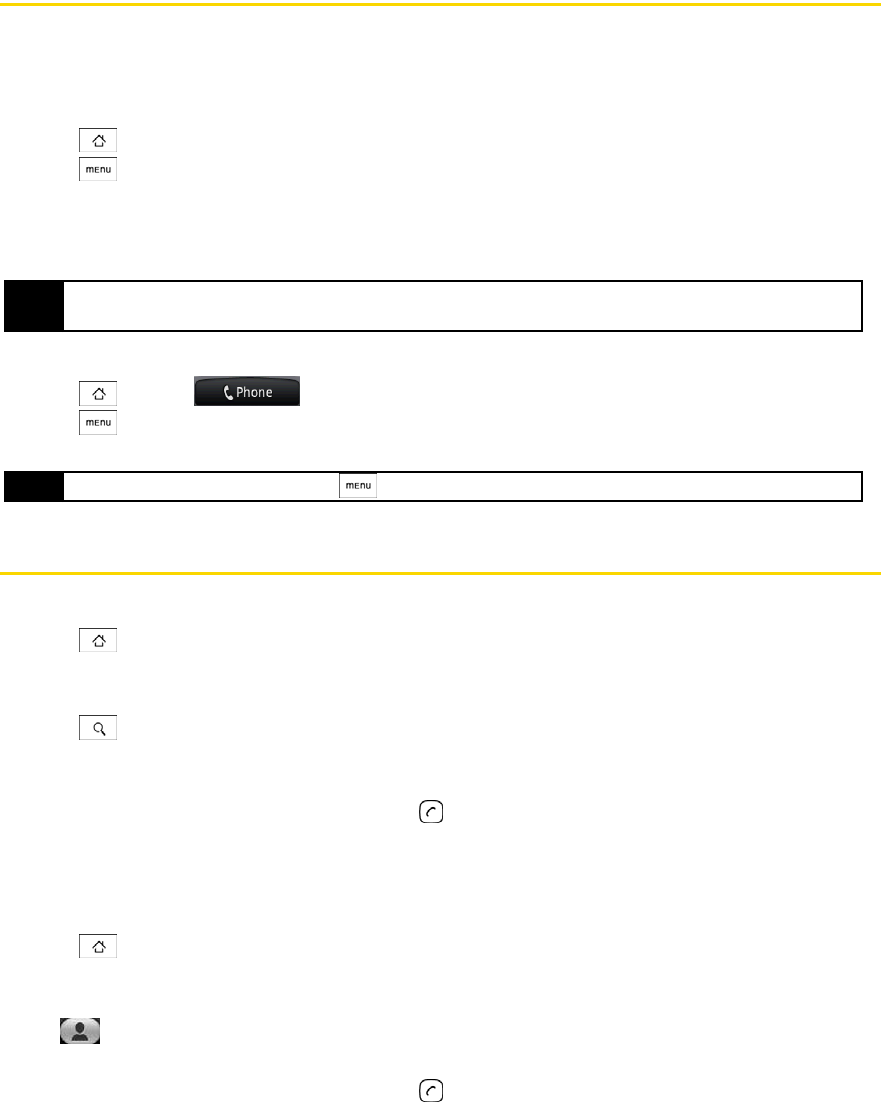
42 2D. People
Assigning Speed Dial Numbers
Your phone can store up to nine phone numbers in speed dial locations. (For details on how to make calls
using speed dial numbers, see “Speed Dialing” on page 16.)
To assign a speed dial number to People entry:
1. Press , tap
People, and then tap an entry in People.
2. Press and tap Set speed dial.
3. Tap the list menu under Number to select a number from the contact to assign to speed dial.
4. Tap the list menu under Location to assign the number to a speed dial location.
5. Tap Save.
Finding Speed Dial Numbers
1. Press and tap .
2. Press and tap Speed dial.
3. Tap a speed dial entry to call the contact.
Finding Contacts Entries
Finding Contacts by Name
1. Press and tap People.
2. Scroll through all the entries.
– or –
Press and enter the first letter or letters of a name (such as “dav” for “Dave”). (The more letters you
enter, the more your search narrows.)
3. To display an entry, tap an entry.
4. To dial the entry’s default phone number, press .
– or –
To call another number, tap the number you want to call under Details.
Finding Group Entries
1. Press and tap People.
2. Scroll to the Groups tab.
3. Scroll through the group titles. To display entries belonging to a group, tap the group name and slide to
the tab.
4. To display an entry within the group, tap the entry.
5. To dial the entry’s default phone number, press .
See “Working with Groups” for more details.
Note If you assign a number to an already in-use speed dial location, the new phone number will automatically replace
the previous speed dial assignment.
Tip While on the Speed dial screen, press and tap Add to add new speed dial entries from People.
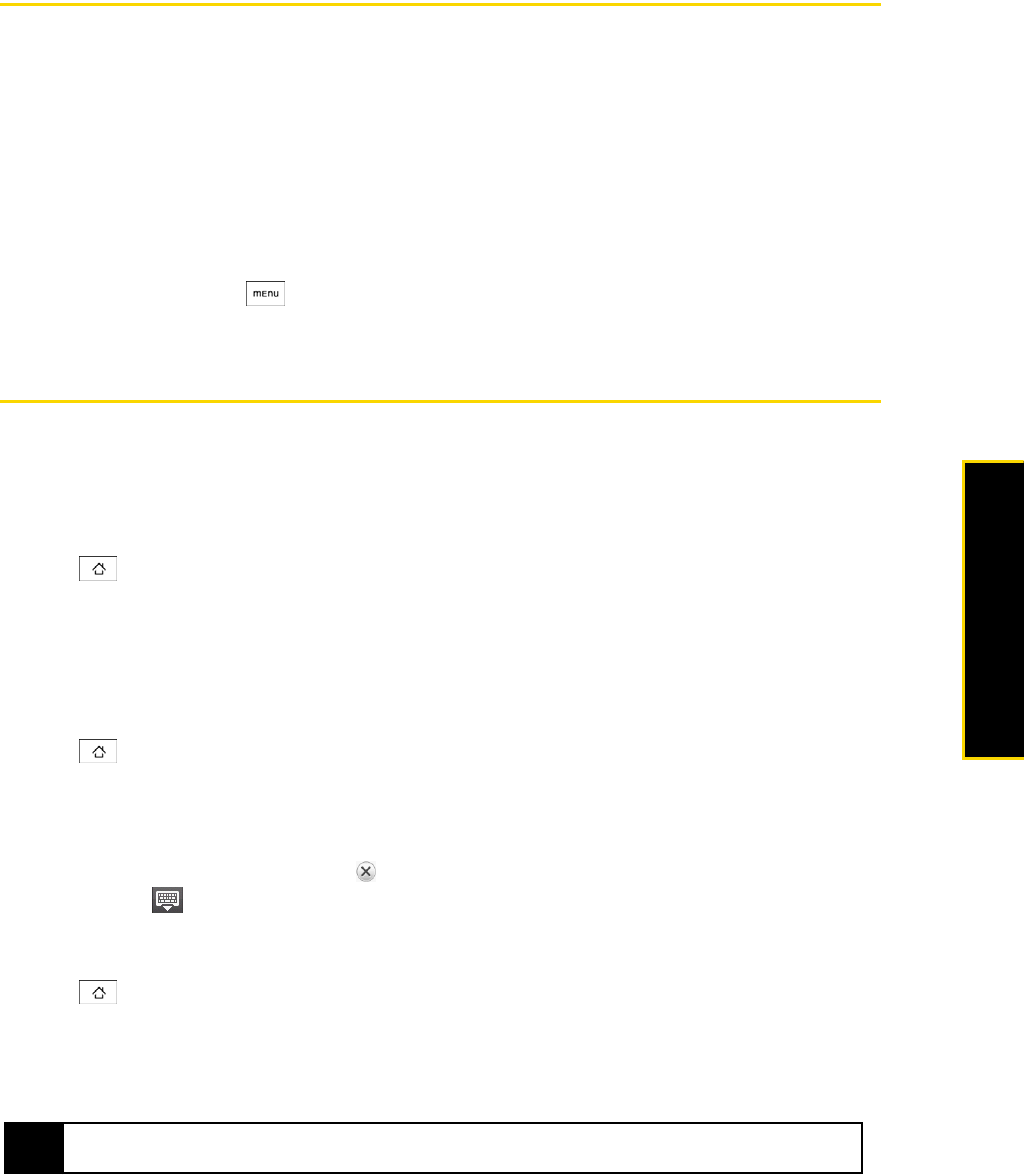
2D. People 43
People
Using Favorites
On the Favorites tab, add the people you interact with most frequently, so that you can always access them
quickly.
To add a favorite contact:
1. On the Favorites tab, tap Add favorite people, and then tap the contact you want to add.
2. Tap a default communication method for the selected contact. When you have added the People widget
to the Home screen, you can tap a favorite contact to get in tap with him or her directly using this method.
For more information, see “Home Screen” on page 21 for more information about adding widgets.
To remove a favorite contact:
ᮣOn the Favorites tab, press , tap Remove favorite, tap the contact you want to remove,
and then tap Done.
Working with Groups
On the Groups tab, you can assign contacts to groups so you can easily send SMS, MMS, or email
messages to a whole group. You can also sync your phone’s groups with the groups in your Google
account, accessible using your computer’s Web browser.
Creating a Group and Adding Contacts
1. Press and tap People > Groups tab > Add new group.
2. Enter a name for the group and tap Add contact to group.
3. Select the contacts you want in the group. You can use the search bar to search for contacts quickly.
4. Tap Done.
Adding or Removing Contacts From a Group
1. Press and tap People > Groups tab
2. Press and hold a group and tap Edit group.
3. To add contacts to the group, tap Add contact to group, tap the contacts you want to add, and tap Done.
– or –
To remove contacts from the group, tap at the right side of the contact you want to remove.
4. Tap Save. (Tap to close the keyboard if you do not see the Save button.)
Sending an SMS or Picture Message to All Contacts in a Group
1. Press and tap People > Groups tab
2. Press and hold a group and tap Send group message. (The members of the group are automatically added
to the recipient list.)
3. Tap the “Tap to compose” box and enter your message.
4. Tap Send.
Tip You will be charged per group member for each message sent. For example, if you send a message to a group of
five people, you will be charged for five messages.
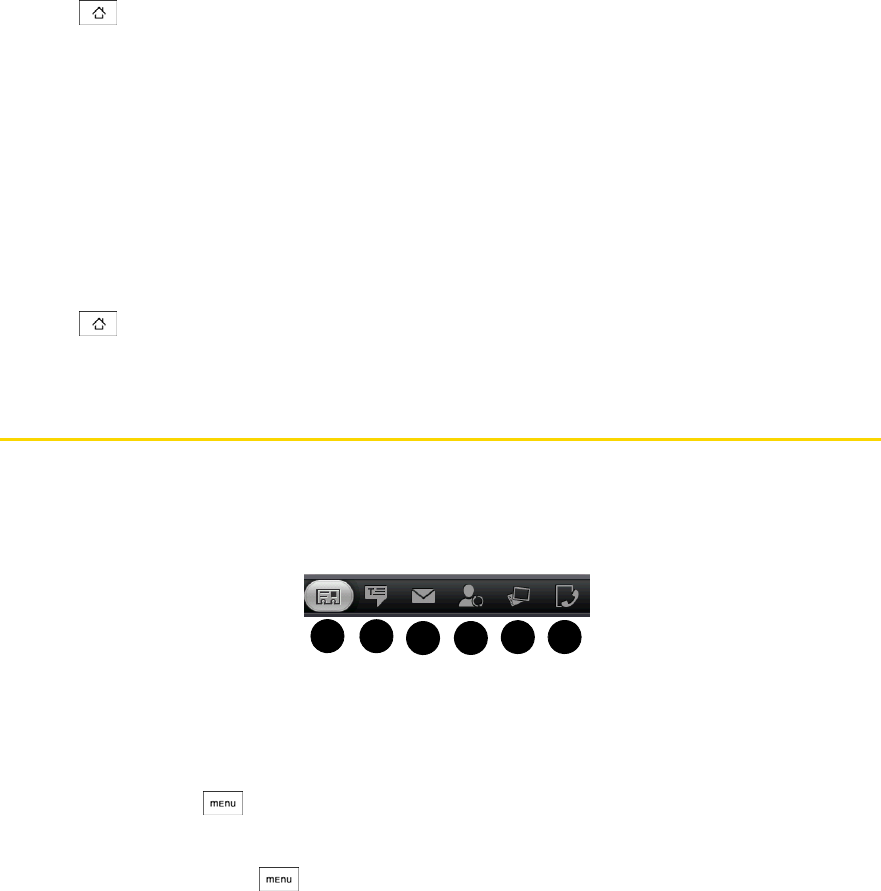
44 2D. People
Sending an Email Message to All Contacts In a Group
1. Press and tap People > Groups tab
2. Press and hold a group and tap Send group mail.
3. Tap Compose to use Gmail to send the email message. (You need to be signed in to your Google
account to use Gmail.)
– or –
Tap HTC mail to use your default email account to send the email message. (You need to have an email
account set up on your phone.)
For instructions on composing and sending your message, see “Composing and sending email” on page
95.
Deleting a Group
1. Press and tap People > Groups tab
2. Press and hold a group and tap Delete group.
Using the Contact Details Screen
When you tap a contact on the People screen, the Contact Details screen opens, showing you the
information stored for that contact, exchanged messages and phone calls with that contact, Facebook
notifications, and more.
The Contact Details screen has the following tabs:
1. Information shows the information you have stored for the contact, and allows you to get in touch with the
contact directly by tapping any of the displayed methods. For example, if the contact has a stored work
phone number, tap Call Work to call that number. You can also add one of the contact’s phone numbers
as a speed dial number. For information, see “Assigning Speed Dial Numbers” for details.
2. Messages shows your exchanged SMS messages with the contact. Tap a message to view it. To send a
new message, press and tap Send message. For more information about messages, see “Text
Messaging (SMS)” on page 78.
3. Mail shows emails you have received from the contact. Tap an email message to view it.
To send a new email, press and tap New mail. For more information about email, see “Email” on
page 93.
4. Updates and events shows the contact’s Facebook status, updates, and events, and shows when he or she
uploads new photos to Flickr. When there is a notification of the contact’s birthday, you can tap the
notification to call the contact directly or send a message greeting.
5. Albums shows the contact’s Facebook and Flickr photo albums. For more information, see “Using
Facebook and Flickr in People”.
6. Call history lists all your incoming, outgoing, and missed calls to and from the contact. Tap a list item to
call the contact using the displayed number.
21 5
3 4 6
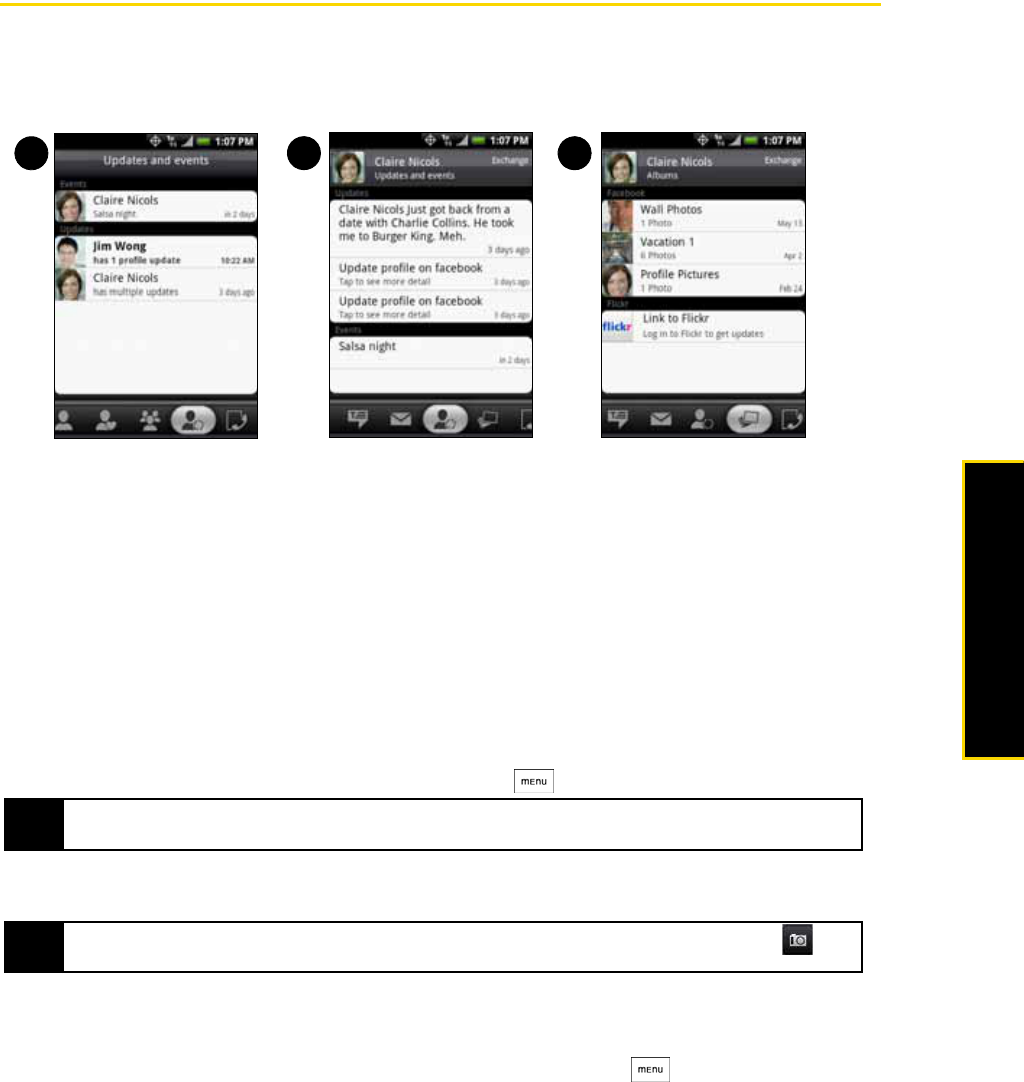
2D. People 45
People
Using Facebook and Flickr in People
If your contacts have Facebook accounts, you can view their current status and upcoming events and get
notifications when they change their profile information. You can also update your own Facebook status. In
addition, if your contacts have Flickr accounts, you can see when they add new photos.
Facebook and Flickr notifications are shown on the following tabs:
1. On the Updates and events tab of the People screen, notifications of contacts’ upcoming events and
updates to their profiles are displayed. Tap a notification to go to the Updates and events tab of the Contact
Details screen for the relevant contact.
2. On the Updates and events tab of the Contact Details screen for each contact, the contact’s Facebook
status, profile updates, and upcoming events are displayed. Notifications of new photo uploads to Flickr
are also displayed. Tap an item to open the browser and go to the relevant Web page in Facebook or
Flickr.
3. On the Albums tab of the Contact Details screen for each contact, the contact’s recent Facebook and
Flickr photo albums are displayed. Tap an album to view the photos in the Albums program. For
information on what you can do in the Albums program, see “Viewing Pictures and Videos Using
Albums” on page 62.
Logging in to Facebook or Flickr
1. On the All tab of the People screen, tap Me, and then press > Edit.
2. Scroll down and tap Facebook or Flickr.
3. Enter your login details and then tap Log in or Sign in.
4. Tap Save. (Scroll down the screen to see the Save button.)
Logging out of Facebook or Flickr
1. On the All tab of the People screen, tap Me or [Your Name] and then press > Edit.
2. Scroll down, tap Facebook or Flickr, and then tap OK on the message box.
3. Tap Save. (Scroll down the screen to see the Save button.)
Note If you have not already entered your contact details on your My contact card, you can do so now. For information,
see “Setting Up Your My Contact Card” for details.
Tip You can use the same profile picture on your Facebook account for your My Contact Card by tapping >
Facebook profile.
1 3
2

46 2D. People
Updating your Facebook status
1. On the All tab of the People screen, tap Me or [Your Name] > Facebook.
2. Enter your status in the “What’s on your mind” window and tap Share.
Linking to your contacts’ Facebook accounts
1. On the People screen, slide to the Updates and events tab.
2. Tap Link profiles. (It may take a few seconds for the Link profile button to appear.)
3. On the Select matching friends screen, select which contacts’ Facebook accounts you want to link to,
and tap Next.
4. On the Link profile message box, select from the following options:
ⅢUse photo to use your friends’ Facebook profile pictures as their contact ID pictures on your phone.
ⅢUse birthday to store your friends’ birthdays in their contact details on your phone.
5. Tap Done.
Changing Facebook and Flickr update settings
6. On the People screen, slide to the Updates and events tab, press , and then tap Data connection settings.
Note If you did not link to Facebook on My contact card, tap Link to Facebook and enter your Facebook login
information.
Tip If you later want to link a contact who did not appear in the list, open his or her Contact Details screen, slide to the
Updates and events tab, and tap Link to another friend. For more information, see “Using the Contact Details
Screen” for details.
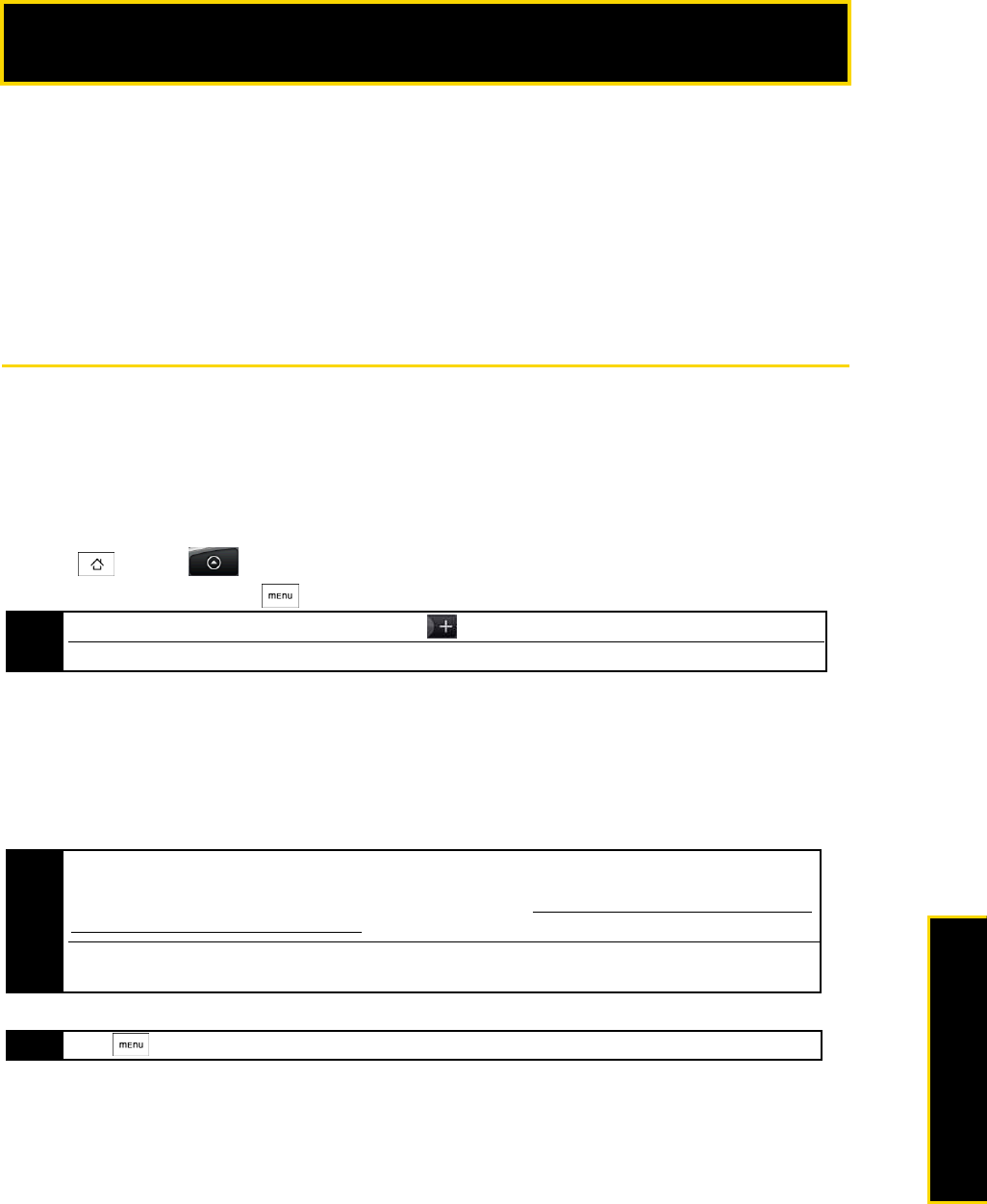
2E. Calendar and Tools 47
Calendar and Tools
ࡗCalendar (page 47)
ࡗCalculator (page 50)
ࡗWorld Clock (page 50)
ࡗQuickoffice (page 51)
ࡗPDF Viewer (page 52)
ࡗHTC Sync (page 52)
ࡗUpdating Your Phone (page 54)
Calendar
Use Calendar to create and manage events, meetings, and appointments. Depending on your
synchronization settings, your phone’s Calendar stays in sync with your Calendar on the Web, Exchange
ActiveSync calendar, and Outlook calendar.
Adding an Event to the Calendar
Your Calendar helps organize your time and reminds you of important events.
1. Press and tap > Calendar.
2. On any Calendar view, press and tap New to open the Event details screen.
3. Do one of the following:
ⅢIf there is a time frame for the event, tap the From and To dates and times to set them.
ⅢIf the event is a special occasion such as a birthday or an all-day event, set the From and To date, and
then select the All Day check box.
4. Enter the event location and description.
5. If you have more than one calendar, select the Calendar where you want to save the event.
6. Set the event reminder time in Reminders, and then select whether the event is recurring in Repeat.
7. When finished, tap Add.
2E. Calendar and Tools
Tip If you are in Agenda or Month view, you can also tap at the bottom-right of the screen.
If you are in Day view, tap Add event.
Note You can create multiple calendars, such as Personal, Business, or Family, using Calendar on the Web.
Depending on your synchronization settings, these calendars are added to your phone when you synchronize
the Calendar. For more information on how to create calendars, go to http://www.google.com/support/calendar/
bin/answer.py?answer=37095&topic=15281.
If you have synchronized your phone with an Exchange ActiveSync account or Outlook on your computer, you
can also select these calendars.
Note Press and then tap Add reminder to add another reminder.
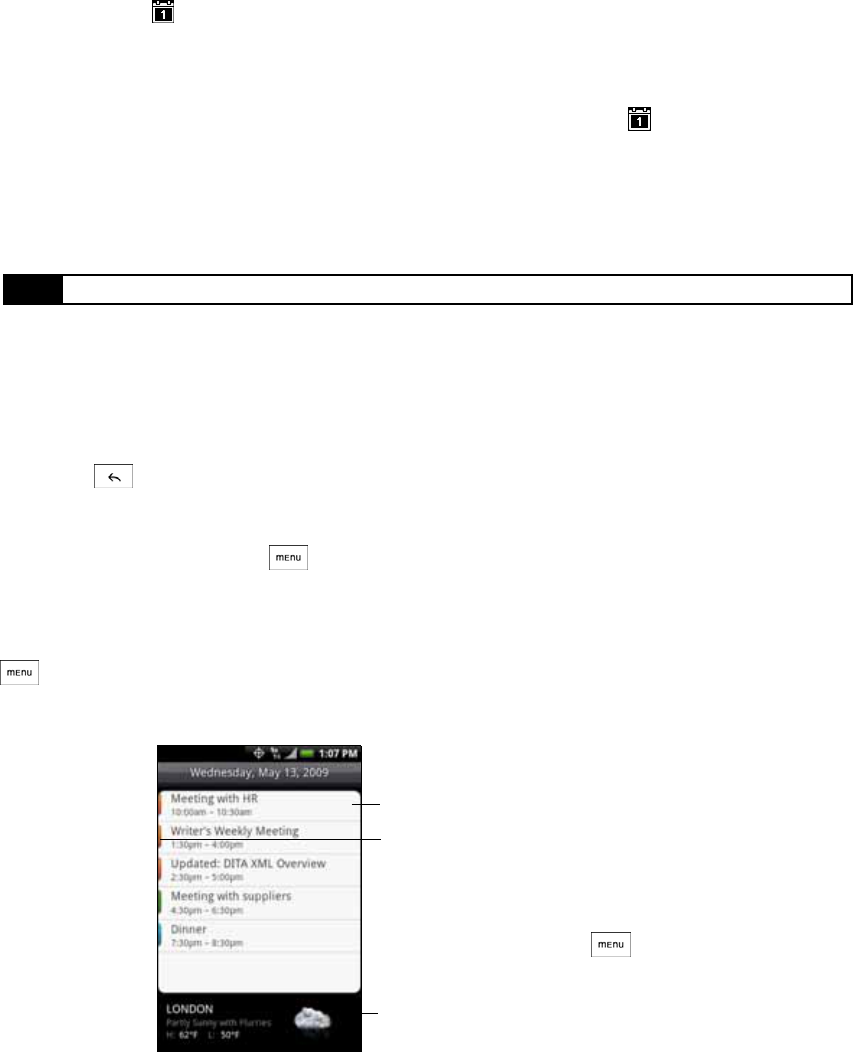
48 2E. Calendar and Tools
Event Alert Menu
When your phone is turned on and you have an event alarm scheduled, your phone alerts you and displays
the event summary. There are several ways your phone alerts you to scheduled events:
ⅷBy playing the assigned ringer type.
ⅷBy showing the icon on the status bar.
ⅷBy showing the Alert screen.
Event reminders
If you have set at least one reminder for an event, the upcoming event icon ( ) will appear in the
notifications area of the status bar to remind you of the upcoming event.
To view, dismiss, or snooze the reminder:
1. Press the status bar, and then slide your finger down the screen to open the Notifications panel.
2. Tap the upcoming event name to display the event.
3. Do one of the following:
ⅢTap Snooze all to snooze all event reminders for five minutes.
– or –
ⅢTap Dismiss all to dismiss all event reminders.
– or –
ⅢPress to keep the reminders pending in the notifications area of the status bar.
To set reminder settings:
ᮣOn any Calendar view, press and tap Settings > Reminders.
Viewing Events
You can display the Calendar in daily, weekly, monthly, or agenda view. To change the Calendar view, press
and tap Day, Agenda, or Month.
Day view
Note If you have other pending event reminders, these events will also appear on the screen.
Tap to open event details.
Colored bars indicate which
calendar the event was created in.
Shows the weather information.
To show the weather information, in
any calendar view, press , tap
Settings > Views and then select the
Include weather check box. Choose
the city to display in City.
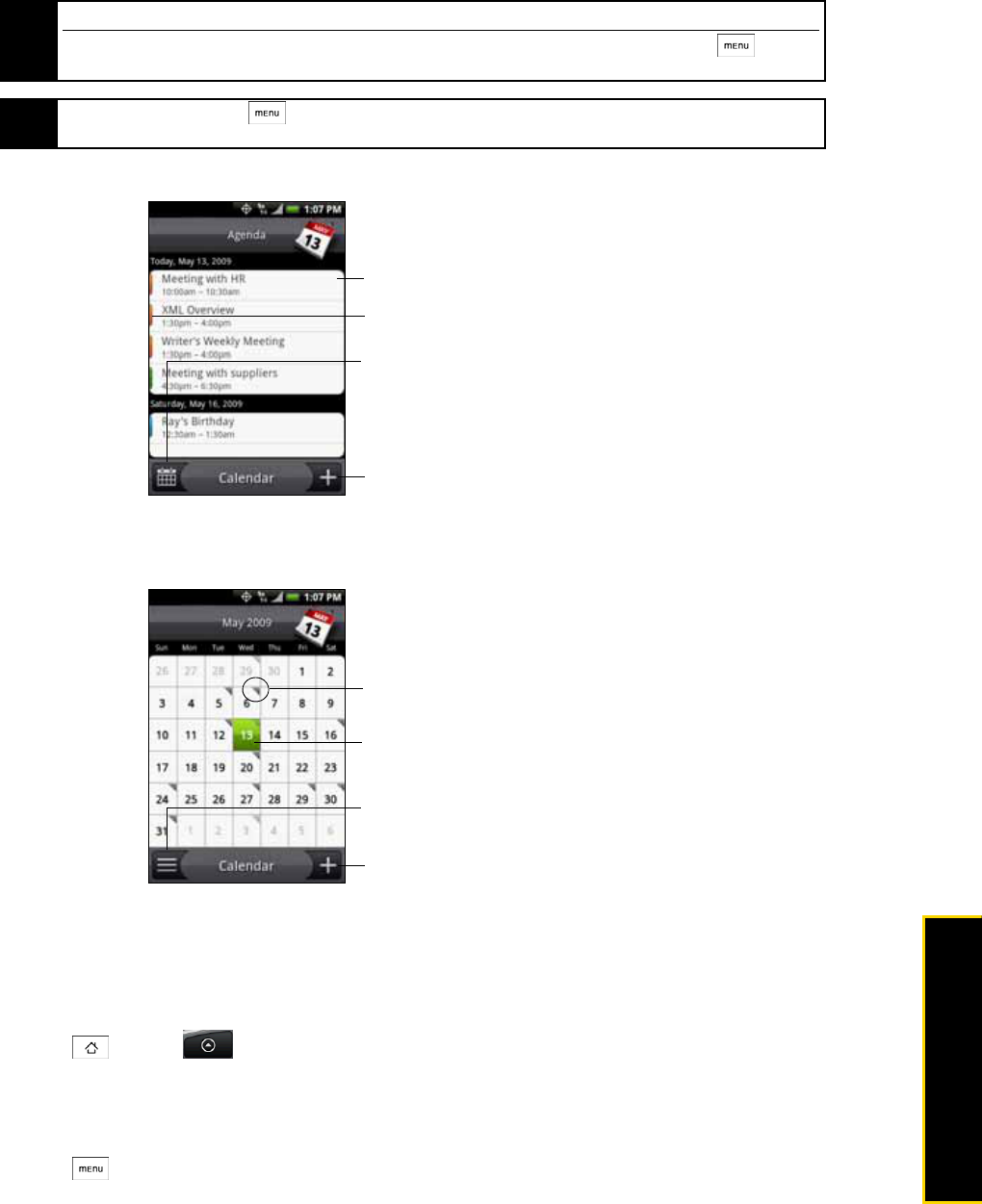
2E. Calendar and Tools 49
Calendar and Tools
Agenda view
ᮣSwipe your finger up or down to view more events.
Month view
ⅷSwipe your finger up or down to go to the previous or next month.
ⅷPress and hold a day to open the options menu to let you create an event, show the day’s event, or switch
to Agenda view.
Erasing Events
1. Press and tap > Calendar.
2. Open the calendar event details by:
ⅢIn Agenda and Day views, tap the calendar event you want to delete.
ⅢIn Month view, tap the date where the calendar event occurs, and tap the calendar event.
3. Press and tap Delete.
Note The weather information appears only it is within the 5-day forecast of Weather.
Weather information only appears when using Event list view. To check, in any calendar view, press , and tap
Settings > Views > Day views.
Tip In any calendar view, press and tap Calendars to view the colored bars that are assigned to your
calendars.
Tap to open event details.
Colored bars indicate which
calendar the event was created in.
Tap to switch to Month view.
Tap to add a new event.
Indicates there are events for this day.
Tap to view events for this day.
Tap to switch to Agenda view.
Tap to add a new event.
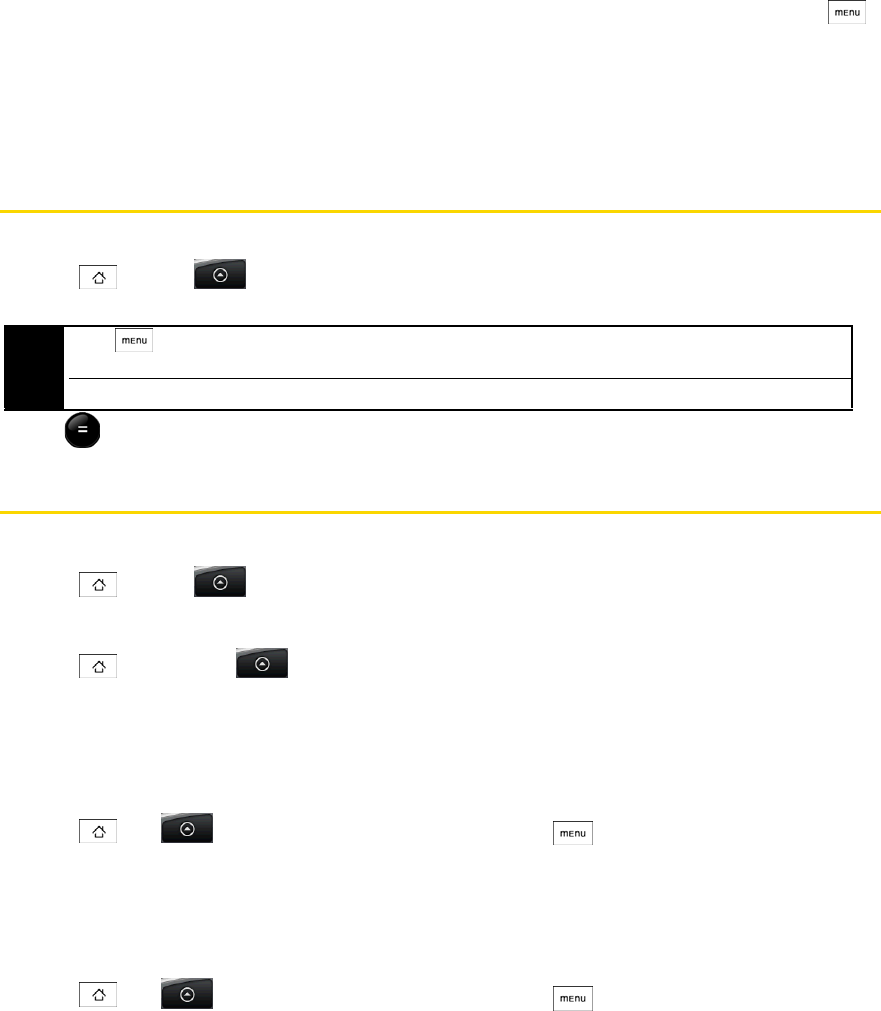
50 2E. Calendar and Tools
4. In the Delete confirmation box, tap OK.
– or –
If the calendar event is recurring, select This & future events or All events, and tap OK.
Synchronizing Exchange ActiveSync Calendar
If you have set up a Microsoft Exchange ActiveSync account on your phone, you can also synchronize
Exchange ActiveSync calendar events on your phone. Calendar events on your Exchange ActiveSync will
also show in Calendar if you chose to synchronize with the Exchange ActiveSync Server.
ᮣTo check if Exchange ActiveSync items are set to be synchronized, go to the Home screen, press ,
and tap Settings > Data synchronization > Exchange ActiveSync.
Synchronizing Outlook Calendar
See “HTC Sync” in this chapter for details.
Calculator
Your phone comes with a built-in calculator.
1. Press and tap > Calculator.
2. Enter numbers or formulas using the onscreen keys.
3. Tap for the total.
World Clock
To view the time in different locations:
ᮣPress and tap > Clock.
To add cities to the World Clock list:
1. Press and then tap > Clock > World Clock tab > Add city.
2. Enter the city name you want to add. The list changes to show matching cities and countries based on
letters you enter.
3. Tap the city when it appears on the list.
To designate your home city:
1. Press , tap
> Clock > World Clock tab, and then press > Home settings.
2. Enter your home city name. The list changes to show matching cities and countries based on letters you
enter.
3. Tap your city when it appears on the list. Your home city will appear at the top of the list of cities.
To delete a city on the World Clock list:
1. Press , tap
> Clock > World Clock tab, and then press > Delete.
Tip Press and tap Advanced panel to let you perform more complex calculations such as square roots,
logarithmic, and trigonometric functions.
Tap CLEAR to remove one digit at a time. Press and hold CLEAR to delete the entire number.
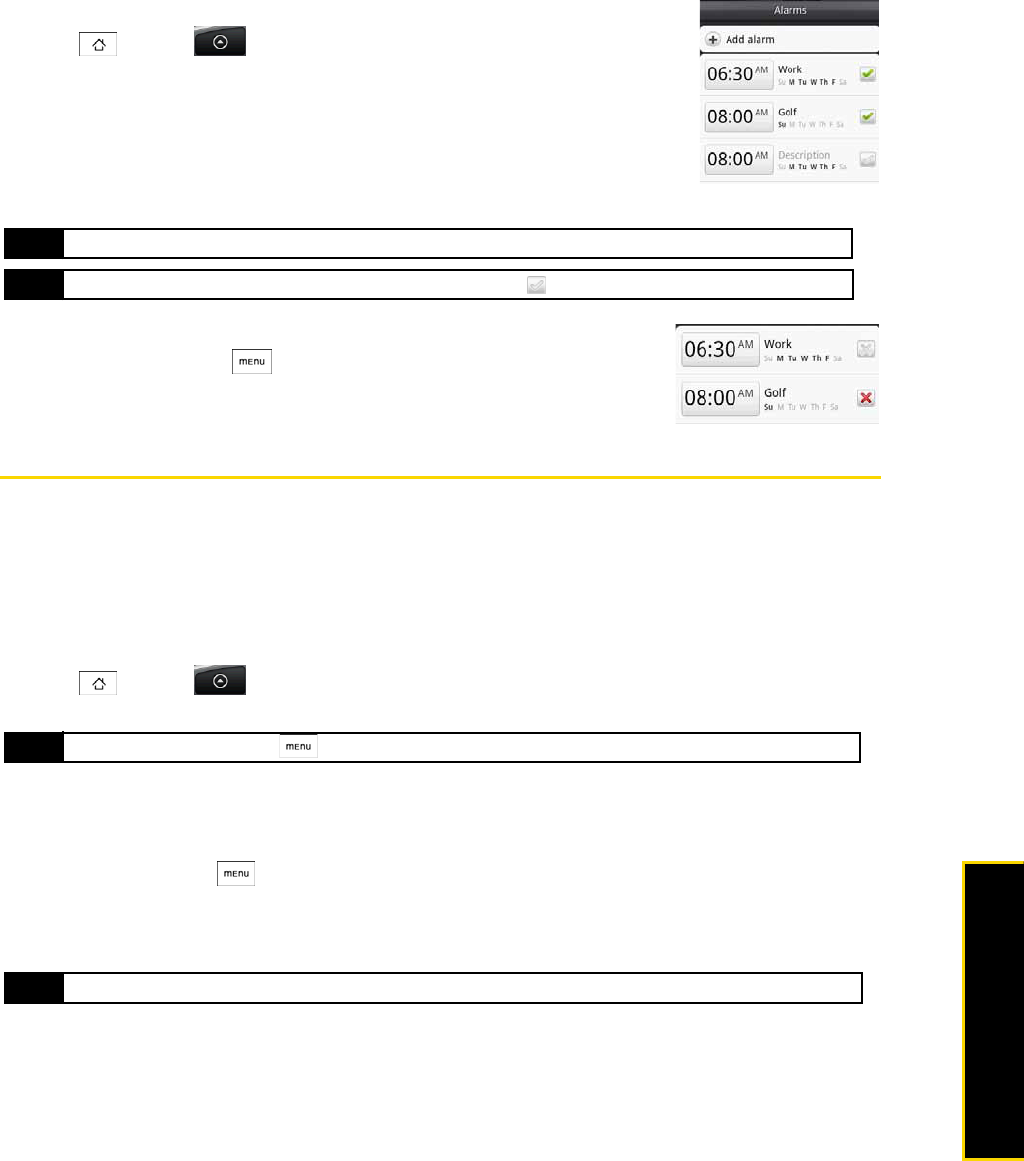
2E. Calendar and Tools 51
Calendar and Tools
2. Tap the cities you want to remove and tap Delete.
Alarm Clock
Your phone comes with a built-in alarm clock that has multiple alarm capabilities.
1. Press and tap > Clock > Alarms tab.
2. Tap one of the default alarms on the screen.
3. In the Set alarm screen, set the alarm time by sliding your finger up or down on
the numbers and AM/PM.
4. Enter the alarm Description, set the Alarm sound and Repeat, and select the Vibrate
checkbox if you want the phone to also vibrate when the alarm goes off.
5. Tap Done.
Deleting an Alarm
1. On the Alarms tab, press and tap Delete.
2. Select the alarms you want to delete and then tap Delete.
Quickoffice
Quickoffice lets you view Microsoft Office Word, Microsoft Office Excel, and Microsoft PowerPoint files on your
phone. Quickoffice supports viewing of Microsoft Office 2003 Word (.doc), Excel (.xls), PowerPoint (.ppt) and
text (.txt) files.
Viewing documents, presentations and spreadsheets
Make sure you have copied the files to the phone’s microSD card before you open Quickoffice.
1. Press and tap > Quickoffice. (You may need to scroll down the screen to see the icon.)
2. Tap the file you want to open.
3. Slide your finger on the screen to scroll horizontally or to flip through the pages of the file.
4. While viewing a file:
ⅢSlide your finger on the screen to bring up the zoom controls.
ⅢFor Excel files, press and then tap Worksheet to view other worksheets on the file.
ⅢFor Word and PowerPoint files, tap a URL link to open the Web page in the browser.
ⅢWhen you open Word documents, Quickoffice reflows the text to make it fit the width of the screen.
Double-tap the screen to switch to continuous view so you can view the page layout.
ⅢWhen you view PowerPoint files, after your zoom in on a slide, you can double-tap the screen to zoom
out automatically and fit the slide to the width of the screen.
Tip If you need to set more than 3 alarms, you can add more alarms by tapping Add alarm.
Note You can temporarily disable an alarm by clearing the check box ( ) of the alarm on the Alarms tab.
Tip In the Open file screen, press and tap Sort to let you sort the list by name or date.
Note Quickoffice does not reflow text in tables.
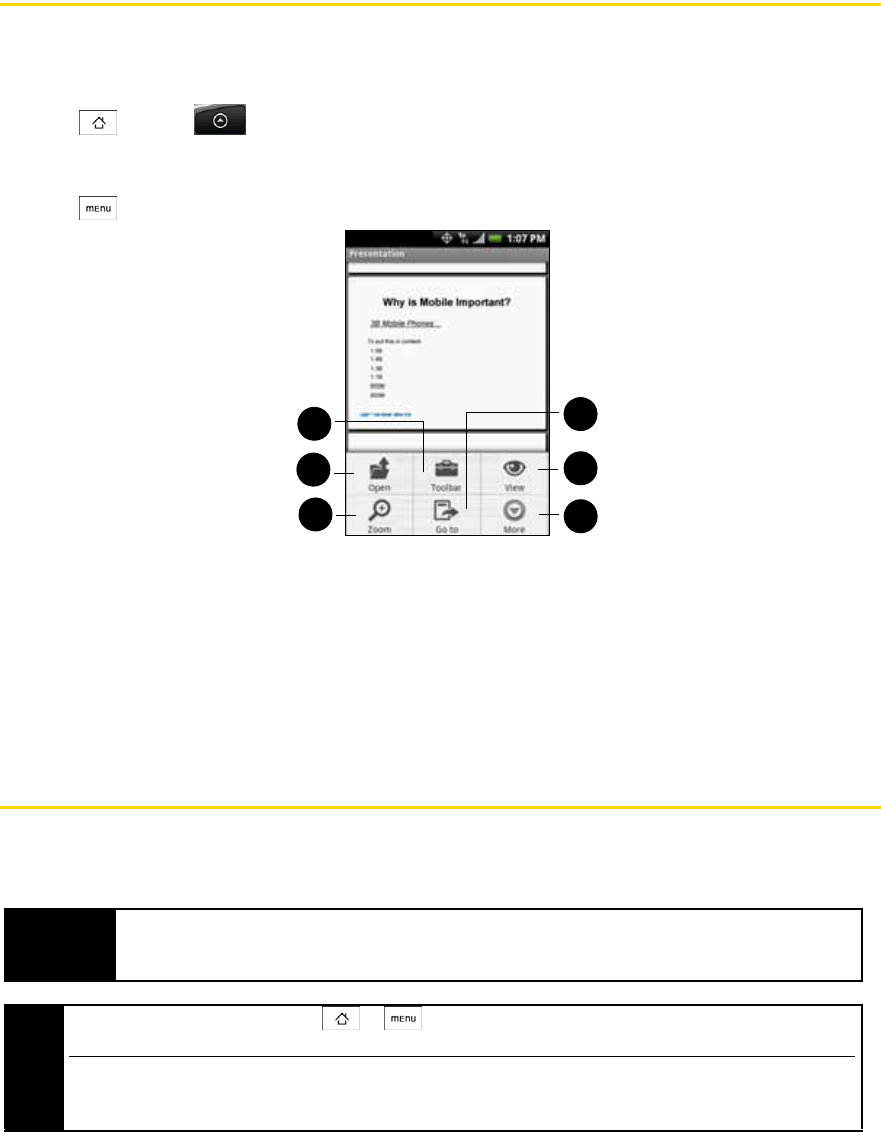
52 2E. Calendar and Tools
PDF Viewer
Use PDF Viewer to view PDF files that you have copied to the phone’s microSD card.
Viewing a PDF file
1. Press and tap > PDF Viewer. (You may need to scroll down the screen to see the icon.)
2. On the Open file screen, tap the file you want to view.
3. Slide your finger on the screen to pan or go through the pages of the PDF file. While viewing a PDF file,
press to let you open another PDF file, zoom in, search the file, and more.
1. Zoom to zoom in on the page. You can also tap the screen quickly twice to zoom in or out of the page.
2. Open to open another PDF file.
3. Toolbar to toggle between showing and hiding the page toolbar.
4. Go to to go to a specific page on the PDF file.
5. View to let you change the view: Continuous or Reflow.
6. More to search for text in the PDF file, and view properties or information about PDF Viewer.
HTC Sync
HTC Sync™ lets you synchronize Outlook and Windows Address Book (Outlook Express), contacts, and
calendar events on your computer with your phone. It also lets you install third-party Android applications on
the phone.
Important For HTC Sync Sync Manager, you need Outlook 2000/2002/2003/2007 or Windows Address Book
(Outlook Express) and Windows XP (SP2) or higher or Windows Vista to synchronize contacts and
calendar events.
Note The USB debugging check box in > > Settings > Applications > Development needs to be
selected for the phone to be able to synchronize with the computer using HTC Sync.
If you have a Microsoft Exchange account, you can set up an Exchange email account and synchronize emails,
contacts, and calendar items from the Exchange account. To set up a Microsoft Exchange email account, see
“Adding a Microsoft Exchange ActiveSync account” on page 94 for details.
1
2
3
6
5
4

2E. Calendar and Tools 53
Calendar and Tools
Installing HTC Sync on Your Computer
You can find the HTC Sync installer on the provided microSD card or you can download the installer from
the HTC website.
1. Make sure the microSD card is installed on the phone and then connect the phone to the computer
using the provided USB cable.
2. Set the phone as a USB drive. (See “Using the Phone’s microSD Card as a USB Drive” on page 59.)
3. On the computer, copy HTCSync.exe from the microSD card to the computer’s desktop.
4. Double-click HTCSync.exe and then follow the installation instructions on the screen.
Setting up HTC Sync to Synchronize Outlook Items
Use Sync Manager to synchronize computer Outlook contacts and calendar events between
the phone and computer.
1. On your computer, run HTC Sync.
2. Connect the phone to the computer using the provided USB cable.
3. The first time you synchronize the phone, the Synchronization Settings Wizard starts automatically to help
you set up HTC Sync.
4. On the Synchronization Settings Wizard screen, click Next.
5. Select the computer application you want to synchronize with and then click Next.
6. Select the categories you want to synchronize and then click Next.
7. Select when to synchronize data and then click Next.
8. Check the settings that you have chosen and then click Finish.
If you want to have more customization features when setting up HTC Sync, you can use Manual settings. To
learn how to set up HTC Sync using Manual settings, consult the HTC Sync help on your computer. To learn
how to open the help, see “Opening Sync Manager Help” for details.
Synchronizing Outlook Items
When you set up HTC Sync, you were asked to set when you want to synchronize with the computer.
Depending on the option you have selected, you may need to manually start synchronization or it will
automatically start synchronization when you connect the phone to the computer.
ⅷIf you chose I want to synchronize automatically each time I connect my mobile phone or Automatic start of
synchronization, every time mobile phone is connected, follow this procedure:
ⅢOn your computer, open HTC Sync.
ⅢConnect the phone to the computer using the USB cable.
ⅢSynchronization will automatically start.
Note On your phone, check Notifications on the status bar for the icon to confirm that HTC Sync recognizes the
phone.
The first time you connect the phone to the computer using HTC Sync, the Phone Connection Wizard runs.
Follow the instructions to finish the wizard.
Note If the Synchronization Settings Wizard does not start, click Synchronize Now.
Note After clicking Next, you may be asked to select additional categories. This page will only appear if any additional
categories are supported by the connected phone.
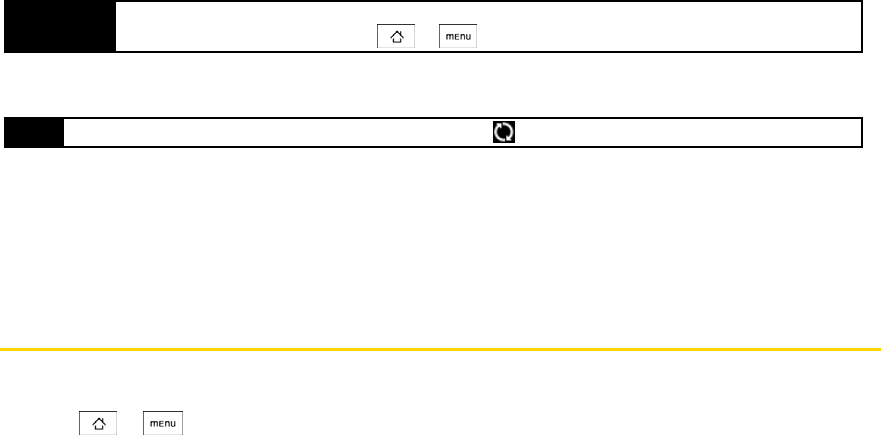
54 2E. Calendar and Tools
ⅷIf you chose I want to start the synchronization manually or Do not synchronize automatic, manual start, follow this
procedure:
ⅢOn your computer, open HTC Sync.
ⅢConnect the phone to the computer using the USB cable.
ⅢOn the HTC Sync window, click Synchronize Now.
ⅷIf you chose Schedule automatic synchronization, follow this procedure:
ⅢOn your computer, open HTC Sync.
ⅢConnect the phone to the computer using the USB cable.
ⅢSynchronization will start depending on the date and time you set.
Resolving Conflicts Between the Phone and Computer
1. On your computer, open HTC Sync.
2. On the HTC Sync window, click Sync Manager > Settings > Conflict Policy.
3. Select the option you want and then click OK.
Opening Sync Manager Help
Open the HTC Sync Sync Manager comprehensive help file to learn more about the advanced features of
Sync Manager.
1. On your computer, open HTC Sync.
2. On the HTC Sync window, click Sync Manager.
3. On Sync Manager menu bar, click Help > Sync Manager Help.
Installing Android Applications
Use Application Installer to install Android applications (.apk) that are on your computer to the phone.
1. On your computer, run HTC Sync.
2. Connect the phone to the computer using the provided USB cable.
3. Click Application Installer.
4. On the Application Installer screen, click Next.
5. Click Browse to select the file to install. After selecting the file, click Next.
6. Click Finish. Check the phone if there are additional instructions to complete the installation.
Updating Your Phone
To download software updates to your phone:
ᮣPress > > Settings > About phone > System updates > Firmware update. (Your phone automatically
downloads and installs any available updates. You may be required to power your phone off and back
on to complete the software upgrade.)
Important The Unknown sources check box in Settings needs to be selected in order to install Android applications
from the computer. To check, press > and tap Settings > Applications.
Note On your phone, check Notifications on the status bar for the icon to know if HTC Sync recognizes the phone.
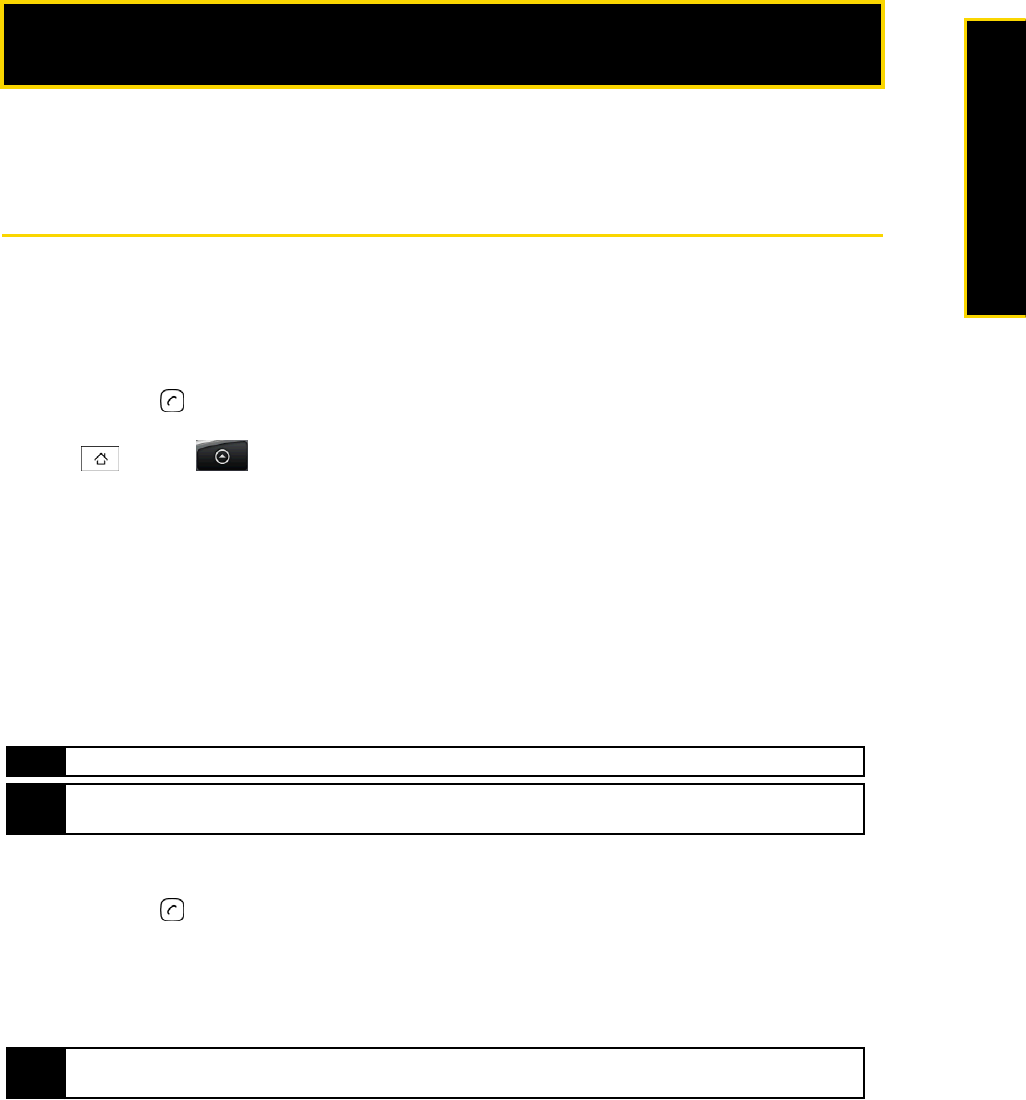
2F. Voice Services 55
Voice Services
ࡗAutomatic Speech Recognition (ASR) (page 55)
ࡗManaging Voice Memos (page 56)
Automatic Speech Recognition (ASR)
You can use your phone’s built-in automatic speech recognition (ASR) software to dial a phone number in
People or to launch phone functions. All you have to do is to talk into the phone, and ASR will recognize your
voice and complete tasks by itself.
Activating ASR
ᮣPress and hold .
– or –
Press and tap > Voice Dialer. (You may need to scroll down the screen to see the icon.)
The screen displays “Listening...” and the phone prompts you to say the name of the command you want to
use. To complete your task, simply follow the voice prompts.
Available ASR commands include:
ⅷCall <Name or Voicemail> to call an entry in your People list or voicemail. (See “Making a Voice Call With
ASR” on page 55.)
ⅷDial <Number> to dial a spoken phone number.
ⅷRedial to dial the last outgoing call.
ⅷOpen <Application Name> to open an application in your phone. (See “Opening Applications With ASR”
on page 56.)
Making a Voice Call With ASR
1. Press and hold .
2. Wait until you hear a tone and the word “Listening...” appears on the screen.
3. Say “Call [contact name]” to call a person stored in your People list.
– or –
Say “Dial [contact number]” to dial a spoken phone number.
4. Tap YES to confirm or CANCEL to cancel the command; or choose from a menu if ASR is not sure what
you would like to do.
2F. Voice Services
Tip Use ASR in a quiet environment so it can accurately recognize your commands.
Note Regardless of which command you use, you will be asked to confirm your choice, or choose from a menu if ASR
is not sure what you would like to do.
Note When dialing a phone number, numbers can be three digits (for example, 911), seven digits (for example, 555-
1234), or ten digits (for example, 222-555-1234).

56 2F. Voice Services
Opening Applications With ASR
You can jump directly to many applications by saying “Open” followed by the application name.
1. Press and hold .
2. Wait until you hear a tone and the word “Listening...” appears on the screen.
3. Say “Open [application name]” to open an application in your phone.
4. Tap YES to confirm or CANCEL to cancel the command; or choose from a menu if ASR is not sure what
you would like to do.
Managing Voice Memos
Use your phone’s Voice Recorder to record brief memos to remind you of important events, phone numbers,
grocery list items, or create a ring tone.
Recording Voice Memos
1. Press and tap > Voice Recorder. (You may need to scroll down the screen to see the icon.)
2. Tap and speak into the phone’s microphone.
To end the recording of your memo:
ᮣTap .
Voice Memo Options
To play the voice memos you have recorded:
ᮣAfter recording a voice memo, tap .
– or –
Press , tap
Open, tap the file you want to play, and tap .
Erasing Voice Memos
To erase a voice memo:
1. Press , tap
Open, and then tap the voice memo you want to delete.
– or –
Tap or to go to the voice memo you want to delete.
2. Press and tap Delete > Current file.
To erase multiple voice memos:
1. Press and tap Delete > Multiple files.
2. Select the voice memos you want to delete and tap Done.
Tip You can also or to go to the voice memo.

2F. Voice Services 57
Voice Services
Renaming Voice Memos
1. Press , tap Open, and then tap the voice memo you want to rename.
– or –
Tap or to go to the voice memo you want to rename.
2. Press and tap Rename.
3. Enter the name and tap Save.
Setting a Voice Memo as a Ring Tone
1. Press , tap Open, and then tap the voice memo you want to set as a ring tone.
– or –
Tap or to go to the voice memo you want to set as a ring tone.
2. Press and tap Set as ringtone.
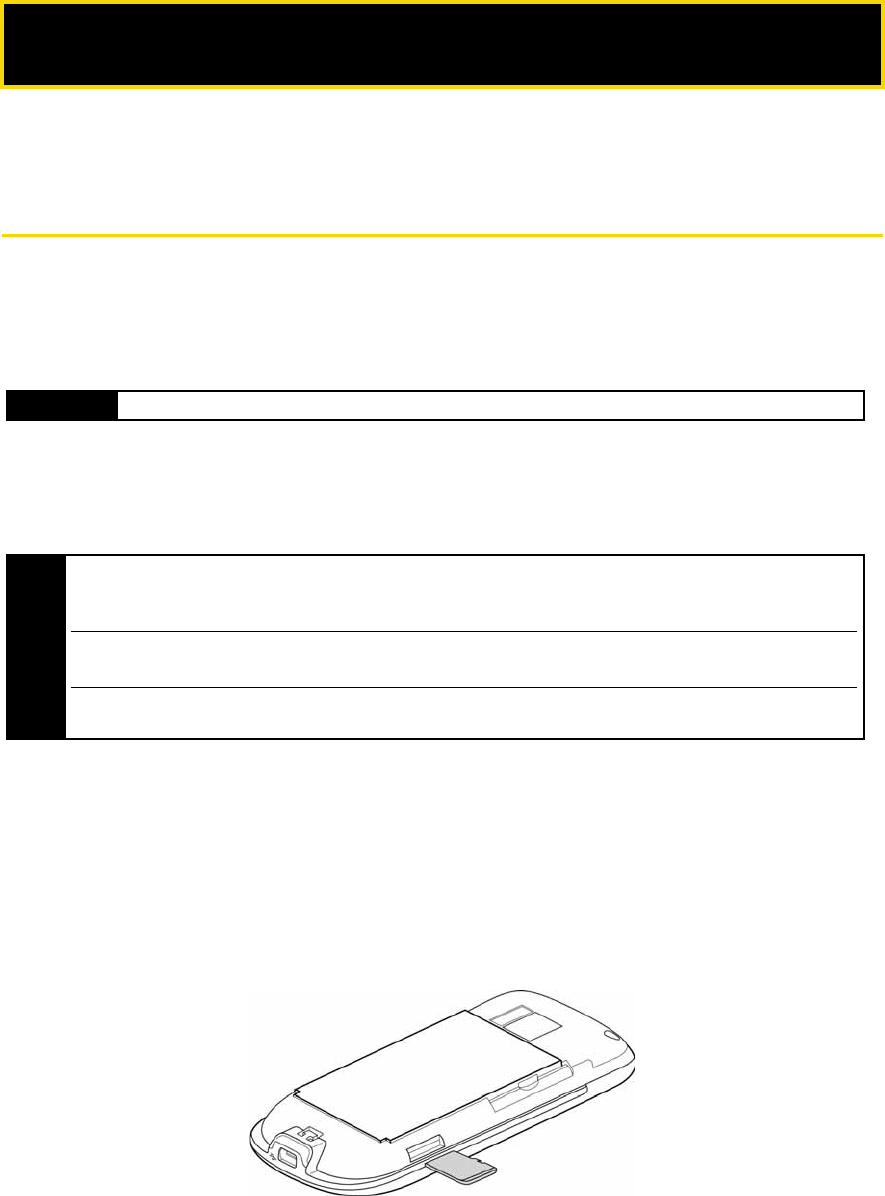
58 2G. microSD Card
ࡗYour Phone’s microSD Card (page 58)
ࡗUsing the Phone’s microSD Card as a USB Drive (page 59)
Your Phone’s microSD Card
The microSD Card
Your phone is equipped with a 2 GB microSDTM (Secure Digital) memory card to expand the phone’s
available memory space. It allows you to store images, videos, music, documents, and voice data in your
phone.
Removing the microSD Card
1. With the phone is turned off, push the back cover up with your thumb until it disengages from the device
and then slide it up to remove.
2. Press the microSD card to eject it from the slot.
Inserting the microSD Card
1. Remove the back cover by following these steps:
ⅢMake sure the phone is turned off.
ⅢHold the device securely with the front facing down.
ⅢPush the back cover up with your thumb until it disengages from the device and then slide it up
to remove.
2. Insert the microSD card into the slot with its gold contacts facing down.
3. Press the microSD card all the way in until you hear a click.
2G. microSD Card
Important The microSD card is already installed on your phone.
Note DO NOT remove a microSD card while files are being accessed or transferred. Doing so will result in loss
or damage of data. To safely remove the microSD card while the phone is on, you need to unmount it first.
See “Removing the microSD Card While the Phone is On“ for details.
You can easily damage the microSD card by improper operation. Please be careful when inserting, removing,
or handling them.
Make sure your battery is fully charged before using the microSD card. Your data may become damaged
or unusable if the battery runs out while using the microSD card.
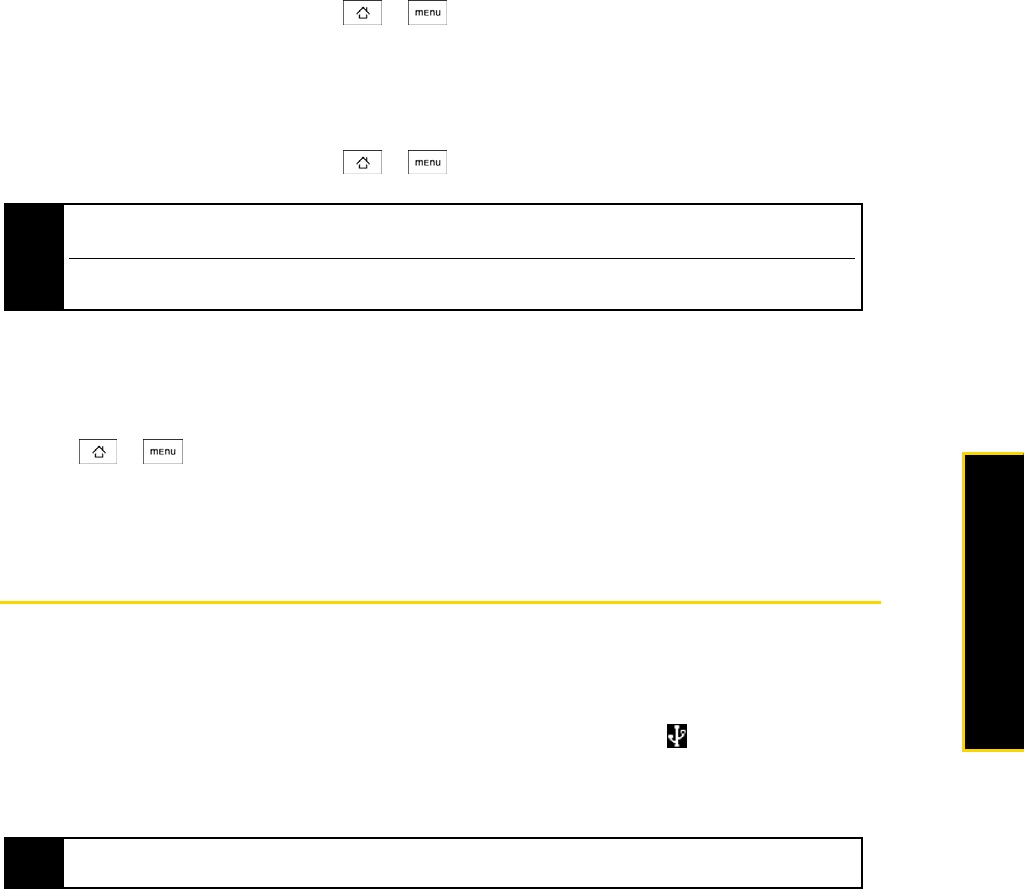
2G. microSD Card 59
microSD Card
Viewing Memory in the microSD Card
ᮣWith the microSD card inserted, press > and tap Settings > SD card & phone storage.
(The total and available memory space will be displayed.)
Formatting the microSD Card
Formatting a microSD card permanently removes all files stored on the card.
ᮣWith the microSD card inserted, press > and tap Settings > SD card & phone storage > Unmount
SD card > Format SD card > Format SD card > Erase everything.
Removing the microSD Card While the Phone is On
When you need to remove the microSD card while the phone is on, you must unmount the microSD card
first to prevent corrupting data or damaging the microSD card.
1. Press
> , and tap Settings.
2. Scroll down the screen, tap SD card & phone storage > Unmount SD card.
3. Remove the microSD card by following the instructions in “Removing the microSD Card” on page 58.
Using the Phone’s microSD Card as a USB Drive
To transfer music, pictures, and other files from your computer to your phone’s microSD card, you need
to set the phone’s microSD card as a USB drive.
To set the phone’s microSD card as a USB drive:
1. Connect the phone to the computer using the USB cable. A notification icon ( ) appears in the status
bar.
2. Open the Notifications panel. (See “Notifications Panel” on page 8.)
3. In the Notifications panel, tap USB connected > Mount.
To remove the connection:
1. When you have finished transferring data, open the Notifications panel. (See “Notifications Panel” on
page 8.)
2. Tap Turn off USB storage > Turn Off.
Note The formatting procedure erases all the data on the microSD card, after which the files CANNOT be retrieved.
To prevent the loss of important data, please check the contents before you format the card.
When you unmount the SD card, you need to remove and then reinsert the microSD card or turn the phone off
and then on for the phone to recognize the microSD card again.
Note When you tap Mount, the phone will not recognize the microSD card when it is connected to a computer. You will
not be able to use some of the phone’s applications such as camera or Music.
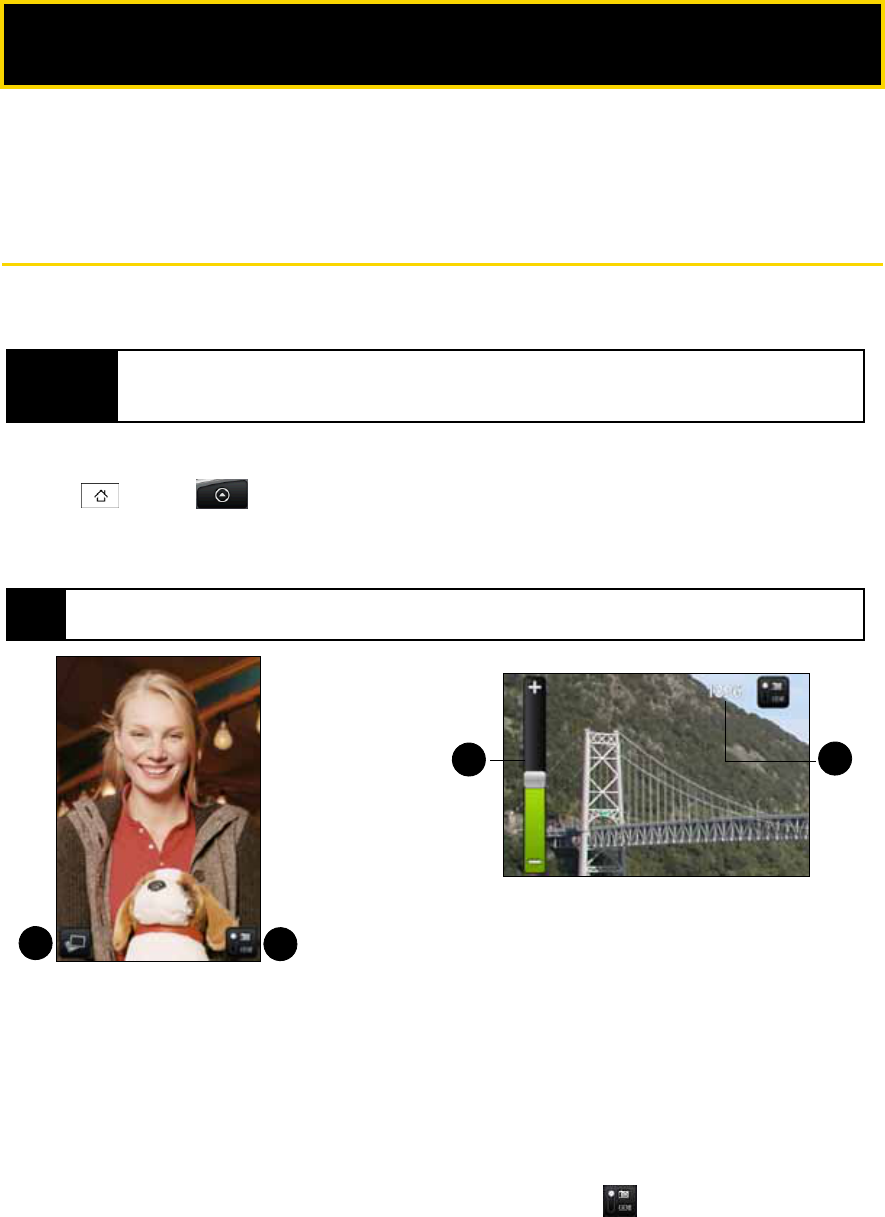
60 2H. Camera and Multimedia
ࡗTaking Pictures and Shooting Videos (page 60)
ࡗViewing Pictures and Videos Using Albums (page 62)
ࡗListening to Music (page 67)
Taking Pictures and Shooting Videos
You can use the camera or camcorder to take and share pictures and videos. Your phone comes with a 5.0
megapixel camera with auto-focus feature that lets you capture sharp pictures and videos.
Opening the Camera
ᮣPress and tap > Camera if you want to capture photos or Camcorder if you want to shoot
videos. When you open the camera, the screen orientation will depend on how you are holding the
phone.
For the camcorder, the screen automatically switches to landscape orientation.
1. Opens the Albums program. (See “Viewing Pictures and Videos Using Albums“ for details.)
2. Displays the current capture mode. Tap to switch between Photo and Video modes.
3. Zooms in or out. Drag the slider up to zoom in; drag the slider down to zoom out. To show the Zoom
control, tap the screen. The Zoom control will disappear after a few seconds.
4. Shows the remaining available shots. In Video mode, this shows the recording duration.
Changing Capture Modes
The phone offers two capture modes: Photo and Video. On the screen, tap to switch between Photo and
Video modes.
2H. Camera and Multimedia
Important Make sure the microSD card is installed before you use the camera or camcorder. All pictures or videos
that you capture using your phone are stored on the microSD card. For more information on how to install
a microSD card on your phone, see “Inserting the microSD Card” on page 58.
Tip You can easily switch to the other capture mode while you using the camera or camcorder. Refer to “Changing
Capture Modes“ for details.
1
Camera screen
when phone is
held upright. Camera screen when phone is held
horizontally. Screen has been tapped
to show the Zoom control.
2
34

2H. Camera and Multimedia 61
Camera and Multimedia
Taking Pictures
1. Switch to Photo capture mode.
2. Frame your subject on the screen.
3. Press the trackball. The auto-focus feature is turned on and then automatically takes the shot after focus
is set.
Shooting Videos
1. Switch to the Video capture mode.
2. Frame your subject on the screen.
3. Press the trackball to start capturing video. Press the trackball again to stop capturing video.
Review Screen
After capturing a photo or video, the review screen lets you save, view, send, or delete the picture or video by
tapping a button at the bottom of the screen.
Tip Hold the phone upright when taking portrait shots or hold the phone horizontally when taking landscape shots.
By doing this, you do not need to rotate the photo after capturing it.
Auto-focus indicator.
Recording indicator Capture
duration
1234
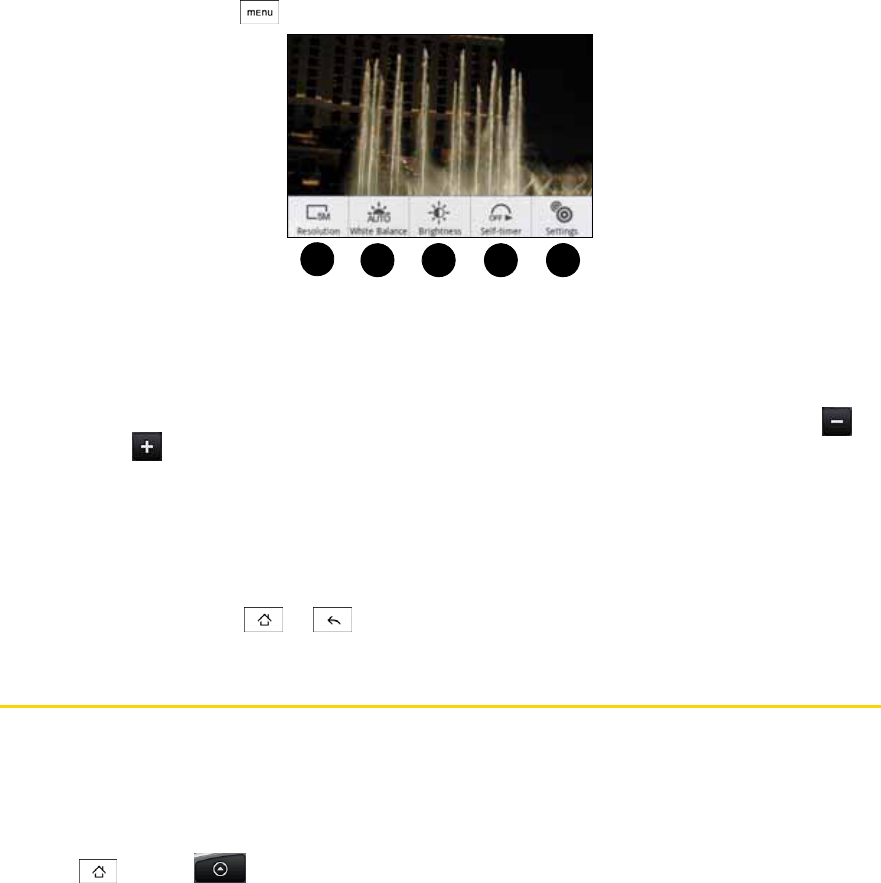
62 2H. Camera and Multimedia
1. View the captured image or video in Albums.
2. Delete the captured image or video.
3. Send the captured image or video using email or MMS or set the captured image as your Home screen
wallpaper.
4. Go Back to the live camera or Camcorder screen.
Camera Menu Panel
The camera menu panel lets you adjust basic camera settings and access advanced camera settings. While
on the camera screen, press to open the camera menu panel.
1. Resolution lets you change the resolution (capture size).
2. White Balance lets you adjust the white balance. White balance enables the camera to capture colors
more accurately by adjusting to the current lighting conditions. White balance settings include: Auto,
Daylight, Cloudy, Incandescent, and Fluorescent.
3. Brightness opens the Brightness bar so you can adjust the brightness. On the Brightness bar, tap to
decrease or to increase the brightness level. Tap outside the Brightness bar to apply the change.
4. Self-timer (Photo mode only) lets you set the self-timer to Off, 2 seconds, or 10 seconds. When you press the
trackball to take the photo, it starts to count down, and then takes the shot after the time expires.
5. Settings opens the camera settings.
Closing Camera
On the camera screen, press or .
Viewing Pictures and Videos Using Albums
Albums lets you view photos and play back videos. You can also view your photos or your friends’ photos
on Facebook or Flickr. For photos, you can also do basic editing tasks, set them as your wallpaper or contact
picture, and share to your friends.
Opening Albums
ᮣPress and tap > Albums.
12 3 4 5
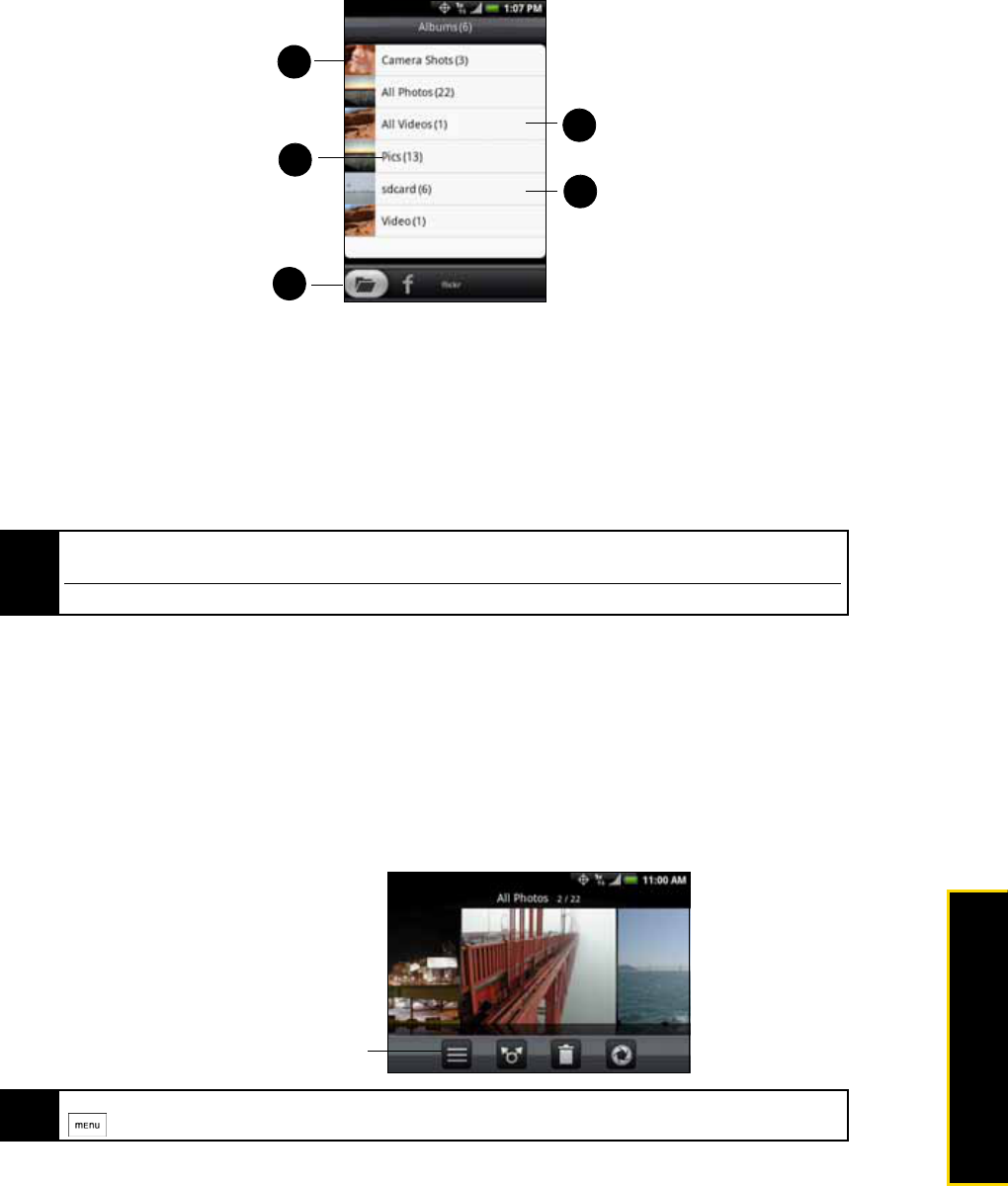
2H. Camera and Multimedia 63
Camera and Multimedia
If you stored your files in folders (directories) on the microSD card, Albums will display these folders as
separate albums.
1. Contains all the pictures inside all the albums.
2. Album name and number of files inside.
3. Tap to view pictures in Albums or pictures in your and your friends’ Facebook or Flickr account.
4. Contains all the videos inside all the albums.
5. Tap to view the files inside the album.
When viewing pictures in Albums, scroll up the screen or roll the trackball down to view more albums.
Working with Pictures
Once you have taken a picture, you can view it or share it with friends. You can also view your pictures or
your friends’ pictures on your Facebook or Flickr account.
To view pictures in Albums:
1. On the Albums screen, go to the Albums tab, and then tap an album to view the pictures inside the
album.
2. Slide your finger onscreen to go through the pictures. Tap the thumbnail to view it in full-screen.
Note Depending on the number of pictures stored on the microSD card, it may take a while for Albums to load all your
photos on the screen.
You need to be signed in to your Facebook and Flickr accounts to view the pictures in those accounts.
Tip You can choose to display the photos as thumbnails. To view the photos inside the album as thumbnails, press
and then tap Grid view.
1
2
3
4
5
Tap to go back to
the Albums
screen.
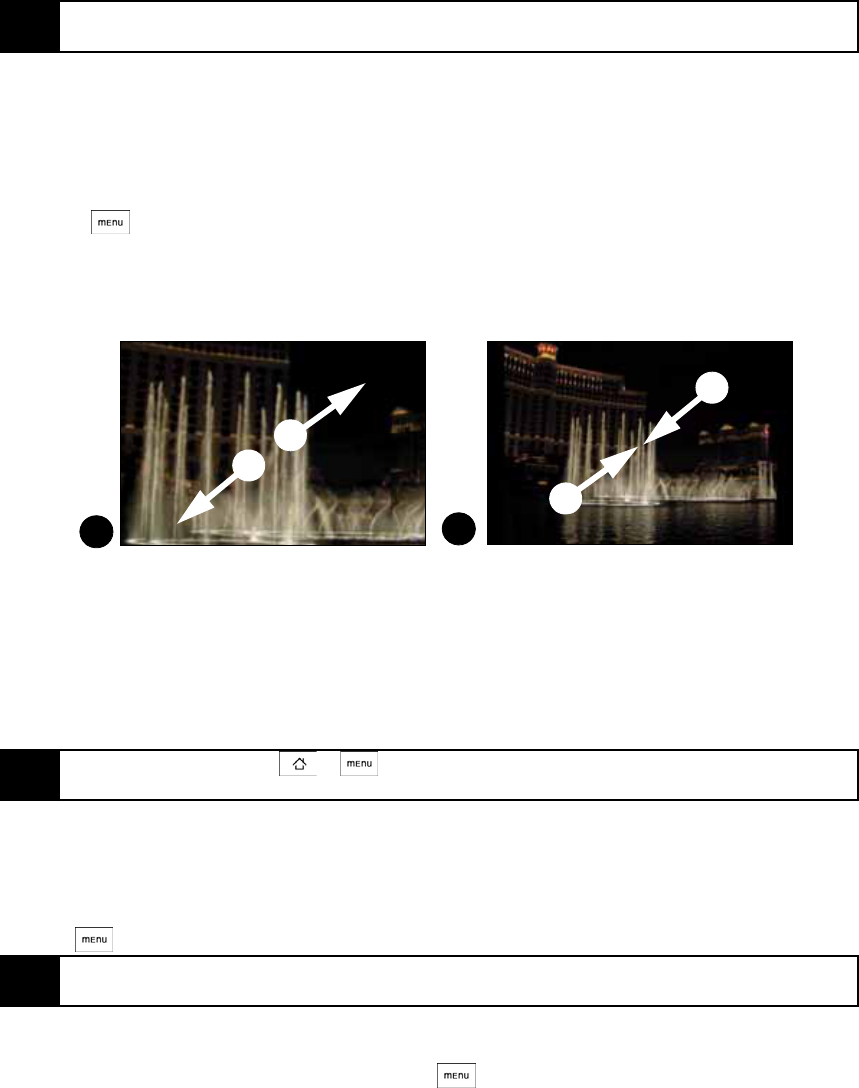
64 2H. Camera and Multimedia
To view pictures in your Facebook or Flickr account:
1. On the Albums screen, go to the Facebook or Flickr tab.
2. Tap your account name or your friend’s account on the list to view the pictures in the account.
3. Tap a picture to view it in full-screen mode. When viewing pictures in full-screen mode, you can:
ⅢSlide your finger from right to left or left to right to view the next or previous picture.
ⅢRoll the trackball left to view the previous picture, or roll it right to view the next picture in the album or
in the pictures list.
ⅢPress to let you view the pictures as a slideshow, share, delete, or rotate the picture, and more.
To zoom in or out on a picture:
Tap the screen twice quickly to zoom in; tap the screen twice quickly again to zoom out. You can also use
your fingers to pinch or spread the screen to zoom in and out.
1. Use your thumb and index fingers to “spread” the picture to zoom in.
2. Use your thumb and index fingers to “pinch” the picture to zoom out.
To view a picture in landscape orientation:
Turn your phone sideways to view the picture in landscape mode. The picture orientation automatically
adjusts to how you hold the phone.
If you want to rotate the picture and save the rotated state, see the next section.
To rotate and save the rotated state:
1. View the picture you want to rotate in full-screen mode
2. Press , tap
Rotate, and select either Rotate left or Rotate right.
To crop a picture:
1. While viewing a picture in full-screen mode, press and tap More > Crop. The cropping tool appears.
2. Do one of the following:
ⅢTo adjust the crop size, press and hold the edge of the cropping tool. When the crop arrows appear,
drag your finger inward to or outward from the center of the cropping tool to resize it.
Note When you switch to the Flickr tab, you will be asked to give authorization for the HTC Flickr client to connect to
the Flickr website. You need to give authorization to access your Flickr account.
Note The Orientation check box in > > Settings > Sound & display needs to be selected for the screen
orientation to automatically change.
Note The Picture rotates 90 degrees counter-clockwise (Rotate left) or 90 degrees clockwise (Rotate right) each time
you tap one of the Rotate options.
12
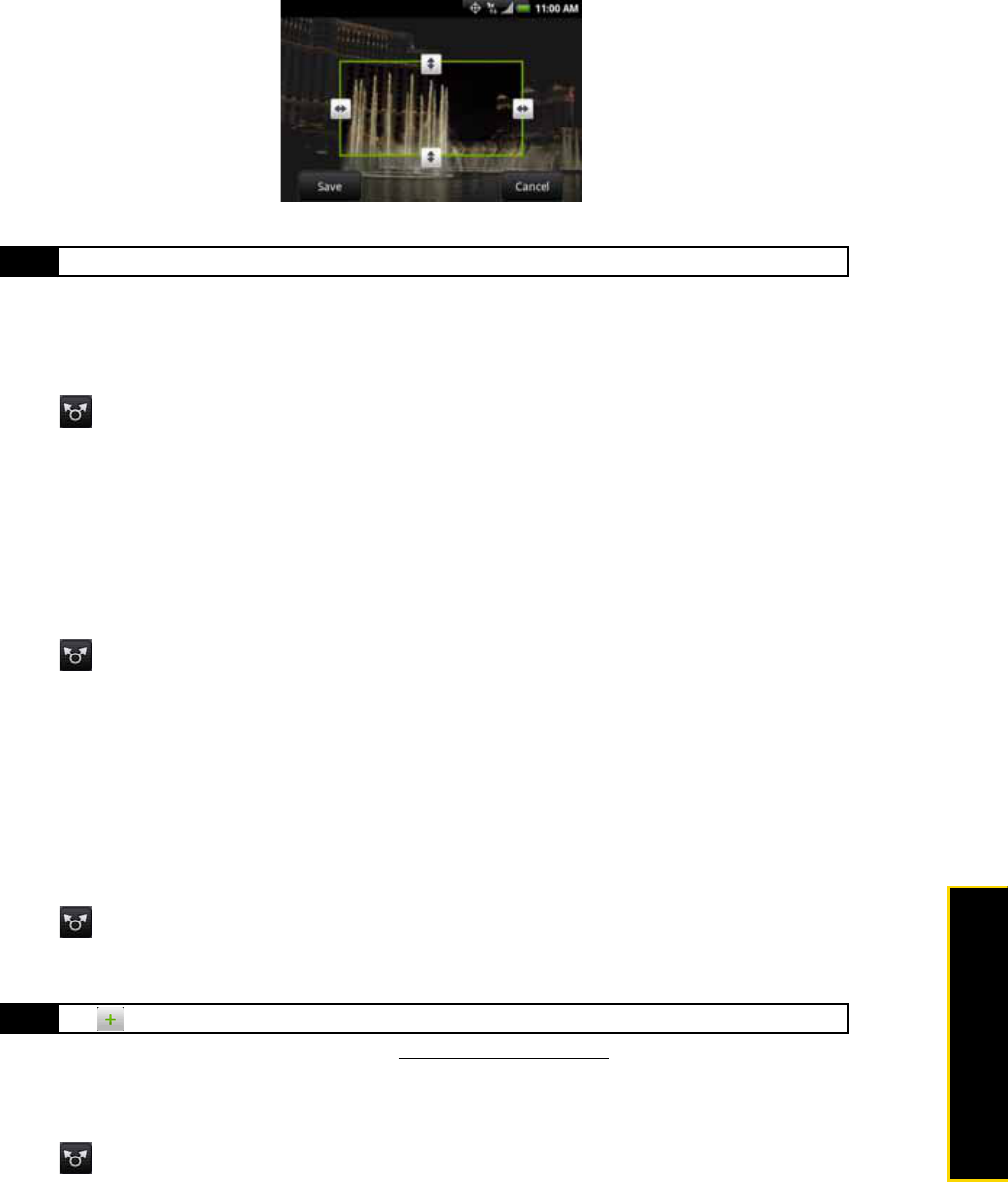
2H. Camera and Multimedia 65
Camera and Multimedia
ⅢTo move the cropping tool to another area on the picture, press and hold inside the tool, and then drag
it with your finger to the position you want.
3. Tap Save to apply the changes to the picture.
To share pictures on Facebook:
You need to be logged in to your Facebook account to be able to upload pictures.
1. In the Albums screen, open the album that the pictures you want to share are in.
2. Tap and then tap Facebook on the Share options menu.
3. Tap the pictures you want to share and then tap Next.
4. Add a caption for each picture (if you want) and tap Upload.
5. Select which album to upload to and set privacy settings for the uploaded pictures. Tap Done.
To share pictures on Flickr:
You need to be logged in to your Flickr account to be able to upload pictures.
1. In the Albums screen, open the album that the pictures you want to share are in.
2. Tap and then tap Flickr on the Share options menu.
3. Select the pictures you want to share and then tap Next.
4. Edit the file name or add a description for each picture (if you want) and tap Upload.
5. Select which album to upload to and set privacy settings for the uploaded pictures. Tap Done.
To share a picture on Picasa:
You need to be signed in to a Google account to be able to upload pictures to the Picasa™ photo organizing
service.
1. In the Albums screen, open the album that the pictures you want to share are in.
2. Tap and then tap Picasa on the Share options menu.
3. Tap the picture you want to share
4. Enter a Caption for the picture and select the Album that you want to upload the picture to.
5. Tap Upload. You can view the photos online at http://picasaweb.google.com.
To send pictures using a messaging application:
1. In the Albums screen, open the album that the pictures you want to share are in.
2. Tap and then tap Messages, Gmail, or Mail on the Share options menu.
Note The cropped picture is saved in the microSD card as a copy. The original picture remains unedited.
Tip Tap to create a new album where you can upload the picture.
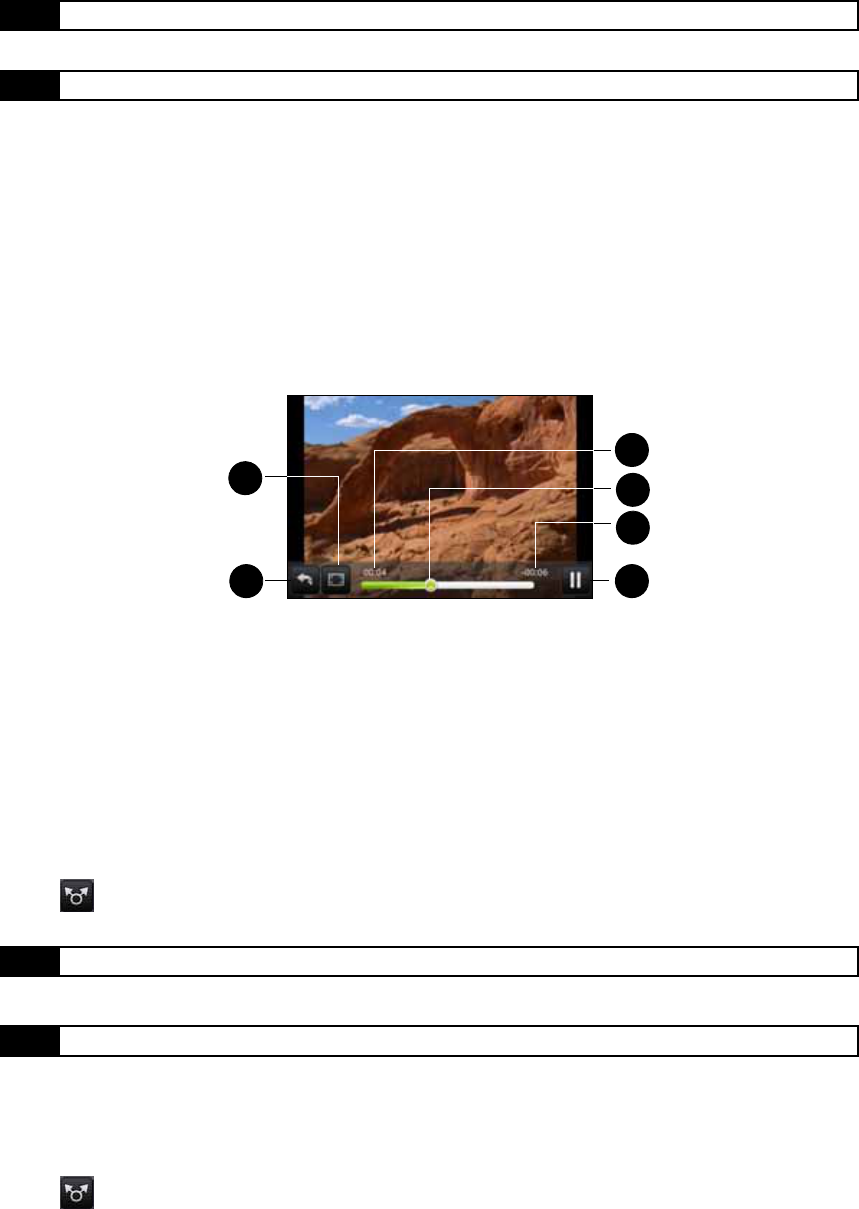
66 2H. Camera and Multimedia
3. Select the pictures you want to share and then tap Next.
4. The pictures are automatically added as an attachment to the email or added into the MMS message.
5. Compose your message and then tap Send.
Working with Videos
Once you have taken a video, you can view it or share it with friends.
To watch videos:
1. On the main Albums screen, tap a video album and then tap the video you want to watch to start playing
back the video.
2. Slide your finger onscreen to go through the videos. Tap the thumbnail to view it in full-screen mode. The
screen automatically switches to landscape mode when you play back a video.
1. Tap to view the video in full-screen mode. Tap again to revert to the original size.
2. Tap to go back to back to video album.
3. Shows elapsed time.
4. Drag to the left or right to go back or forward in the video.
5. Shows time remaining.
6. Tap to toggle between playing and pausing the video.
To send a video using email:
1. In the Albums screen, open the album that the videos you want to share are in.
2. Tap and then tap Gmail or Mail on the Share options menu.
3. Select the videos you want to send and then tap Next.
The videos are automatically added as an attachment to the email.
4. Compose your message and then tap Send.
To send a video using Messages:
1. In the Albums screen, open the album that the videos you want to share are in.
2. Tap and then tap Messages on the Share options menu.
Note For Gmail and Messages, tap the picture you want to send. You can only send one picture.
Note If you selected Mail and you have multiple email accounts, the default email account will be used.
Note For Gmail, tap the video you want to send. You can only send one video.
Note If you selected Mail and you have multiple email accounts, the default email account will be used.
1
62
4
3
5
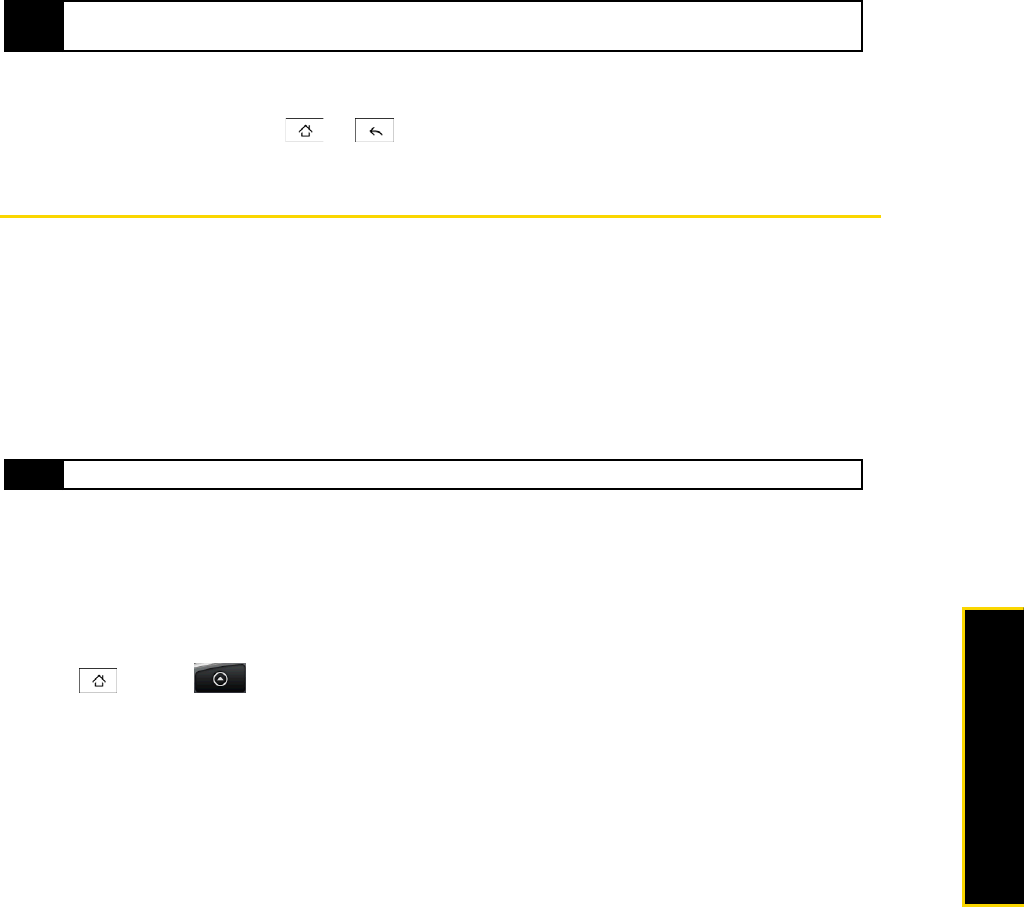
2H. Camera and Multimedia 67
Camera and Multimedia
3. Tap the video you want to send and then tap Next.
4. The video is automatically added into the MMS message.
5. Compose your message and then tap Send.
To share videos on YouTube:
You can share your videos by uploading them to YouTube™. Before you do this, you must create a YouTube
account and sign in to that account on your phone.
1. While viewing videos in a list, press and hold the video, and then tap Share on the options menu.
2. When prompted, tap YouTube.
3. Enter a Title, Description, and Tags for your video. Select the Public check box if you want to share the video
with everyone.
4. Tap Upload.
Closing Albums
While in the Albums screen, press or to close the application.
Listening to Music
Music plays digital audio files from the phone’s microSD card. Since Music only plays audio files saved on
the microSD card of your phone, you must copy your audio files to the microSD card before you open Music.
Copying Music into the microSD Card
1. Set the phone’s microSD card as a USB drive. (See “Using the Phone’s microSD Card as a USB Drive”
on page 59 for details.)
2. On the computer, navigate to the USB drive and open it.
3. Create a folder on the root folder of the microSD card (for example, Music).
4. Copy the music into the folder you have created.
5. After copying music, unmount or eject the drive as required by your computer’s operating system to
safely remove the phone.
6. Disconnect the phone from the computer.
Opening Music
ᮣPress and tap > Music. (You may need to scroll down the screen to see the icon.)
The Playback screen displays.
Tip You can view the upload progress by opening the Notifications panel and then tapping YouTube. Refer to
“Notifications Panel” on page 8 to learn how to open the Notifications panel.
Tip You can also create and use folders to organize your music inside the Music folder you have created.
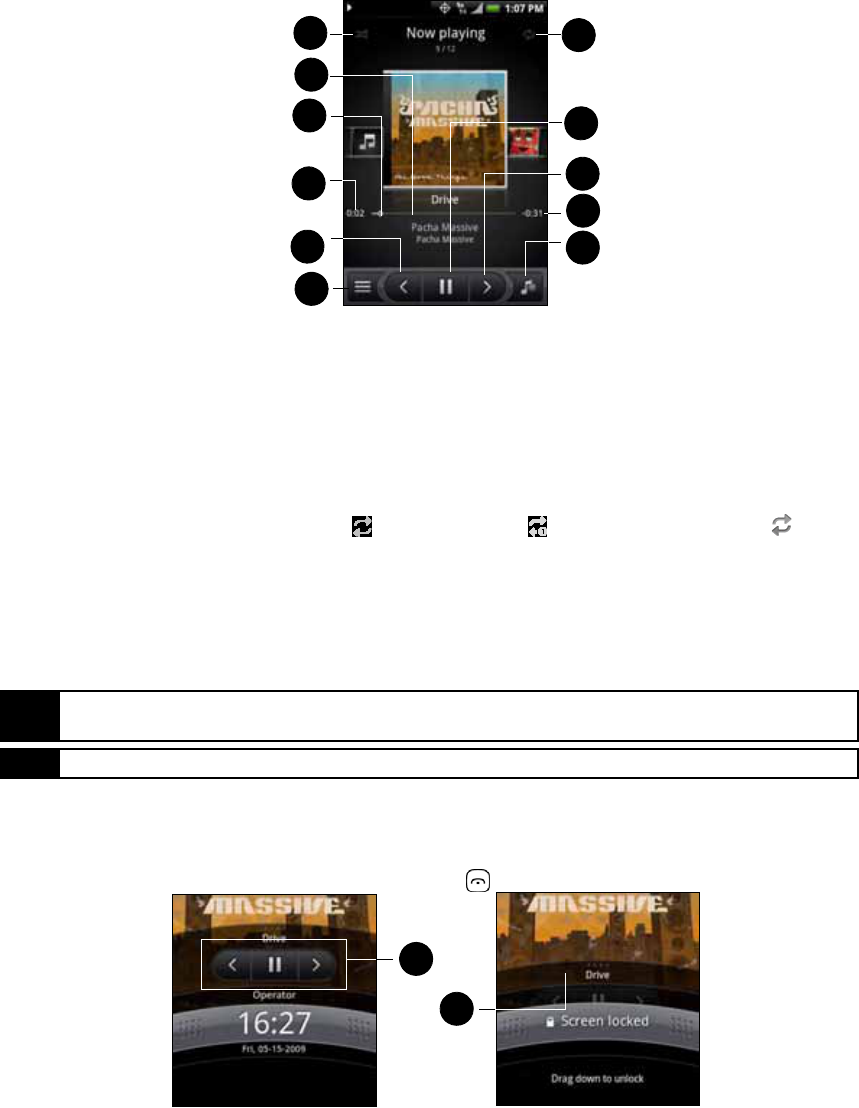
68 2H. Camera and Multimedia
Playing Music
1. Tap to turn shuffle on or off. (Shuffle is off when button is gray.)
2. Shows the progress bar.
3. Press and drag to jump to another part of the song.
4. Shows the elapsed time.
5. Tap to go to the previous song in the Now playing list.
6. Tap to go to the Library.
7. Tap to cycle through the repeat modes: Repeat all songs, Repeat current song, and don’t
repeat.
8. Tap to pause or resume playing the song.
9. Tap to go to the next song in the Now playing list.
10. Shows the remaining time.
11. Tap to toggle between showing the Now playing list and Playback screen.
Listening to Music on the Lock Screen
When you are playing back music and the screen turns off, you can control the music playback from the
Lock screen when you “wake up” the phone by pressing .
1. Tap to go to the previous song, play or pause music, or go to the next song in the Now playing list.
2. If you do not see the playback controls, tap to show the playback controls.
Tip You can also swipe your finger from right to left or left to right to go to the next or previous song in the Now
playing list.
Note Press the volume button up or down to adjust the playback volume.
3
2
1
5
4
10
6
8
7
9
11
1
2

2H. Camera and Multimedia 69
Camera and Multimedia
Library
Your music is organized into different categories such as Albums, Artists, Genre, Composers, and more.
Select a category by tapping one of the category tabs at the bottom of the screen. Tap a song in the
category to play it back.
To go to the Library, tap at the bottom-left of the Playback screen or the Now playing screen.
Creating Playlists
Use playlists to organize your music files. You can create as many playlists as you want on your phone.
1. In the Library, go to the Playlist category ( ).
2. Tap Tap to add a playlist.
3. Enter the Playlist name and then tap Save.
4. Select a category to add songs from to the playlist.
5. Select the songs you want to add to the playlist and then tap Add.
Managing Your Playlists
To play the songs in a playlist:
In the Playlists screen, tap the playlist name and then tap a song.
To add songs to a playlist:
1. In the Playlists screen, tap the playlist that you want to add songs to.
2. Press and then tap Add songs.
3. Select a category to add songs from to the playlist.
4. Select the songs you want to add to the playlist and then tap Add.
To rearrange the songs in a playlist:
1. In the Playlists screen, tap the playlist you want to edit.
2. Press and then tap Change order.
3. Press and hold at the end of the song title you want to move. When the row is highlighted in green,
drag it to its new position, and then release.
4. Tap OK.
To delete a song in a playlist:
1. In the Playlists screen, tap the playlist you want to edit.
2. Press and then tap Delete songs.
3. Select the songs you want to delete and then tap Delete.
Tip Go to the Select music track category to show all the available songs.
Tip Go to the Select music track category to show all the available songs.
Tip While playing back a song, press and then tap Add to playlist to add the current song to a playlist.

70 2H. Camera and Multimedia
To delete a playlist:
1. In the Playlists screen, press and then tap Delete playlists.
2. Select the playlists to delete and then tap Delete.
Setting a Song as Ring Tone
You can use songs as your phone’s ring tone.
1. In the Library, select the song that you want to use as ring tone and then play it back.
2. In the Playback screen, press and then tap Set as ringtone.
3. In the Set as ringtone options menu, tap Phone ringtone or Contact ringtone.
To check if the song was added as a ring tone:
1. From the Home screen, press and then tap Settings.
2. On the Settings screen, tap Sound & display > Phone ringtone. The song should be listed as an option.
Note If you select Contact ringtone, you need to select the contacts you want to associate the song with in the next
screen.
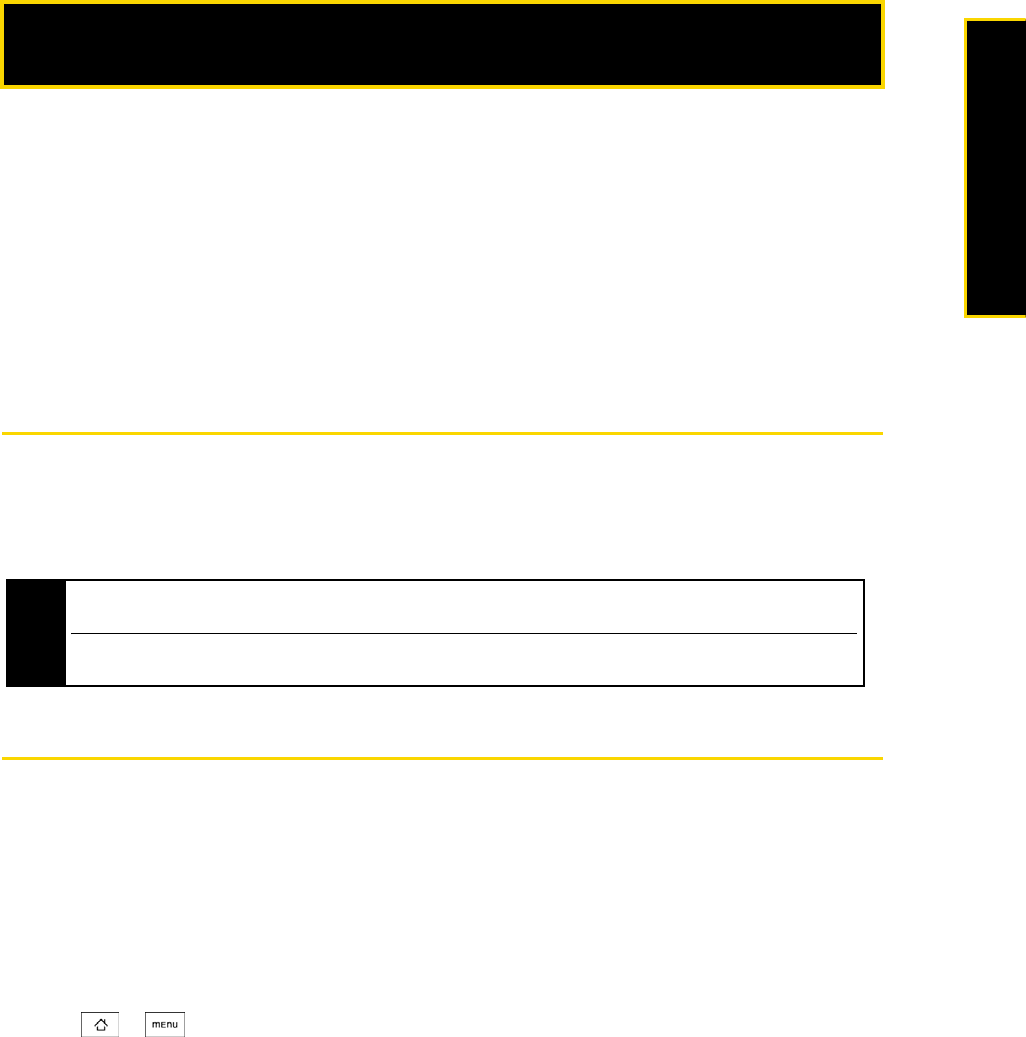
2I. Bluetooth 71
Bluetooth
ࡗBluetooth Modes (page 71)
ࡗUsing the Bluetooth Settings Menu (page 71)
ࡗPairing Bluetooth Devices (page 72)
ࡗDisconnecting a Bluetooth Device (page 72)
About Bluetooth
Bluetooth is a short-range communications technology that allows you to connect wirelessly to a number of
Bluetooth devices, such as headsets and hands-free car kits, and Bluetooth-enabled handhelds, computers,
printers, and wireless phones. The Bluetooth communication range is usually up to approximately 30 feet.
Bluetooth Modes
Your phone’s Bluetooth operates in three different modes:
ⅷOn: Your phone can detect other Bluetooth-enabled devices, but it can’t be detected by other devices.
ⅷDiscoverable: Bluetooth is turned on, and all other Bluetooth-enabled devices can detect your phone.
ⅷOff: In this mode, you can neither send nor receive information using Bluetooth.
Using the Bluetooth Settings Menu
The Bluetooth settings menu allows you to set up many of the characteristics of your phone’s Bluetooth
service, including:
ⅷTurning on Bluetooth.
ⅷEntering or changing the name your phone uses for Bluetooth communication.
ⅷSetting your phone’s visibility (or “discoverability”) for other Bluetooth devices.
ⅷScanning for other Bluetooth devices.
To access the Bluetooth settings menu:
1. Press
> and tap Settings > Wireless controls > Bluetooth settings.
2. Select the Bluetooth check box and set your Bluetooth options.
ⅢTap Device name to rename your phone for Bluetooth.
ⅢTap Discoverable to set your Bluetooth visibility. Your phone will be visible for up to two minutes.
ⅢTap Scan for devices to scan for other Bluetooth devices within range.
3. If you do not find the device in the list, tap Scan for devices to scan again.
ⅢFor some Bluetooth devices, you need to enter a passcode to pair with the Bluetooth device. You can
try “0000” as the passcode. If that does not work, consult the Bluetooth device’s documentation.
2I. Bluetooth
Note By default, Bluetooth is turned off. If you turn it on, and then turn off your phone, Bluetooth also turns off. When
you turn on your phone again, Bluetooth automatically turns on.
Turn off Bluetooth when not in use to conserve battery power, or in places where using a wireless device is
prohibited, such as aboard an aircraft and in hospitals.
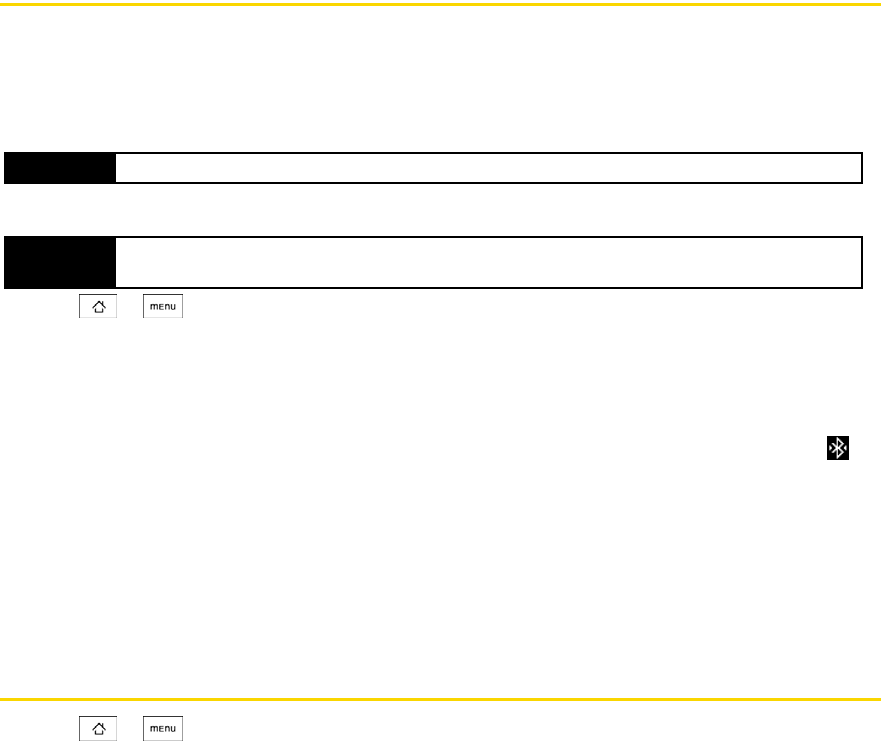
72 2I. Bluetooth
Pairing Bluetooth Devices
Paired Devices
The Bluetooth pairing process allows you to establish trusted connections between your phone and another
Bluetooth device. When you pair devices, they share a passkey, allowing for fast, secure connections while
bypassing the discovery and authentication process.
To pair your phone with another Bluetooth device:
1. Press
> , and then tap Settings > Wireless controls > Bluetooth settings.
2. Select the Bluetooth check box and tap Scan for devices. Your phone will start to scan for Bluetooth devices
within range and will display all detected devices below the Bluetooth devices section.
3. Tap the Bluetooth device in the list to start pairing. (For example, a stereo Bluetooth headset.)
4. The pairing and connection status will appear below the Bluetooth device name in the Bluetooth devices
list. When the other Bluetooth device is connected to your phone, the Bluetooth connected icon ( )
will appear in the status bar. You can now start using the Bluetooth device.
Pairing between two Bluetooth devices is a one-time process. Once pairing is created, the devices can
recognize the partnership and exchange information without entering a passcode again.
If you pair with a second headset while connected to the first, the first headset will be disconnected. To
switch connection back to the first headset, you must manually select that headset again in the Bluetooth
devices list.
Disconnecting a Bluetooth Device
1. Press > and tap Settings > Wireless controls > Bluetooth settings.
2. Navigate to the Bluetooth devices section, and then press and hold the connected Bluetooth device.
3. Tap Disconnect.
– or –
Tap Disconnect & unpair if you want the phone to erase all pairing information with the hands-free headset
or car kit. You will be prompted to enter the passcode again when you connect to that Bluetooth device.
Important The phone supports the following Bluetooth profiles: Headset, Handsfree, A2DP, and AVRCP.
Important Make sure that the Bluetooth device that you want to pair with is set to visible (or “discoverable”) mode.
Consult the Bluetooth device’s documentation to learn how to set it to visible (or “discoverable”) mode.
74 2I. Bluetooth

Section 3
HTC Service
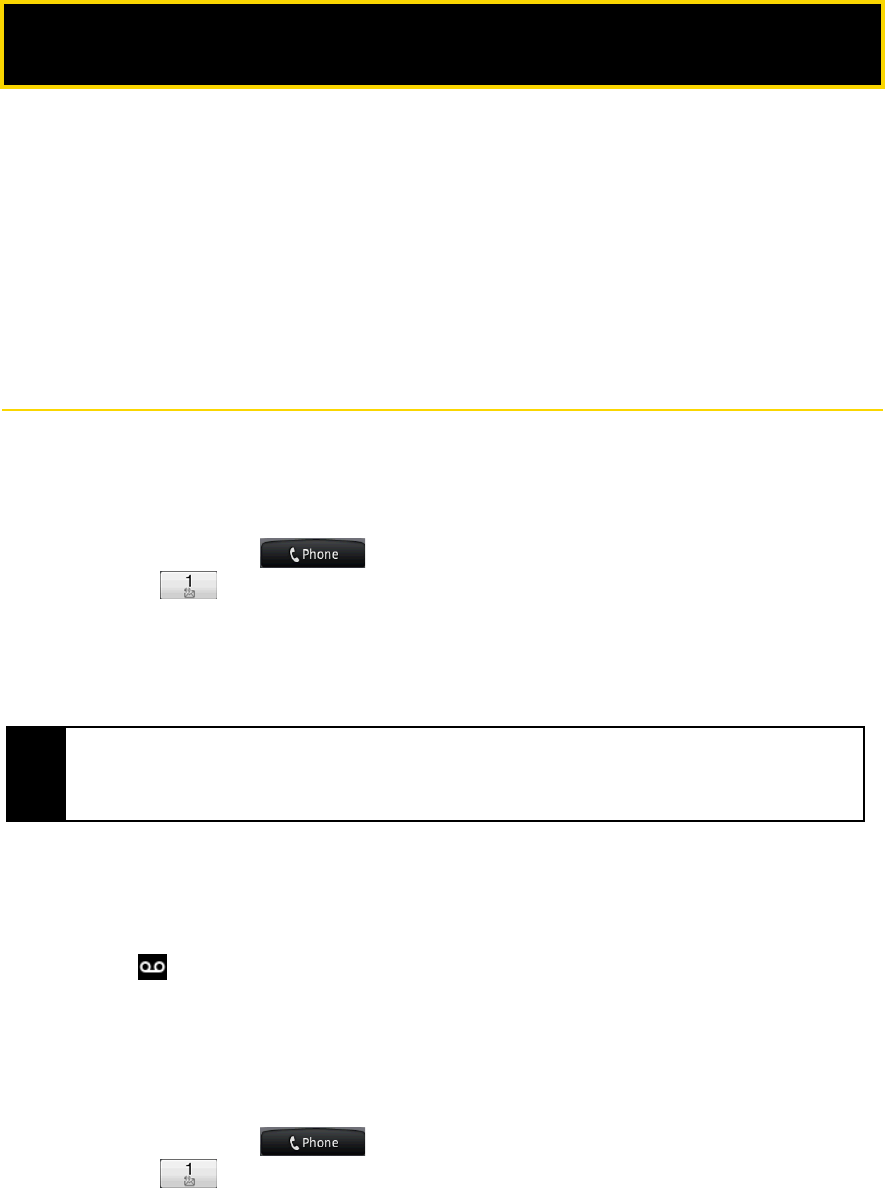
76 3A. HTC Service: The Basics
ࡗVoicemail (page 76)
ࡗText Messaging (SMS) (page 78)
ࡗPicture Messaging (MMS) (page 80)
ࡗCaller ID (page 82)
ࡗCall Waiting (page 82)
ࡗMaking a Three-Way Call (page 83)
ࡗCall Forwarding (page 83)
ࡗRoaming (page 83)
Voicemail
Setting Up Your Voicemail
Your phone automatically transfers all unanswered calls to your voicemail, even if your phone is in use or
turned off. You should set up your HTC Voicemail and personal greeting as soon as your phone is activated.
1. From the Home screen, tap .
2. Press and hold .
3. Follow the system prompts to:
ⅢCreate your passcode.
ⅢRecord your name announcement.
ⅢRecord your greeting.
Voicemail Notification
There are several ways your phone alerts you to a new message:
ⅷBy sounding the assigned ringer type.
ⅷBy displaying at the top of your screen.
New Voicemail Message Alerts
When you receive a new voice message, your phone alerts you and prompts you to call your voicemail.
To call your voicemail:
1. From the Home screen, tap .
2. Press and hold .
3A. HTC Service: The Basics
Note Voicemail Passcode
HTC strongly recommends that you create a passcode when setting up your voicemail to protect against
unauthorized access. Without a passcode, anyone who has access to your handset is able to access your
voicemail messages.
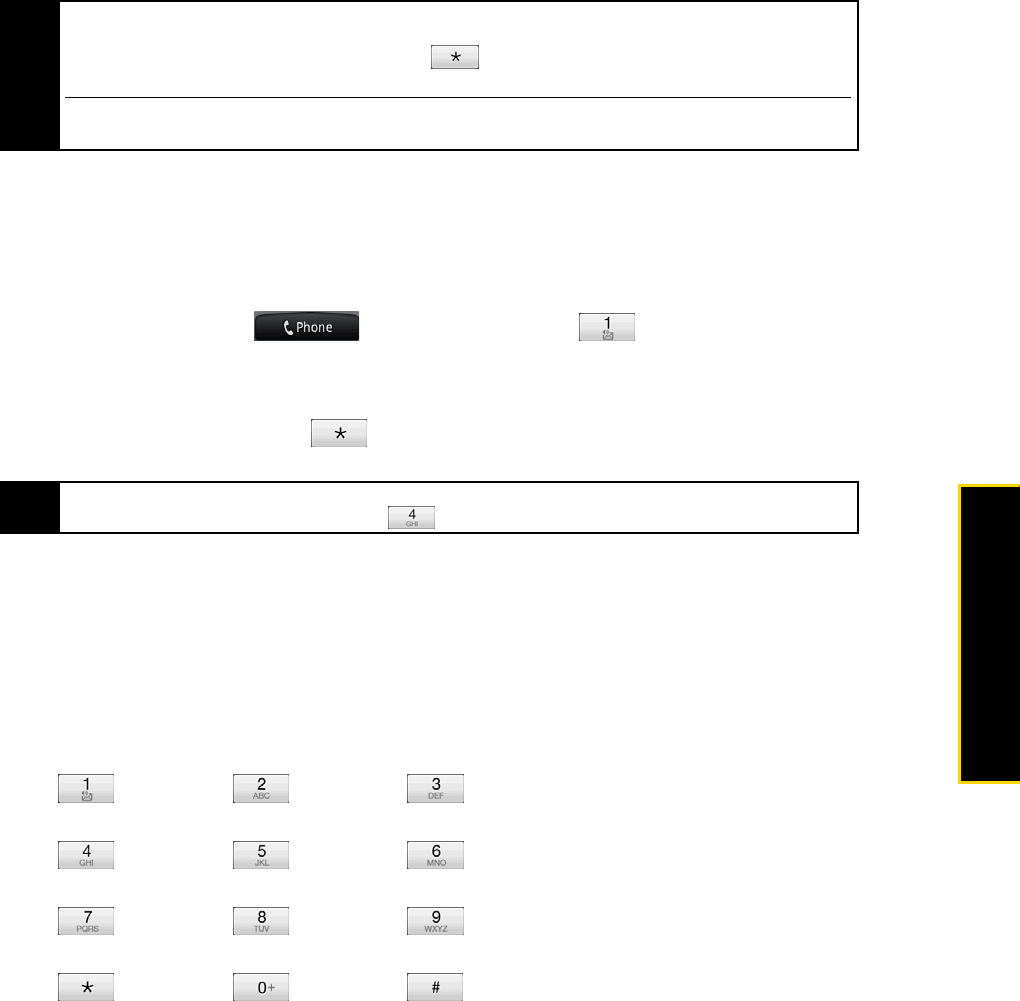
3A. HTC Service: The Basics 77
HTC Service: The Basics
Retrieving Your Voicemail Messages
You can review your messages directly from your wireless phone or from any other touch-tone phone. To
dial from your wireless phone, either speed dial your voicemail or use the menu keys.
Using One-Touch Message Access
ᮣFrom the Home screen, tap , and then press and hold .
Using Another Phone to Access Messages
1. Dial your wireless phone number.
2. When your voicemail answers, tap .
3. Enter your passcode.
Clearing the Message Icon
Your phone may temporarily continue to display the message icon after you have checked your voice and
text messages.
ᮣOpen the Notifications panel (see “Notifications Panel” on page 8) and tap Clear notifications.
Voicemail Key Guide
Here’s a quick guide to your keypad functions while listening to voicemail messages.
Date/Time Send Reply Advance
Replay Rewind Forward
Erase Return Call Save
Cancel Help Skip
Note When you are roaming off the Nationwide HTC Network, you may not receive notification of new voicemail
messages. HTC recommends that you periodically check your voicemail by dialing 1 + area code + your wireless
phone number. When your voicemail answers, press and enter your passcode. Roaming rates apply when
you access voicemail while roaming off the Nationwide HTC Network.
Your phone accepts messages even when it is turned off. However, your phone notifies you of new messages
only when it is turned on and you are in a HTC service area.
Tip When you call into voicemail, you first hear the header information (date, time, and sender information) for the
message. To skip directly to the message, tap during the header.
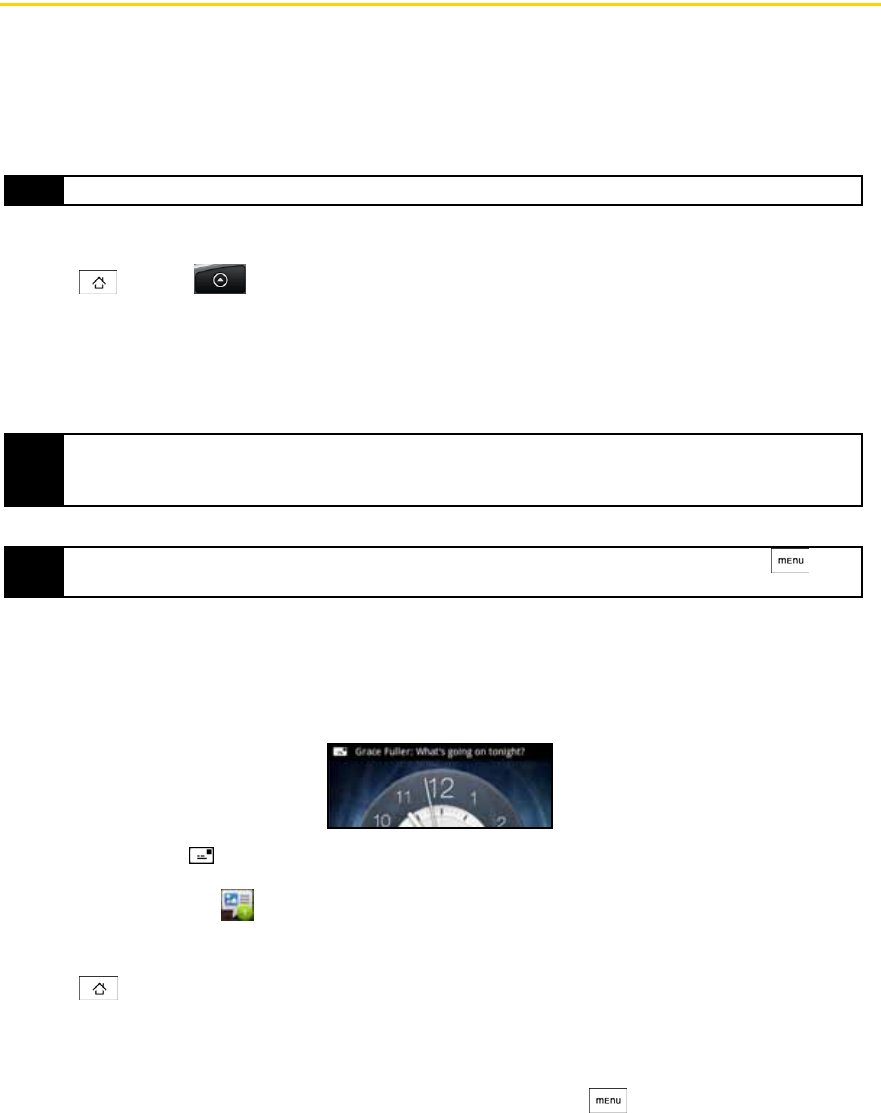
78 3A. HTC Service: The Basics
Text Messaging (SMS)
With Text Messaging (SMS), you can send and receive instant text messages between your wireless phone
and another messaging-ready phone.
In addition, Text Messaging includes a variety of preset messages, such as “I’m running late, I’m on my way,”
that make composing messages fast and easy. Use your phone to customize your own preset messages
(up to 160 characters).
Composing Text Messages
1. Press and tap > Messages.
2. On the All messages screen, tap Compose message. The Compose screen opens.
3. Enter the wireless phone number of the message recipient in the To box. As you enter the phone number,
matching contacts will appear on the screen. Tap a recipient or continue entering the recipient’s phone
number.
4. Tap the “Tap to compose” text box and then start composing your message.
5. When done, tap Send to send the text message.
Accessing Text Messages
Depending on your notification settings, the phone will play a ring tone, vibrate, or display the message
briefly in the status bar when you receive a new text or picture message. To change the notification for new
text and picture messages, see “Setting Text Message Options“ for details. .
A new message icon ( ) also appears in the notifications area of the status bar to notify you of a new text
or multimedia message. The Messages application icon (if shown on the Home screen) also displays the
number of new messages . To open the message, refer to the next section.
To read an SMS Text message:
ᮣPress , press and hold the status bar, and then slide it down to open the Notifications panel. Tap the
new message to open and read it.
– or –
On the All messages screen, tap the text message or message thread to open and read it.
To return to the All messages screen from a text message thread, press and tap All messages.
Note See your service plan for applicable charges for Text Messaging and SMS Voice Messaging.
Note As you near the 160-character limit, a counter will appear in the top right corner of the text box to tell you how
many characters are left. Once you go over that limit, a new message is created but automatically joined into one
when received.
Note To receive delivery reports and know when a text message is received, in the All messages list, press and
then tap Settings. In the SMS settings section, select the Delivery reports check box.
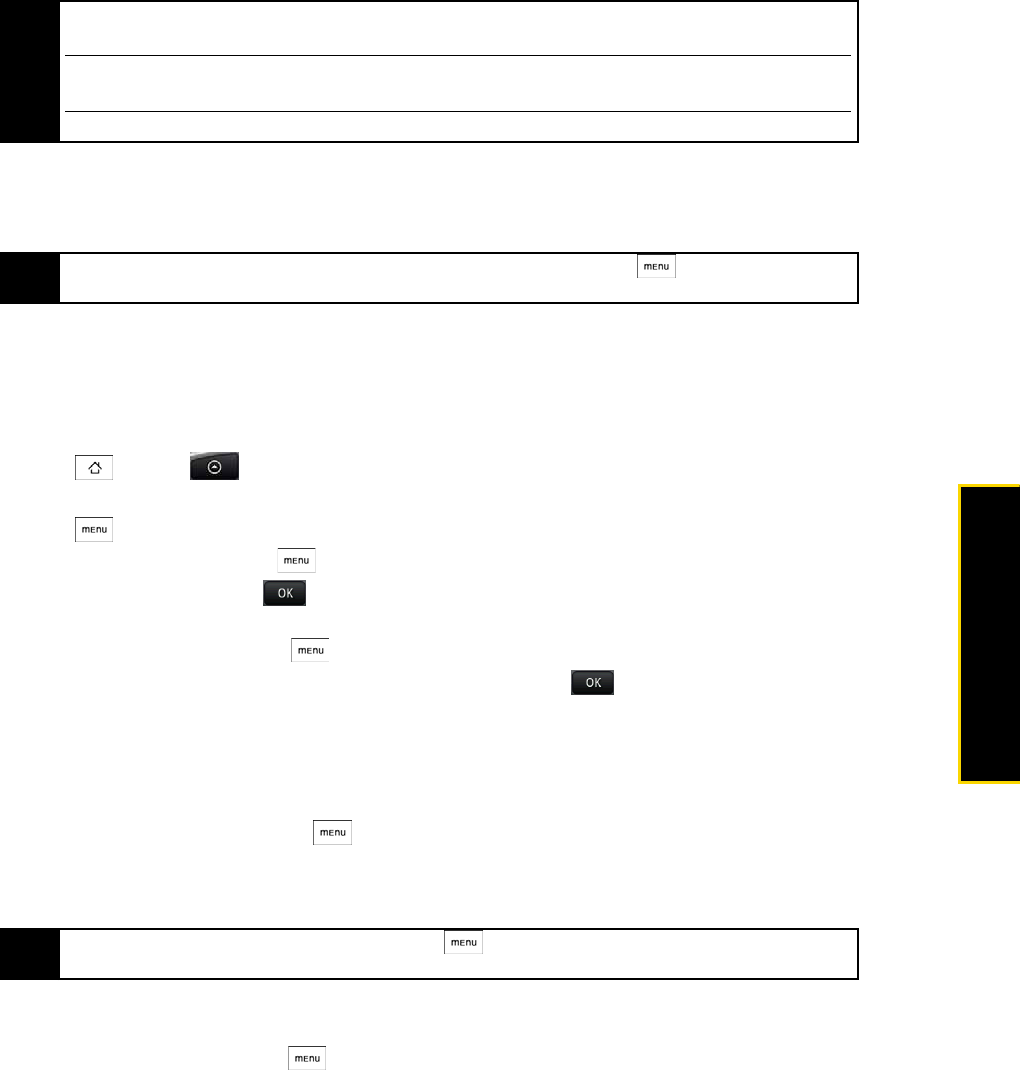
3A. HTC Service: The Basics 79
HTC Service: The Basics
To reply to a text message:
1. On the All messages screen, tap a text message thread to open it.
2. Tap the text box at bottom of the screen, enter your reply message, and tap Send.
Preset Messages
Preset messages make it easy to compose text messages.
To add or edit preset messages:
1. Press and tap > Messages > Compose message.
2. Tap the “Tap to compose” text box.
3. Press and tap Quick text. (You will see the list of preset messages.)
4. To add a new message, press and tap Insert.
5. Enter your message and tap .
– or –
4. To edit a preset message, press and tap Edit.
5. Tap the message you want to edit, edit the message, and then tap .
Deleting a Message or Message Thread
1. On the All messages screen, tap the message thread that you want to delete.
2. Do one of the following:
ⅢTo delete the entire thread, press , and then tap Delete. When prompted to confirm, tap OK.
– or –
ⅢTo delete a message in a thread, press and hold the message that you want to delete, and then tap
Delete message on the options menu. When prompted to confirm, tap OK.
Setting Text Message Options
On the All messages screen, press , tap Settings, and go to the SMS settings and Notification settings
section to set the text message options. You can set the following:
ⅷDelivery reports: Select this option to receive a report on the delivery status of your message.
ⅷService Center: Displays the message service center number used. Tap to change the number. It is
recommended that you do not change the number here for it may cause problems in receiving and
sending messages.
Note To view the details of a particular message, in the message thread, press and hold the message to open the
options menu, and tap View message details.
If a message contains a link to a Web page, tap the link to let you open the link in the browser or add the URL as
a bookmark.
If a message contains a phone number, tap the message to open Dialer so you can call the number.
Tip To reply a text message with a multimedia message, open the text message, press and tap Add subject or
Attach. The text message is automatically converted into a multimedia message.
Note To delete several messages on the message list, press while on the All messages screen, tap Delete, select
the messages you want to delete, and then tap Delete.
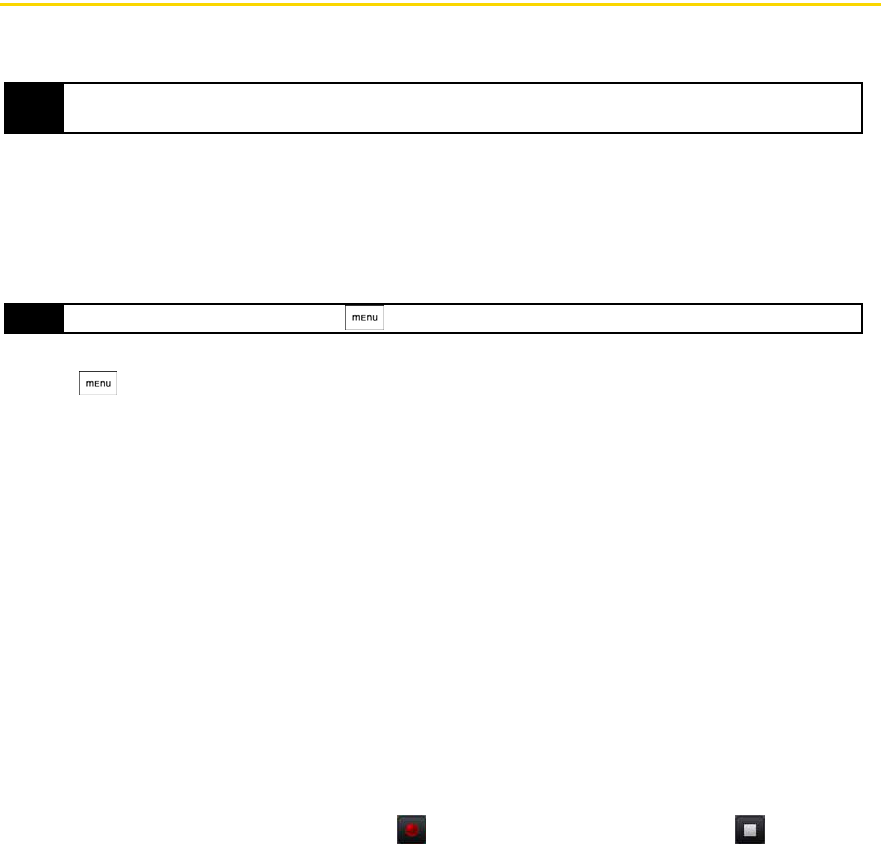
80 3A. HTC Service: The Basics
ⅷNotifications: Select this option if you want to receive a notification in the status bar when a new text or
multimedia message arrives.
ⅷSelect sound: If you want the phone to ring when a new message arrives, tap this option, and then select a
ring tone that is specific to new text and multimedia messages. The ring tone briefly plays when selected.
ⅷVibrate: Select this option if you want the phone to vibrate when a new text or multimedia message arrives.
Picture Messaging (MMS)
PIcture messages or MMS can contain text and pictures, recorded voice, audio or video files, picture
slideshows, contact cards (vCard), or appointments (vCalendar).
Composing Picture Messages
1. On the All messages screen, tap Compose message. The Compose screen opens.
2. Enter the wireless phone number or email address of your message recipient in the To box. As you enter
the phone number or email address, matching contacts will appear on the screen. Tap a recipient or
continue entering the recipient’s phone number or email address.
3. Tap the “Tap to compose” text box and then start composing your message.
4. Press and tap Attach.
5. On the Attach window, select from the following file attachments:
ⅢPicture opens Album to let you attach a picture to your message.
ⅢVideo opens Album to let you attach a video to your message.
ⅢAudio opens the Select music track screen. Tap a music file to select it and tap OK to attach the file to
your message. The music file plays back when you tap it.
ⅢLocation lets you attach a Footprint (page 120) or location on a map.
ⅢContact (vCard) lets you attach contact details of a contact in your phone.
ⅢAppointment (vCalendar) lets you attach an appointment from Calendar.
ⅢCreate lets you take a picture, record a video or audio file, or create a slideshow and then attach it to
your message.
●Camera: Opens the camera application. Take a picture of your subject and tap Done to attach it to your
message. For more information about the camera application, refer to “Taking Pictures and Shooting
Videos” on page 60.
●Record video: Opens the camcorder. Shoot a video and tap Done to attach it to your message. For
more information about the camcorder, refer to “Taking Pictures and Shooting Videos” on page 60.
●Record audio: Opens Voice Recorder. Tap to start recording your message; tap to stop
recording.
●Slideshow: Opens the Edit slideshow screen. Tap Add slide to create a new slide. Tap the created slide
(for example, Slide 1), tap Insert picture, and then select the picture you want to add to the slide. You
Note The Messages application automatically converts a text message into a picture message when you enter an email
address in the To box, added a message subject, or attach a file.
Tip You can add a subject line by pressing and then tapping Add subject.
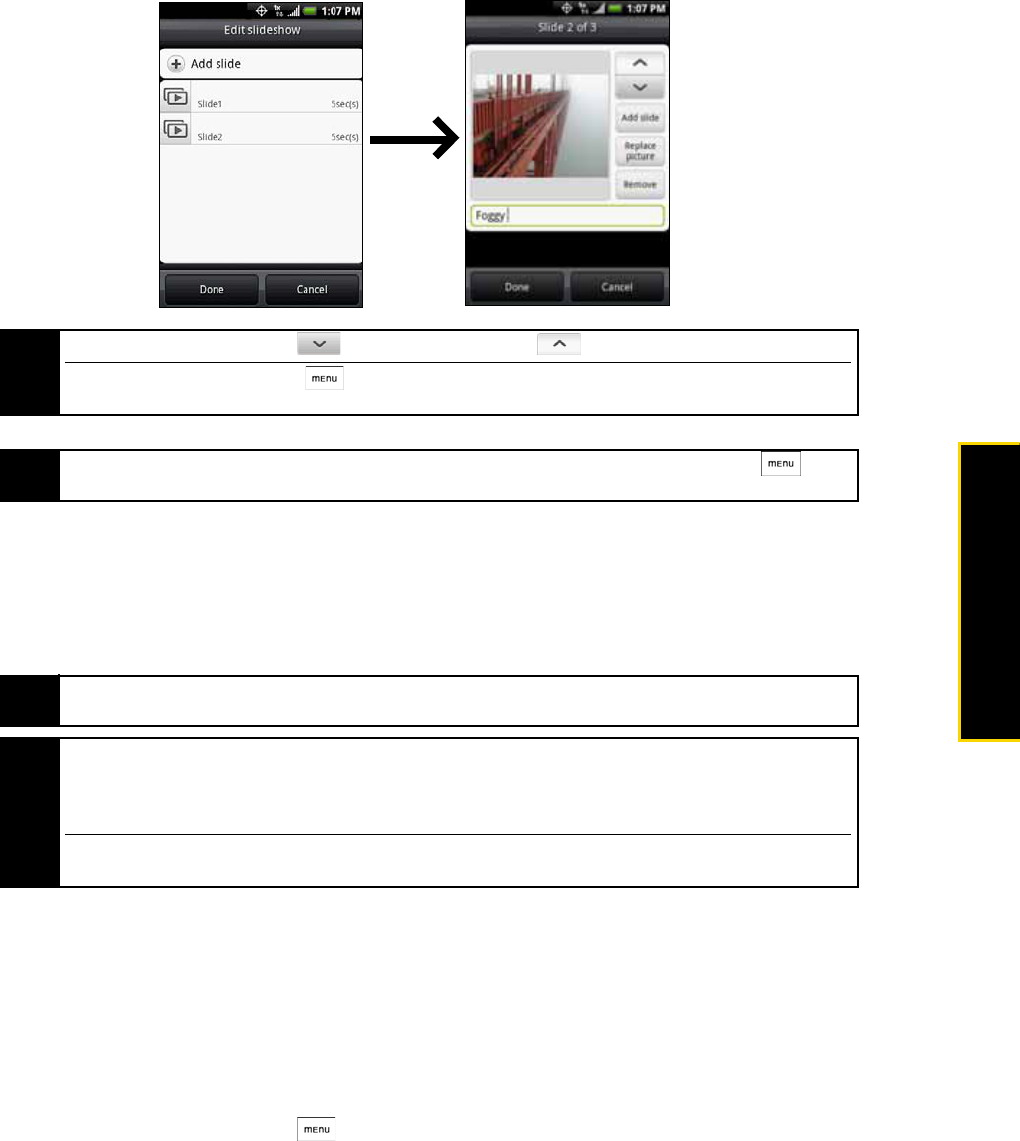
3A. HTC Service: The Basics 81
HTC Service: The Basics
can also navigate to the text box and enter a caption for the picture. When finished, tap Done to attach
the slideshow to your message.
6. When you are finished composing the picture message, tap Send.
Accessing Picture Messages
To open and view a picture message:
1. On the All messages screen, tap a picture message to open it.
2. Tap the Play button at the right side of a picture message to view it.
To reply to a picture message:
1. On the All messages screen, tap a picture message to open it.
2. Tap the text box at the bottom of the screen, compose your picture message (see “Composing Picture
Messages“), and tap Send.
Deleting a Picture Message
1. On the All messages screen, tap the picture message that you want to delete.
2. To delete the entire thread, press , and tap Delete. When prompted to confirm, tap OK.
– or –
To delete a message in a thread, press and hold the message that you want to delete, and tap Delete
message on the options menu. When prompted to confirm, tap OK.
Tip When editing multiple slides, tap to edit the next slide or tap to return to the previous slide.
While editing the slideshow, press to let you preview the slideshow, add music or video to a slide, remove a
slide, and more.
Note To receive delivery reports and know when a picture message is received, in the message list, press , and
then tap Settings. Select the Delivery reports check box below the MMS settings section.
Tip You can save the file attachment on the picture message to the microSD card. To save, press and hold the file and
tap Copy attached to SD card on the options menu.
Note When Auto-retrieve in MMS settings is disabled, only the message header is downloaded. To download the
entire message, tap the Download button at the right side of the message. Once the message has downloaded,
tap the Play button to view the message. For details about the Auto-retrieve setting, see “Setting Picture Message
Options“ for details.
If you are concerned about the size of your data downloads, check the picture message size before you
download it.
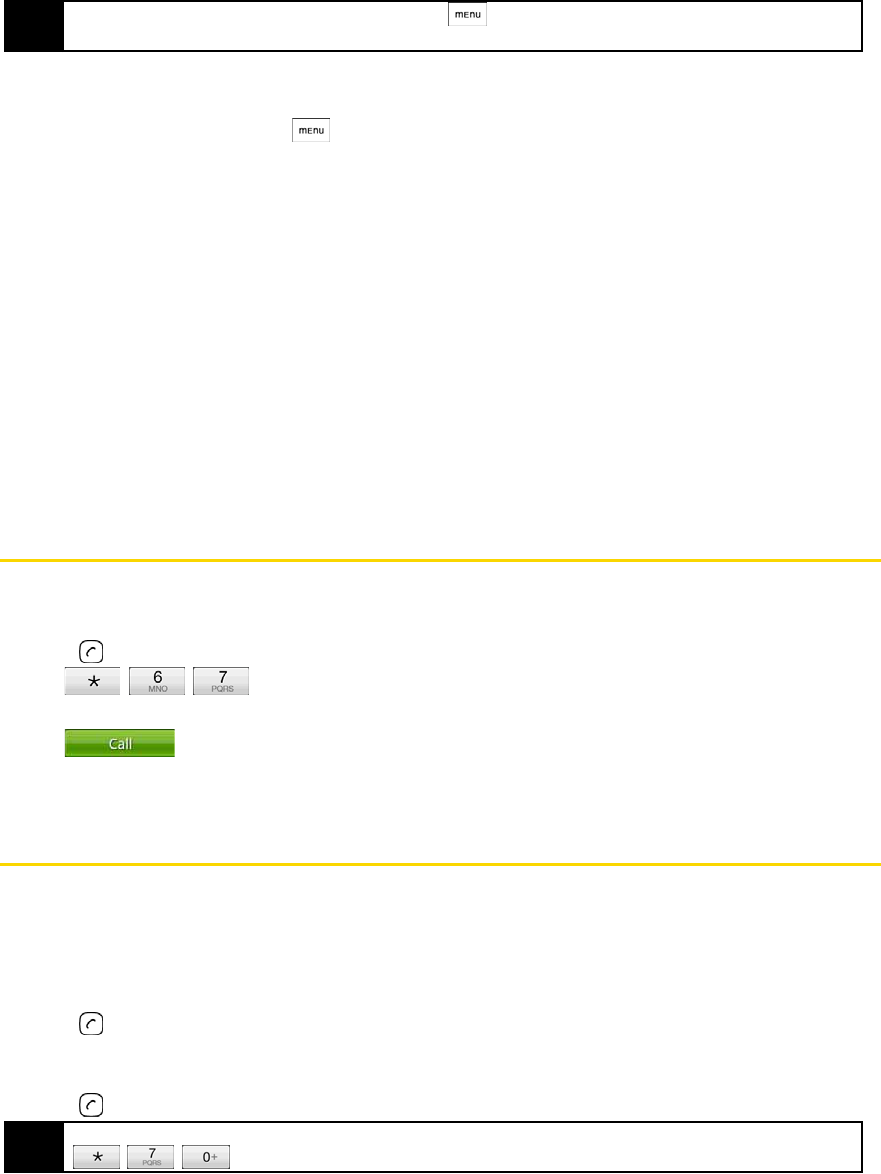
82 3A. HTC Service: The Basics
Setting Picture Message Options
On the All messages screen, press , tap Settings, and go to the MMS Settings section to set the picture
message options. You can set the following:
ⅷDelivery reports: Select this option to receive a report on the delivery status of your message.
ⅷRead reports: Select this option if you want to receive a report whether each recipient has read or has
deleted the message without reading it.
ⅷAuto-retrieve: Select this option to automatically retrieve all your picture messages completely. When
selected, the picture message header plus the message body and attachments will automatically
download to your phone. If you clear this check box, only the picture message header will be retrieved
and shown in your All messages screen.
ⅷRoaming auto-retrieve: Select this option to automatically retrieve all your picture messages completely
when roaming. This may incur significant phone charges.
ⅷPriority settings: Set the message priority of picture messages sent.
ⅷMaximum message size: Set the maximum file size of a picture message. The picture message will not be
sent out if it exceeds the file size set here.
Caller ID
Caller ID allows people to identify a caller before answering the phone by displaying the number of the
incoming call. If you do not want your number displayed when you make a call, follow these steps.
1. Press to open the Phone screen.
2. Tap .
3. Enter a phone number.
4. Tap .
To permanently block your number, call HTC Customer Service.
Call Waiting
When you’re on a call, Call Waiting alerts you to incoming calls by sounding two beeps. Your phone’s screen
informs you that another call is coming in and displays the caller’s phone number (if it is available and you
are in digital mode).
To respond to an incoming call while you’re on a call:
ᮣPress . (This puts the first caller on hold and answers the second call.)
To switch back to the first caller:
ᮣPress again.
Note To delete several messages on the message list, press while on the All messages screen, tap Delete, select
the messages you want to delete, and tap Delete.
Tip For those calls where you don’t want to be interrupted, you can temporarily disable Call Waiting by pressing
before placing your call. Call Waiting is automatically reactivated once you end the call.
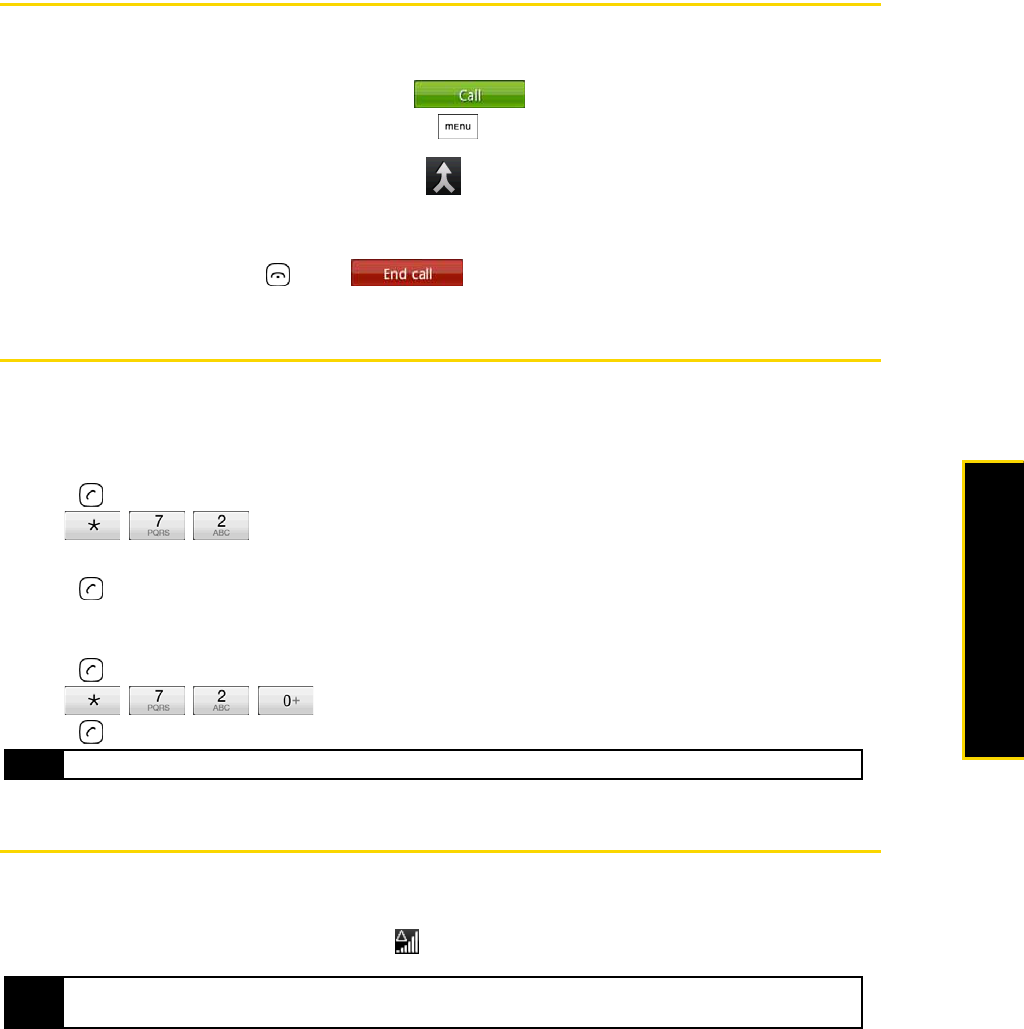
3A. HTC Service: The Basics 83
HTC Service: The Basics
Making a Three-Way Call
With Three-Way Calling, you can talk to two people at the same time. When using this feature, the normal
airtime rates will be charged for each of the two calls.
1. On the Phone screen, enter a number and tap .
2. Once you have established the connection, press , tap Add call, and dial the number of the second
participant. (This puts the first caller on hold and dials the second number.)
3. When you’re connected to the second party, tap .
If one of the people you called hangs up during your call, you and the remaining caller stay connected. If
you initiated the call and are the first to hang up, all callers are disconnected.
To end the three-way call, press or tap .
Call Forwarding
Call Forwarding lets you forward all your incoming calls to another phone number – even when your phone
is turned off. You can continue to make calls from your phone when you have activated Call Forwarding.
To activate Call Forwarding:
1. Press to open the Phone screen.
2. Tap .
3. Enter the area code and phone number to which you want your calls forwarded.
4. Press . (You will see a message and hear a tone to confirm the activation of Call Forwarding.)
To deactivate Call Forwarding:
1. Press to open the Phone screen.
2. Tap .
3. Press . (You will see a message and hear a tone to confirm the deactivation.)
Roaming
Roaming Icon
Your display screen always lets you know when you’re off the Nationwide HTC Network. Anytime you are
roaming, the phone displays the roaming icon ( ).
Roaming on Other Digital Networks
When you’re roaming on digital networks, your call quality and security will be similar to the quality you
receive when making calls on the Nationwide HTC Network. However, you may not be able to access certain
features, such as data services, depending on the available network.
Note You are charged a higher rate for calls you have forwarded.
Tip Remember, when you are using your phone off the Nationwide HTC Network, always dial numbers using 11 digits
(1 + area code + number).
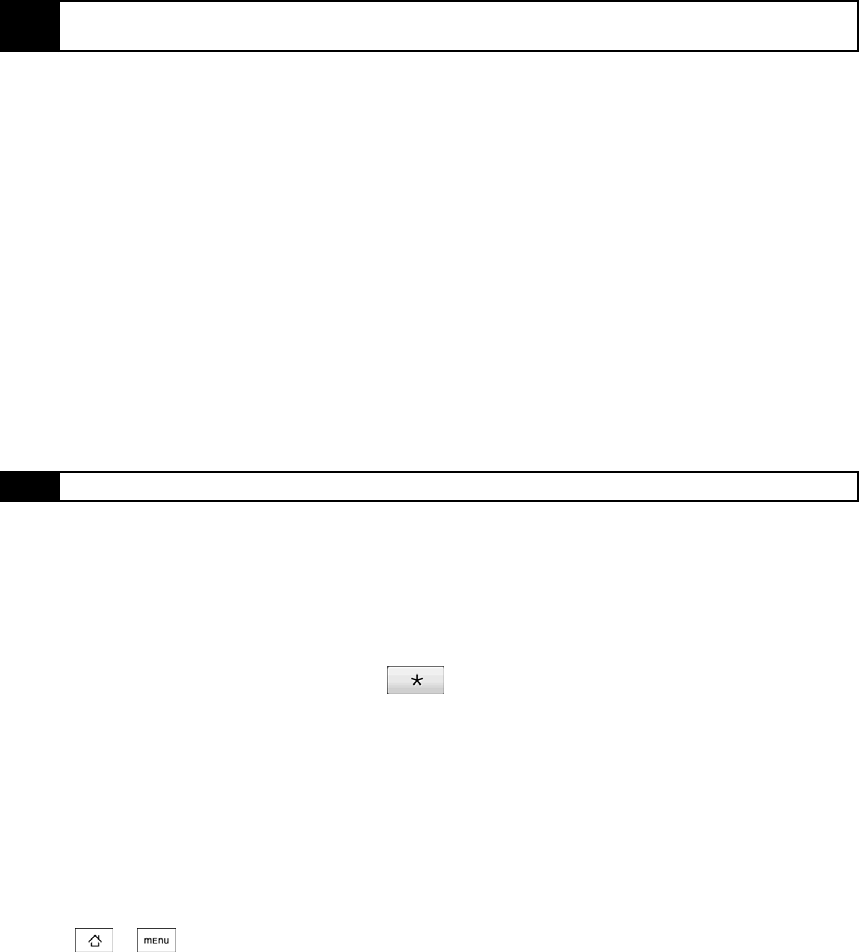
84 3A. HTC Service: The Basics
Roaming on Analog Networks
When you roam on analog networks, you will experience quality similar to that provided by other analog
carriers today. Although some features, such as HTC Power Vision and HTC Voice Command, will be
unavailable, you can still make and receive calls and access voicemail. If you are accustomed to HTC
service, you may notice some of the following differences when using analog service:
ⅷYou are more likely to experience static, crosstalk, fade-out, and dropped calls.
ⅷSome features which are standard on the Nationwide HTC Network, such as call waiting, data services,
and direct international dialing, may be unavailable.
ⅷThough callers can leave voicemail messages while you are roaming, you may not receive notification
until you return to the Nationwide HTC Network. (See “Checking for Voicemail Messages While Roaming”
on page 84.)
ⅷThere are security and privacy risks (eavesdropping and cloning) that exist with conventional analog
services today.
ⅷYour battery’s charge will deplete more quickly and you will need to recharge it more often when you use
your phone for analog roaming.
Checking for Voicemail Messages While Roaming
When you are roaming off the Nationwide HTC Network, you may not receive on-phone notification of new
voicemail messages. Callers can still leave messages, but you will need to periodically check your voicemail
for new messages if you are in a roaming service area for an extended period of time.
1. Dial 1 + area code + your phone number.
2. When you hear your voicemail greeting, tap .
3. Enter your passcode at the prompt and follow the voice prompts.
When you return to the Nationwide HTC Network, voicemail notification will resume as normal.
Setting Roam Mode
Your phone allows you to control your roaming capabilities. By using the Roaming menu option, you can
determine which signals your phone accepts.
Choose from three different settings on your dual-band phone to control your roaming experience.
1. Press
> > Settings > Wireless controls > Mobile network settings.
2. Tap Roaming.
ⅢHTC Only to access only the HTC network and prevent roaming on other networks.
ⅢAutomatic to seek service on the Nationwide HTC Network. When HTC service is unavailable, the phone
searches for an alternate system.
Call Guard
Your phone has two ways of alerting you when you are roaming off the Nationwide HTC Network: the
onscreen roaming icon and Call Guard. Call Guard makes it easy to manage your roaming by requiring an
extra step before you can place or answer a roaming call. (This additional step is not required when you
make or receive calls while on the Nationwide HTC Network.)
Note If you’re on a call when you leave the Nationwide HTC Network, your call is dropped. If your call is dropped in an
area where you think HTC service is available, turn your phone off and on again to reconnect to the network.
Note When using your phone in analog mode, the phone may feel warm. This is normal for analog operation.
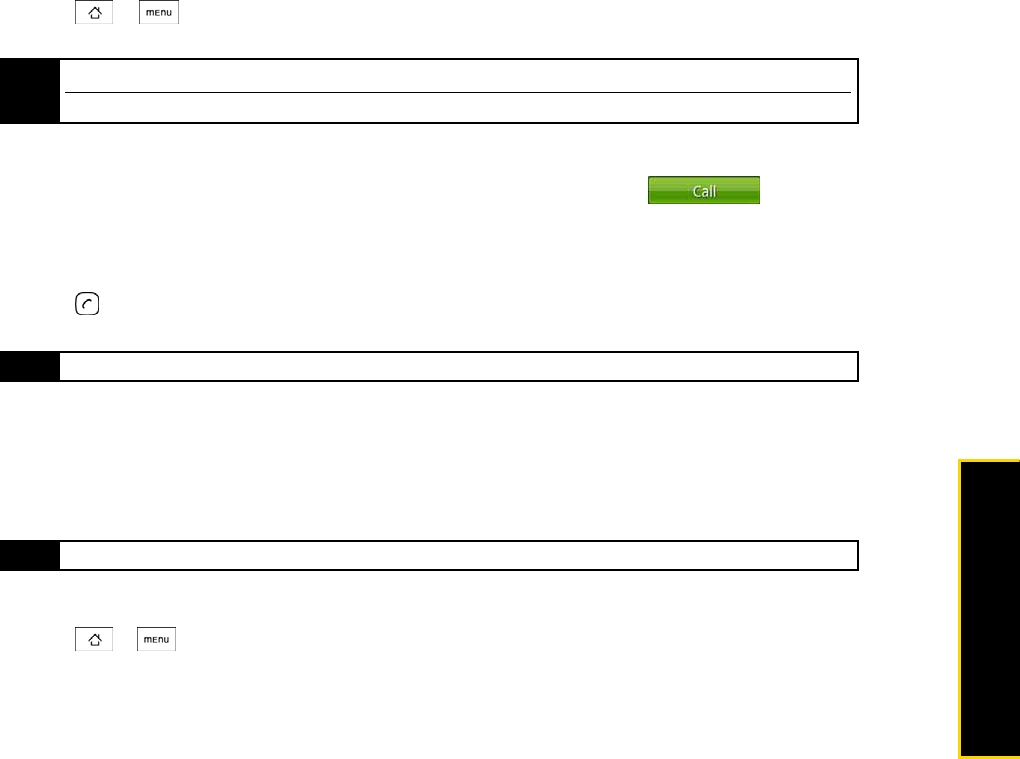
3A. HTC Service: The Basics 85
HTC Service: The Basics
To turn Call Guard on or off:
1. Press
> > Settings > Wireless controls > Mobile network settings.
2. Select the Call guard check box to turn on Call Guard; clear the check box to turn off Call guard.
To place roaming calls with Call Guard on:
1. On the Phone screen, dial 1 + area code + the seven-digit number and tap .
2. Select Roam Call.
To answer incoming roaming calls with Call Guard on:
1. Press . (A message will be displayed notifying you that roaming charges will apply.)
2. Tap Answer.
Data Roam Guard
Depending on service availability and roaming agreements, your phone may be able to access data
services while roaming on certain digital systems. You can set your phone to alert you when you are
roaming off the Nationwide HTC Network and try to use data services such as messaging.
To set your Data Roam Guard notification:
1. Press
> > Settings > Wireless controls > Mobile network settings.
2. Tap Data roaming guard.
ⅢDefault uses the roaming type defined in the PRL.
ⅢAlways ask sets your phone’s Data Roam Guard feature on. You will see a prompt and will be required to
respond anytime you access data services while roaming.
ⅢNever ask turns your phone’s Data Roam Guard feature off. You will not be notified of your roaming
status when accessing data services.
To use data services when Data Roam Guard is active:
ᮣWhen a pop-up notification appears informing you that data roam charges may apply, tap Roam to
connect.
Note Your phone’s Call Guard is turned off by default.
Voice dialing and speed dialing are not available when you are roaming with Call Guard enabled.
Note If the Call Guard check box is selected, you need to take extra steps to make and receive roaming calls.
Note Your phone’s Data Roam Guard is turned off by default.

86 3B. Web and Data Services
ࡗWays of Connecting to the Internet (page 86)
ࡗConnecting Using Wi-Fi (page 86)
ࡗGetting Started With Data Services (page 87)
ࡗSetting Up Email and Social Networking Accounts (page 88)
ࡗUsing the Browser (page 89)
ࡗAccessing Messages (page 93)
ࡗGoogle Talk (page 101)
ࡗAccessing HTC Instant Messaging (page 104)
ࡗDownloading Applications and Games From Android Market (page 104)
ࡗPeep (page 107)
ࡗStocks (page 109)
ࡗWeather (page 110)
ࡗMobile Network Sharing (page 111)
ࡗData Services FAQs (page 111)
Ways of Connecting to the Internet
Your device’s networking capabilities allow you to wirelessly access the Internet or your corporate network
through one of the following connections:
ⅷWi-Fi (See “Connecting Using Wi-Fi” for details.)
ⅷData Services (See “Getting Started With Data Services” for details.)
Connecting Using Wi-Fi
Wi-Fi provides wireless Internet access over distances of up to 300 feet. To use your phone’s Wi-Fi, you need
access to a wireless access point or “hotspot.”
Turning Wi-Fi On and Connecting to a Wireless Network
1. Press > and tap Settings > Wireless controls.
2. Select the Wi-Fi check box to turn Wi-Fi on. The phone will scan for available wireless networks.
3. Tap Wi-Fi settings. The network names and security settings (Open network or Secured with WEP) of
detected Wi-Fi networks are displayed in the Wi-Fi networks section.
4. Tap a Wi-Fi network to connect. If you selected an open network, you will be automatically connected to
the network. If you selected a network that is secured with WEP, enter the key, and tap Connect.
3B. Web and Data Services
Note The availability and range of the Wi-Fi signal depends on the number, infrastructure, and other objects through
which the signal passes.
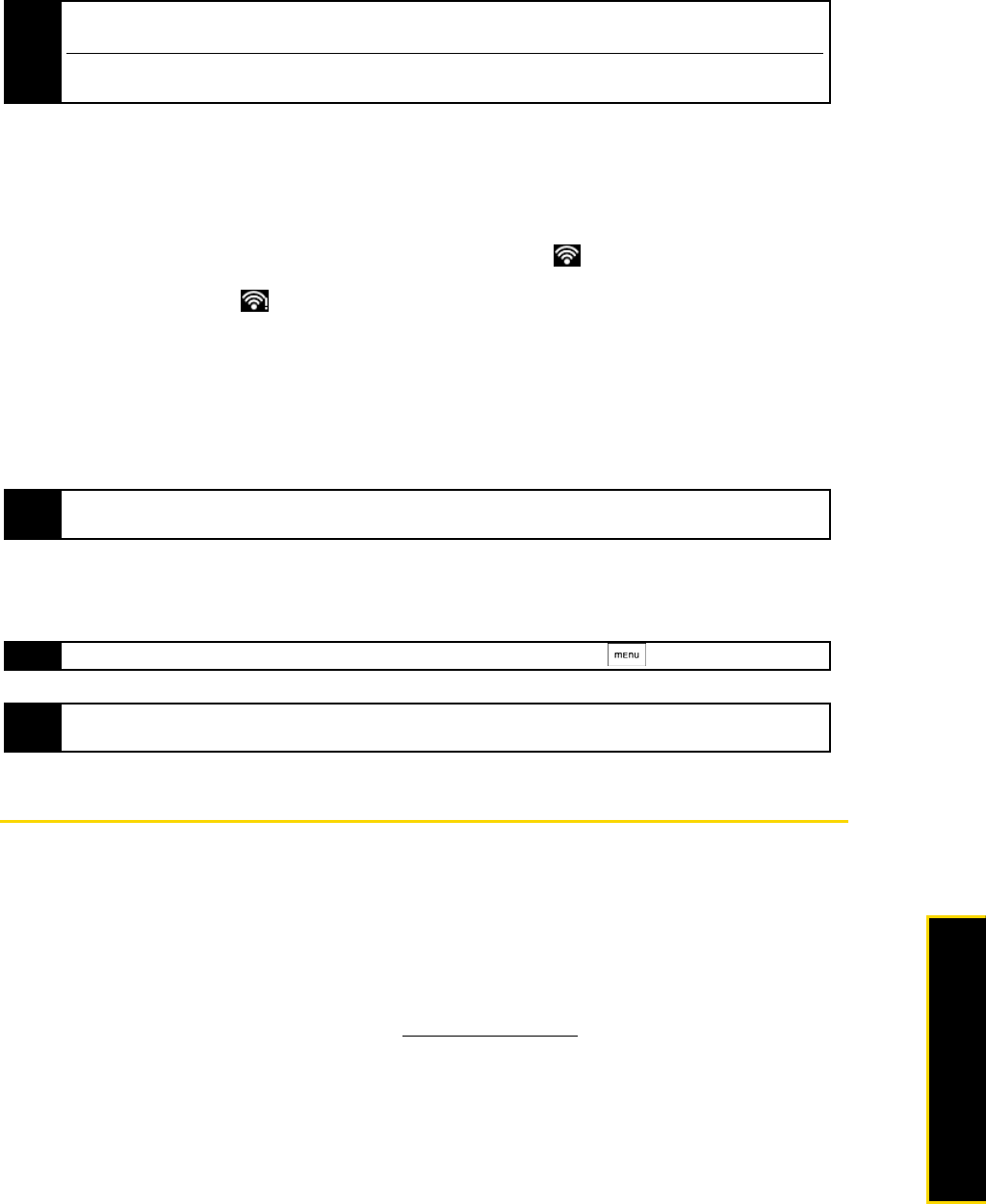
3B. Web and Data Services 87
Web and Data Services
Checking the Wireless Network Status
You can check the current wireless connection status from the following:
Status bar
When your phone is connected to a wireless network, the Wi-Fi icon ( ) appears in the status bar and
tells you the approximate signal strength (number of bands that light up). If Network notification in Wi-Fi
settings is enabled, this icon ( ) appears in the status bar whenever the phone detects an available
wireless network within range.
Wi-Fi networks
On the Wireless controls screen, tap Wi-Fi settings, and then tap the wireless network that the phone is
currently connected to.
The Wi-Fi network name, status, speed, signal strength, security information, and IP address are displayed.
To connect to another Wi-Fi network:
1. On the Wireless controls screen, tap Wi-Fi settings. Detected Wi-Fi networks are displayed in the Wi-Fi
networks section.
2. Tap another Wi-Fi network to connect to it.
Getting Started With Data Services
With your HTC service, you are ready to start enjoying the advantages of data services. This section will help
you learn the basics of using your data services, including managing your user name, launching a data
connection, and navigating the Web with your phone.
Your User Name
When you buy your phone and sign up for service, you’re automatically assigned a user name, which is
typically based on your name and a number, followed by “@HTCpcs.com.” (For example, the third John
Smith to sign up for HTC data services might have jsmith003@HTCpcs.com as his user name.)
When you use HTC Power Vision services, your user name is submitted to identify you to the Nationwide
HTC Network. Your user name will be automatically programmed into your phone. You don’t have
to enter it.
Note The next time your phone connects to a previously accessed secured wireless network, you will not be prompted
to enter the WEP key again, unless you reset your phone to its factory default settings.
Wi-Fi networks are self-discoverable, which means no additional steps are required for your phone to connect to a
Wi-Fi network. It may be necessary to provide a username and password for certain closed wireless networks.
Note If you want to remove the phone’s wireless network settings, tap Forget on this window. You need to enter the
settings again if you want to connect to this wireless network.
Tip To manually scan for available Wi-Fi networks, on the Wi-Fi settings screen, press and tap Scan.
Note If the wireless network you want to connect to is not in the list of detected networks, scroll down the screen, and
tap Add a Wi-Fi network. Enter the wireless network settings and tap Save.
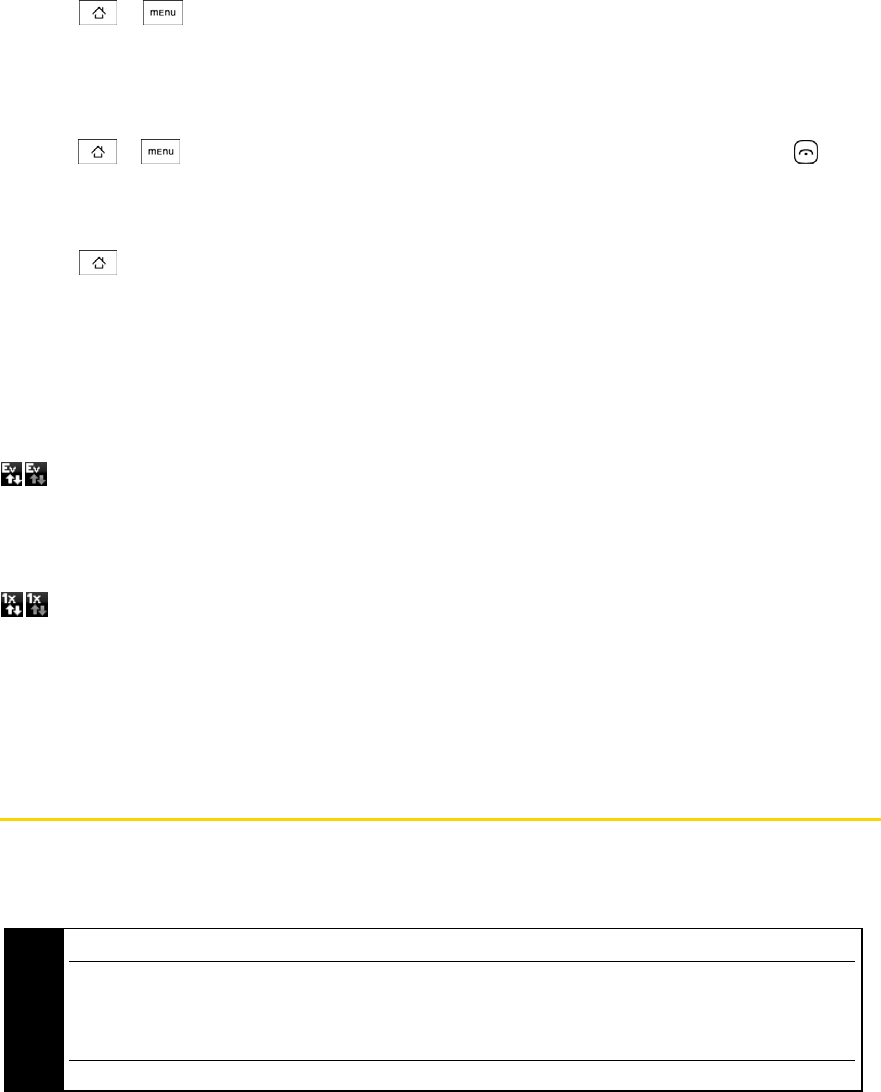
88 3B. Web and Data Services
Finding Your User Name
If you aren’t sure what your user name is, you can easily find it on your phone.
ᮣPress > , tap Settings > About phone > Status, and then scroll down to Current username.
Updating Your User Name
If you choose to change your user name and select a new one online, you must then update the user name
on your phone.
ᮣPress > , tap Settings > About phone > System updates > Update profile. (To cancel, press before
completing the update.)
Launching a Web Connection
ᮣPress and tap Browser. (Your data connection starts and you see the HTCWebSM home page.)
While connecting, you may see an animation and a “Connecting” message.
Data Connection Status and Indicators
Your phone displays the current status of your data connection through indicators at the top of the screen.
The following symbols are used:
Your phone is connected to the high-speed HTC Mobile Broadband Network (EVDO). When the arrows
are white, your phone is transferring data (for example, when you are opening a Web page); when the
triangles are gray, your phone is connected to the network but is not currently transferring data (for
example, when you are viewing a Web page that is completely open). In either state, you can receive
incoming calls.
Your phone is on and is connected to the HTC 1xRTT data network. When the arrows are white, your phone
is transferring data (for example, when you are opening a Web page) and you cannot receive calls. When the
arrows are gray, your phone is connected to the network but is not currently transferring data (for example,
when you are viewing a Web page that is completely open), and you can receive calls.
If you do not see an indicator, your phone does not have a current data connection. To launch a connection,
see “Launching a Web Connection” on page 88.
Setting Up Email and Social Networking Accounts
When you turn on your phone for the first time, you will be given options to let you quickly set up various
accounts, such as Google account, Facebook™, Flickr®, Twitter™, Microsoft® Exchange ActiveSync, and
other email accounts.
1. Choose the language you want to use and then tap Next.
2. You may be asked to determine some options, view tutorials, or set up a Wi-Fi connection in the following
screens. Tap Next or Skip to go to the following screen.
Note You need to be connected to the Internet to set up accounts.
Setting up some of the accounts does not give you access to all the features of the application. For example,
when you set up a Facebook account, you will only be able to view your Facebook albums and your friends’
albums. You can, however, download the Facebook application from Android Market or use the browser to go to
the Facebook website.
You do not need to set up all accounts to use the phone.
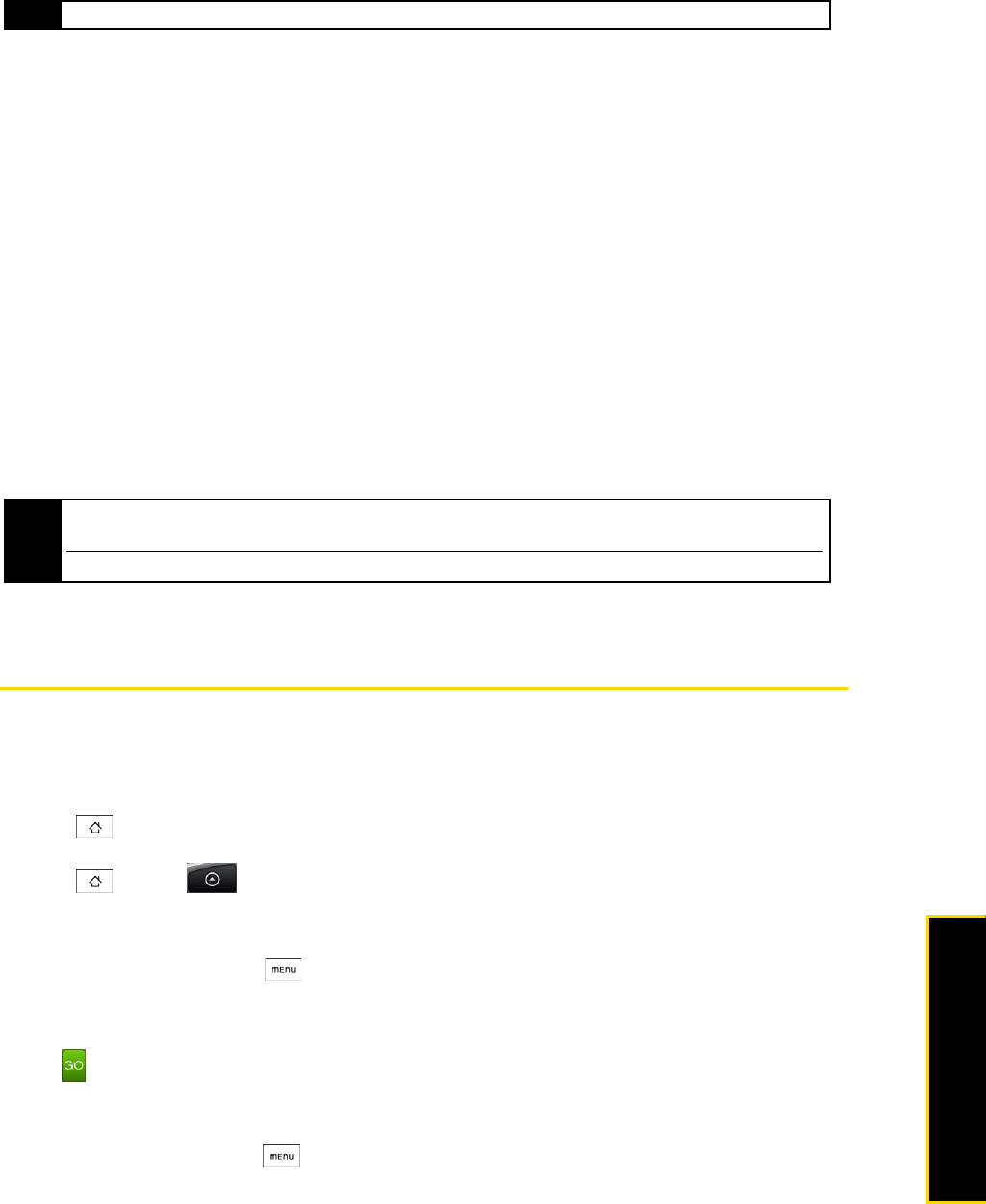
3B. Web and Data Services 89
Web and Data Services
3. In the Set up accounts screen, choose which accounts you want to set up. Tap Skip if you do not want to
set up accounts.
ⅢTap Google account to set up a Google account. Follow the instructions to set up a Google account.
You need to be signed in to a Google account to use most of the Google Apps on the phone.
ⅢTap Microsoft Exchange ActiveSync to set up an Exchange Active account or Other mail account to set up a
Web-based email account. To learn how to set up an Exchange ActiveSync account and other email
accounts, refer to “Email” on page 93.
After setting up an account, you will be taken back to the Set up accounts screen. Tap Next when you are
done setting up the accounts.
4. In the Set up social network accounts screen, choose which social network accounts you want to set up.
Tap Skip if you do not want to set up accounts.
ⅢTap Facebook to log in to your Facebook account.
ⅢTap Flickr to log in to your Flickr account.
ⅢTap Twitter to log in to your Twitter account. (See “Peep” on page 107 for details.)
After setting up an account, you will be taken back to the Set up social network accounts screen.
Tap Next when you are done setting up the accounts.
5. On the Location consent screen, select the check box to allow Google’s location service to collect
location data, and then tap Next.
6. Tap Finish to finish the setup process and go to the Home screen.
Using the Browser
Open the browser to start surfing the Web. The browser is fully optimized and comes with advanced features
that let you enjoy Internet browsing on your phone.
Opening the Browser
ᮣPress and tap Browser.
– or –
Press and tap > Browser.
Going to a Website
1. On the browser screen, press and tap the URL box on top of the screen.
2. Enter the website address using the keyboard. As you enter the address, matching website addresses
will appear on the screen. Tap an address to go directly to that website or continue entering the website
address.
3. Tap on the onscreen keyboard.
Setting Your Home Page
1. With the browser open, press , and then tap More > Settings > Set home page.
2. In the Set home page screen, select the home page you want to use.
Note You will only be asked to set up a Wi-Fi connection if there is a Wi-Fi connection available.
Note Some applications on your phone, such as World Clock and Weather, require Google’s location service to
automatically update the time and weather information for your current location.
Google’s location service connects to the Internet using your phone’s data or Wi-Fi connection.
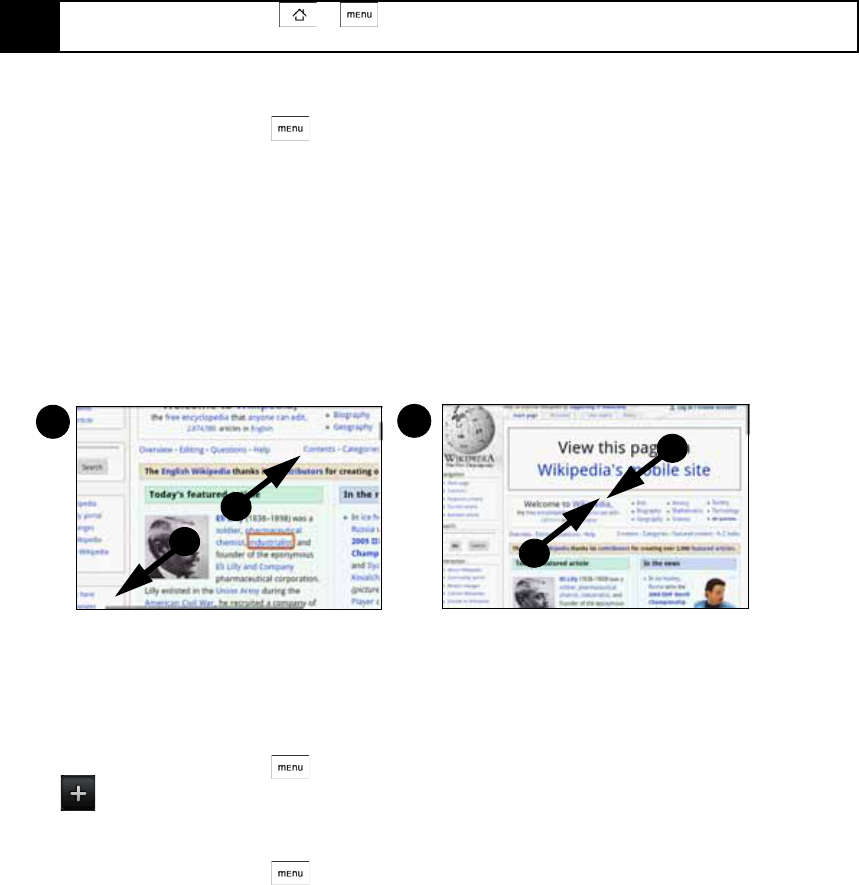
90 3B. Web and Data Services
ⅢUse default to set the HTCWebSM home page as your home page.
ⅢUse current to set the current Web page you are browsing as your home page.
ⅢSet home page to enter the URL of the website you want to use as your home page.
Changing the Screen Orientation
The phone automatically changes the screen orientation depending on how you are holding your phone.
Browsing Classic Views (not Mobile Version) of Websites
ᮣOn the browser screen, press , tap More > Settings, and clear the Mobile view check box.
Navigating on a Web Page
ᮣRoll the trackball or slide your finger on the screen in any direction to navigate and view other areas of
the Web page.
Zooming In or Out on a Web Page
ᮣTap the screen twice quickly to zoom in; tap the screen twice quickly again to zoom out.
– or –
Pinch or spread the screen to zoom in and out.
Opening a New Browser Window
Open multiple browser windows to make it easier for you to switch from one website to another. You can
open up to four browser windows.
1. On the browser screen, press and then tap Windows.
2. Tap . A new browser window opens and goes to the home page that is set.
Switching between Browser windows
1. On the browser screen, press and then tap Windows.
Note The Orientation check box in > > Settings > Sound & display needs to be selected for the screen
orientation to automatically change.
12
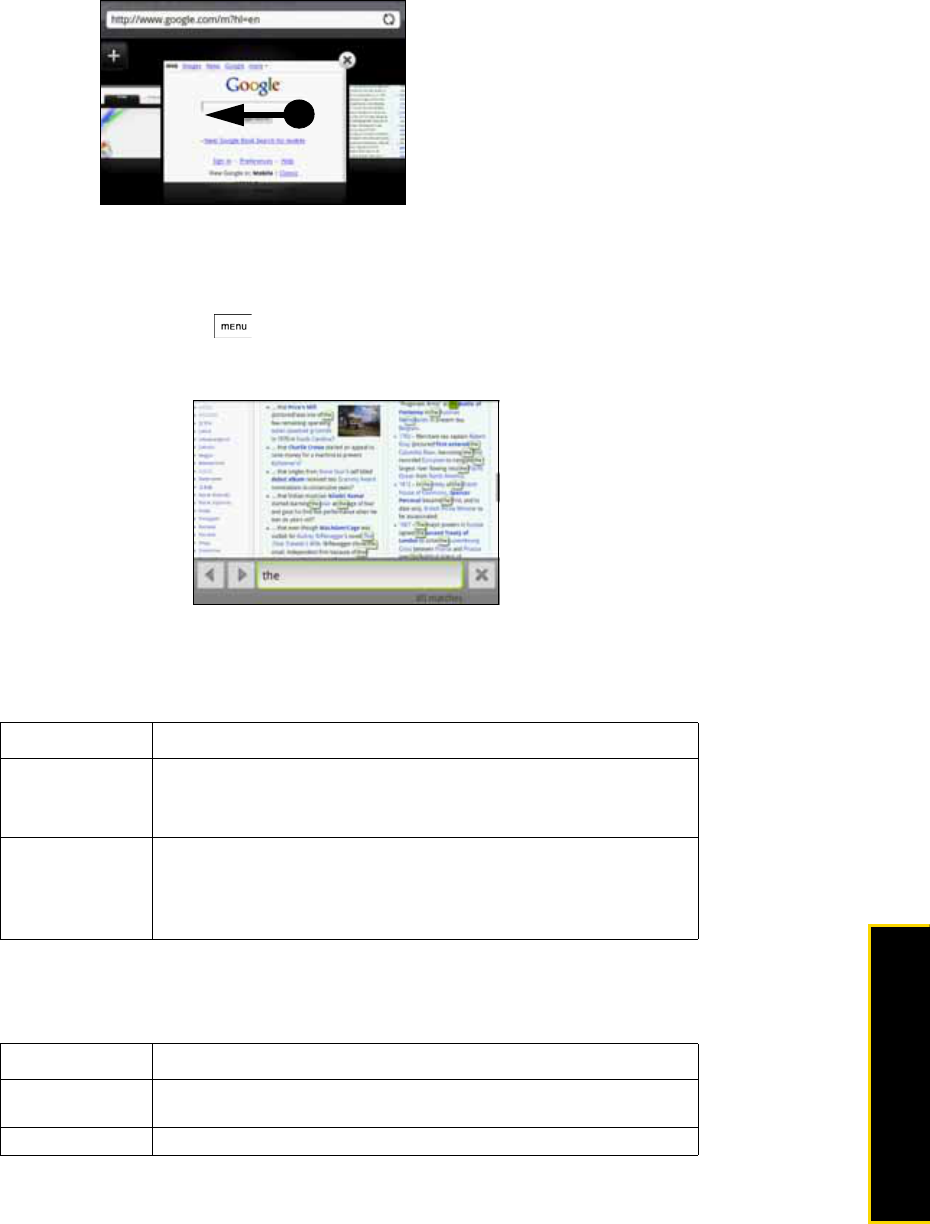
3B. Web and Data Services 91
Web and Data Services
2. Select the browser window you want to view by sliding your finger on the screen from right to left.
3. Tap the browser window to open it in full-screen mode.
Finding Text In a Web Page
1. While viewing a Web page, press and tap More > Find on page.
2. Enter the search item. As you enter characters, matching characters will be highlighted in green. Tap the
left or right arrow to go to the previous or next matching item.
Selecting Links in Web Pages
Navigate to links on a Web page using the trackball. Links are enclosed in a colored box when selected.
The browser also recognizes some phone numbers and addresses that allow you to call the phone number
or locate the address in Google Maps™. Recognized phone numbers and addresses are highlighted in
green when navigated to.
Link What to do
Web page
address (URLs)
ⅷTap the link to open the Web page.
ⅷPress and hold the link to open a menu that allows you to open,
bookmark, copy to the clipboard, or share the link using email.
Email address ⅷTap to send an email message to the email address.
ⅷPress and hold and tap Copy on the menu to copy the email
address to the clipboard. You can paste the email address later
when creating a new contact or sending a new email message.
Link What to do
Location
address
Tap the address to open Google Maps and locate the address.
Phone number Tap to open the Phone screen to call the phone number.

92 3B. Web and Data Services
Downloading Web Applications
Before you can download Web applications, you must first enable downloading from the phone settings.
1. Press
> and tap Settings > Applications.
2. Select the Unknown sources check box.
3. When the Attention dialog box opens, tap OK.
To view your downloads:
ᮣOn the browser screen, press and tap More > Downloads.
Managing Bookmarks
You can store as many bookmarks as you want on your phone.
To bookmark a website:
1. On the browser screen, go to the website you want to bookmark.
2. Press and tap New bookmark. The New bookmark screen opens.
3. Edit Name if needed and then tap Done.
To open a bookmark:
1. On the browser screen, press and tap Bookmarks.
2. Select the bookmark you want to open by sliding your finger from right to left.
3. Once the bookmark you want to open is selected, tap it to open it.
By default, a snapshot of the bookmarked website is shown, letting you visually select the bookmark. You
can toggle between using visual bookmarks or a list by pressing and then tapping List or Thumbnails
on the Bookmarks screen.
To edit a bookmark:
1. On the browser screen, press and tap Bookmarks.
2. Press and tap Edit.
3. Select the bookmark you want to edit by sliding your finger from right to left (in Thumbnail view.)
4. Once the bookmark you want to edit is selected, tap it.
5. Enter your changes and tap Done.
Tip When links are too small for tapping directly on the screen, highlight it with the trackball, and then either press the
trackball to open the link, or press and hold the trackball to select an option from the menu.
Note All downloaded applications are saved to the microSD card. Before you download an application from the Web,
make sure that you have installed a microSD card on your phone. For information on how to install a microSD
card, “Inserting the microSD Card” on page 58.
WARNING Applications downloaded from the Web can be from unknown sources. To protect your phone and
personal data, download applications only from trusted sources such as Android Market. Refer to
“Downloading Applications and Games From Android Market” for details.
Tip If you are using the List view, press and hold the bookmark you want to edit and tap Edit bookmark to edit the
bookmark.
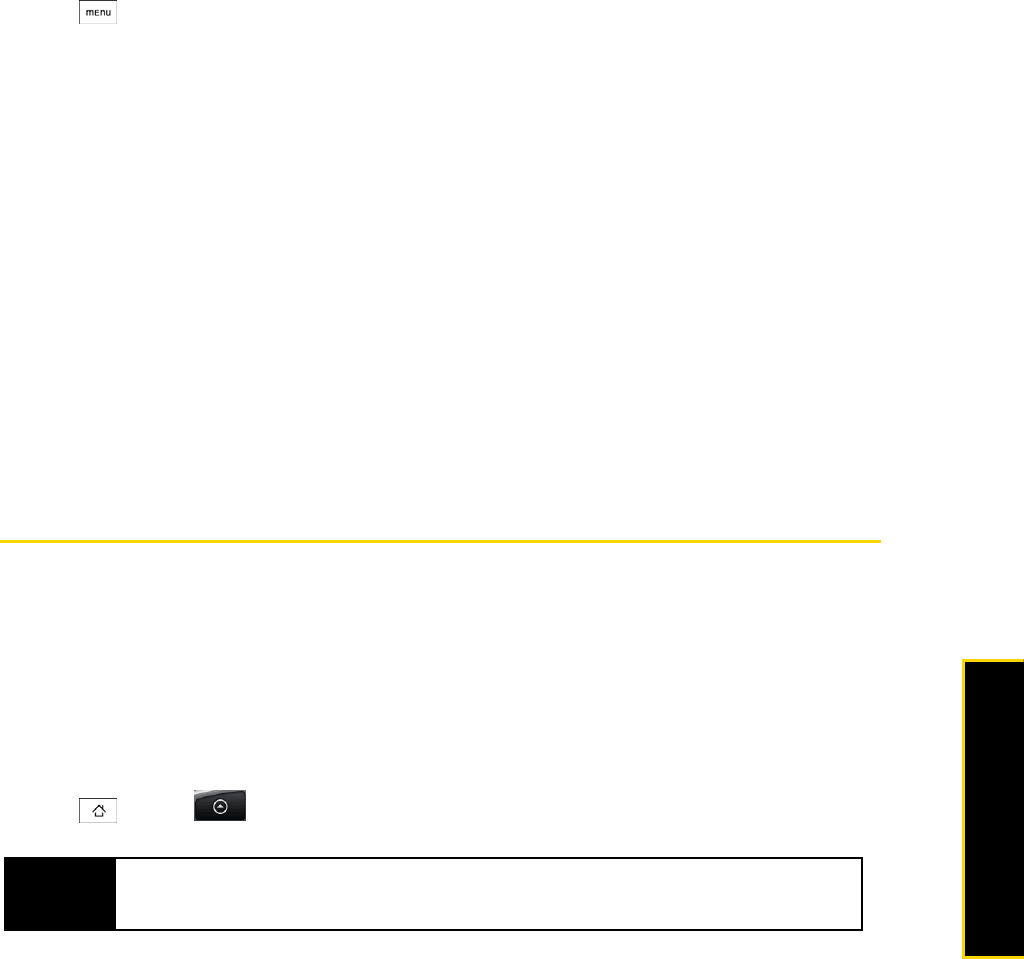
3B. Web and Data Services 93
Web and Data Services
The Browser Menu
Although the home page offers a broad and convenient array of sites and services for you to browse, not all
sites are represented, and certain functions, such as going directly to specific websites, are not available. For
these and other functions, you will need to use the browser menu. The browser menu offers additional
options to expand your use of the Web on your phone.
Opening the Browser Menu
The browser menu may be opened anytime you have an active data session, from any page you are
viewing.
To open the browser menu:
ᮣPress . (You will see the browser menu.)
Options available under the browser menu include:
ⅷBack. Returns you to a previously viewed page (after having tapped Forward).
ⅷForward. Returns you to a previously viewed page (after having tapped Back).
ⅷNew bookmark. Allows you to bookmark the current site.
ⅷBookmarks. Allows you to access and manage your bookmarks.
ⅷWindows. Allows you to open additional browser windows.
ⅷMore >
ⅢFind on page. Allows you to find specific text on a Web page.
ⅢCopy text. Allows you to copy text.
ⅢPage info. Lets you display the information about the website.
ⅢShare page. Lets you send the website URL using email, Messages, or Peep.
ⅢDownloads. Lets you view applications that you have downloaded from the Web.
ⅢHistory. Keeps a list of links to your most recently visited sites. To navigate to a site, touch a site.
ⅢSettings. Opens the browser settings.
Accessing Messages
You can send and receive email messages, Google Talk™ instant messages, and text messages right from
your phone. Messaging allows you to stay connected 24 hours a day anywhere on the Nationwide HTC
Network.
Email
Your phone’s Mail application lets you access and manage multiple email accounts simultaneously in one
convenient location.
Adding a POP3/IMAP email account
1. Press and tap > Mail.
2. On the Choose a mail provider screen, tap Other (POP3/IMAP).
3. Enter the Email address and Password for the email account and then tap Next.
4. Enter the Account name and Your name and tap Finish setup.
Important If the account type you want to set up is not in the phone database, you will be asked to enter more
details. It is recommended that you get all pertinent information for the email account such as incoming
and outgoing server settings before you proceed.
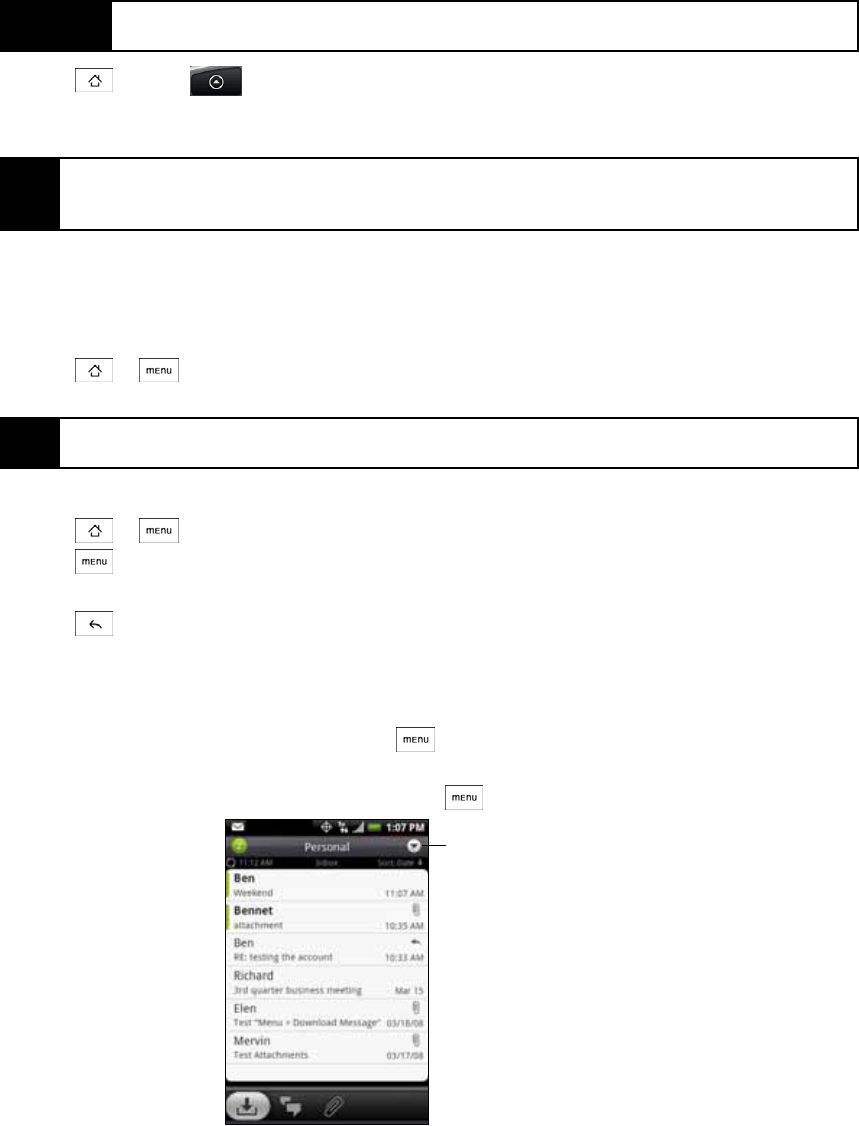
94 3B. Web and Data Services
Adding a Microsoft Exchange ActiveSync account
You can only add one Microsoft Exchange ActiveSync account on your phone.
1. Press and tap > Mail.
2. On the Choose a mail provider screen, tap Microsoft Exchange ActiveSync.
3. Enter the Exchange ActiveSync account details and then tap Next.
4. Select the type of information you want to synchronize and tap Finish setup.
Synchronizing Exchange ActiveSync email
You can set Exchange ActiveSync to automatically check for new Exchange ActiveSync emails.
1. Press
> and tap Settings > Data synchronization > Exchange ActiveSync.
2. Tap Schedule and then tap the time interval you want to use to check for new emails.
Changing Exchange ActiveSync settings
1. Press > and tap Settings > Data synchronization > Exchange ActiveSync.
2. Press and tap Settings.
3. Change the general settings and mail and calendar settings according to your preference.
4. Press after you are done.
Creating another email account
Do one of the following:
ⅢIf you are in the Accounts list screen, press and tap New account.
– or –
ⅢIf you are in the Inbox of an email account, press and then tap More > New account.
Important You can sync with a Microsoft Exchange Server 2003 Service Pack 2 (SP2) or Microsoft Exchange Server
2007.
Note Your corporate Exchange Server must support auto-detect for the phone to automatically set up the Exchange
ActiveSync account. If your corporate Exchange Server does not support auto-detect, you will need to enter your
Exchange Server settings after you tap Next. Ask your Exchange Server administrator for details.
Tip On the Exchange ActiveSync screen, tap Sync now at the bottom of the screen to manually check for new
emails.
To switch to another
account, in an email
account inbox, tap
the arrow and then
select the email
account to use.
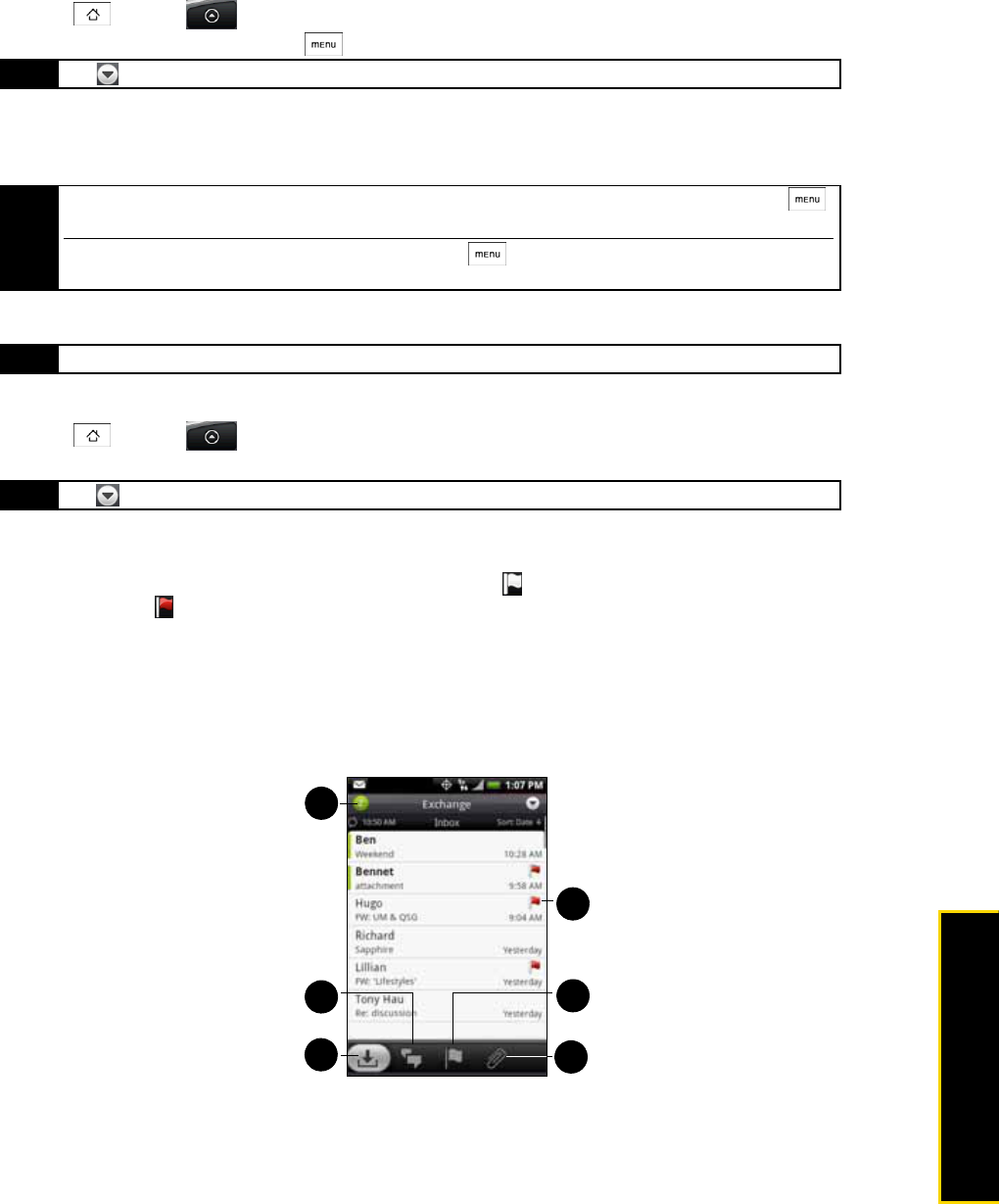
3B. Web and Data Services 95
Web and Data Services
Composing and sending email
1. Press and tap > Mail.
2. On the email account Inbox, press and tap Compose.
3. Enter the message recipient’s email address in the To box. As you enter information, matching contacts
will appear on the screen. Tap the recipient or continue entering the email address. If you are sending the
email to several recipients, separate the email addresses with a comma. You can add as many message
recipients as you want.
4. Enter the subject, compose your message, and then tap Send. (You may need to scroll down the screen
to see Send.)
Viewing and replying to email
1. Press and tap > Mail.
2. On the email account Inbox, tap the message you want to view.
3. Tap Reply or Reply all to reply to the message.
For an Exchange ActiveSync account, you can flag email messages to help you keep track of them..
To mark an email message while viewing it, tap the white flag ( ) on the upper-right corner of the screen.
The flag turns red ( ) when you mark the message.
Managing email on your external email account
To filter the inbox:
Tap a tab at the bottom of the screen to filter the inbox by individual emails, conversations, or messages with
attachments.
1. Number of unread messages.
2. Conversations. Displays email messages as conversations. Messages are grouped according to the
subject line. Tap a message to show the email messages in a conversation..
Tip Tap on the upper-right corner to switch to a different email account.
Tip If you want to send a carbon copy (Cc) or a blind carbon copy (Bcc) of the email to other recipients, press
and tap Add recipient > Cc or Bcc.
If you have set up an Exchange ActiveSync account, press and tap Add recipient > To > Company
directory to let you add recipients from the Exchange ActiveSync account contacts.
Tip Tap Save as draft to save the message as a draft.
Tip Tap on the upper-right corner to switch to a different email account.
1
2
4
5
6
3

96 3B. Web and Data Services
3. Inbox. Displays messages as individual items.
4. Attachments. Displays all email messages with attachments.
5. Marked (Exchange ActiveSync only). Displays all flagged email.
6. Marked (Exchange ActiveSync only) email.
To sort email:
1. On the email account Inbox, press , and tap Sort.
2. Select from the following sort options:
ⅢDate (Most recent/Oldest). Sorts email messages by the time you received them.
ⅢSubject (A-Z/Z-A). Alphabetically sort email messages by subject.
ⅢSender (A-Z/Z-A). Alphabetically sort email messages by sender.
ⅢSize (Largest/Smallest). Sort messages by file size.
To delete an email message:
1. On the email account Inbox, press and hold the message you want to delete.
2. On the options menu, tap Delete. When prompted to confirm deletion, tap OK.
To delete multiple messages:
1. On the email account Inbox, press and tap Delete.
2. Tap the messages you want to delete and tap Delete.
Editing email account settings
1. Press and tap > Mail.
2. Switch to the email account you want to edit.
3. Press and tap More > Settings, and choose from these options:
ⅢAccount settings: Change the email account settings such as the name, email address, password, and
description.
ⅢGeneral settings: Set the font size when reading email messages, enable, disable or set the signature, set
the account as the default email account, and set where to save email attachments.
ⅢSend & receive: Set the maximum email file size limit for incoming messages and the frequency to check
for new messages and how many to check for. You can also choose to have your sent email
messages BCC'd to yourself.
ⅢNotification settings: Set email notification settings.
ⅢDelete account: Tap to delete the email account.
4. Press to save your changes.
Sending a meeting request using the Exchange ActiveSync account
1. Press and tap > Mail.
2. Switch to the Exchange ActiveSync account.
3. Press and tap More > New meeting invitation.
4. Enter the meeting details and then tap Send.
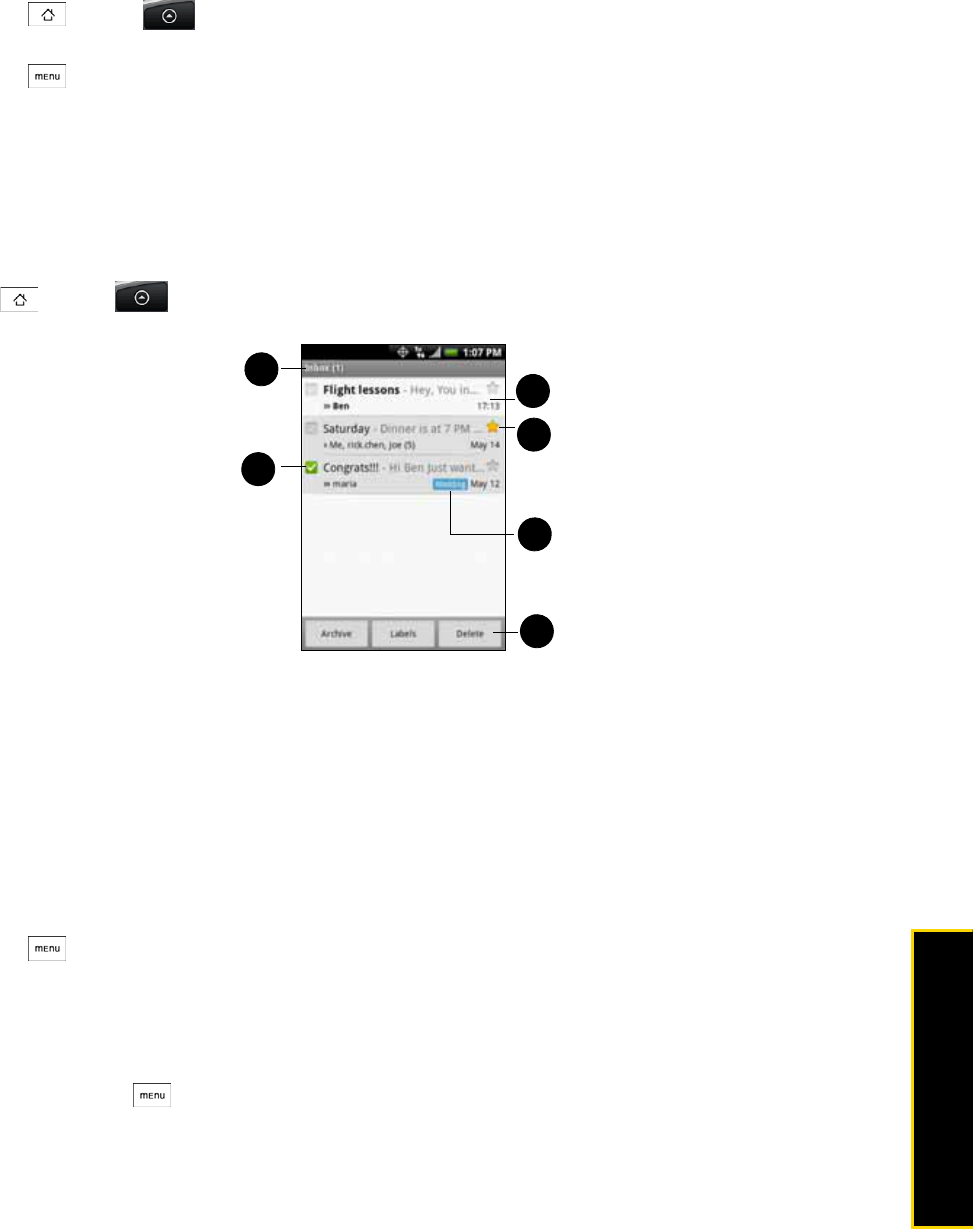
3B. Web and Data Services 97
Web and Data Services
Deleting an email account
1. Press and tap > Mail.
2. Switch to the email account you want to delete.
3. Press and tap More > Settings > Delete account.
Gmail
Gmail is Google’s Web-based email service. Gmail is configured if you chose to set up a Google account
when you first set up your phone. Depending on your synchronization settings, your phone’s Gmail is
automatically synchronized with your Gmail account on the Web.
To open Gmail:
Press and tap > Gmail. The Inbox conversations list (hereinafter referred to as Inbox) is your
default Gmail view. All your incoming email is delivered to your Inbox.
1. Displays the folder name (or Label) and number of unread email messages.
2. Checked email. Select one or more emails to apply an action. Batch operations need to be selected. (See
“Setting Gmail settings” for details.)
3. Unread messages are displayed in bold.
4. Starred email. Tap to add or remove the star.
5. Message label.
6. Displays actions available for checked email. This will not show if there is no email selected in the inbox.
To refresh Gmail:
ᮣPress and tap Refresh to send or receive new email messages and to synchronize your email with
your Gmail account on the Web.
Creating and sending email
To create and send an email message:
1. In the Inbox, press and tap Compose.
2. Enter the message recipient’s email address in the To box. If you are sending the message to several
recipients, separate the email addresses with a comma. You can add as many message recipients as
you want.
1
2
3
4
6
5
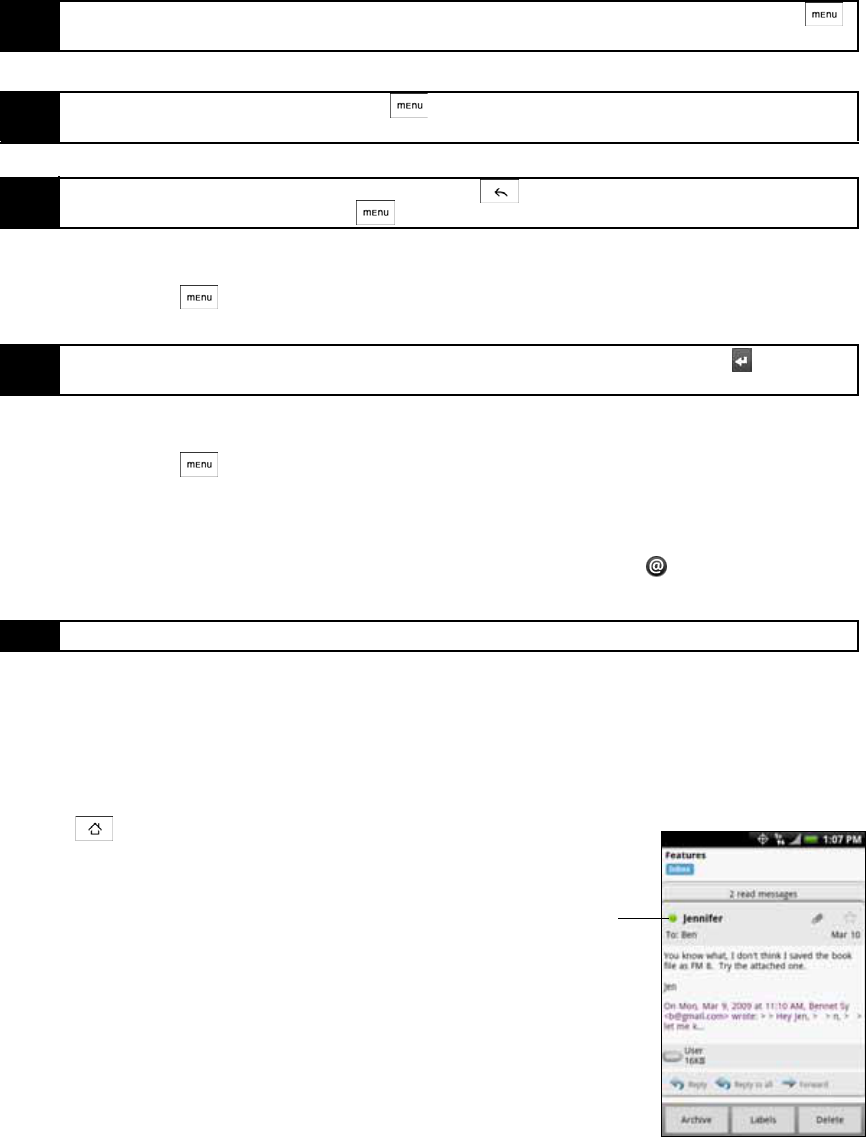
98 3B. Web and Data Services
3. Enter the email subject and compose your message.
4. After composing your email, tap Send.
To add a signature to an email message:
1. In the Inbox, press and tap Settings > Signature.
2. Enter your signature in the text box and tap OK.
To view your sent messages:
ᮣIn the Inbox, press and tap View labels > Sent.
Receiving and reading email
Depending on your notification settings, the phone plays a ring tone, vibrates, or displays the email message
briefly in the status bar when you receive a new email. A new email message ( ) icon also appears on
the notifications area of the status bar to notify you of a new email message.
Gmail groups each message you send with all the responses you receive. This conversation list continues to
grow as new replies arrive, so you can always see your messages in context. Conversations are also referred
to as message threads. A new message or a change to the subject of a current message will begin a new
thread.
To view emails:
ᮣPress , press and hold the status bar, and
slide down your finger on the screen to open the
Notifications panel. Tap the new email message to
view it.
– or –
While in the Inbox, tap the unread email or the
conversation with the unread email message to
view it.
Note If you want to send a carbon copy (Cc) or a blind carbon copy (Bcc) of the email to other recipients, press
and tap Add Cc/Bcc.
Tip If you want to add a picture attachment, press and tap Attach. Select the picture you want to attach
and tap OK.
Note While composing the email, tap Save as draft or press the button to save email as a draft. To view your
draft email messages, in the Inbox, press and tap View labels > Drafts.
Tip You can create a signature consisting of multiple lines of text. At the end of each line of text, tap on the
onscreen keyboard to create another line.
Note For more information on email notification settings, refer to the “Setting Gmail settings” for details.
Online status.
Appears when
the contact is a
Google Talk
friend and you
are signed in to
Google Talk.
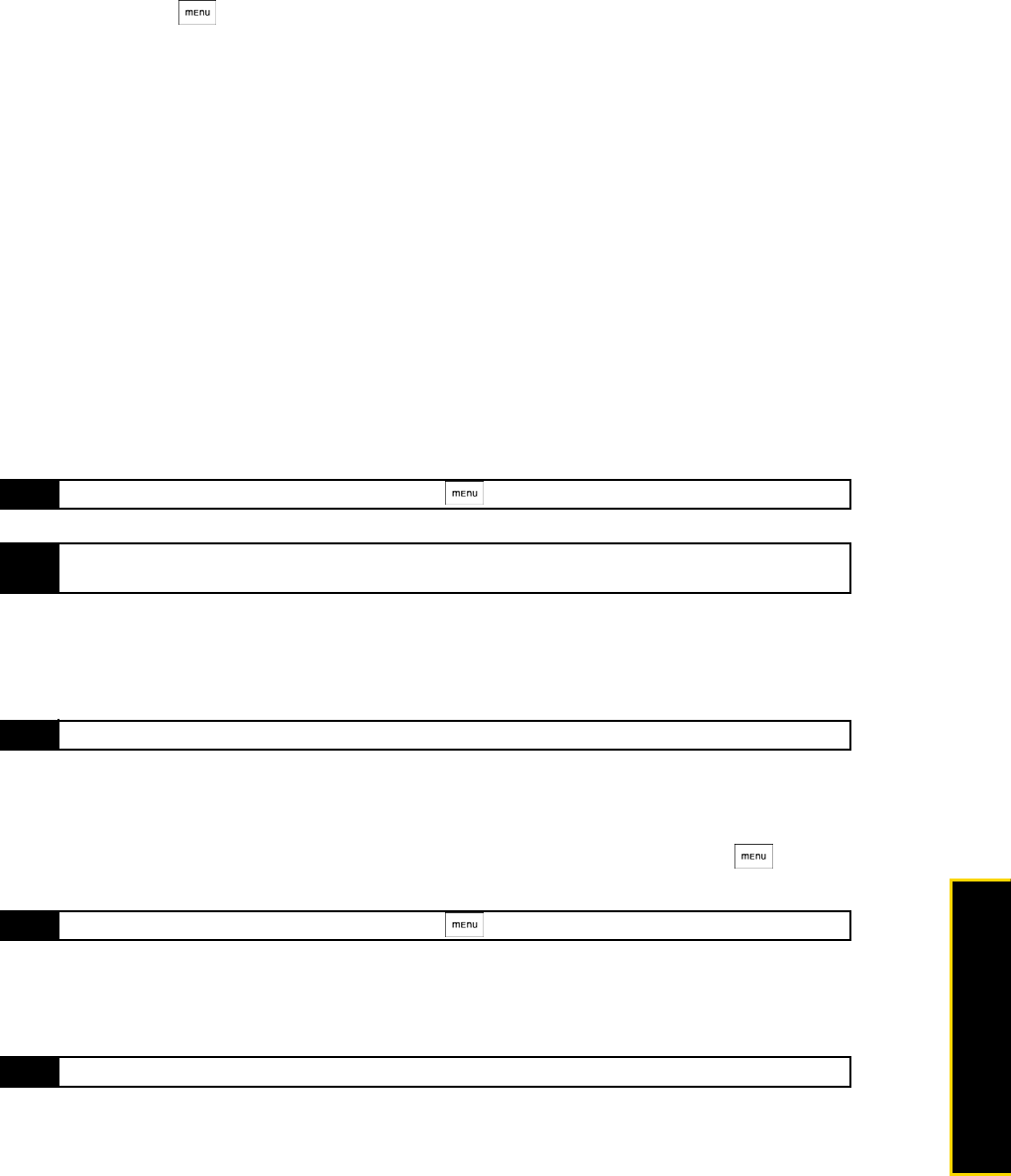
3B. Web and Data Services 99
Web and Data Services
To search for email messages:
You can search for a specific email message by sender, word in a subject, or label.
1. In the Inbox, press and tap Search.
2. Enter the search keyword in the box, and tap Search.
Replying to or forwarding email
1. In the message thread, scroll down to the end of the conversation.
2. Tap Reply, Reply to all, or Forward.
3. If you selected Reply or Reply all, enter your reply message.
– or –
If you selected Forward, specify the message recipients and enter your message.
4. Scroll down to the end of the message and tap Send.
Managing conversations and email
Conversations
In the Inbox, press and hold the conversation and tap:
ⅷRead to open the email message.
ⅷArchive to archive the conversation.
ⅷMute to mute the entire conversation.
ⅷMark read or Mark unread a message. Unread messages are displayed in bold in the Inbox.
ⅷDelete to delete the conversation.
ⅷAdd star or Remove star to assign a star or remove the star on the conversation.
ⅷChange labels to add or change the label of the conversation.
ⅷReport spam to report the conversation as spam.
Email messages
In the message thread, navigate to the email header or message using the trackball, press and tap:
ⅷArchive to archive the email message.
ⅷAdd star or Remove star to assign a star or remove the star on the conversation.
ⅷMark read or Mark unread a message. Unread messages or threads with unread messages display in bold
in the Inbox.
ⅷChange labels to add or change the label of the conversation.
ⅷDelete to delete the email message.
Tip To display your archived messages, in the Inbox, press and tap View labels > All Mail.
Tip If you’re part of a long message conversation that isn’t relevant, you can “mute” the conversation to keep all future
additions out of your Inbox.
Note You cannot use the phone to create labels; do that on the Gmail website.
Tip To display your archived messages, in the Inbox, press and tap View labels > All Mails.
Note You cannot use the phone to create labels; do that on the Gmail website.
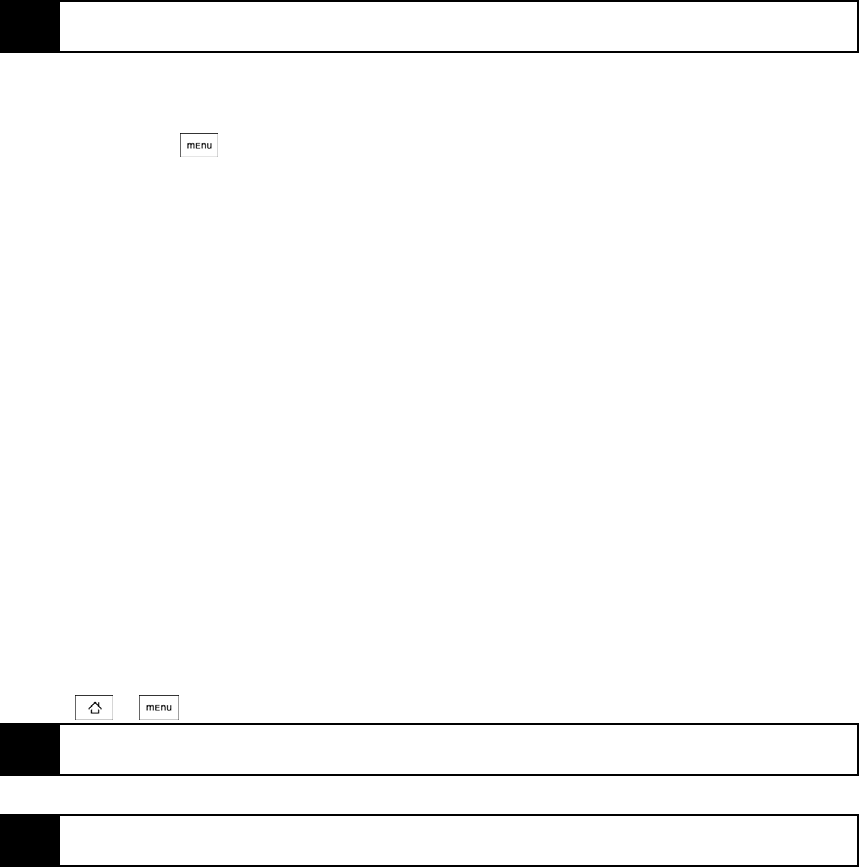
100 3B. Web and Data Services
ⅷMore >
ⅢBack to Inbox to return to your Inbox.
ⅢMute to mute the entire conversation.
ⅢReport spam to report the email message as spam.
Setting Gmail settings
1. In the Inbox, press and tap Settings.
2. Set the following options:
ⅢSignature: Tap to enter a signature that is appended at the end of your email messages.
ⅢConfirm delete: Select the check box to show a confirmation box when you delete a conversation.
ⅢBatch operations: Select the check box to show the batch operations feature. The batch operations
feature lets you archive, delete, or apply a label to multiple email messages at once.
ⅢLabels: Tap to select which Gmail labels to synchronize.
ⅢEmail notifications: Select the check box to show a notification icon on the status bar when you receive a
new email message.
ⅢSelect ringtone: Tap if you want your phone to ring when a new email message arrives. On the Ringtone
menu, select a ring tone specific to new email messages. The ring tone plays briefly when selected. If
you don’t want a ring tone to play when you receive a new email message, tap Silent. Then tap OK to
confirm your ring tone selection.
ⅢVibrate: Select if you want your phone to vibrate when you receive a new email message.
Synchronizing Google Apps
Your phone’s Google Apps, such as Gmail, Calendar, and Contacts, give you access to the same personal
information (email messages, events, and contacts) that you add, view, and edit on your computer using
Gmail or Calendar. Synchronize the Google Apps you want to keep information up-to-date.
To select which applications to synchronize:
1. Press
> and tap Settings > Data synchronization > Google.
2. Select the Google Apps you want to synchronize.
Tip If you’re part of a long message conversation that isn’t relevant, you can “mute” the email to keep all future
additions out of your Inbox.
Note By default, all personal information in Gmail, Calendar, and Contacts will sync whenever you make a change or
receive a new message.
Tip Select Auto-sync to automatically synchronize all applications. When Auto-sync is disabled, you can
synchronize individual applications manually by selecting their respective check boxes.
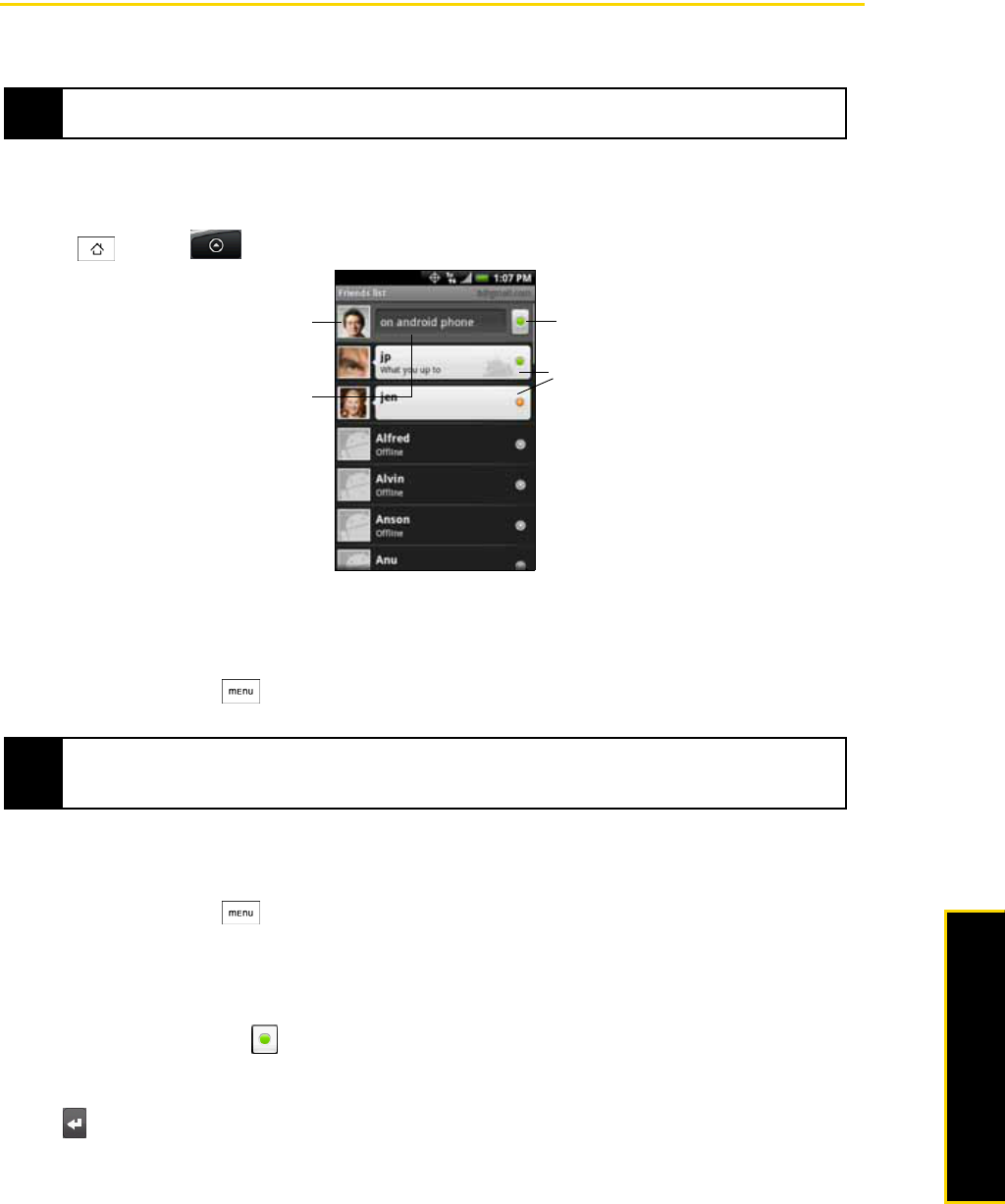
3B. Web and Data Services 101
Web and Data Services
Google Talk
Google Talk is Google’s instant messaging program. It lets you communicate with other people that also use
Google Talk.
Signing in and chatting online
To open Google Talk:
ᮣPress and tap > Google Talk.
To add a new friend:
You can only add people who have a Google account.
1. In the Friends list, press and tap Add friend.
2. Enter the Google Talk instant messaging ID or Google email address of the friend you want to add.
3. Tap Send invitation.
To view and accept an invitation:
1. In the Friends list, press and tap Invites. All chat invitations you have sent or received are listed on
the pending invitations screen.
2. Tap a pending invitation and tap Accept or Decline.
To change your online status and message:
1. Tap the online status icon ( ) beside your name, and then select the status you want on the menu.
2. Tap the text box on the left of your online status icon and then enter your status message using the
onscreen keyboard.
3. Tap .
Note The Google Talk account that is set up is based on the Google account that you used when you set up the
phone.
Note When you add a friend with an instant messaging ID and that friend has been saved in your contacts list,
matching contacts will display on the screen as you enter information. You can tap the contact or continue
entering the IM information.
Tap to change
your picture.
Tap to change
your online status.
Tap to change
your online status
message.
Opened chats. Tap
to open the chat
screen.
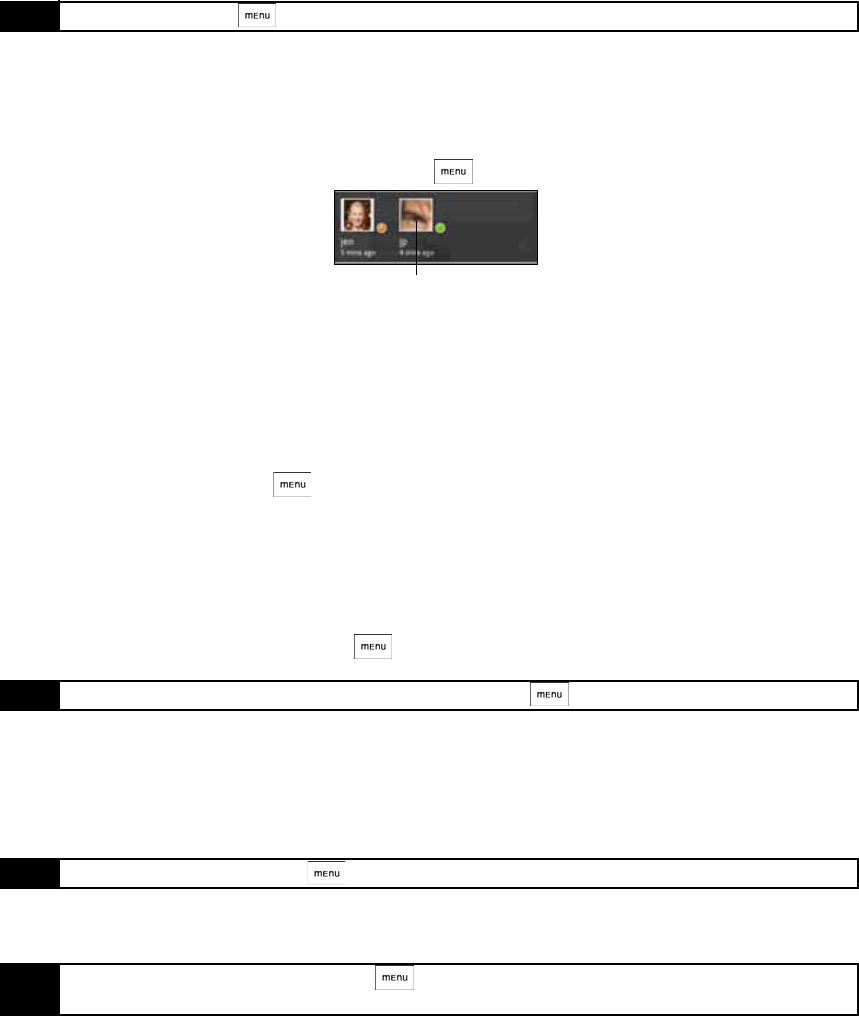
102 3B. Web and Data Services
To start a chat:
1. Tap a friend in the Friends list.
– or –
Navigate to a friend using the trackball and press the trackball.
2. Chat with your friend by entering text using the onscreen keyboard.
3. After entering your message, tap Send.
To switch between active chats:
You can switch between chats if you have more than one chat going.
1. While on a chat screen or in the friends list, press and tap Switch chats.
2. On the panel that opens, tap the friend you want to chat with.
To close a chat:
ᮣIn your Friends list, press and hold a friend with an active chat and tap End chat on the menu.
– or –
While on a chat screen, press and tap End chat.
Managing your friends
Friends in your friends list is sorted by their online status — active chats, online, busy, and offline. Within the
status groupings, friends are listed alphabetically.
By default, only the friends that you frequently communicate with — the most popular — are in the Friends list.
If you want to display all your friends, press and tap All friends.
To block a friend:
You can block a friend from sending you messages. When blocked, your friend is also removed from your
Friends list.
1. In the Friends list, locate the friend you want to block.
2. Press and hold the friend’s name, and tap Block friend. Your friend is removed from your friends list and is
added to the blocked friends list.
Tip To insert a smiley, press and tap Insert smiley. Tap a smiley to insert it into your message.
Tip To switch back to displaying only your most popular friends, press and tap Most popular.
Note If you cannot see the friend, Press and tap All friends.
Note To unblock a friend, in the Friends list, press and tap Blocked. In the Blocked friends list, tap the name of
the friend you want to unblock, and tap OK when prompted.
Tap to switch chat with this
friend.
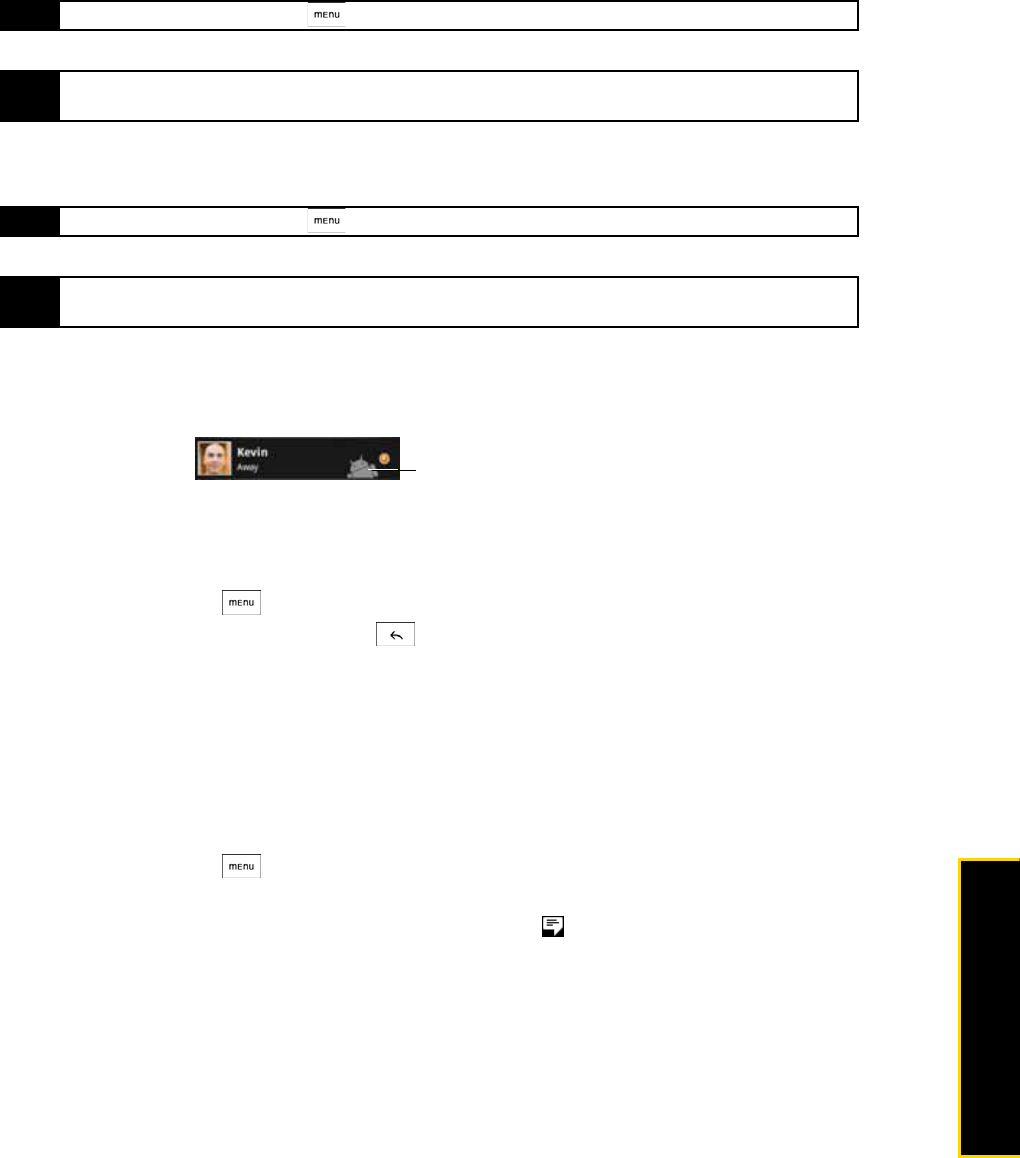
3B. Web and Data Services 103
Web and Data Services
To pin a friend:
You can pin a friend to make sure that friend always appears in your Most popular friends list.
1. In the Friends list, press and hold the friend’s name to open the options menu.
2. Tap Pin friend.
To show a friend in the Most popular list:
1. In the Friends list, press and hold the friend’s name to open the options menu.
2. Tap Show friend.
Mobile indicators
You can check the type of device your friend is using to chat in Google Talk. In the friends list, check the
image that appears to the right of your friend’s name.
When you do not see an image, it indicates that your friend signed in last from a computer.
To show the mobile indicator:
1. In the Friends list, press and tap More > Settings.
2. Select the Mobile indicator option and press . The mobile indicator icon will appear along with your
name in other people’s Friends list and will let your friends know what type of mobile device you are
using.
Adjusting instant messaging settings
To set notifications for new instant messages:
You can set the phone to play a sound, vibrate, or display a notification icon in the status bar each time you
receive a new instant message.
1. In the Friends list, press and tap More > Settings.
2. Do one of the following:
●Select the IM notifications check box to receive a notification ( ) in the status bar when a new instant
message arrives.
●Tap Select ringtone to select the ring tone to use when a new instant message arrives. The ring tone
briefly plays when selected. If you don’t want a ring tone to play when you receive a new instant
message, select Silent.
●Select the Vibrate check box to vibrate your phone when you receive a new instant message.
Note If you cannot see the friend, Press and tap All friends.
Note To unpin a friend, in the Friends list, press and hold the friend you want to unpin and tap Unpin friend on the
options menu.
Note If you cannot see the friend, Press and tap All friends.
Note To keep a friend from appearing in the most popular list, press and hold the friend’s name, and tap Hide friend on
the menu. If you pinned the friend, the pin will be removed when you hide the friend.
Indicates that the friend is
using an Android phone.
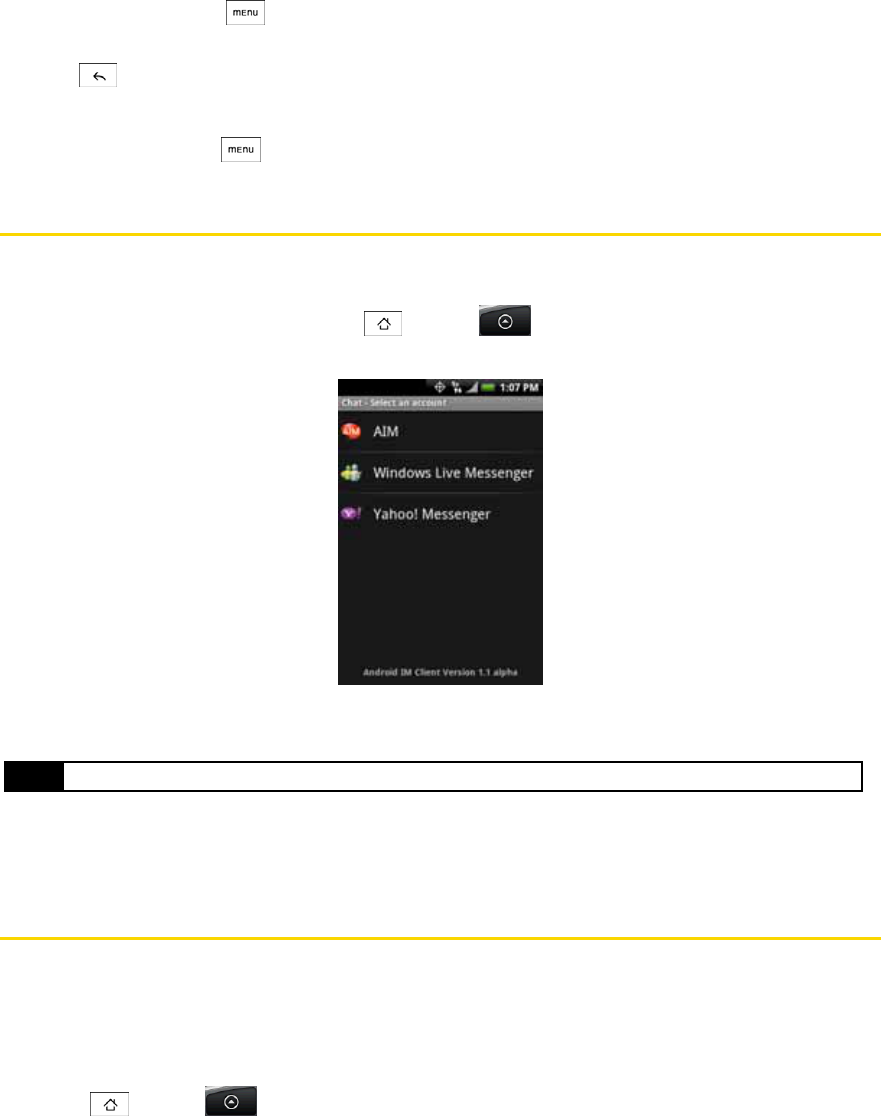
104 3B. Web and Data Services
To sign in automatically:
You can sign in to your Google Talk account automatically every time you turn on your phone.
1. In the Friends list, press and tap More > Settings.
2. Select the Automatically sign in check box.
3. Press to save your setting.
Signing out
ᮣIn the friends list, press and tap More > Sign out when you want to sign out from Google Talk.
Accessing HTC Instant Messaging
HTC provides you with access to popular instant messaging (IM) communities, including AOL® Instant
MessengerTM, MSN® Messenger, and Yahoo!® Messenger.
1. To launch HTC Instant Messaging, press and tap > IM.
2. Tap a community: AIM, Windows Live Messenger, or Yahoo! Messenger.
3. Enter the required sign-in information for the selected community, such as user name or password, and
then tap Sign In.
The instant messaging screen for your selected community will then be displayed, and you can start chatting
online with your friends or family.
Downloading Applications and Games From Android Market
Android Market provides direct access to useful applications and fun games which you can download and
install on your phone. Android Market also allows you to send feedback and comments about an
application, or flag an application that you find objectionable or incompatible with your phone.
Opening Android Market
1. 1Press and tap > Market. (You may need to scroll down the screen to see the icon.)
2. When you open Android Market for the first time, the Terms of Service window will appear. Tap Accept to
continue.
Note The information required to sign in will vary depending on the instant messaging community you are accessing.
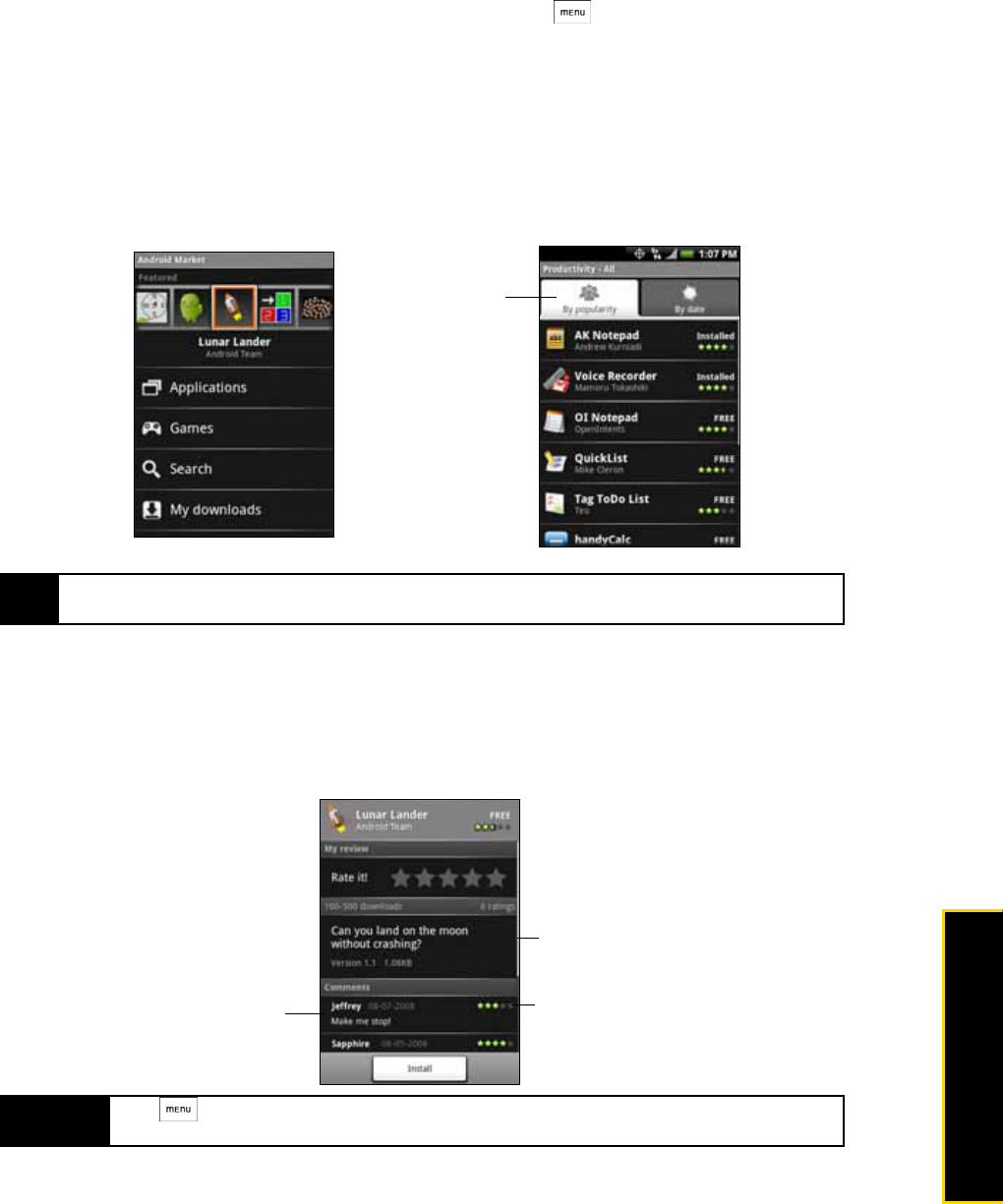
3B. Web and Data Services 105
Web and Data Services
Getting help
If you ever need help or have questions about Android Market, press and tap Help. The browser will
take you to the Android Market Help Web page.
Finding Applications
The Android Market home page provides several ways to find applications. It showcases featured
applications and includes a list of item applications by category, a list of games, a search link, and a link to
your downloads.
Scroll horizontally through the featured items or select a category to browse its contents, and then select a
subcategory. Within each subcategory you can select to view items sorted By popularity or By date.
Installing and Opening an Application
1. Navigate to the item you want to download, and select it.
2. In the item details screen, read more about the application, including its overall rating, and comments by
users. If you scroll down to the About the developer section, you can view more applications by this
developer, visit the developer’s website, and send the developer an email message.
3. On any application details screen, tap Install.
Note All items in a subcategory are listed in each tab; those in the By popularity tab are sorted from most popular to
least popular, and those in the By date tab are sorted from newest to oldest
Important Press and select Security permissions to view the functions and data this item can access on your
phone.
Tap the tab to sort
by popularity or
date.
Press and hold a
comment to let you
report a comment as
spam.
More info about item.
User comments
about item.
Scroll down to view
more of this
developer’s
applications or to
email the developer.
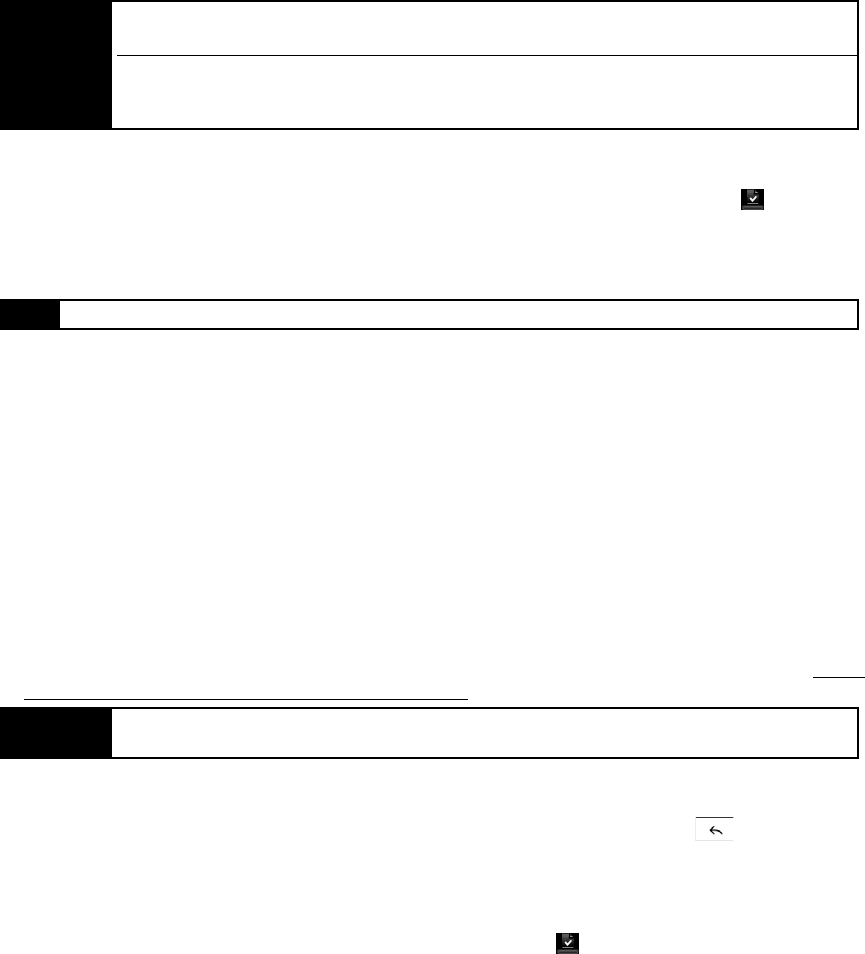
106 3B. Web and Data Services
4. To check the progress of the download, open the Notifications panel. Most applications are installed
within seconds. If you want to stop downloading the item, tap Cancel download.
5. After the item is downloaded and installed on your phone, the content download icon ( ) appears in
the notification area of the status bar.
6. On the Android Market screen, tap My downloads.
7. Tap the installed application in the list, and then tap Open.
Purchasing an Application
If an application has a price associated with it, you have to buy it before you can download it. You can try it
out for 24 hours. Your credit card will be charged unless you ask for a refund within 24 hours of purchase.
You pay for an application only once. You can uninstall it and download it again later without having to pay
for it again. In addition, if you have multiple Android devices that use the same Google account, you can
download the purchased application to all of them at no additional cost.
1. Touch the application you want to buy.
2. At the bottom of the screen, tap Buy.
3. If you are making a purchase for the first time, log in to Google Checkout™ payment and billing service.
If you do not have a Google Checkout account, fill out the form. Google Checkout is a fast, secure, and
convenient way to purchase items from your phone. To learn more about Google Checkout, visit https://
checkout.google.com/m/helpCenterTerms?type=help&pli=1).
4. If your Google Checkout account has multiple credit card accounts, select the account that you want to
use.
5. Select the Terms of Service link and read the document. When you are done, press .
6. If you agree with the terms of service for Google Checkout, select the check box.
7. Tap Buy now at the bottom of the screen.
Android downloads the application and takes you back you to Android Market Home. When the
download and installation are complete, your status bar displays .
Request a refund
If you are not satisfied with the application, you can ask for a refund within 24 hours of the purchase. Your
credit card will not be charged and Android will remove the application. If you change your mind, you can
install the application again, but you will not be able to request a refund.
To get a refund and remove an application:
1. In Android Market Home, tap My downloads.
2. Tap the application that you want to uninstall.
3. In the Uninstall & refund dialog box, tap OK. If the dialog box does not appear, your trial period has expired.
4. In the survey form, select the answer that best matches your reason, and tap OK.
Important If the application requires either access to any of your data or control of any of the phone’s functions,
Market tells you what the application can access.
Be especially cautious with applications that have access to many functions or a significant amount of
your data. Once you tap OK on this screen, you are responsible for the results of using this item on your
phone. Tap OK if you agree to the conditions of the application.
Tip You can also find the icon of the installed application on the All programs screen.
Important Your phone remembers your Google Checkout password, so set up a screen lock to secure your phone.
Refer to “Protecting Your Phone with a Screen Lock” on page 31.
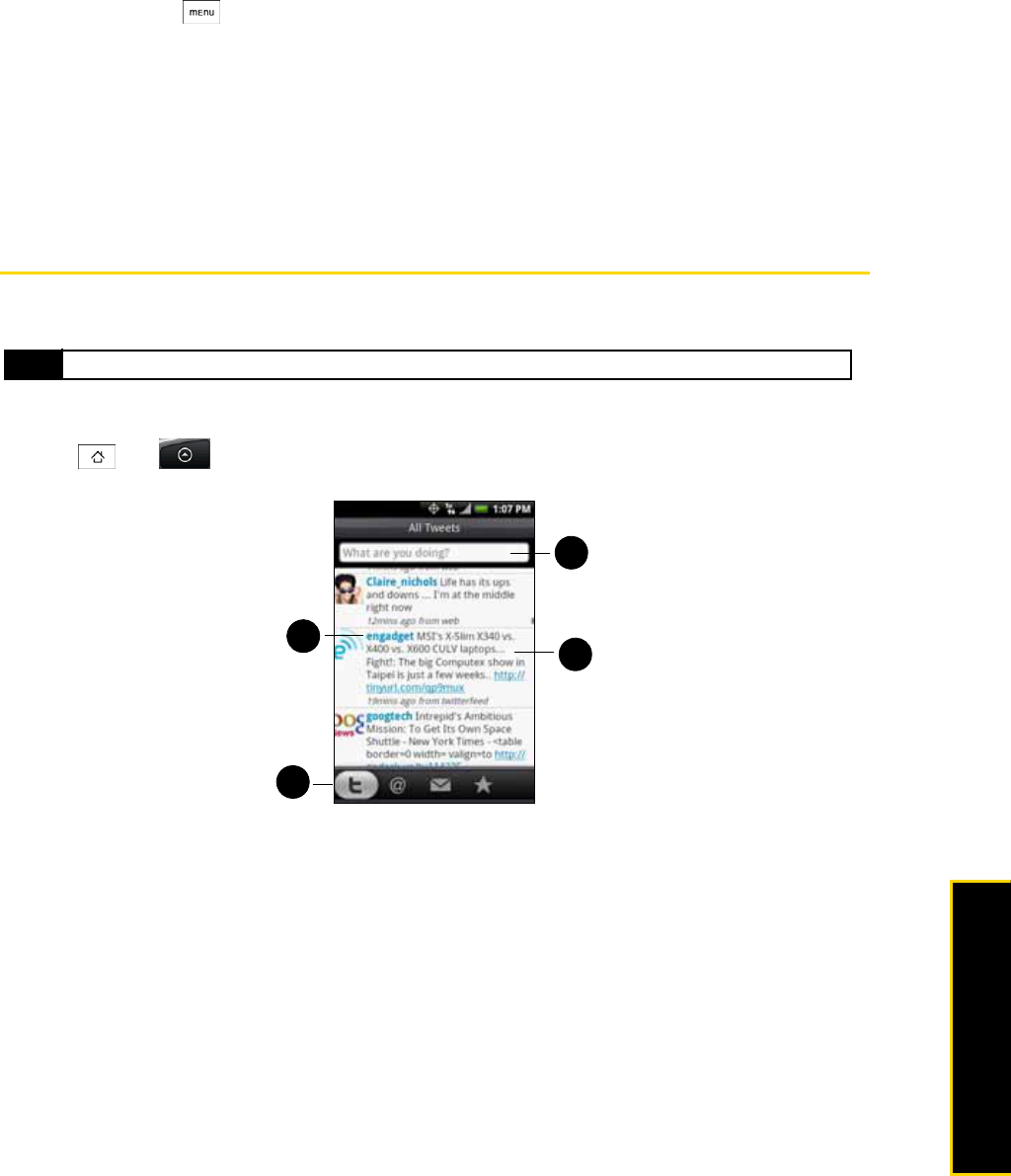
3B. Web and Data Services 107
Web and Data Services
Managing Applications
From the Android Market Home, tap My downloads to view your downloaded items. From any of the Android
Market screens, press and tap My downloads to go to the screen.
Uninstalling an application
You can uninstall any application that you have downloaded and installed from Android Market.
1. On the My downloads screen, tap the application you want to uninstall, and then tap Uninstall.
2. When prompted, tap OK to remove the application on your phone.
3. Choose the reason for removing the application, and then tap OK.
Peep
Peep™ is a Twitter client that lets you enjoy “twittering’’ on your phone. Send out tweets, read and receive
tweets from people, search for new Twitter users to follow, all from your phone.
Opening Peep
ᮣPress , tap , and then tap Peep. (You may need to scroll down the screen to see the icon.)
Peep opens in the All Tweets tab. Slide your finger on the bottom row to go to the tab you want.
1. Tap to view the Twitter user’s profile. This also shows you all tweets from this Twitter user.
2. Slide your finger to select whether to show All Tweets, Replies, Direct Message, or Favorites.
3. Tap to enter a tweet to send out.
4. Press and hold an item to open the options menu to let you reply, send a direct message, Retweet
(share), add to your favorites, or view your profile.
Note You need to be signed in to your Twitter account to use Peep.
1
2
3
4

108 3B. Web and Data Services
Sending a Tweet
1. On the All Tweets tab, tap the “What are you doing?” text box.
2. Enter your tweet and then tap Update.
1. Tap to post a picture from Albums or camera to your default photo hosting site and add the link to the
picture into the tweet.
2. Enter your tweet here.
3. Tap to insert your location into the tweet. You can choose to add map link, insert your location name, or
insert your position coordinates.
On the Peep screen, press and tap Settings > Services to check or change your photo hosting site,
location options, and URL shortening host.
Sending a Direct Message
ᮣOn the Peep screen, press and tap New message.
– or –
On the All Tweets or Direct Message tab, press and hold the person you want to send the direct message to,
and tap Send direct message on the options menu.
To view your direct messages, go to the Direct Message tab.
Searching for Twitter Users to Follow
1. While on the Peep screen, press .
2. Tap the text box with the words “Twitter Search” and then enter search criteria. Press again or tap
Search on the screen.
3. On the Search result screen, scroll through the list to look for the twitter user you want to follow.
4. Press and hold the user name of the Twitter user you want to follow and then on the options menu, tap
Show profile > Follow.
To stop following a Twitter user:
1. On the All Tweets tab, press and hold the Twitter user you want to stop following.
2. On the options menu, tap Show profile > Unfollow.
3
2
1
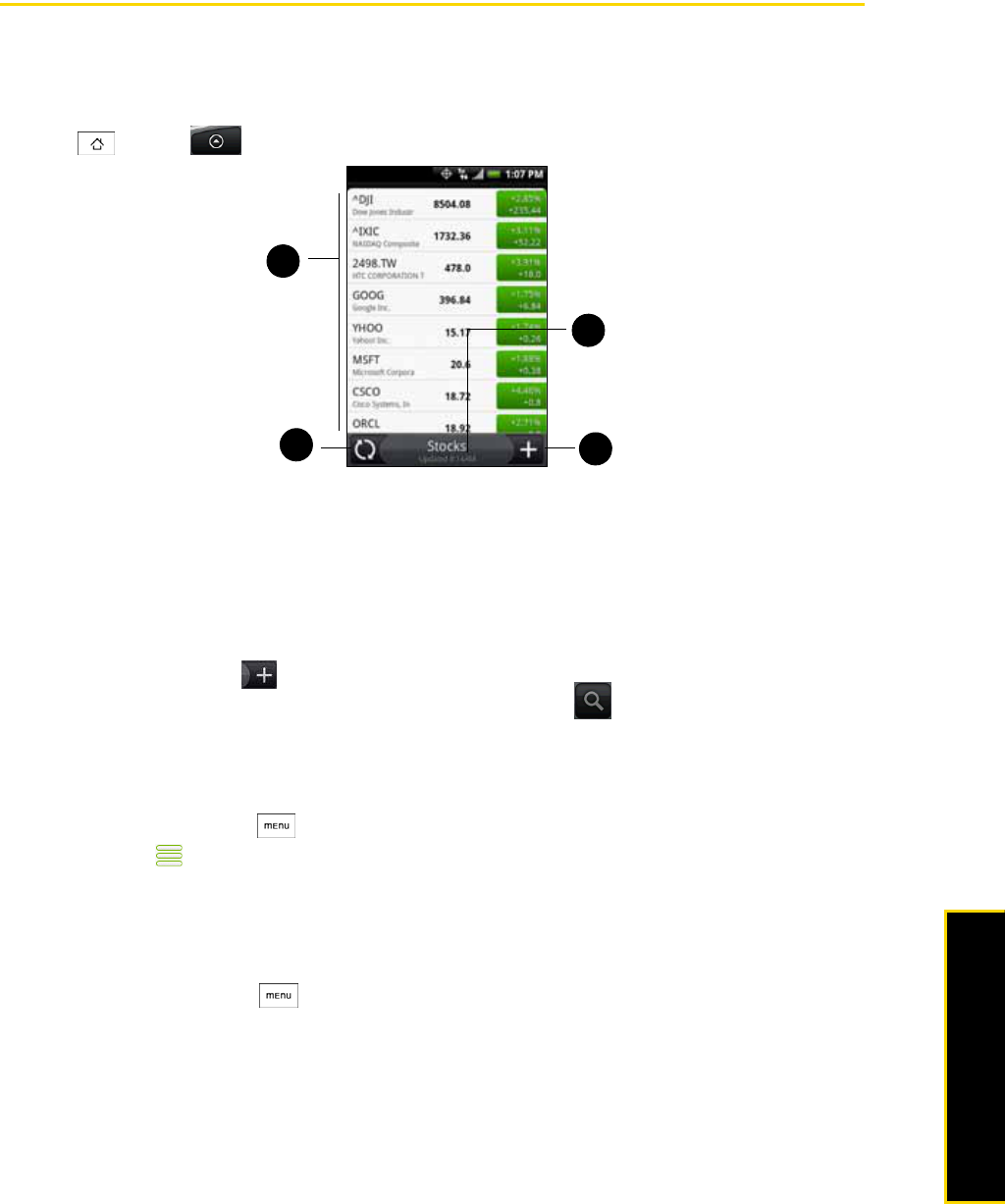
3B. Web and Data Services 109
Web and Data Services
Stocks
Stocks lets you to add, view, and analyze stocks and stock market movements using updated financial
information.
Opening Stocks
ᮣPress and tap > Stocks. (You may need to scroll down the screen to see the icon.)
1. List of your stock quotes and stock market indices. Tap an item to view its intraday chart and other details.
2. Tap to update the stock information.
3. Tap to add a stock quote or stock market index.
4. Shows the time the information was last updated.
Adding a Stock Quote or Stock Market Index
1. On the Stocks screen, tap .
2. Enter the stock quote or stock market index on the text box and tap .
3. On the results list, tap the stock quote or stock market index you want to add.
Changing the List Order
1. On the stocks screen, press and tap Rearrange.
2. Press and hold at the end of the item you want to move. When the row is highlighted in green, drag
it to its new position, and then release.
3. Tap Done.
Deleting an Item
1. On the Stocks screen, press and tap Delete.
2. Select the items you want to delete and tap Delete.
1
23
4
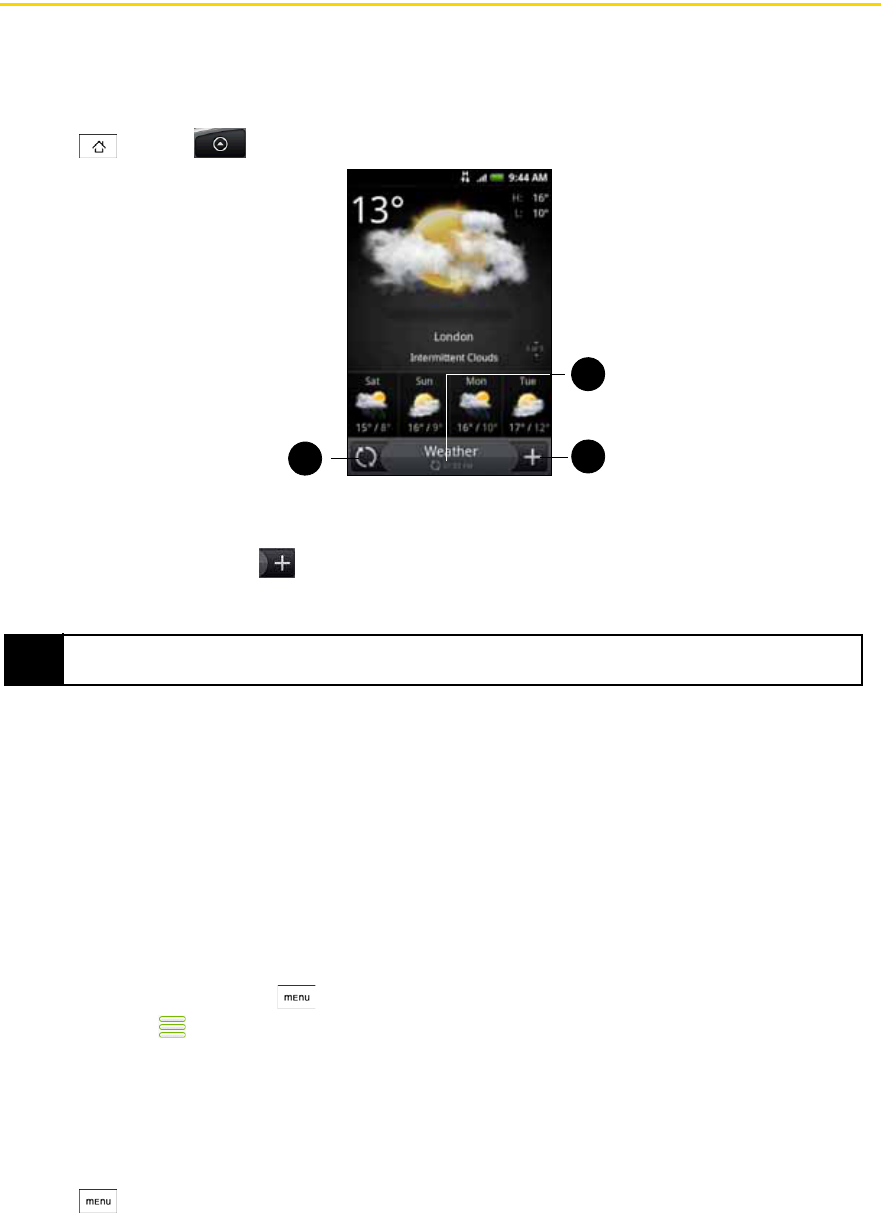
110 3B. Web and Data Services
Weather
Weather lets you view the current weather as well as weather information for the next four days of the week.
Weather can display weather information for your city or weather for up to ten cities.
Opening Weather
ᮣPress and tap > Weather. (You may need to scroll down the screen to see the icon.)
Adding a City
1. On the Weather screen, tap .
2. Enter the location you want to add on the text box. As you enter letter, the list is filtered to show the
possible locations based on the letters you entered.
3. Tap the city to select it.
Changing Weather Options
1. On the Weather screen, tap Menu > Settings.
2. Select the options you want:
ⅢSelect the Update automatically check box to automatically download weather updates after a period of
time.
ⅢTap Temperature scale to change the weather unit.
Changing the Order of Cities
1. On the Weather screen, press and tap Rearrange.
2. Press and hold at the end of the item you want to move. When the row is highlighted in green, drag
it to its new position, and then release.
3. Tap Done.
Deleting a City
1. On the Weather screen, swipe your finger up or down to select the city you want to delete.
2. Press and tap Delete. On the confirmation box, tap Delete.
Tip To add the weather information of your current location, tap My location. Location sources in Settings need to be
enabled to determine your location.
12
3
To view the weather
in other cities, swipe
your finger upward
or downward on the
screen.
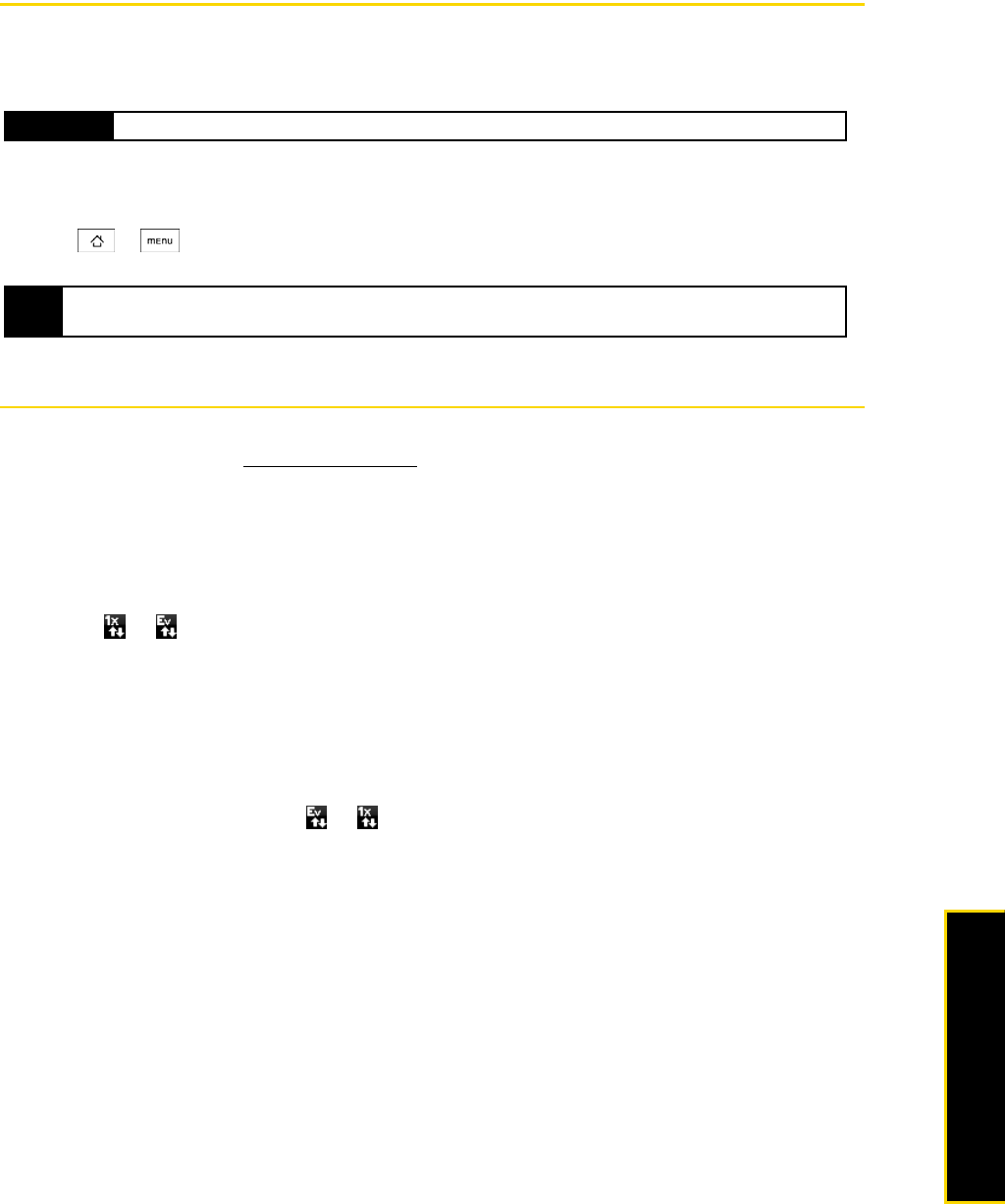
3B. Web and Data Services 111
Web and Data Services
Mobile Network Sharing
Your phone’s data capabilities enable you to use its high-speed data connection as a modem for your
laptop computer. You can send and receive email and browse the Internet anywhere on the Nationwide HTC
Network.
1. Make sure your phone’s data connection is turned on. See “Getting Started With Data Services” to learn
how to turn on the phone’s data connection.
2. Connect the phone to the computer using the provided USB cable.
3. Press
> and tap Settings > Wireless controls.
4. Select the Mobile network sharing check box.
Data Services FAQs
How will I know when my phone is ready for data service?
Your user name (for example, bsmith01@HTCpcs.com) will be displayed when you access Settings > About
phone > Status and then scroll down to Current username.
How do I sign in for the first time?
You are automatically signed in to access data services when you turn on your phone.
How do I know when my phone is connected to data services?
Your phone automatically connects when you use data service or an incoming message arrives. You will
also see the or indicator.
Can I make calls and use data services at the same time?
You cannot use voice and data services simultaneously. If you receive a call while data service is active, your
phone forwards the call to voicemail. You can place an outgoing call anytime, but it will interrupt any in-
progress data session.
When is my data connection active?
Your connection is active when data is being transferred. Outgoing calls are allowed; incoming calls go
directly to voicemail. When active, the or indicator animates on your phone’s display screen.
When is my data connection dormant?
If your phone receives no data for ten seconds, the connection goes dormant. When the connection is
dormant, you can make and receive voice calls. (The connection may become active again quickly.) If your
phone receives no data for an extended period of time, the connection will terminate.
Can I sign out of data services?
You can sign out without turning off your phone; however, you will not be able to browse the Web or use
other data (unless you establish a Wi-Fi connection.) While signed out, you can still place or receive phone
calls, check voicemail, and use other voice services. You may sign in again at any time. To sign out, go to
Settings > Wireless controls and clear the Mobile network check box.
Important You need to install HTC Sync (page 52) before you can use mobile network sharing.
Note When using mobile network sharing, the USB mass storage feature is disabled. Also, you will not be able to use
HTC Sync.
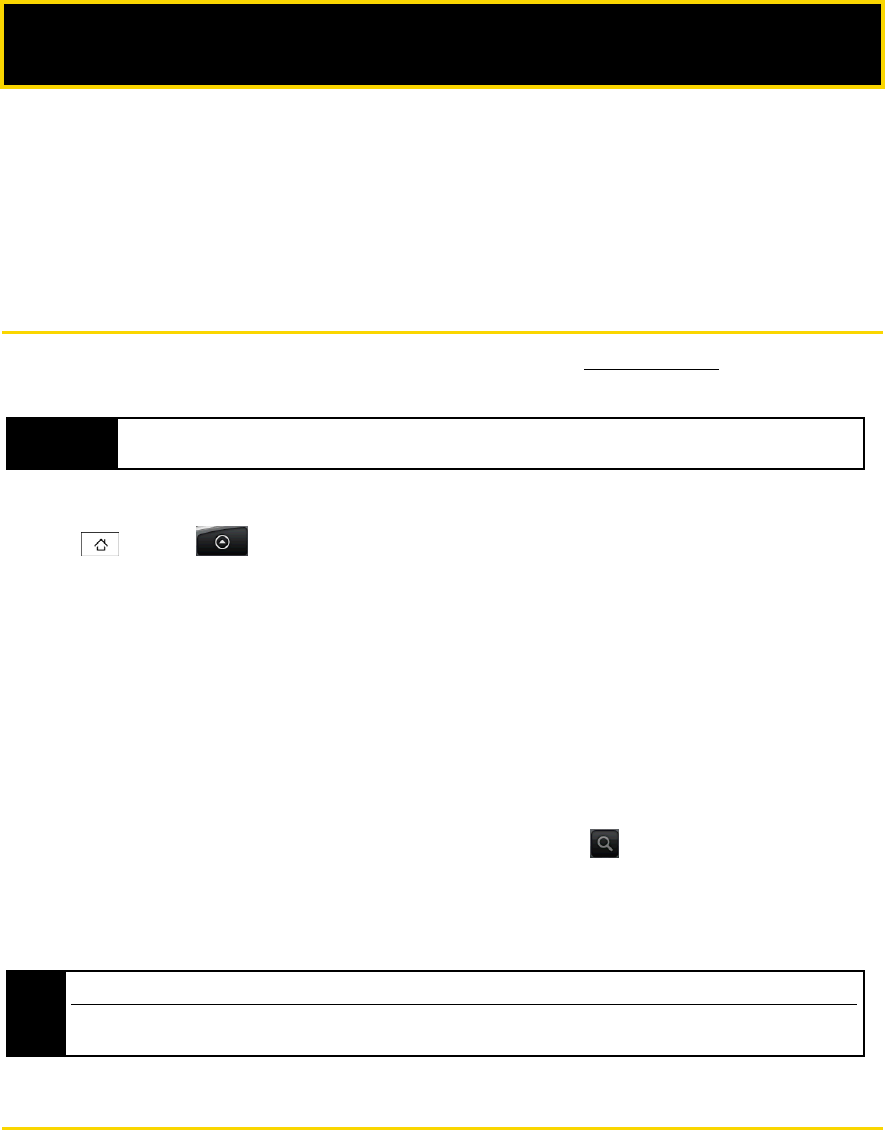
112 3C. Entertainment: TV and Music
ࡗMusic - Amazon MP3 (page 112)
ࡗYouTube (page 112)
HTC TV gives you the ability to listen to audio clips and to view video clips right from your phone’s display.
Watch live TV and catch up on episodes of your favorite shows – anywhere on the Nationwide HTC Network.
Amazon MP3 lets you preview, purchase, download, and listen to over a million songs right on your phone.
Music - Amazon MP3
Amazon MP3 provides you with one-touch access to digital music from www.amazon.com. Amazon has more
than six million DRM-free MP3 tracks you can purchase and download to your phone.
Accessing Amazon MP3
ᮣPress and tap > Amazon MP3.
Purchasing and Downloading Music
Now that you’re in the store, you can shop for songs to purchase and download to your phone’s microSD
card.
1. From the Amazon MP3 opening page, select an option to browse the store:
ⅢTop 100 Albums displays the top 100 albums on Amazon.
ⅢTop 100 Songs displays the top 100 songs on Amazon.
ⅢBrowse by Genre lets you search songs or albums by musical genres.
ⅢSearch gives you the option of searching for specific songs, albums, or artists. Just use the onscreen
keyboard to enter your search criteria in the available box and tap .
2. Tap the price at the right side of the album or song to purchase it.
3. Tap Buy. (If there is no microSD card installed or if there is not enough free memory space on the card,
you will see an alert.)
4. Enter your Amazon.com account e-mail address and Password, and tap OK.
YouTube
YouTube is an online video streaming service that allows you to view videos that have been uploaded by
YouTube members.
3C. Entertainment: TV and Music
Important You can only download MP3s using a Wi-Fi connection. You can browse and preview songs using a data
connection.
Tip While viewing a song list, preview the song by tapping the song name in the list.
While viewing an album list, tap an album to display the songs included in the album. You can purchase individual
songs in an album.
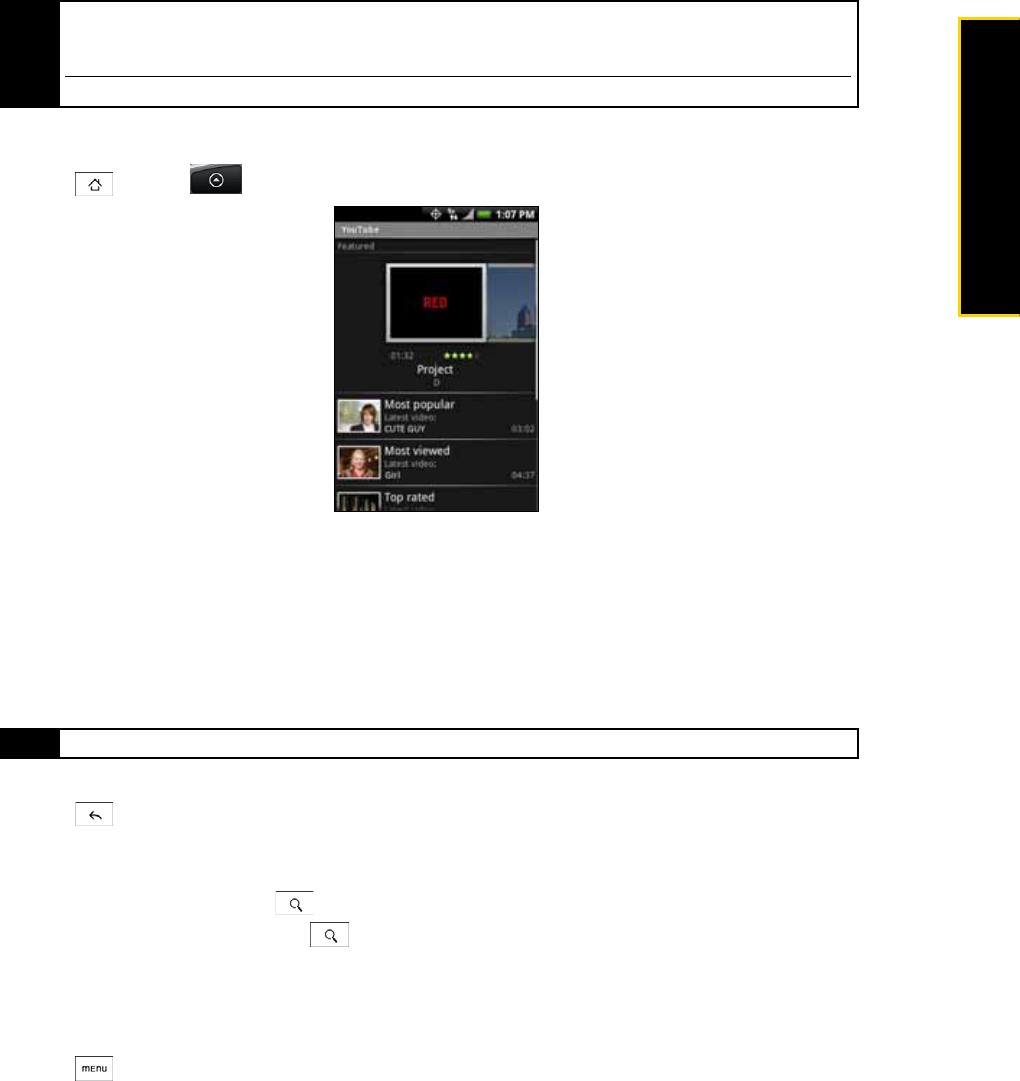
3C. Entertainment: TV and Music 113
Entertainment: TV and Music
Opening YouTube
ᮣPress and tap > YouTube. (You may need to scroll down the screen to see the icon.)
The YouTube screen appears with the videos grouped into categories, such as Featured, Most popular, Most
viewed, Top rated, and more.
Watching Videos
1. On the YouTube screen, select a video to watch from the available categories. Tap a category to see the
available videos for that category.
2. Tap a video to play it.
3. Tap the screen to display the playback controls.
4. Press to stop playback and return to the videos list.
Searching for Videos
1. On the YouTube screen, press .
2. Enter a search keyword and press again.
3. The number of search results appears below the status bar. Scroll through the results and tap a video to
watch it.
To clear the search history:
1. Press and tap Settings.
2. Tap Clear search history and tap OK when prompted.
Sharing Videos
You can share a video by sending its link to your contacts.
1. While viewing videos in a list, press and hold the video, and then tap Share on the options menu.
Note You do not need a YouTube account to browse and view videos. However, to use all the features of YouTube (such
as viewing “My account”), you must create a YouTube account from your computer and sign in to that account
from your phone.
You must have an active data or Wi-Fi connection to access YouTube.
Note The screen automatically switches to landscape orientation when you play a video.

114 3C. Entertainment: TV and Music
– or –
While watching a video, press and tap Share.
A new email message appears with the video link automatically added to the email message.
2. Compose your email then send it. For more information about composing and sending emails, refer to
“Email“ or “Gmail“ for details.
Closing YouTube
ᮣWhile on the YouTube screen, press or .
Note If you have set up an external email account in addition to your Gmail account, you will be prompted to select the
email account to use to send the video link.
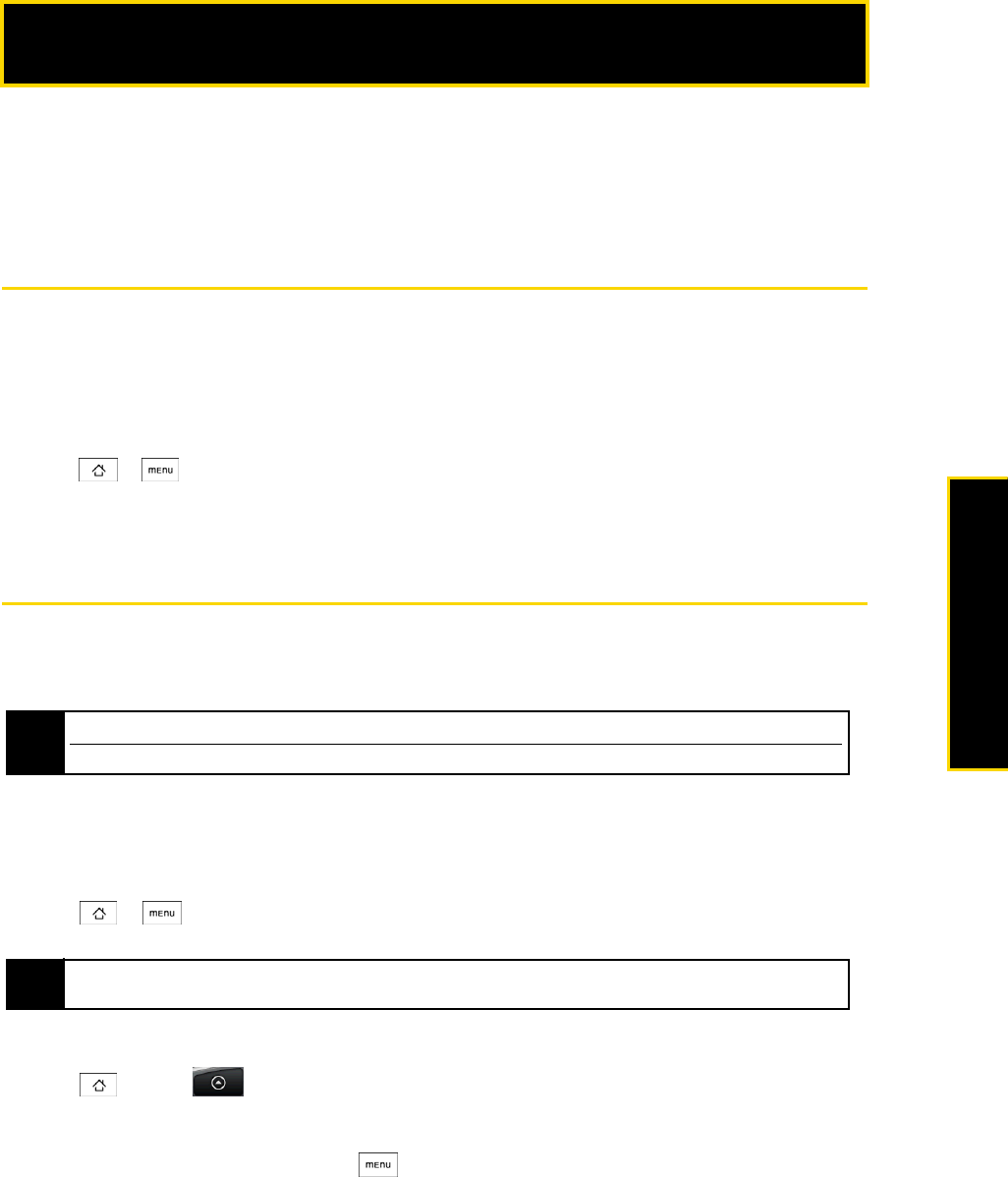
3D. GPS Navigation 115
GPS Navigation
ࡗGPS Services (page 115)
ࡗGoogle Maps (page 115)
ࡗGoogle Latitude (page 118)
ࡗFootprints (page 120)
GPS Services
Your phone’s built-in GPS capability gives you access to a number of location-based services, including
Google Maps, and Footprints.
Activating Location Mode
Before using any of the location-based services, you must turn on your phone’s location mode.
1. Press
> , tap Settings, and then select the Location Settings check box. (You will see the Location
disclaimer.)
2. Read the disclaimer and tap OK.
Google Maps
Google Maps lets you track your current location, view real-time traffic situations, and receive detailed
directions to your destination. It also provides a search tool where you can locate places of interest or an
address on a vector or aerial map, or view locations in street level.
Enabling Location Source
Before you open Google Maps and find your location or search for places of interest, you must enable My
location sources.
1. Press
> and tap Settings > Location.
2. Select Use wireless networks, Enable GPS satellites, or both.
Opening Google Maps
ᮣPress and tap > Google Maps.
To find your location on the map:
ᮣWhile on the Google Maps screen, press and tap My Location. Your location is shown on the map as
a blinking blue dot.
3D. GPS Navigation
Note You need an active data or Wi-Fi connection to use Google Maps.
Google Maps does not cover every country or city.
Note Selecting Enable GPS satellites lets you locate places of interest at street level. However, this requires a clear view
of the sky and more battery power.
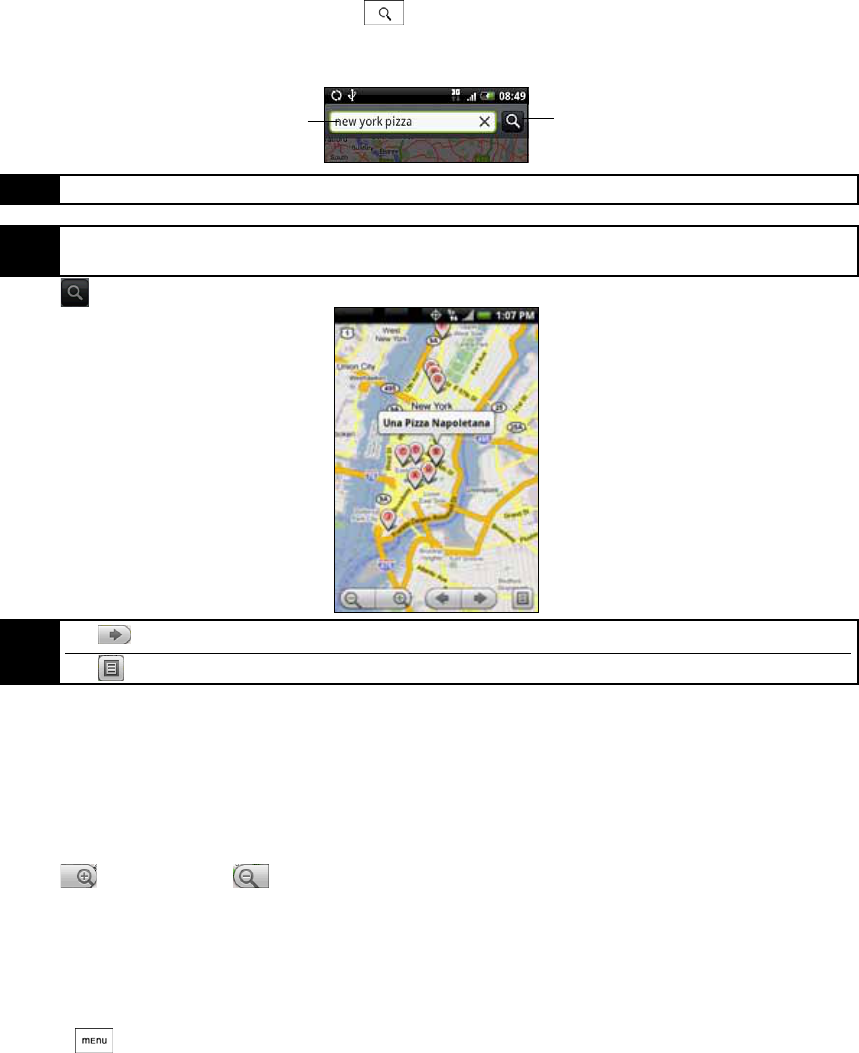
116 3D. GPS Navigation
Searching for Places of Interest
1. While on the Google Maps screen, press .
2. Enter the place you want to search in the search box. You can enter an address, a city, or type of
business or establishment (for example, museums in London.
3. Tap . The search results are displayed on the map.
4. Tap the callout to show the Address, Details (if available), and Reviews (if available) for the search item.
Viewing Google Maps
While viewing a map, take advantage of the following zoom and navigation techniques.
To zoom in or out on a map:
ᮣTap to zoom in; tap to zoom out.
To navigate on a map:
ᮣRoll the trackball or slide your finger on the screen in any direction to view other areas of the map.
To change map modes:
1. Press and tap Map mode.
2. Select from one of the Map modes:
ⅢMap. This is the default view and displays a map, complete with names of streets, rivers, lakes,
mountains, parks, and boundaries.
ⅢSatellite. Google Maps uses the same satellite data as Google Earth™. Satellite images are not real-time.
Google Earth acquires the best imagery available, most of which is approximately one to three years
old.
Note After entering your search item, you may be asked to choose the place you want to search.
Tip As you enter information, a list of all the places which you have searched or visited before appears on the screen.
You can also tap an address on the menu to show its location on the map.
Tip Tap to go to the next search item on the map if there are multiple search results.
Tap to show the search results as a list.
Enter the place you
want to search here.
Tap to search the
place you entered.
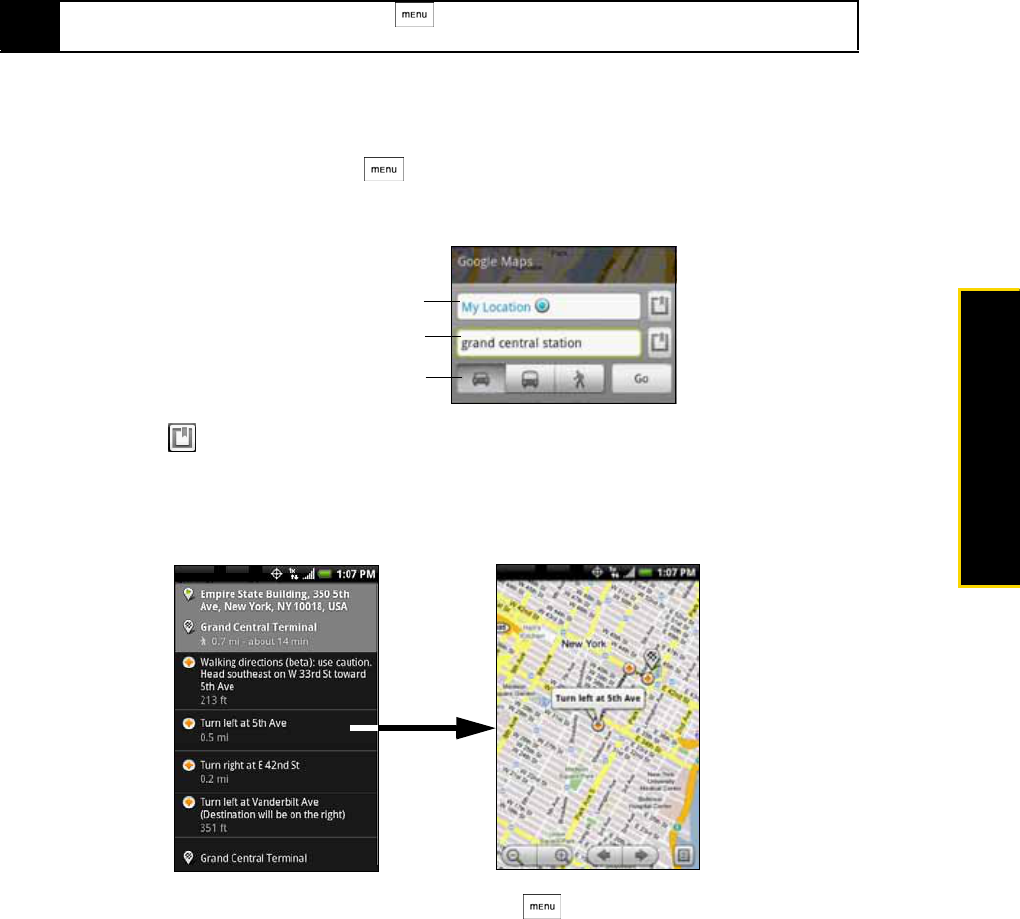
3D. GPS Navigation 117
GPS Navigation
ⅢTraffic. Real-time traffic conditions are displayed over roads as color-coded lines. Each color represents
how fast the traffic is moving.
To view a map in Street View
Street View provides a street-level view of a particular location.
1. Search for the place you want to view in Street View. (See “Searching for Places of Interest” for details.)
2. On the location details screen, tap Street view.
Getting Directions
Use Google Maps to get detailed directions to your destination.
1. While viewing a map in any mode, press and tap Directions.
2. Enter the starting point in the first text box, and then enter your destination in the second text box.
By default, your current location is entered in the Start point box.
You can also tap to open the location source menu and select a starting point and destination
address.
3. Choose how you want to get to your destination: Driving, Public transit, or Walking.
4. Tap Go. The directions to your destination appears in a list. Tap a direction instruction on the list to show
the map.
When you are finished viewing or following the directions, press and tap More > Clear Map to reset the
map. Your destination is automatically saved in the Google Maps history.
Tip While viewing a Street View of a location, press and tap Compass mode to turn Compass mode on.
Tilt, pan, or turn your phone to view the area around the selected location.
Starting point
Destination
Choose how you want to get to
your destination.

118 3D. GPS Navigation
Google Latitude
Google Latitude™ user location service lets you and your friends share locations and status messages with
each other. It also lets you send instant messages and emails, make phone calls, and get directions to your
friends’ locations.
Your location is not shared automatically. You must join Latitude, and then invite your friends to view your
location or accept their invitations.
Opening Latitude
To join Latitude:
ᮣWhile viewing a map in any mode, press and then tap Join Latitude.
To open Latitude after joining:
ᮣWhile viewing a map in any mode, press and then tap Latitude.
Sharing Your Locations
After you join Latitude, you can start sharing your locations with your friends. Only friends that you have
explicitly invited or accepted can see your location.
Inviting Friends
To share your location with friends and request to see their locations:
1. In Latitude, press and then tap Add friends.
2. Choose how to add friends:
ⅢSelect from Contacts. Select any number of friends from People. Friends who already use Latitude have a
icon next to their names.
ⅢAdd via email address. Enter an email address.
3. Tap Add friends > OK.
If your friends already use Latitude, they receive an email request and a notification on Latitude. If they have
not yet joined Latitude, they receive an email request that tells them to sign in to Latitude with their Google
account.
Accepting an Invitation
When you get a sharing request from a friend, you can:
ⅷAccept and share back. You can see your friends’ locations, and they can see yours.
ⅷAccept, but hide my location. You can see your friends’ locations, but they can’t see yours.
ⅷDon’t accept. No location information is shared between you and your friends.
You can change how your location is shared with each friend at any time. See “Inviting Friends” for details.
Showing Your Friends
You can show your friends using the map view or the list view.
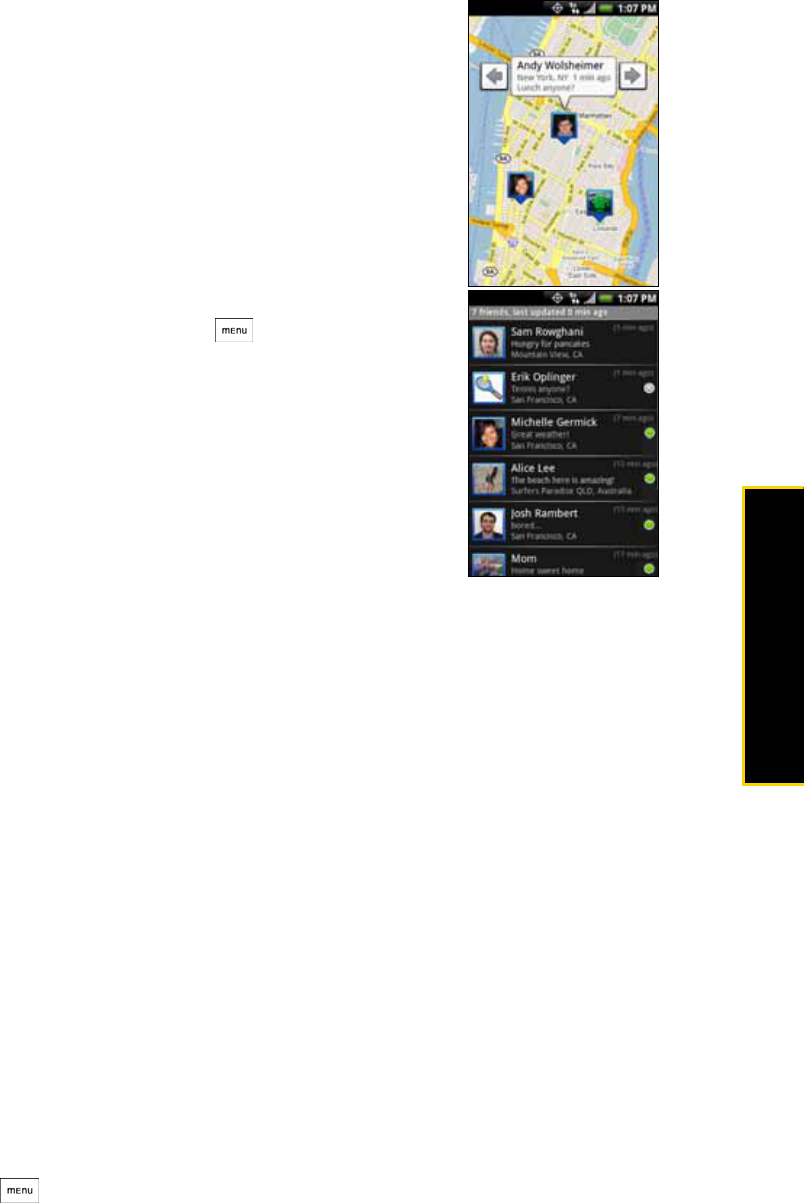
3D. GPS Navigation 119
GPS Navigation
Map view
When you open Google Maps™, it shows your friends’ locations. Each friend is
represented by a photo icon with an arrow pointing at his or her approximate
location. If a friend has opted to enable city-level sharing, his or her icon will not
have an arrow and it appears in the middle of the city. Refer to “Inviting Friends”
earlier in this chapter for more details.
To see your friend’s profile and connect with him or her, tap the photo. This will
display your friend’s name, and then tap the balloon right above his or her icon.
To see other friends, tap either one of the arrow buttons next to the balloon.
List view
To show a list of your friends, in Google Maps, press and then tap Latitude.
To see a friend’s profile and connect with him or her, select your friend’s name from
the list.
Connecting with Your Friends
Tap a friend’s contact details balloon in map view or tap a friend in list view to open the friend’s profile. In the
profile screen, you can communicate with your friend and set privacy options.
ⅷShow on map: Find a friend’s location on the map.
ⅷChat using Google Talk: Send an instant message. Google Talk opens a chat window with that friend.
ⅷSend email: Send an email. Gmail opens an email addressed to that friend.
ⅷDirections: Get directions to the friend’s location.
ⅷHide from this friend: Stop sharing your location with this friend. Your friend cannot see your photo icon on
the map. To share your location with this friend again, tap Unhide from this friend.
ⅷShare only city level location: Share only the city you are in, not the street-level location. Your friend can see
your photo icon in the middle of the city you are in. To share more precise location again,
tap Best available location.
ⅷRemove: Remove the friend from your list and stop sharing locations with him or her altogether.
Controlling What You Share
You have control over how and when you can be found by your friends. Only the last location sent to Latitude
is stored with your Google account. If you turn off Latitude or are hiding, no location is stored.
To change your public profile:
1. In Google Maps, press , tap Latitude, and then tap your contact details balloon.
2. Set the following options to your preferences.
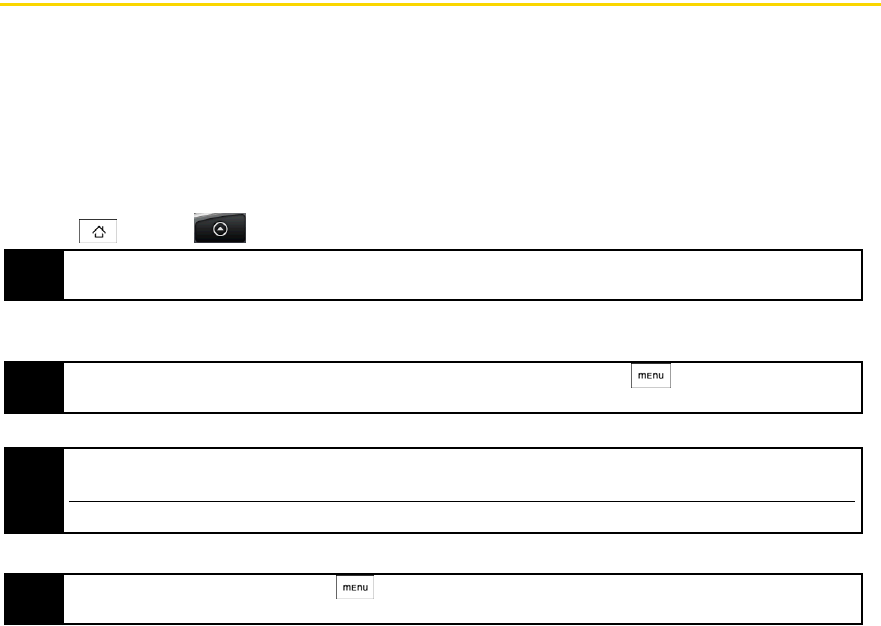
120 3D. GPS Navigation
ⅢShow on map: See your location on a map.
ⅢChange your status: Change the status message, which is shared across other Google products and
features, such as Google Talk and Gmail. After you tap Change your status, type your new status in the
dialog box, and then tap OK.
ⅢChange your photo: Change the picture, which is also shared across other Google products and features.
After you tap Change your photo, you can either take a picture of yourself with the phone or select a
picture from Albums. Refer to “Taking Pictures and Shooting Videos” on page 60 and “Viewing Pictures
and Videos Using Albums” on page 62 for more details.
ⅢEdit privacy setting: Manage how your location is shared with all your friends. Select one of the following
options:
●Detect your location: Let Latitude automatically detect and update your location as you move around.
The update frequency is determined by several factors, such as your phone’s battery charge level
and how recently your location has changed. You must have My location sources enabled. To learn
how to enable My location sources, refer to “Google Maps” in this chapter.
●Set your location: Manually select a location on the map.
●Hide your location: Hide your location from all your friends. They will not be able to see your location on
their maps. You can also hide your location only to certain individuals.
●Turn off Latitude: Disable Latitude and stop sharing. Your friends cannot see your location. You can
always join Latitude again.
Footprints
Footprints™ provides an easy way to record favorite places and revisit those places. A footprint consists of a
photo you take of a location such as a restaurant or sightseeing destination stored together with a precise
GPS position and other information about that location such as the street address and phone number.
The next time you want to visit the same place, simply access the footprint. You can then dial the phone
number or view the location in Google Maps.
Creating a Footprint
1. Press and tap > Footprints > New Footprint.
2. Point the camera at the scene you want to show the location. Footprints starts to use GPS to search for
your position.
3. Press the trackball to capture the photo.
4. Tap Done.
Note My Location sources options in Settings need to be selected to be able to determine your GPS location. You will
be asked to turn them on if the options are turned off.
Tip To change brightness and white balance settings before you take a photo, press , tap Brightness or White
Balance, and then choose a setting.
Note If your GPS position has not been found yet, you are asked whether to find the position on Google Maps,
continue the GPS search, or stop the GPS search.
You may be asked if you want Footprints to automatically determine the address for the location.
Note Before pressing Done, you can press , and then tap Edit to change the name, category, or address of the
Footprint, enter the phone and website, and add a voice memo to the Footprint.
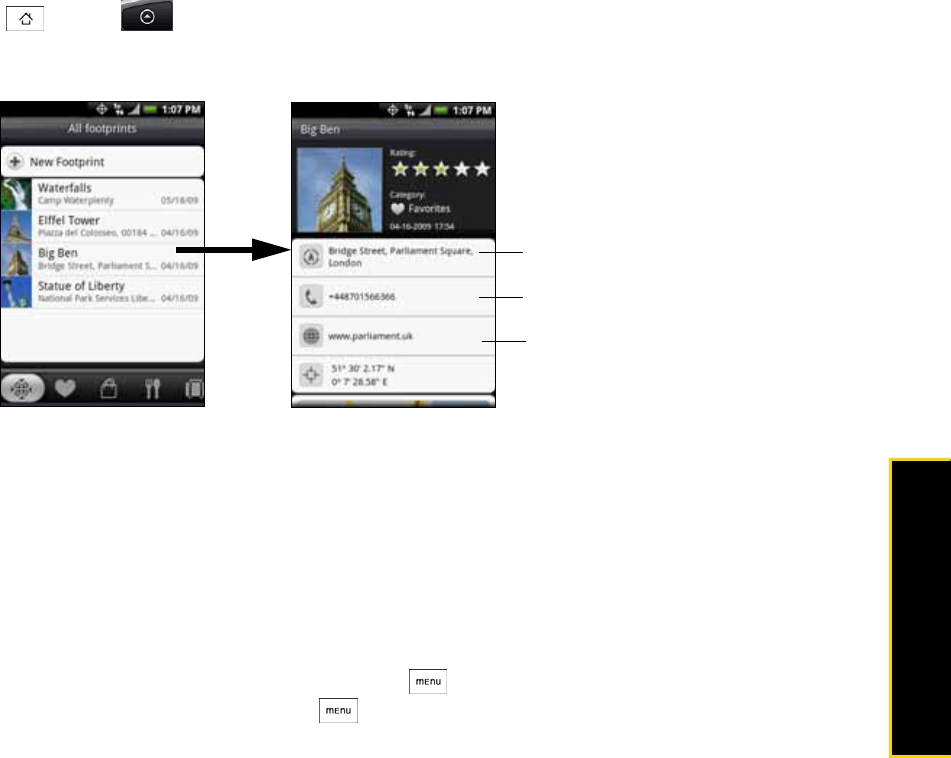
3D. GPS Navigation 121
GPS Navigation
Revisiting a Footprint
1. Press and tap > Footprints.
2. At the bottom of the screen, slide your finger to select the Footprint category.
3. Tap the Footprint you want to revisit.
Editing or Deleting a Footprint
On a category screen, press and hold the Footprint you want to edit or delete, and then tap Edit or Delete on
the options menu.
Backing Up Your Footprints
You can back up all your footprints by exporting them to a microSD card. When you import the backup from
the microSD card, any new footprints you have added on the device are kept.
ⅷTo back up your Footprints, on a category screen, press , and then tap Export.
ⅷTo import the backup file to the phone, press and tap Import. If any footprints on the device are the
same as footprints on the card, you are asked whether you want to overwrite them. You can also use
Import to use a picture in Albums as a Footprint.
Tap to show the address
in Google Maps.
Tap to call the phone
number.
Tap to open the URL in
the browser.
122 3D. GPS Navigation

Section 4
Safety and Warranty Information

124 4A. Important Safety Information
ࡗImportant Health Information and Safety Precautions (page 124)
ࡗGeneral Precautions (page 127)
ࡗAdditional Safety Information (page 128)
This User Guide contains important operational and safety information that will help you safely use your device. Failure to
read and follow the information provided in this guide may result in serious bodily injury, death, or property
damage.
Important Health Information and Safety Precautions
When using this product, the safety precautions below must be taken to avoid possible legal liabilities and
damages.
Retain and follow all product safety and operating instructions. Observe all warnings in the operating
instructions on the product.
To reduce the risk of bodily injury, electric shock, fire, and damage to the equipment, observe the following
precautions.
Electrical Safety
This product is intended for use when supplied with power from the designated battery or power supply unit.
Other usage may be dangerous and will invalidate any approval given to this product.
Safety Precautions for Proper Grounding Installation
CAUTION: Connecting to an improperly grounded equipment can result in an electric shock to your device.
This product equipped with a USB Cable for connecting with desktop or notebook computer. Be sure your
computer is properly grounded (earthed) before connecting this product to the computer. The power supply
cord of a desktop or notebook computer has an equipment-grounding conductor and a grounding plug.
The plug must be plugged into an appropriate outlet which is properly installed and grounded in
accordance with all local codes and ordinances.
Safety Precautions for Power Supply Unit
ⅷUse the correct external power source. A product should be operated only from the type of power source
indicated on the electrical ratings label. If you are not sure of the type of power source required, consult
your authorized service provider or local power company. For a product that operates from battery power
or other sources, refer to the operating instructions that are included with the product.
This product should be operated only with the following designated power supply unit(s):
ⅢAC Adapter: HTC, Model TC P300
ⅷHandle battery packs carefully. This product contains a Li-ion battery. There is a risk of fire and burns if the
battery pack is handled improperly. Do not attempt to open or service the battery pack. Do not
disassemble, crush, puncture, short external contacts or circuits, dispose of in fire or water, or expose a
battery pack to temperatures higher than 60° C (140° F).
4A. Important Safety Information
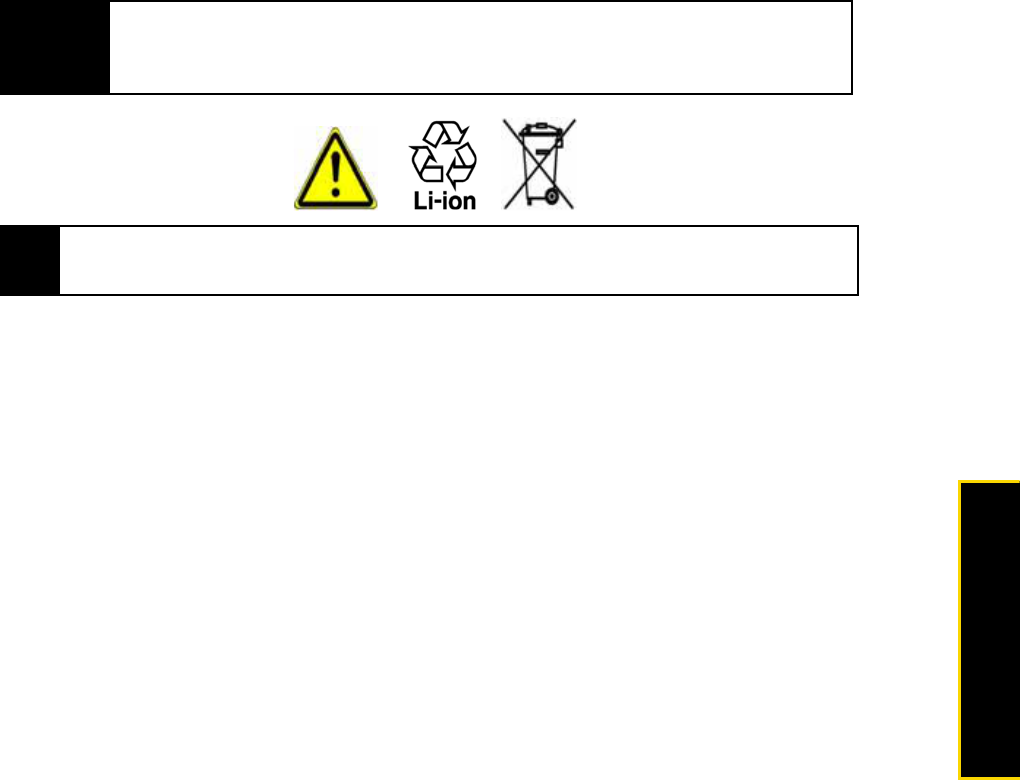
4A. Important Safety Information 125
Important Safety Information
ⅷTake extra precautions:
ⅢKeep the battery or device dry and away from water or any liquid as it may cause a short circuit.
ⅢKeep metal objects away so they don’t come in contact with the battery or its connectors as it may lead
to short circuit during operation.
ⅢThe phone should be only connected to products that bear the USB-IF logo or have completed the
USB-IF compliance program.
ⅢDo not use a battery that appears damaged, deformed, or discolored, or the one that has any rust on
its casing, overheats, or emits a foul odor.
ⅢAlways keep the battery out of the reach of babies and small children, to avoid swallowing of the
battery. Consult the doctor immediately if the battery is swallowed.
ⅢOnly use the battery with a charging system that has been qualified with the system per this standard,
IEEE-Std-1725-2006. Use of an unqualified battery or charger may present a risk of fire, explosion,
leakage or other hazard.
ⅢReplace the battery only with another battery that has been qualified with the system per this standard,
IEEE-Std-1725-2006. Use of an unqualified battery may present a risk of fire, explosion, leakage or other
hazard.
ⅢAvoid dropping the phone or battery. If the phone or battery is dropped, especially on a hard surface,
and the user suspects damage, take it to a service center for inspection.
ⅢIf the battery leaks:
●Do not allow the leaking fluid to come in contact with skin or clothing. If already in contact, flush the
affected area immediately with clean water and seek medical advice.
●Do not allow the leaking fluid to come in contact with eyes. If already in contact, DO NOT rub; rinse
with clean water immediately and seek medical advice.
●Take extra precautions to keep a leaking battery away from fire as there is a danger of ignition or
explosion.
Safety Precautions for Direct Sunlight
Keep this product away from excessive moisture and extreme temperatures. Do not leave the product or its
battery inside a vehicle or in places where the temperature may exceed 60°C (140°F), such as on a car
dashboard, window sill, or behind a glass that is exposed to direct sunlight or strong ultraviolet light for
extended periods of time. This may damage the product, overheat the battery, or pose a risk to the vehicle.
WARNING Danger of explosion if battery is incorrectly replaced. To reduce risk of fire or burns, do not disassemble,
crush, puncture, short external contacts, expose to temperature above 60° C (140° F), or dispose of in fire
or water. Replace only with specified batteries. Recycle or dispose of used batteries according to the local
regulations or reference guide supplied with your product.
Note This product should be operated only with the following designated Battery Pack:
HTC, Model RHOD160
126 4A. Important Safety Information
Prevention of Hearing Loss
CAUTION: Permanent hearing loss may occur if earphones or headphones are used at high volume for
prolonged periods of time.
Road Safety
Vehicle drivers in motion are not permitted to use telephony services with handheld devices, except in the
case of emergency. In some countries, using hands-free devices as an alternative is allowed.
Safety Precautions for RF Exposure
ⅷAvoid using your phone near metal structures (for example, the steel frame of a building).
ⅷAvoid using your phone near strong electromagnetic sources, such as microwave ovens, sound speakers,
TV and radio.
ⅷUse only original manufacturer-approved accessories, or accessories that do not contain any metal.
ⅷUse of non-original manufacturer-approved accessories may violate your local RF exposure guidelines
and should be avoided.
Interference with Medical Equipment Functions
This product may cause medical equipment to malfunction. The use of this device is forbidden in most
hospitals and medical clinics.
If you use any other personal medical device, consult the manufacturer of your device to determine if they
are adequately shielded from external RF energy. Your physician may be able to assist you in obtaining this
information.
Turn your phone OFF in health care facilities when any regulations posted in these areas instruct you to do
so. Hospitals or health care facilities may be using equipment that could be sensitive to external RF energy.
Nonionizing Radiation
Your device has an internal antenna. This product should be operated in its normal-use position to ensure
the radiative performance and safety of the interference. As with other mobile radio transmitting equipment,
users are advised that for satisfactory operation of the equipment and for the safety of personnel, it is
recommended that no part of the human body be allowed to come too close to the antenna during
operation of the equipment.
Use only the supplied integral antenna. Use of unauthorized or modified antennas may impair call quality
and damage the phone, causing loss of performance and SAR levels exceeding the recommended limits as
well as result in non-compliance with local regulatory requirements in your country.
To assure optimal phone performance and ensure human exposure to RF energy is within the guidelines set
forth in the relevant standards, always use your device only in its normal-use position. Contact with the
antenna area may impair call quality and cause your device to operate at a higher power level than needed.
Avoiding contact with the antenna area when the phone is IN USE optimizes the antenna performance and
the battery life.
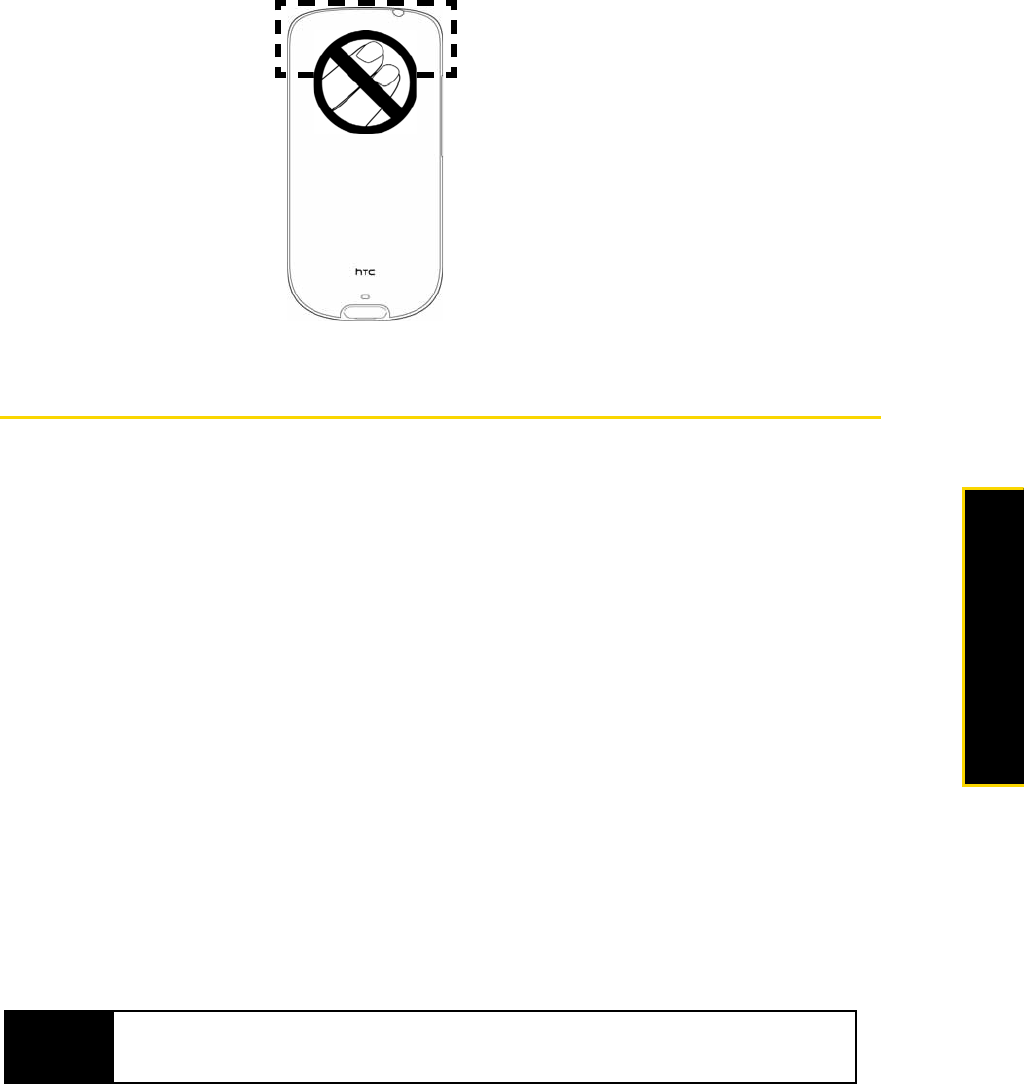
4A. Important Safety Information 127
Important Safety Information
General Precautions
ⅷAvoid applying excessive pressure to the device. Do not apply excessive pressure on the screen and the device
to prevent damaging them and remove the device from your pants’ pocket before sitting down. It is also
recommended that you store the device in a protective case and only use the device stylus or your finger
when interacting with the touch screen. Cracked display screens due to improper handling are not
covered by the warranty.
ⅷHeed service markings. Except as explained elsewhere in the Operating or Service documentation, do not
service any product yourself. Service needed on components inside the device should be done by an
authorized service technician or provider.
ⅷDamage requiring service. Unplug the product from the electrical outlet and refer servicing to an authorized
service technician or provider under the following conditions:
ⅢLiquid has been spilled or an object has fallen into the product.
ⅢThe product has been exposed to rain or water.
ⅢThe product has been dropped or damaged.
ⅢThere are noticeable signs of overheating.
ⅢThe product does not operate normally when you follow the operating instructions.
ⅷAvoid hot areas. The product should be placed away from heat sources such as radiators, heat registers,
stoves, or other products (including amplifiers) that produce heat.
ⅷAvoid wet areas. Never use the product in a wet location.
ⅷAvoid using your device after a dramatic change in temperature. When you move your device between
environments with very different temperature or humidity ranges, condensation may form on or within the
device. To avoid damaging the device, allow sufficient time for the moisture to evaporate before using the
device.
ⅷAvoid pushing objects into product. Never push objects of any kind into cabinet slots or other openings in the
product. Slots and openings are provided for ventilation. These openings must not be blocked or covered.
ⅷMounting accessories. Do not use the product on an unstable table, cart, stand, tripod, or bracket. Any
mounting of the product should follow the manufacturer’s instructions, and should use a mounting
accessory recommended by the manufacturer.
NOTICE When taking the device from low-temperature conditions into a warmer environment or from high-
temperature conditions into a cooler environment, allow the device to acclimate to room temperature
before turning on power.
Antenna Location

128 4A. Important Safety Information
ⅷAvoid unstable mounting. Do not place the product with an unstable base.
ⅷUse product with approved equipment. This product should be used only with personal computers and
options identified as suitable for use with your equipment.
ⅷAdjust the volume. Turn down the volume before using headphones or other audio devices.
ⅷCleaning. Unplug the product from the wall outlet before cleaning. Do not use liquid cleaners or aerosol
cleaners. Use a damp cloth for cleaning, but NEVER use water to clean the LCD screen.
Additional Safety Information
When Driving
Do Not Use the PC Functions of Your Device While Driving or Walking
Never use the personal computer functions of your device while driving an automobile or any other moving
vehicle. Always pull out of traffic and come to a stop in a legally permissible and safe location before using
your device. Failure to do so could result in serious bodily injury in a traffic accident.
When driving:
ⅷAlways secure your device in its leather pouch.
ⅷNever place your device on the passenger seat or anyplace else in the car where it can become a
projectile during a collision or stop.
ⅷAn air bag inflates with great force. DO NOT place objects, including either installed or portable wireless
equipment, in the area over the air bag or in the air bag deployment area. If in-vehicle wireless equipment
is improperly installed and the air bag inflates, serious injury could result.
Never store or transport flammable liquids, gases or explosive materials in the same compartment of your
automobile as the device or any of its accessories, as possible sparking in the device could cause ignition
or explosion.
Never use your device while walking. Usage while walking could result in bodily injury caused by inattention
to automobile traffic or other pedestrian hazards.
Using The Phone While Driving Is Extremely Dangerous
Talking on or using your device while driving is extremely dangerous and is illegal in some states.
Remember, safety comes first. Check the laws and regulations on the use of phones in the areas where you
drive. Always obey them.
If you must use the phone function while driving, please:
ⅷGive full attention to driving. Driving safely is your first responsibility.
ⅷUse hands-free operation or one-touch, speed dialing, and auto answer modes.
ⅷPull off the road and park before making or answering a call.
WARNING Failure to follow these instructions could lead to serious personal injury and possible property damage.

4A. Important Safety Information 129
Important Safety Information
When Using Your Device Near Other Electronic Devices
Your wireless handheld portable device is a low power radio transmitter and receiver. When it is ON, it
receives and also sends out radio frequency (RF) signals.
Most modern electronic equipment is shielded from RF energy. However, certain electronic equipment may
not be shielded against the RF signals from your wireless device; therefore, use of your device must be
restricted in certain situations.
In addition, the computer portion of your device produces low levels of RF energy due to the generation of
digital timing pulses by its clock oscillator circuits. Your device has been equipped with internal shielding to
minimize stray emissions of RF energy. However, use of the computer functions of your device must be
restricted in certain situations.
Hearing Aids
Some digital wireless phones may interfere with some hearing aids. In the event of such interference, you
may want to consult your service provider, or call the customer service line to discuss alternatives.
For more regulatory information about hearing devices, see FCC Hearing-Aid Compatibility (HAC)
Regulations for Wireless Devices (page 134) for details.
Electronic Devices in Vehicles
RF signals may affect improperly installed or inadequately shielded electronic systems in motor vehicles.
Check with the manufacturer or its representative regarding your vehicle. You should also consult the
manufacturer of any equipment that has been added to your vehicle.
Posted Facilities
Turn your device OFF where posted notices so require.
Turn Off Your Device Before Flying
Aircraft
FCC regulations prohibit using the transmitting and phone functions of your device while in the air. In
addition, most airline regulations prohibit the on-board use of portable PCs (and all other portable electronic
devices that could potentially emit stray RF energy), particularly during take-offs and landings, to prevent any
possible interference with the reception of signals by airborne electronic navigational devices.
Turn your device OFF before boarding an aircraft. Always request and obtain prior consent and approval of
an authorized airline representative before using your device aboard an aircraft. Always follow the
instructions of the airline representative whenever using your device aboard an aircraft, to prevent any
possible interference with airborne electronic equipment.
Turn Off Your Device in Dangerous Areas
Blasting Areas
To avoid interfering with blasting operations, turn your device OFF when in a “blasting area” or in areas
posted “Turn off two-way radio.” Obey all signs and instructions.
130 4A. Important Safety Information
Potentially Explosive Atmospheres
Turn your device OFF when in any area with a potentially explosive atmosphere and obey all signs and
instructions. Sparks in such areas could cause an explosion or fire resulting in bodily injury or even death.
Areas with a potentially explosive atmosphere are often, but not always, clearly marked. They include fueling
areas such as gas stations; below deck on boats; fuel or chemical transfer or storage facilities; vehicles
using liquefied petroleum gas (such as propane or butane); areas where the air contains chemicals or
articles, such as grain, dust, or metal powders; and any other area where you would normally be advised to
turn off your vehicle’s engine.
General Safety and Other Precautions
Your device is a high quality piece of equipment. Before operating, read all instructions and cautionary
markings on the product, battery and AC phone charger.
Failure to follow the directions below could result in serious bodily injury or property damage due to battery
liquid leakage, fire or rupture.
DO NOT use or store this equipment in a place where it will be exposed to high temperatures, such as near
an open flame or heat-emitting equipment.
DO NOT drop your device or subject it to severe shock. When not using, lay down the unit to avoid possible
damage due to instability.
DO NOT expose this equipment to rain or spilled beverages.
DO NOT use unauthorized accessories.
DO NOT disassemble the device or its accessories. If service or repair is required, return unit to an
authorized HTC cellular service center. If the unit is disassembled, the risk of electric shock or fire may result.
Never allow metallic objects, such as staples and paper clips, to get into the inside of your device.
Never touch the liquid that might leak from a broken liquid crystal display. Contact with this liquid could
cause a skin rash. If the crystal display liquid should come into contact with the skin or clothing, wash it
immediately with clean water.
In the event that the device emits an unusual odor or sound or generates smoke, immediately disconnect
the AC phone charger from the power outlet, and then detach the battery.
Antenna Safety
Use only the supplied or an approved replacement antenna. Unauthorized antennas, modifications, or
attachments could impair call quality, damage your device, or result in violation of FCC regulations. Please
contact your local dealer for replacement antenna.
Do not use the device with a damaged antenna. If a damaged antenna comes into contact with the skin, a
minor burn may result. Please contact your local dealer for replacement antenna.

4A. Important Safety Information 131
Important Safety Information
Battery Safety
Your device uses a removable and rechargeable lithium ion battery. Please contact customer service for
assistance should you need a replacement battery.
DOs
ⅷOnly use the battery and charger approved by the manufacturer.
ⅷOnly use the battery for its original purpose.
ⅷTry to keep batteries in a temperature between 41°F (5°C) and 95°F (35°C).
ⅷIf the battery is stored in temperatures above or below the recommended range, give it time to warm up or
cool down before using.
ⅷCompletely drain the battery before recharging. It may take one to four days to completely drain.
ⅷStore the discharged battery in a cool, dark, and dry place.
ⅷPurchase a new battery when its operating time gradually decreases after fully charging.
ⅷProperly dispose of the battery according to local regulations.
DON’Ts
ⅷDon’t attempt to disassemble the battery – it is a sealed unit with no serviceable parts.
ⅷDon’t expose the battery terminals to any other metal object (e.g., by carrying it in your pocket or purse
with other metallic objects such as coins, clips and pens). This can short circuit and critically damage the
battery.
ⅷDon’t leave the battery in hot or cold temps. Otherwise, it could significantly reduce the capacity and
lifetime of the battery.
ⅷDon’t dispose of the battery into a fire.
Lithium ion batteries are recyclable. When you replace the removable battery, please request the repair
center to recycle the battery in accordance with RBRC standards. When disposing of the battery by yourself,
please call RBRC at (800) 822-8837 for proper disposal tips.
Never touch any fluid that might leak from the built-in battery. Such liquid when in contact with the eyes or
skin, could cause injury to the skin or eyes. Should the liquid come into contact with the eyes, irrigate the
eyes thoroughly with clean water and immediately seek medical attention. In the event the liquid comes into
contact with the skin or clothing, wash it away immediately with clean water.
AC Phone Charger
Use the Correct External Power Source
A product should be operated only from the type of power source indicated on the electrical ratings label. If
you are not sure of the type of power source required, consult your authorized service provider or local
power company. For a product that operates from battery power or other sources, refer to the operating
instructions that are included with the product.
The AC phone charger designed by HTC for this unit requires the use of a standard 120 V AC power source
for device operation.
Never attempt to disassemble or repair an AC phone charger. Never use an AC phone charger if it has a
damaged or worn power cord or plug. Always contact a HTC authorized service center, if repair or
replacement is required.
Never alter the AC cord or plug on an AC phone charger. If the plug will not fit into the available outlet, have
a proper outlet installed by a qualified electrician.
132 4A. Important Safety Information
Never allow any liquids or water to spill on an AC phone charger when it is connected to an AC power
source.
Always use the authorized HTC AC phone charger to avoid any risk of bodily injury or damage to your
cellular phone or battery.
Never attempt to connect or disconnect the AC phone charger with wet hands. Always unplug the AC phone
charger from the power source before attempting any cleaning. Always use a soft cloth dampened with
water to clean the equipment, after it has been unplugged.
Handling the cord on this product or cords associated with accessories sold with this product, will expose
you to lead, a chemical known to the State of California to cause birth defects or other reproductive harm.
Wash hands after handling.
Always disconnect the travel charger or desktop charger from the power source when it is not in use.
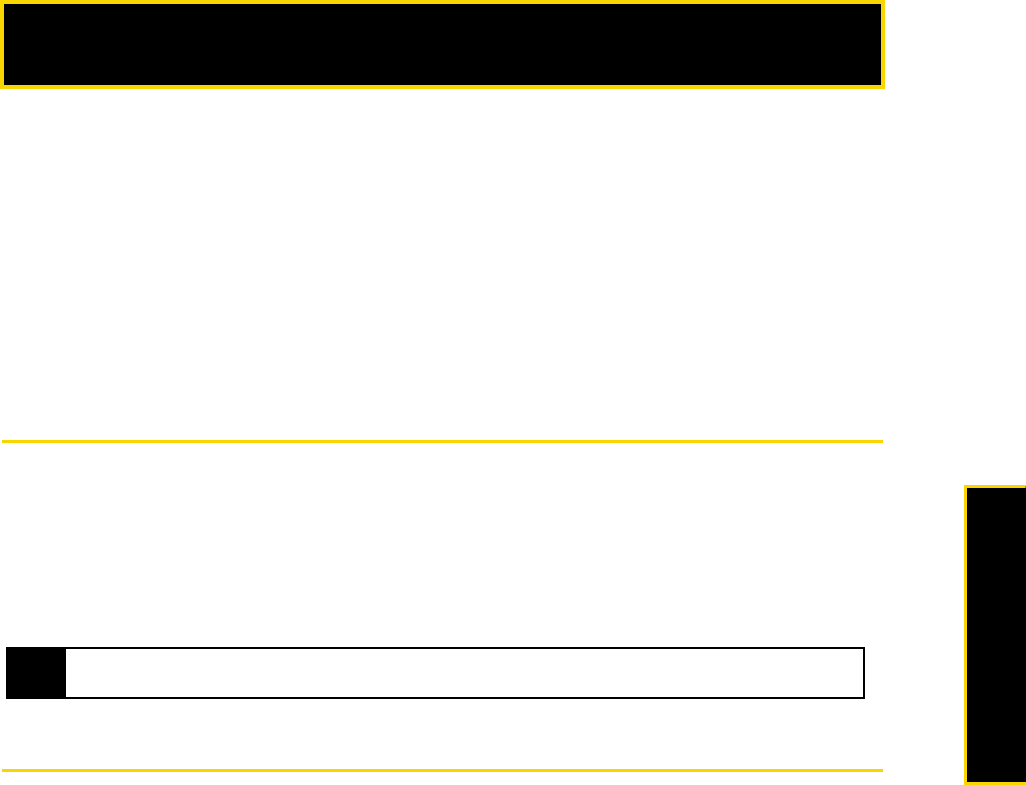
4B. Regulatory Notices 133
Regulatory Notices
ࡗRegulatory Agency Identifications (page 133)
ࡗFederal Communication Commission Interference Statement (page 133)
ࡗFCC Hearing-Aid Compatibility (HAC) Regulations for Wireless Devices (page 134)
ࡗSAR Information (page 135)
ࡗTelecommunications & Internet Association (TIA) Safety Information (page 136)
ࡗWEEE Notice (page 136)
ࡗRoHS Compliance (page 137)
This section provides more safety information and regulation statement for using your device.
Regulatory Agency Identifications
For regulatory identification purposes, your product is assigned a model number of HERO200.
To ensure continued reliable and safe operation of your device, use only the accessories listed below with
your HERO200.
The Battery Pack has been assigned a model number of RHOD160.
Operating temperature range: 32°F to 104°F (0°C to 40°C)
Federal Communication Commission Interference Statement
This equipment has been tested and found to comply with the limits for a Class B digital device, pursuant to
Part 15 of the FCC Rules. These limits are designed to provide reasonable protection against harmful
interference in a residential installation. This equipment generates, uses and can radiate radio frequency
energy and, if not installed and used in accordance with the instructions, may cause harmful interference to
radio communications. However, there is no guarantee that interference will not occur in a particular
installation. If this equipment does cause harmful interference to radio or television reception, which can be
determined by turning the equipment off and on, the user is encouraged to try to correct the interference by
one of the following measures:
ⅷReorient or relocate the receiving antenna.
ⅷIncrease the separation between the equipment and receiver.
ⅷConnect the equipment into an outlet on a circuit different from that to which the receiver is connected.
ⅷConsult the dealer or an experienced radio or television technician for help.
FCC Caution: Any changes or modifications not expressly approved by the party responsible for compliance
could void the user's authority to operate this equipment.
4B. Regulatory Notices
Note This product is intended for use with a certified Class 2 Limited Power Source, rated 5 Volts DC, maximum 1 Amp
power supply unit.
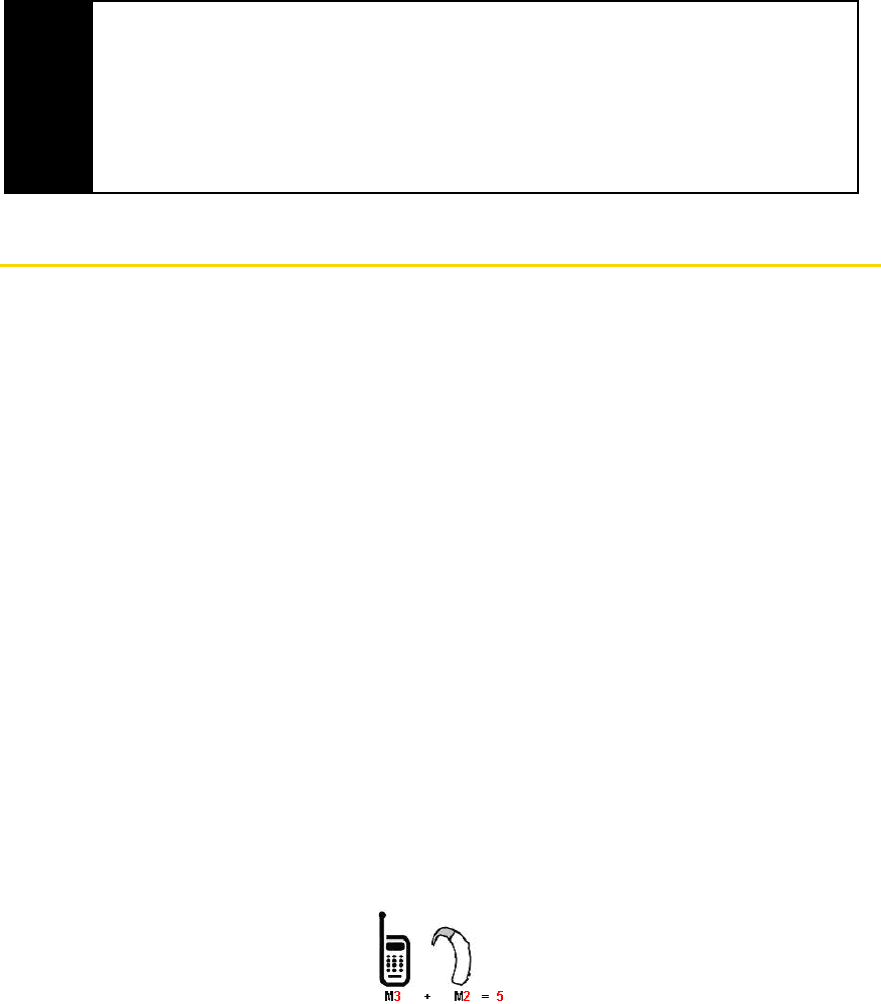
134 4B. Regulatory Notices
This device complies with Part 15 of the FCC Rules. Operation is subject to the following two conditions: (1)
This device may not cause harmful interference, and (2) this device must accept any interference received,
including interference that may cause undesired operation.
FCC Hearing-Aid Compatibility (HAC) Regulations for Wireless Devices
On July 10, 2003, the U.S. Federal Communications Commission (FCC) Report and Order in WT Docket 01-
309 modified the exception of wireless phones under the Hearing Aid Compatibility Act of 1988 (HAC Act) to
require digital wireless phones be compatible with hearing-aids. The intent of the HAC Act is to ensure
reasonable access to telecommunications services for persons with hearing disabilities.
While some wireless phones are used near some hearing devices (hearing aids and cochlear implants),
users may detect a buzzing, humming, or whining noise. Some hearing devices are more immune than
others to this interference noise, and phones also vary in the amount of interference they generate.
The wireless telephone industry has developed a rating system for wireless phones, to assist hearing device
users find phones that may be compatible with their hearing devices. Not all phones have been rated.
Phones that are rated have the rating on their box or a label located on the box.
The ratings are not guarantees. Results will vary depending on the user’s hearing device and hearing loss. If
your hearing device happens to be vulnerable to interference, you may not be able to use a rated phone
successfully. Trying out the phone with your hearing device is the best way to evaluate it for your personal
needs.
M-Ratings: Phones rated M3 or M4 meet FCC requirements and are likely to generate less interference to
hearing devices than phones that are not labeled. M4 is the better/higher of the two ratings. HERO200 is
rated M3.
Please power off the Bluetooth function while using hearing aid devices with your HERO200.
Hearing devices may also be rated. Your hearing device manufacturer or hearing health professional may
help you find this rating. Higher ratings mean that the hearing device is relatively immune to interference
noise. The hearing aid and wireless phone rating values are then added together. A sum of 5 is considered
acceptable for normal use. A sum of 6 is considered for better use. A sum of 8 is considered for best use.
In the above example, if a hearing aid meets the M2 level rating and the wireless phone meets the M3 level
rating, the sum of the two values equal M5. This should provide the hearing aid user with “normal usage”
while using their hearing aid with the particular wireless phone. “Normal usage” in this context is defined as
a signal quality that is acceptable for normal operation.
Important Radiation Exposure Statement:
This equipment complies with FCC radiation exposure limits set forth for an uncontrolled environment. End
users must follow the specific operating instructions for satisfying RF exposure compliance. To maintain
compliance with FCC RF exposure compliance requirements, please follow operation instruction as
documented in this guide.
This transmitter must not be co-located or operating in conjunction with any other antenna or transmitter,
except the transmitters built-in with this device.

4A. Regulatory Notices 135
Regulatory Notices
The M mark is intended to be synonymous with the U mark. The T mark is intended to be synonymous with
the UT mark. The M and T marks are recommended by the Alliance for Telecommunications Industries
Solutions (ATIS). The U and UT marks are referenced in Section 20.19 of the FCC Rules. The HAC rating and
measurement procedure are described in the American National Standards Institute (ANSI) C63.19 standard.
SAR Information
1.13 W/KG @ 1g (HEAD)
0.711 W/KG @ 1g (BODY)
THIS MODEL DEVICE MEETS THE GOVERNMENT’S REQUIREMENTS FOR EXPOSURE TO RADIO WAVES.
For body worn operation, this phone has been tested and meets the FCC RF exposure guidelines when
used with the HTC Corporation accessories supplied or designated for this product. Use of other
accessories may not ensure compliance with the FCC RF exposure guidelines.
Your wireless mobile CDMA phone is a radio transmitter and receiver. It is designed and manufactured not
to exceed the emission limits for exposure to radio frequency (RF) energy set by the Federal
Communications Commission of the U.S. Government. These limits are part of comprehensive guidelines
and establish permitted levels of RF energy for the general population. The guidelines are based on the
safety standards previously set by both U.S. and international standards bodies:
ⅷAmerican National Standards Institute (ANSI) IEEE. C95.1-1992.
ⅷNational Council on Radiation Protection and Measurement (NCRP). Report 86. 1986.
ⅷInternational Commission on Non-Ionizing Radiation Protection (ICNIRP) 1996.
ⅷMinistry of Health (Canada), Safety Code 6. The standards include a substantial safety margin designed to
assure the safety of all persons, regardless of age and health.
The exposure standard for wireless mobile CDMA phone employs a unit of measurement known as the
Specific Absorption Rate, or SAR. The SAR limit set by the FCC is 1.6 W/kg*.
The FCC has granted an Equipment Authorization for this model device with all reported SAR levels
evaluated as in compliance with the FCC RF exposure guidelines. SAR information on this model device is
on file with the FCC and can be found under the Display Grant section of https://gullfoss2.fcc.gov/prod/oet/cf/
eas/reports/GenericSearch.cfm after searching on FCC ID: NM8HERO200. Additional information on Specific
Absorption Rates (SAR) can be found on the Cellular Telecommunications & Internet Association (CTIA)
website as http://www.phonefacts.net.
Additional information on Specific Absorption Rates (SAR) can be found on the Cellular
Telecommunications & Internet Association (CTIA) website as http://www.phonefacts.net.
* In the U.S. and Canada, the SAR limit for mobile CDMA phone used by the public is 1.6 Watts/kg (W/kg)
averaged over one gram of tissue. The standard incorporates a substantial margin of safety to give additional
protection for the public and to account for any variations in usage.
Normal condition only to ensure the radiative performance and safety of the interference. As with other
mobile radio transmitting equipment, users are advised that for satisfactory operation of the equipment and
For information about hearing aids and digital wireless phones
FCC Hearing Aid Compatibility and Volume Control:
http://www.fcc.gov/cgb/dro/hearing.html
Gallaudet University, RERC:
http://tap.gallaudet.edu/DigWireless.KS/DigWireless.htm

136 4B. Regulatory Notices
for the safety of personnel, it is recommended that no part of the human body be allowed to come too close
to the antenna during operation of the equipment.
Telecommunications & Internet Association (TIA) Safety Information
Pacemakers
The Health Industry Manufacturers Association recommends that a minimum separation of six inches be
maintained between a handheld wireless phone and a pacemaker to avoid potential interference with the
pacemaker. These recommendations are consistent with the independent research by and
recommendations of Wireless Technology Research. Persons with pacemakers:
ⅷShould ALWAYS keep the phone more than six inches from their pacemaker when the phone is turned
ON.
ⅷShould not carry the phone in a breast pocket.
ⅷShould use the ear opposite the pacemaker to minimize the potential for interference. If you have any
reason to suspect that interference is taking place, turn the phone OFF immediately.
Hearing Aids
Some digital wireless phones may interfere with some hearing aids. In the event of such interference, you
may want to consult your service provider, or call the customer service line to discuss alternatives.
Other Medical Devices
If you use any other personal medical device, consult the manufacturer of your device to determine if they
are adequately shielded from external RF energy. Your physician may be able to assist you in obtaining this
information.
Turn the phone OFF in health care facilities when any regulations posted in these areas instruct you to do so.
Hospitals or health care facilities may be using equipment that could be sensitive to external RF energy.
WEEE Notice
The Directive on Waste Electrical and Electronic Equipment (WEEE), which entered into force as European
law on 13th February 2003, resulted in a major change in the treatment of electrical equipment at end-of-life.
The purpose of this Directive is, as a first priority, the prevention of WEEE, and in addition, to promote the
reuse, recycling and other forms of recovery of such wastes so as to reduce disposal.
The WEEE logo (shown at the left) on the product or on its box indicates that this product must
not be disposed of or dumped with your other household waste. You are liable to dispose of
all your electronic or electrical waste equipment by relocating over to the specified collection
point for recycling of such hazardous waste. Isolated collection and proper recovery of your
electronic and electrical waste equipment at the time of disposal will allow us to help
conserving natural resources. Moreover, proper recycling of the electronic and electrical waste
equipment will ensure safety of human health and environment. For more information about
electronic and electrical waste equipment disposal, recovery, and collection points, please
contact your local city center, household waste disposal service, shop from where you
purchased the equipment, or manufacturer of the equipment.

4B. Regulatory Notices 137
Regulatory Notices
RoHS Compliance
This product is in compliance with Directive 2002/95/EC of the European Parliament and of the Council of
27 January 2003, on the restriction of the use of certain hazardous substances in electrical and electronic
equipment (RoHS) and its amendments.

138 4C. Manufacturer’s Warranty
ࡗManufacturer’s Warranty (page 138)
ࡗPrivacy Restrictions (page 139)
ࡗWeather Disclaimer (page 140)
ࡗWarranty Disclaimer (page 140)
ࡗLimitation of Damages (page 140)
Your phone has been designed to provide you with reliable, worry-free service. If for any reason you have a
problem with your equipment, please refer to the manufacturer’s warranty in this section.
For information regarding the terms and conditions of service for your phone, please visit www.HTC.com or
call HTC Customer Service at 1-888-211-4727.
Manufacturer’s Warranty
12 Month Limited Warranty
HTC Corporation (the Company) warrants to the original retail purchaser of this HTC handheld portable
cellular telephone, that should this product or any part thereof during normal consumer usage and
conditions, be proven defective in material or workmanship that results in product failure within the first
twelve (12) month period from the date of purchase, such defect(s) will be repaired or replaced (with new or
rebuilt parts) at the Company’s option, without charge for parts or labor directly related to the defect(s).
The antenna, keypad, display, rechargeable battery and battery charger, if included, are similarly warranted
for twelve (12) months from date of purchase.
This Warranty extends only to consumers who purchase the product in the United States or Canada and it is
not transferable or assignable.
This Warranty does not apply to:
(a) Product subjected to abnormal use or conditions, accident, mishandling, neglect, unauthorized
alteration, misuse, improper installation or repair or improper storage;
(b) Product whose mechanical serial number or electronic serial number has been removed, altered or
defaced;
(c) Damage from exposure to moisture, humidity, excessive temperatures or extreme environmental
conditions;
(d) Damage resulting from connection to, or use of any accessory or other product not approved or
authorized by the Company;
(e) Defects in appearance, cosmetic, decorative or structural items such as framing and non-operative
parts;
4C. Manufacturer’s Warranty
Note In addition to the warranty provided by your phone’s manufacturer, which is detailed on the following pages, HTC
offers a number of optional plans to cover your equipment for non-warranty claims. HTC Total Equipment
Protection provides the combined coverage of the HTC Equipment Replacement Program and the HTC
Equipment Service and Repair Program, both of which are available separately. Each of these programs may
be signed up for within 30 days of activating your phone. For more details, please visit your nearest HTC Store or
call HTC at 1-800-584-3666.

4C. Manufacturer’s Warranty 139
Manufacturer’s Warranty
(f) Product damaged from external causes such as fire, flooding, dirt, sand, weather conditions, battery
leakage, blown fuse, theft or improper usage of any electrical source.
The Company disclaims liability for removal or reinstallation of the product, for geographic coverage, for
inadequate signal reception by the antenna or for communications range or operation of the cellular system
as a whole.
When sending your wireless device to HTC Corporation for repair or service, please note that any personal
data or software stored on the device may be inadvertently erased or altered. Therefore, we strongly
recommend you make a back up copy of all data and software contained on your device before submitting
it for repair or service. This includes all contact lists, downloads (i.e. third-party software applications,
ring tones, games and graphics) and any other data added to your device. In addition, if your wireless device
utilizes a SIM or Multimedia card, please remove the card before submitting the device and store for later use
when your device is returned, HTC Corporation is not responsible for and does not guarantee restoration of
any third-party software, personal information or memory data contained in, stored on, or integrated with any
wireless device, whether under warranty or not, returned to HTC Corporation for repair or service.
To obtain repairs or replacement within the terms of this Warranty, the product should be delivered with proof
of Warranty coverage (e.g. dated bill of sale), the consumer’s return address, daytime phone number or fax
number and complete description of the problem, transportation prepaid, to the Company at the address
shown below or to the place of purchase for repair or replacement processing. In addition, for reference to
an authorized Warranty station in your area, you may telephone in the United States (888) 870-4736.
THE EXTENT OF THE COMPANY’S LIABILITY UNDER THIS WARRANTY IS LIMITED TO THE REPAIR OR
REPLACEMENT PROVIDED ABOVE AND, IN NO EVENT, SHALL THE COMPANY’S LAIBILITY EXCEED THE
PURCHASE PRICE PAID BY PURCHASER FOR THE PRODUCT.
ANY IMPLIED WARRANTIES, INCLUDING ANY IMPLIED WARRANTY OF MERCHANTABILITY OR FITNESS
FOR A PARTICULAR PURPOSE, SHALL BE LIMITED TO THE DURATION OF THIS WRITTEN WARRANTY.
ANY ACTION FOR BREACH OF ANY WARRANTY MUST BE BROUGHT WITHIN A PERIOD OF 18 MONTHS
FROM DATE OF ORIGINAL PURCHASE. IN NO CASE SHALL THE COMPANY BE LIABLE FOR AN SPECIAL
CONSEQUENTIAL OR INCIDENTAL DAMAGES FOR BREACH OF THIS OR ANY OTHER WARRANTY,
EXPRESS OR IMPLIED, WHATSOEVER. THE COMPANY SHALL NOT BE LIABLE FOR THE DELAY IN
RENDERING SERVICE UNDER THIS WARRANTY OR LOSS OF USE DURING THE TIME THE PRODUCT IS
BEING REPAIRED OR REPLACED.
No person or representative is authorized to assume for the Company any liability other than expressed
herein in connection with the sale of this product.
Some states or provinces do not allow limitations on how long an implied warranty lasts or the exclusion or
limitation of incidental or consequential damage so the above limitation or exclusions may not apply to you.
This Warranty gives you specific legal rights, and you may also have other rights, which vary from state to
state.
IN USA AND CANADA:
HTC Corporation
5950 Corporate Dr.
Houston, TX 77036
Privacy Restrictions
Some countries require full disclosure of recorded telephone conversations, and stipulate that you must
inform the person with whom you are speaking that the conversation is being recorded. Always obey the
relevant laws and regulations of your country when using the recording feature of your device.

140 4C. Manufacturer’s Warranty
Weather Disclaimer
THE WEATHER INFORMATION, DATA AND DOCUMENTATION ARE PROVIDED “AS IS” AND WITHOUT
WARRANTY OR TECHNICAL SUPPORT OF ANY KIND FROM HTC. TO THE MAXIMUM EXTENT PERMITTED
BY APPLICABLE LAW, HTC AND ITS AFFILIATES expressly disclaim any and all representations and
warranties, express or implied, arising by law or otherwise, regarding the Weather Information, Data,
Documentation, or any other Products and services, including without limitation any express or implied
warranty of merchantability, express or implied warranty of fitness for a particular purpose, non-infringement,
quality, accuracy, completeness, effectiveness, reliability, usefulness, that the Weather Information, Data or
Documentation will be error-free, or implied warranties arising from course of dealing or course of
performance.
Without limiting the foregoing, it is further understood that HTC and its Providers are not responsible for Your
use or misuse of the Weather Information, Data or Documentation or the results from such use. HTC and its
Providers make no express or implied warranties, guarantees or affirmations that weather information will
occur or has occurred as the reports, forecasts, data, or information state, represent or depict and it shall
have no responsibility or liability whatsoever to any person or entity, parties and non-parties alike, for any
inconsistency, inaccuracy, or omission for weather or events predicted or depicted, reported, occurring or
occurred. WITHOUT LIMITING THE GENERALITY OF THE FOREGOING, YOU ACKNOWLEDGE THAT THE
WEATHER INFORMATION, DATA AND/OR DOCUMENTATION MAY INCLUDE INACCURACIES AND YOU
WILL USE COMMON SENSE AND FOLLOW STANDARD SAFETY PRECAUTIONS IN CONNECTION WITH
THE USE OF THE WEATHER INFORMATION, DATA OR DOCUMENTATION.
Warranty Disclaimer
Your warranty is invalidated if you open or tamper with the device's outer casing.
For details about warranty coverage, see “Manufacturer’s Warranty” on page 138.
Limitation of Damages
TO THE MAXIMUM EXTENT PERMITTED BY APPLICABLE LAW, IN NO EVENT SHALL HTC OR ITS
PROVIDERS BE LIABLE TO USER OR ANY THIRD PARTY FOR ANY INDIRECT, SPECIAL, CONSEQUENTIAL,
INCIDENTAL OR PUNITIVE DAMAGES OF ANY KIND, IN CONTRACT OR TORT, INCLUDING, BUT NOT
LIMITED TO, INJURY, LOSS OF REVENUE, LOSS OF GOODWILL, LOSS OF BUSINESS OPPORTUNITY, LOSS
OF DATA, AND/OR LOSS OF PROFITS ARISING OUT OF, OR RELATED TO, IN ANY MANNER, OR THE
DELIVERY, PERFORMANCE OR NONPERFORMANCE OF OBLIGATIONS, OR USE OF THE WEATHER
INFORMATION, DATA OR DOCUMENTATION HEREUNDER REGARDLESS OF THE FORESEEABILITY
THEREOF.

4D. Copyright, Trademark, and Proprietary Notices 141
Copyright, Trademark, and Proprietary
Notices
HTC, the HTC logo, HTC Innovation, ExtUSB, HTC Hero, HTC Sense, HTC Peep, Footprints, HTC Sync, and
HTC Care are trademarks or service marks of HTC Corporation.
Copyright © 2009 Google Inc. Used with permission.
Google, the Google logo, Android, the Android logo, Android Market, the Android Market logo, Gmail,
Google Apps, Google Calendar, Google Checkout, Google Earth, Google Latitude, Google Maps,
Google Talk, Picasa, and YouTube are trademarks of Google Inc.
Google, the Google logo and Google Maps are trademarks of Google, Inc. TeleAtlas® Map Data ©2009.
Street View Images ©2009 Google.
Microsoft, Windows, Windows XP, Windows Vista, Word, Excel, PowerPoint, and Outlook are either registered
trademarks or trademarks of Microsoft Corporation in the United States or other countries.
Bluetooth and the Bluetooth logo are trademarks owned by Bluetooth SIG, Inc.
Wi-Fi is a registered trademark of the Wireless Fidelity Alliance, Inc.
microSD is a trademark of SD Card Association.
Copyright © 2009, Esmertec AG. All Rights Reserved.
Java, J2ME and all other Java-based marks are trademarks or registered trademarks of Sun Microsystems,
Inc. in the United States and other countries.
This HTC Hero contains Adobe® Flash® Player software under license from Adobe Systems Incorporated,
Copyright © 1995-2009 Adobe Macromedia Software LLC
Licensed by QUALCOMM Incorporated under one or more of the following patents:
4,901,307 5,490,165 5,056,109 5,504,773 5,101,501 5,778,338 5,506,865 5,109,390 5,511,073 5,22 8,054
5,535,239 5,710,784 5,267,261 5,544,196 5,267,262 5,568,483 5,33 7,33 8 5,659,569 5,600,754 5,414,796
5,657,420 5,416,797
All other company, product and service names mentioned herein are trademarks, registered trademarks or
service marks of their respective owners.
4D. Copyright, Trademark, and Proprietary Notices

142 Index
Index
Numerics
3-Way Call 83
A
Activation 2
Airplane Mode 30
Alarm Clock 51
Albums 62
Amazon MP3 112
Android Market 104
Answering Calls 14
Automatic Speech Recognition (ASR) 55
B
Battery 11–12
Capacity 11
Charging 12
Installing 11
Bluetooth 71
Disconnecting 72
Pairing 72
Settings 71
Browser 89
Browser Menu 93
Changing the Screen Orientation 90
Finding Text In a Webpage 91
Managing Bookmarks 92
Selecting Links in Webpages 91
Zooming In or Out 90
C
Calculator 50
Calendar 47
Adding an Event 47
Erasing Events 49
Event Alert Menu 48
Call Forwarding 83
Call Guard 84
Call Waiting 82
Caller ID 82
Camera 60
Creating and Saving a Custom Scene 24
D
Data Roam Guard 85
Data Services 87–111
see also Web
Enabling and Disabling 32
FAQs 111
Launching the Web 88
Password 3
Security Features 32
User Name 87
Display Screen 7, 28
E
Email 93
Emergency Numbers 15
End-of-Call Options 16
Enhanced 911 (E911) 15
Entering Text 17
Event Alert Menu 48
F
Favorites 43
Footprints 120
G
Getting Around Your Phone 12
Gmail 97
Google Latitude 118
Google Maps 115
Google Talk 101
GPS Services 115
H
History 36
Erasing 37
Making a Call 36
Prepending a Number 37
Saving a Number 36
Home Screen 21
Customizing 22
Extended 22
HTC Sync 52
I
In-Call Options 15
Instant Messaging 104
Internet
see Web
K
Key Functions 6
L
Location Settings 29
M
Making Calls 13
Calling a phone number in a text message 13
Using the Dialer 13
Menu i
Messaging
Deleting Old Messages 30
Email 93
Notification 29
Preset Messages 30
Text Messaging 78
Voicemail 76
microSD Card 58
Missed Calls 15
Mobile Network Sharing 111
Music 67
N
Notifications Panel 8
O
Onscreen Keyboard 17
Compact QWERTY 18
Phone keypad 19
QWERTY 17
P
Pairing Bluetooth Devices 72
PDF Viewer 52
Peep 107
People 16, 38
Adding a Number 40
Adding an Entry 40
Assigning a Picture 41
Assigning Ringers 41
Contact Details Screen 44
Editing 40
Finding Entries 42

Index 143
Index
My Contact Card 39
Saving a Phone Number 40
Phone (illus.) 6
Phone Number
Displaying 13
Finding 16
Saving 16, 40
Phone Settings 25
Airplane Mode 30
Application Settings 34
Data Synchronization Settings 33
Date & Time Settings 35
Display Settings 27
Locale & Text Settings 35
Location Settings 29
Messaging Settings 29, 30
Personalization Settings 25
Security Settings 31
Social Network Settings 33
Sound Settings 26
TTY Use 31
Phone Updates 54
Picture Messaging (MMS) 80
Playing music 68
Preset Messages 30, 79
Q
Quickoffice 51
R
Resetting Your Phone 32
Ringers
Assigning to contacts 41
Setting for Voice Calls 26
Silence All 27
Types 2 6
Vibrate 26
Roaming 83–85
Call Guard 84
Data Roam Guard 85
Roam Mode 84
S
Saving a Phone Number 16, 40
Security
Data Services 32
Silence All 27
SMS Text Messaging 78
Software Updates
Downloading 54
Speed Dial 16
Assigning Numbers 42
HTC Service
Account Passwords 3
Activation 2
Operator Services 4
HTC 411 4
Stocks 109
T
Taking Picture and Shooting Videos 60
Text Messaging 78
Preset Messages 79
Three-Way Calling 83
TTY Use 31
Turning off the screen when not in use 10
Turning Your Phone On and Off 10
U
Updating Your Phone 54
Using Facebook and Flickr in People 45
Using the Phone’s microSD Card as a USB Drive 59
V
Vibrate 26
Viewing Pictures and Videos Using Albums 62
Voice Dialing 55
Voice Memos 56
Voicemail
Clear Icon 77
Notification 76
Retrieving 77
Setting Up 3, 76
Volume 26
W
Warranty 138
Ways of Connecting to the Internet 86
Weather 110
Web 87–111
see also Data Services
Email 93
Launching 88
User Name 87
Widgets 23
Working with Groups 43
World Clock 50
Y
YouTube 112